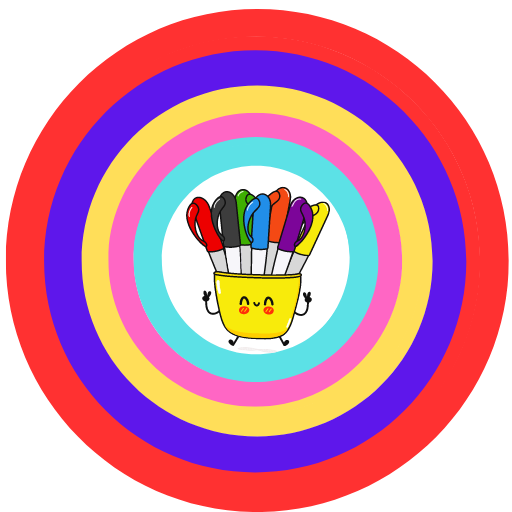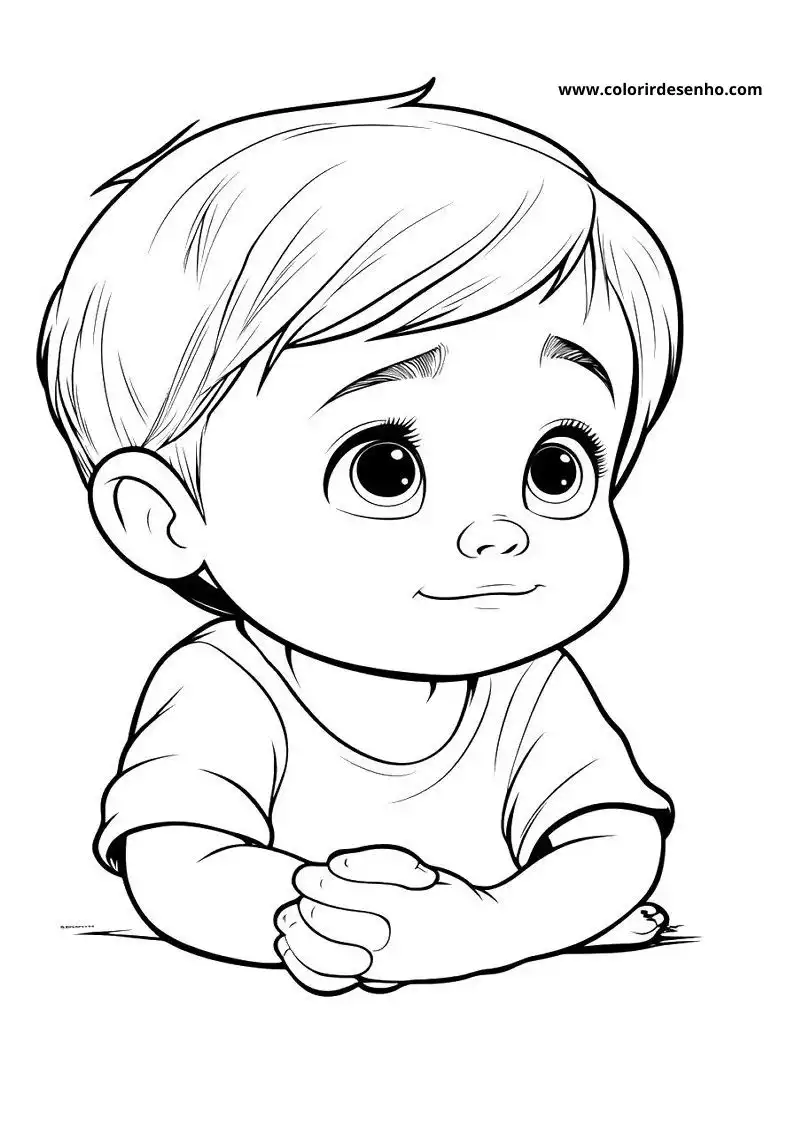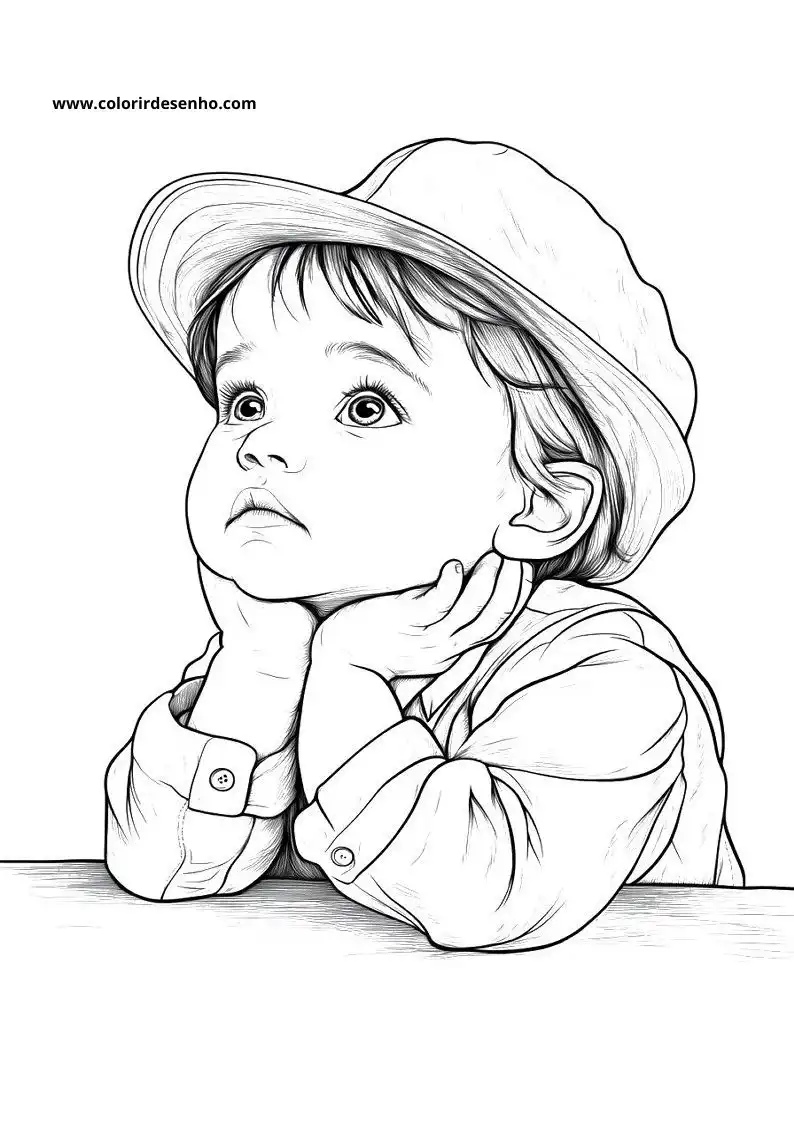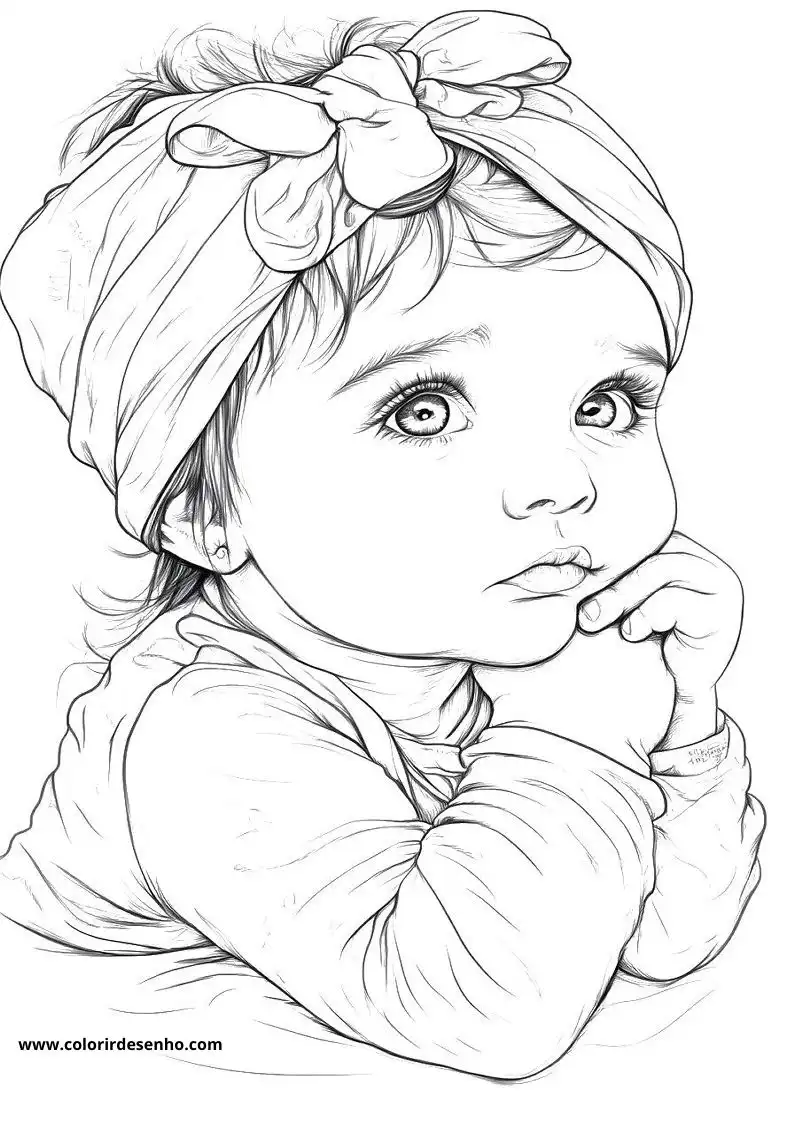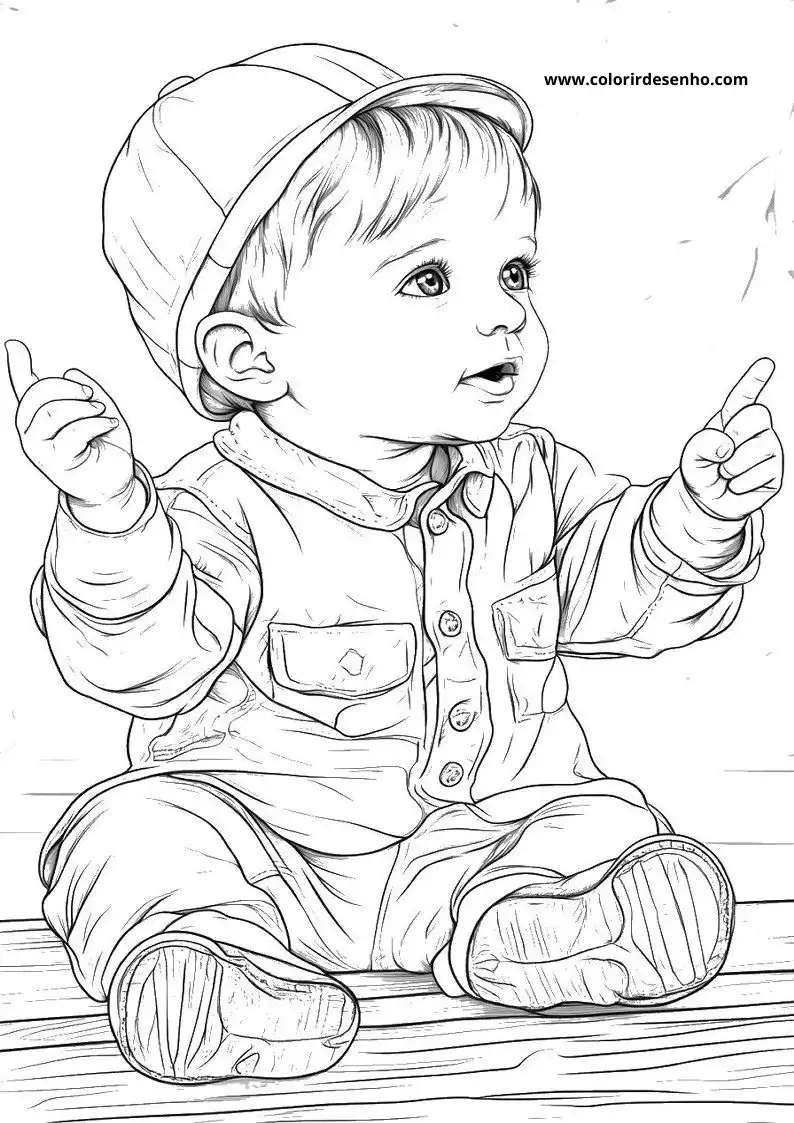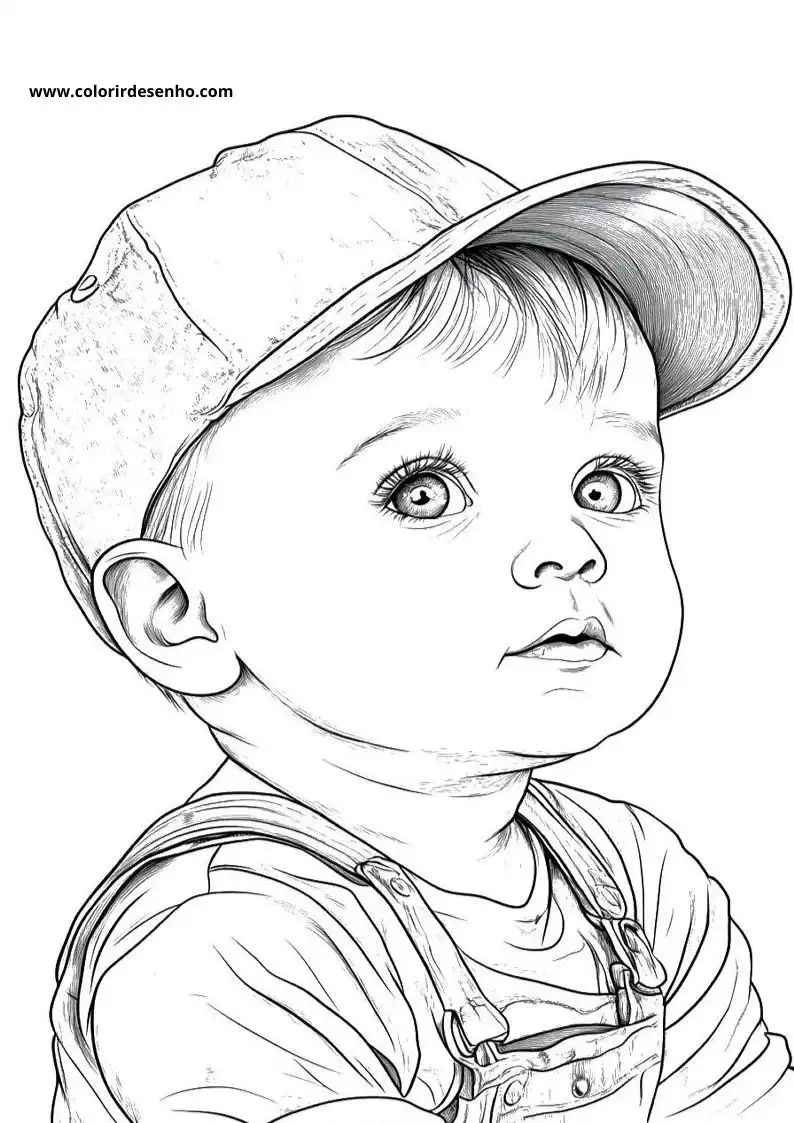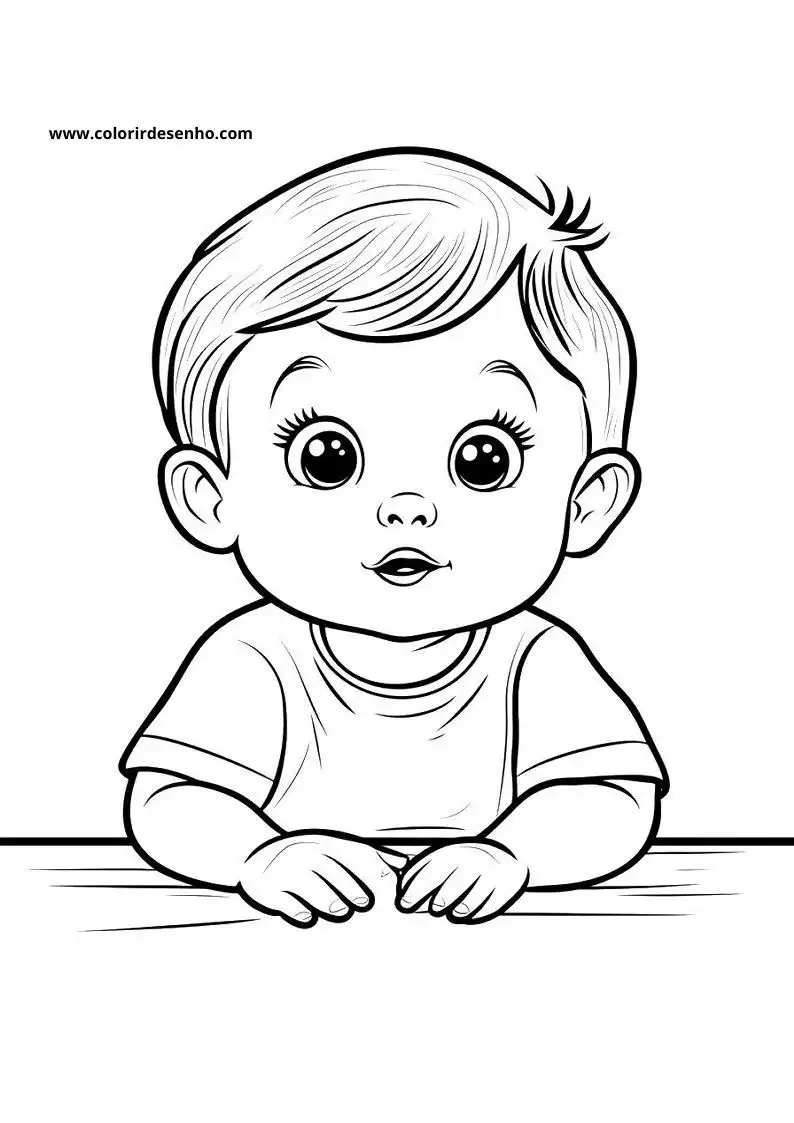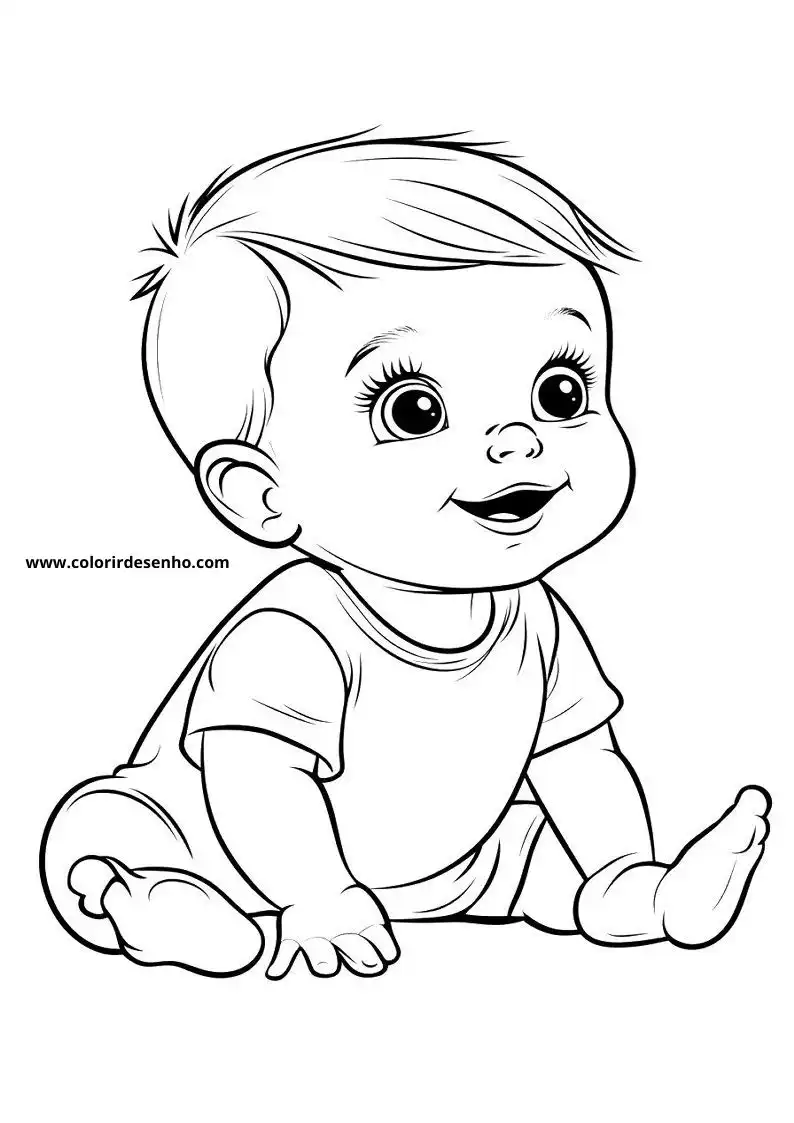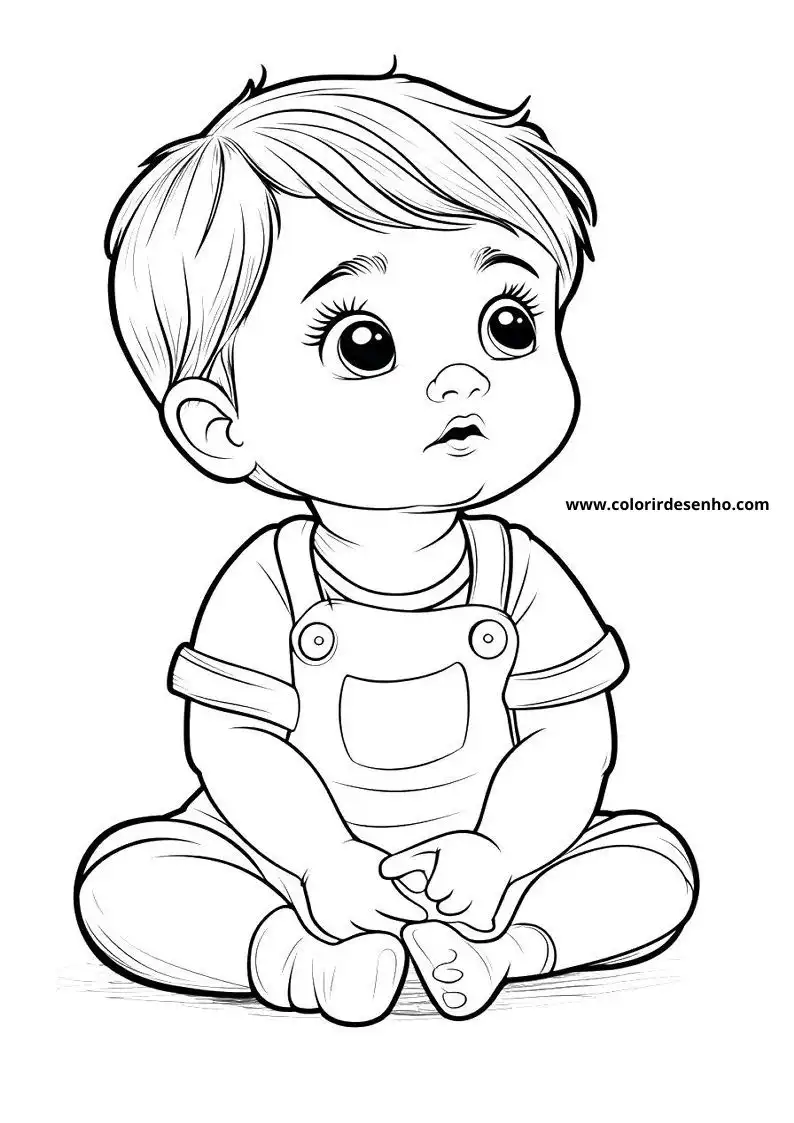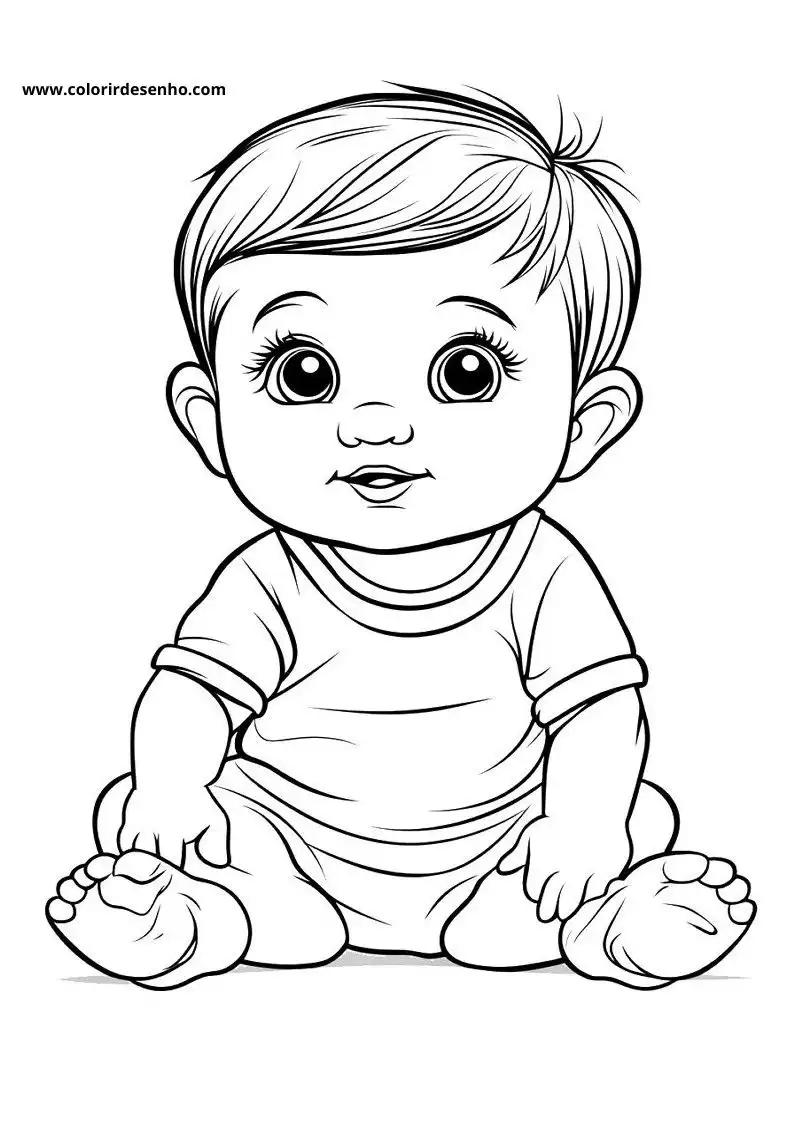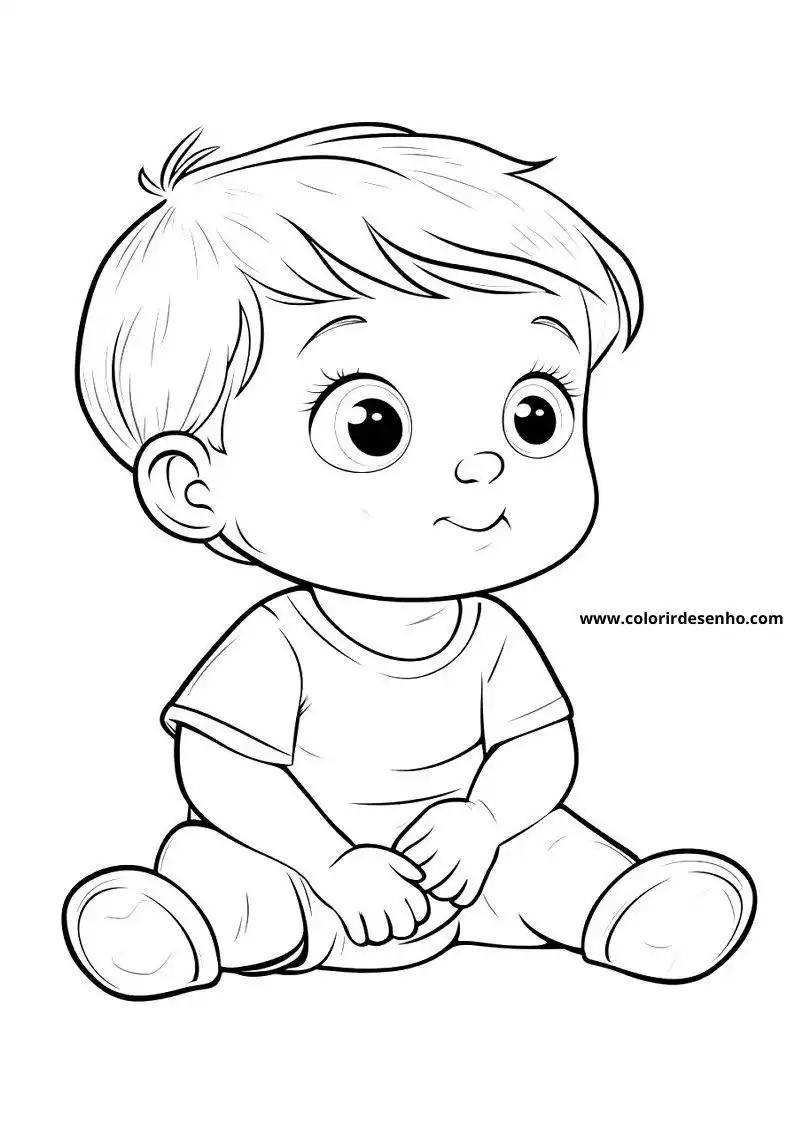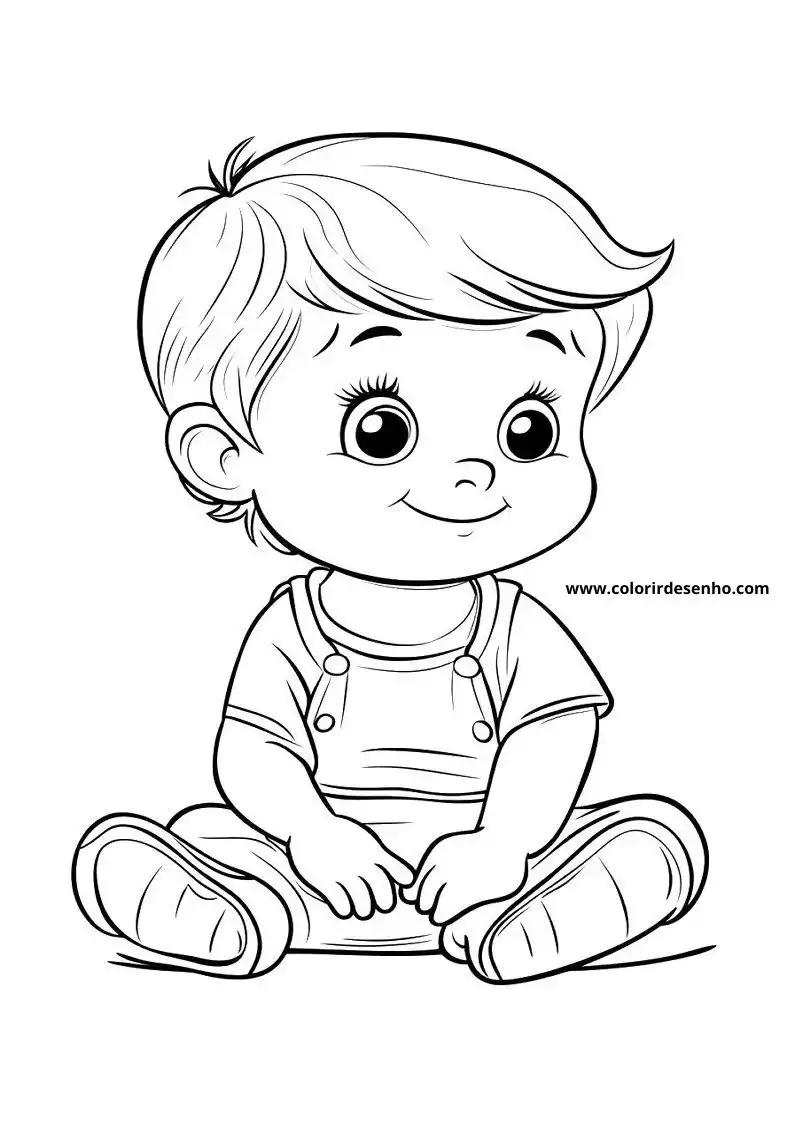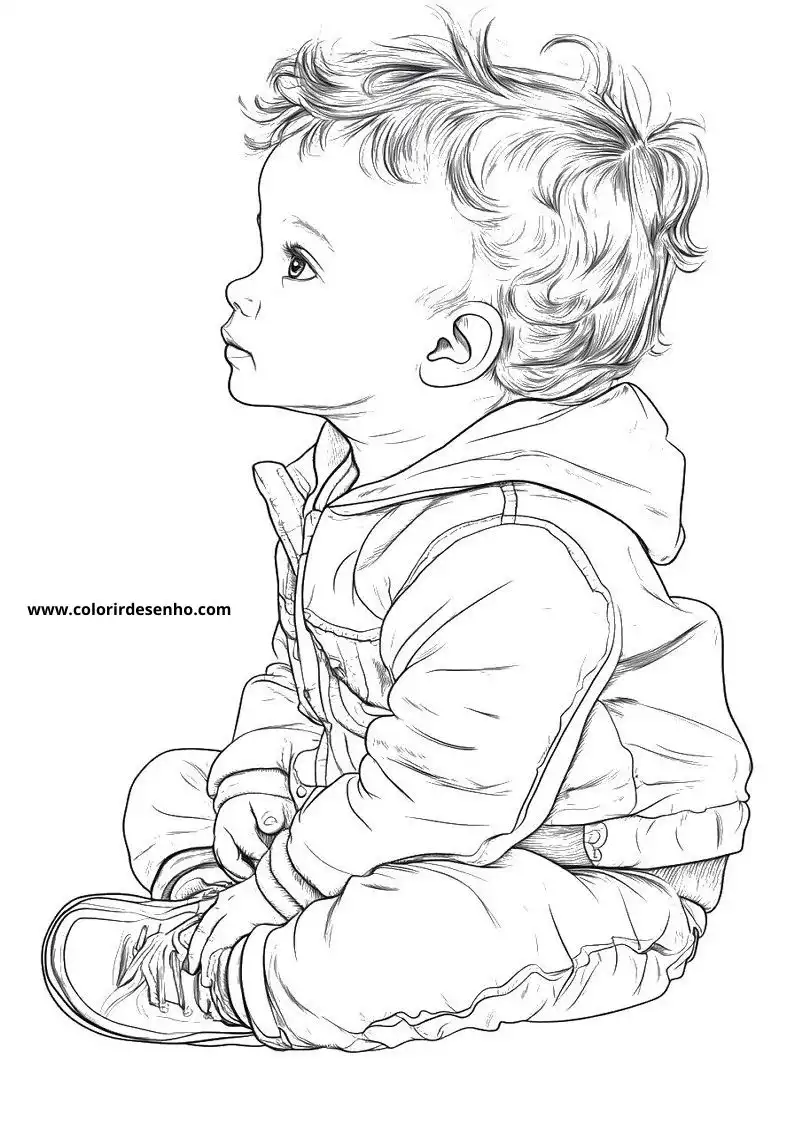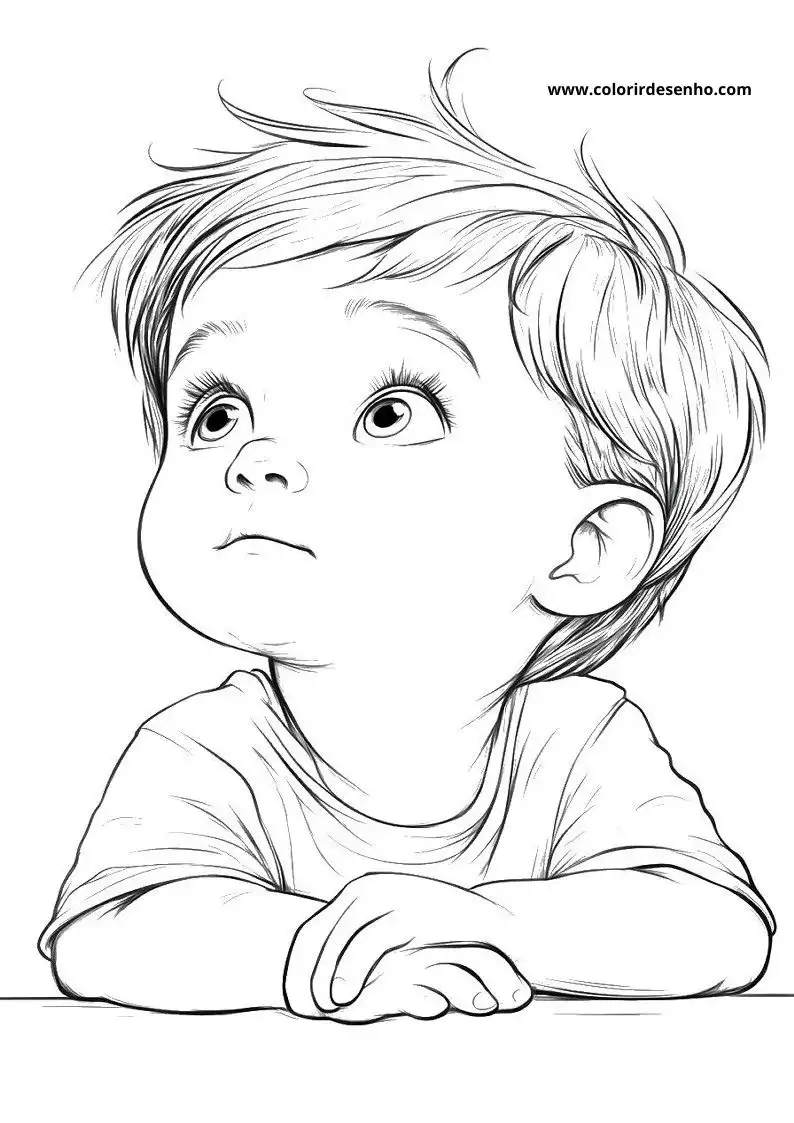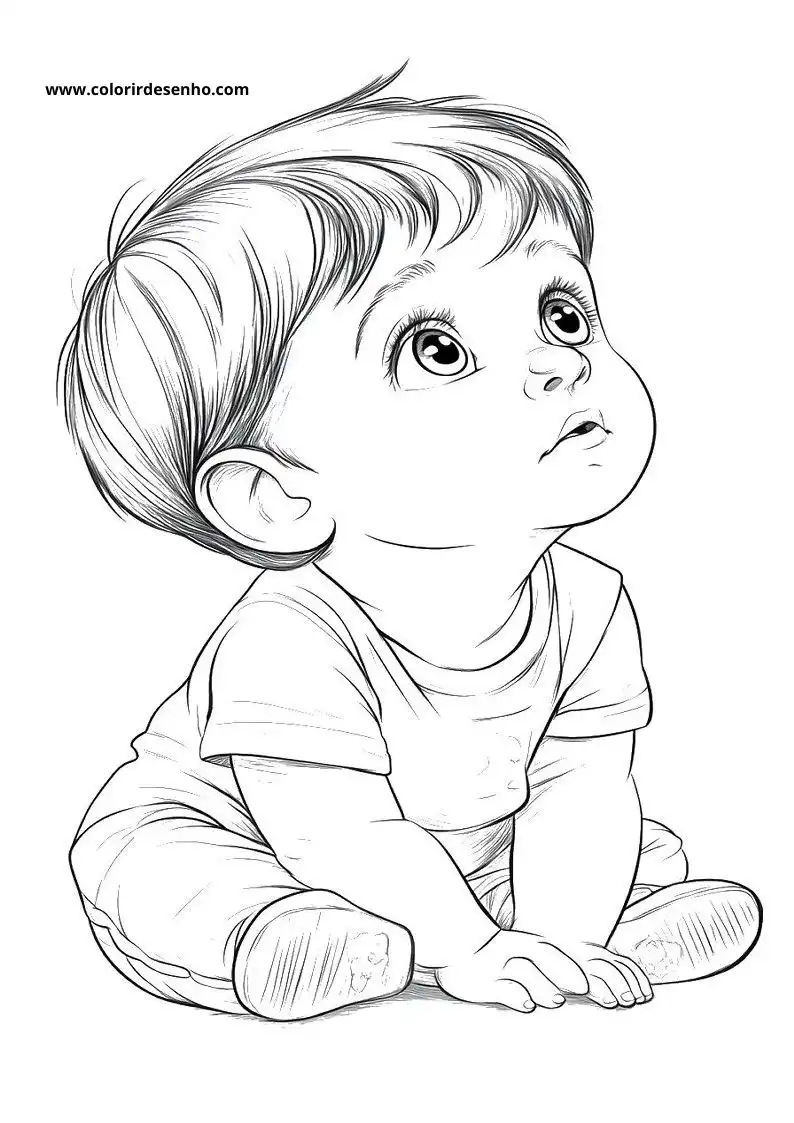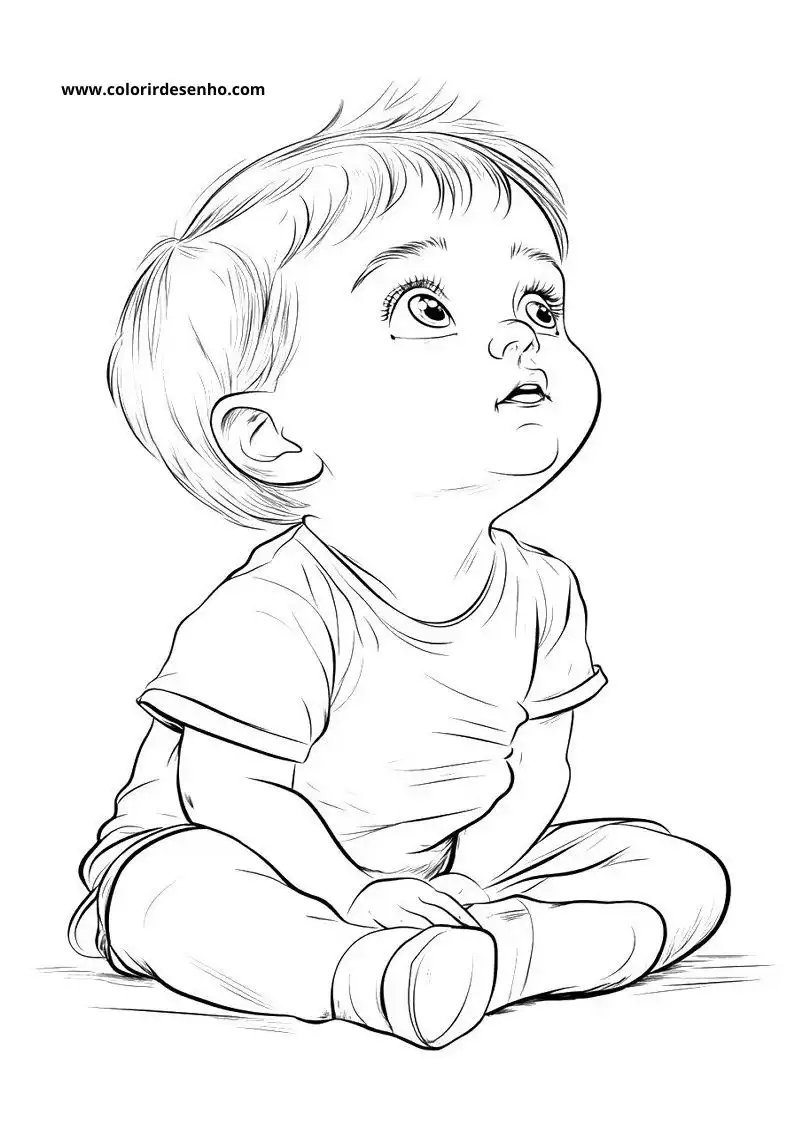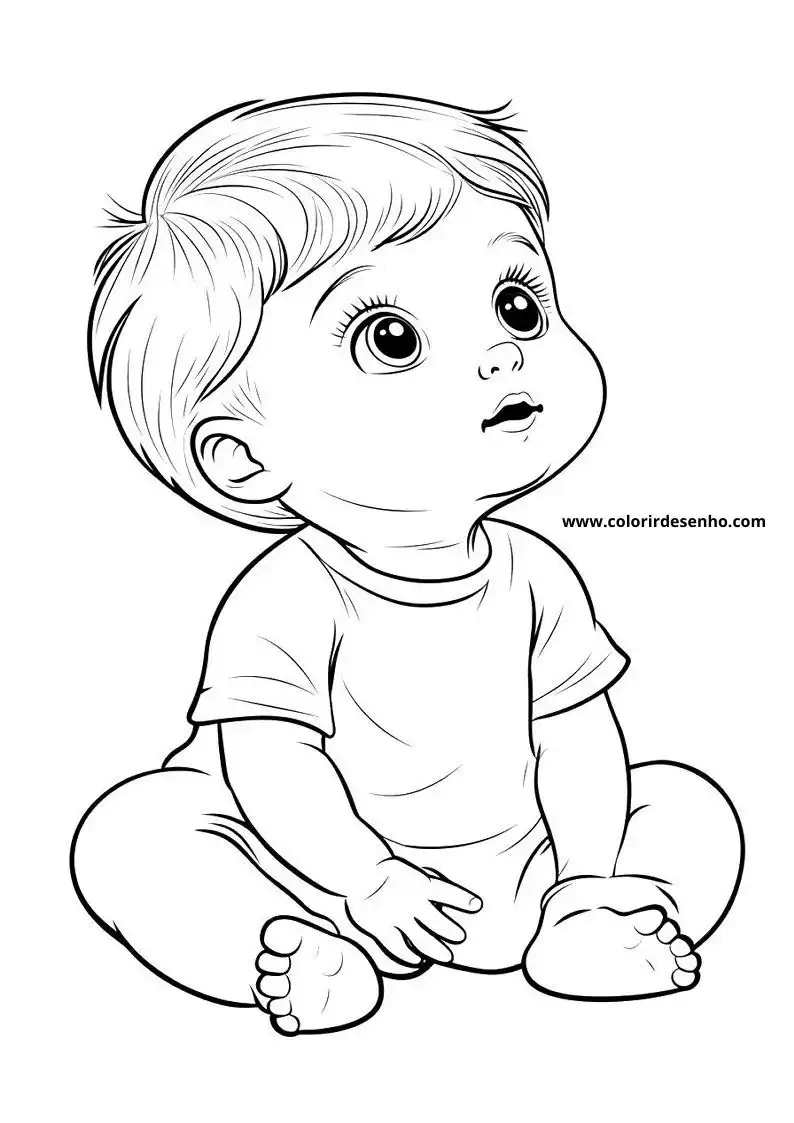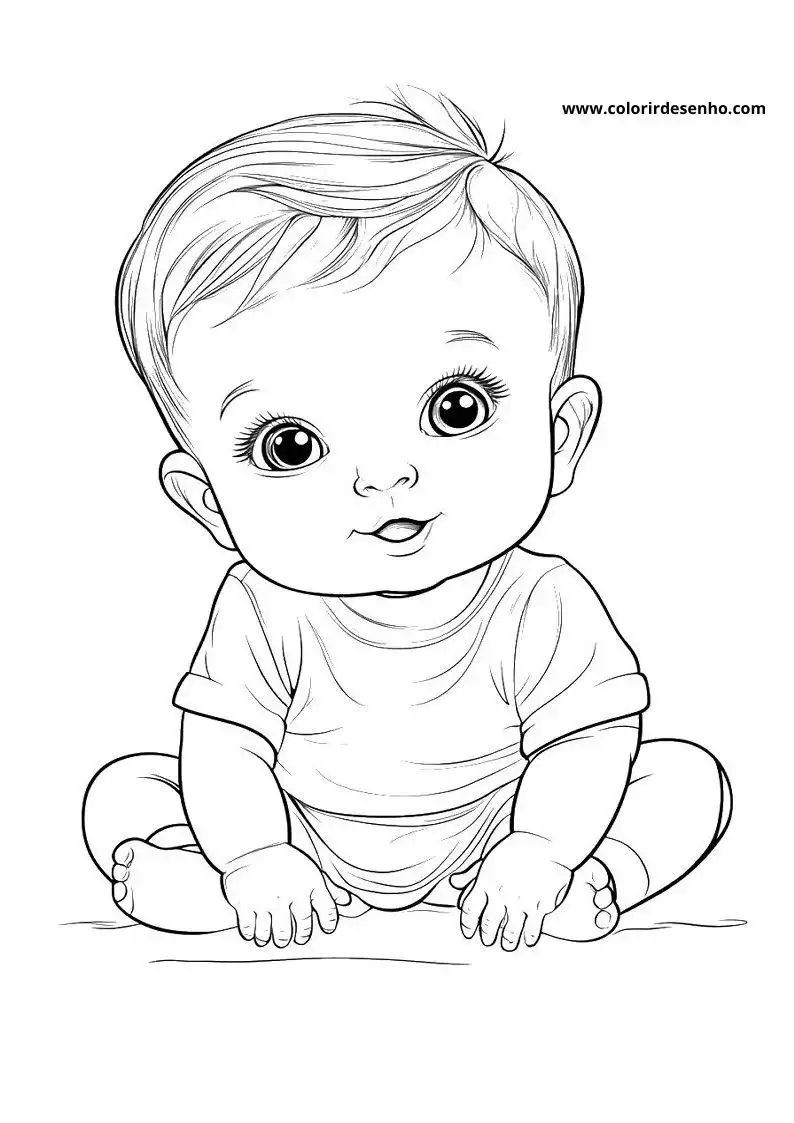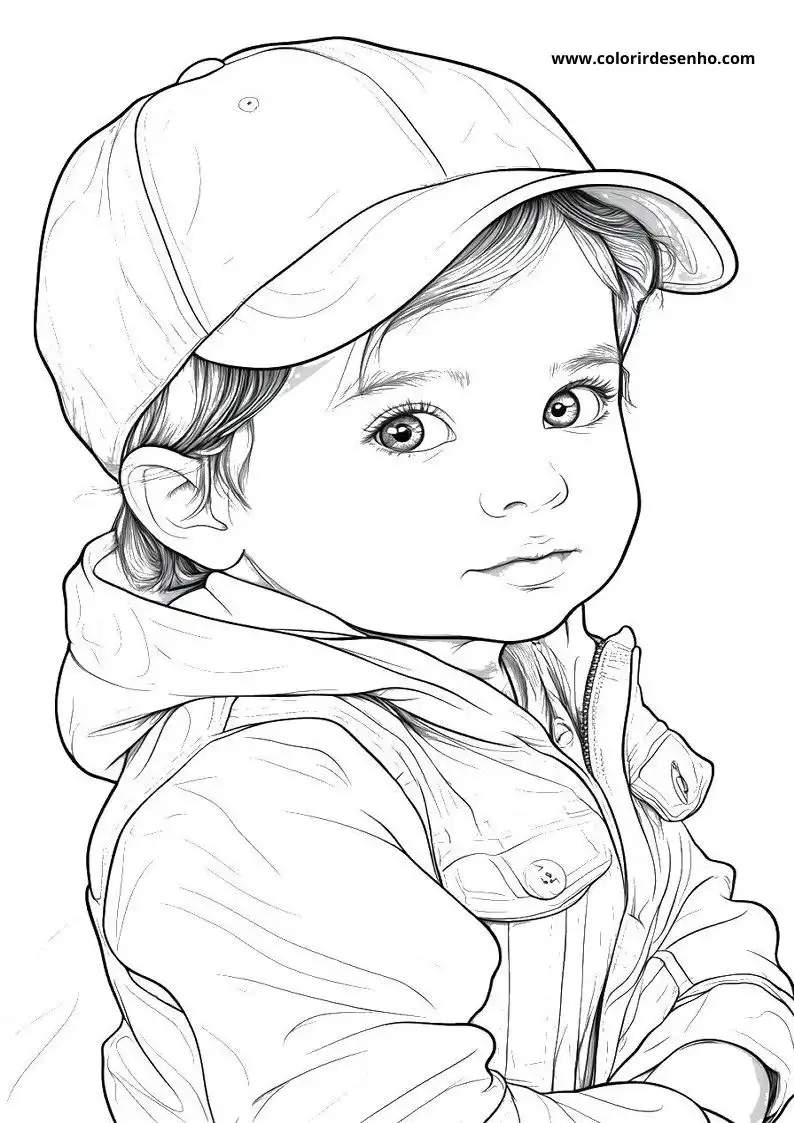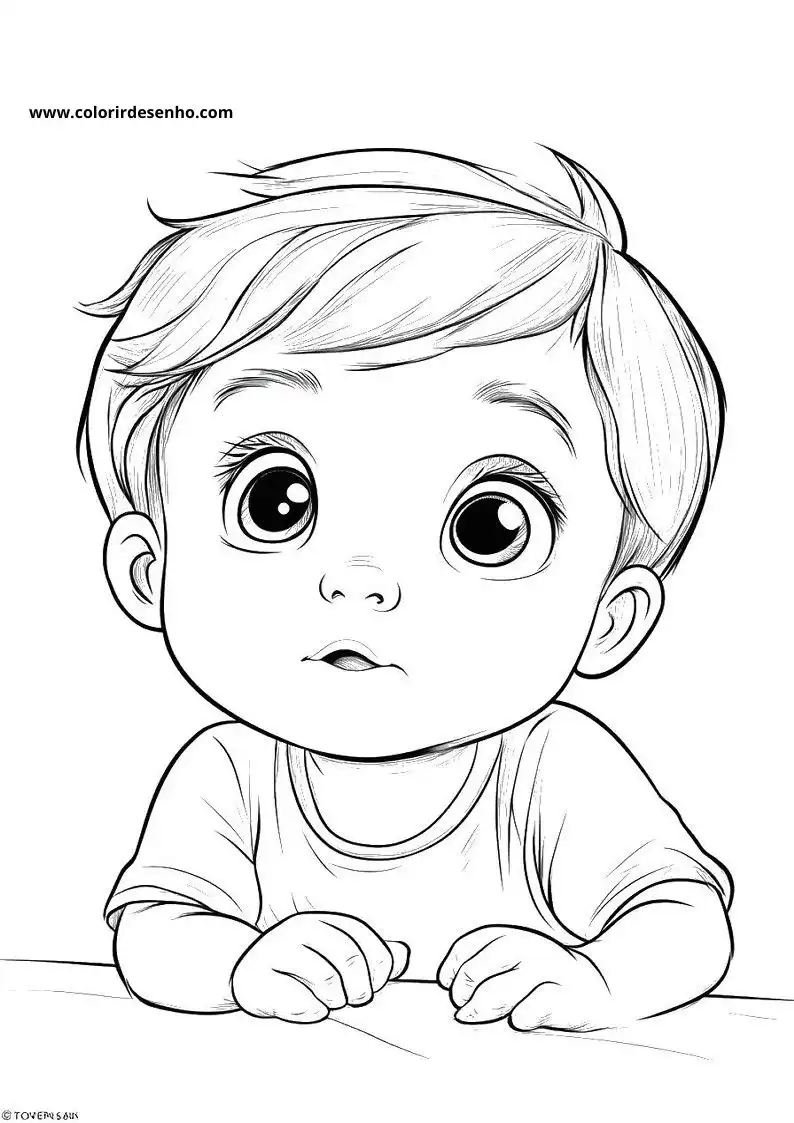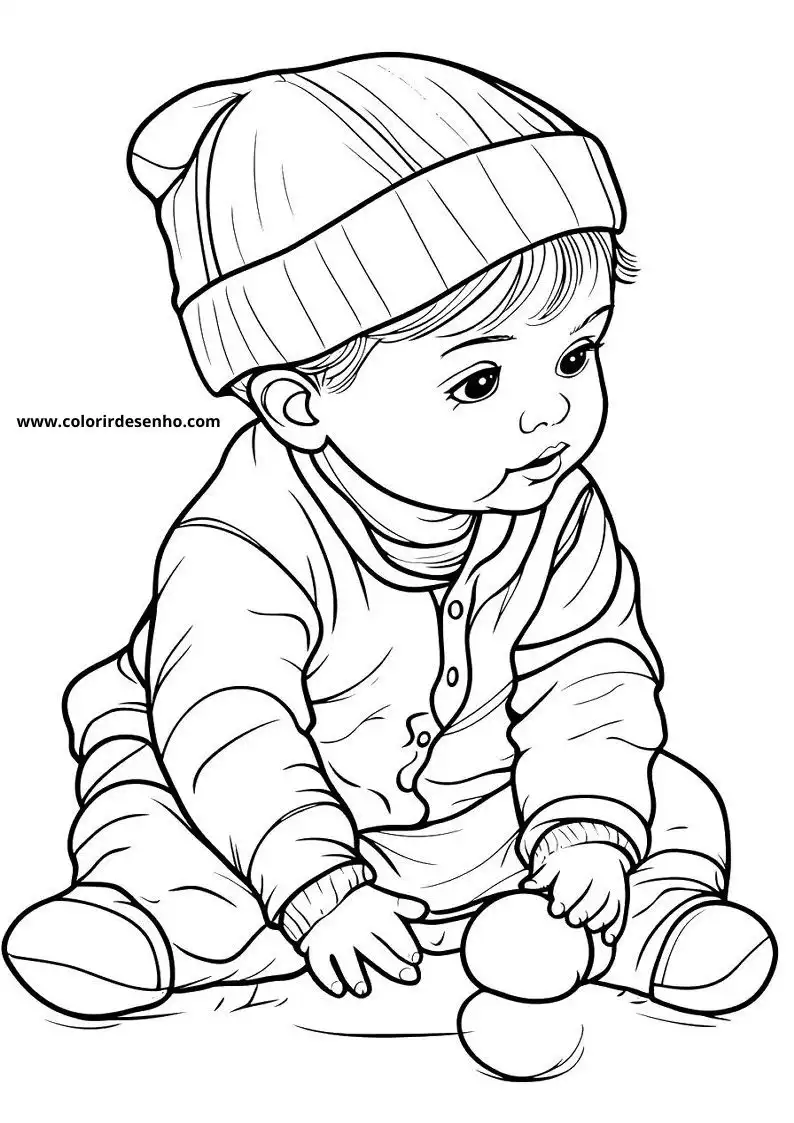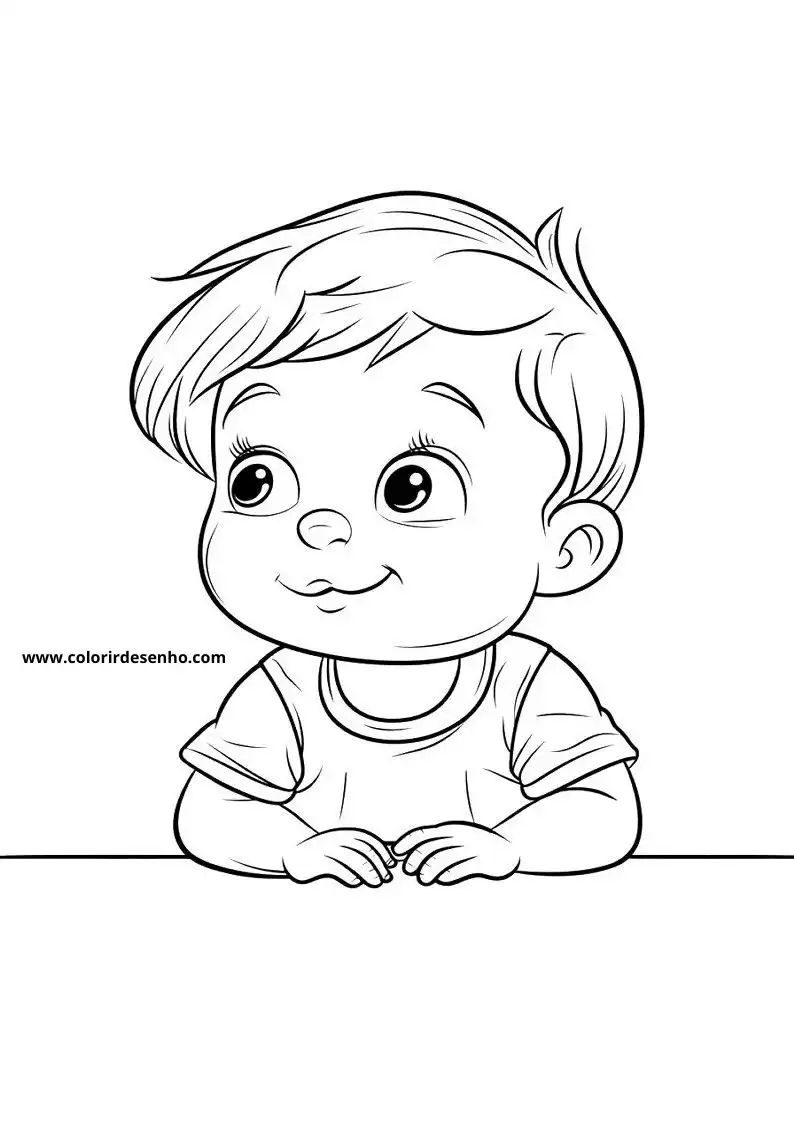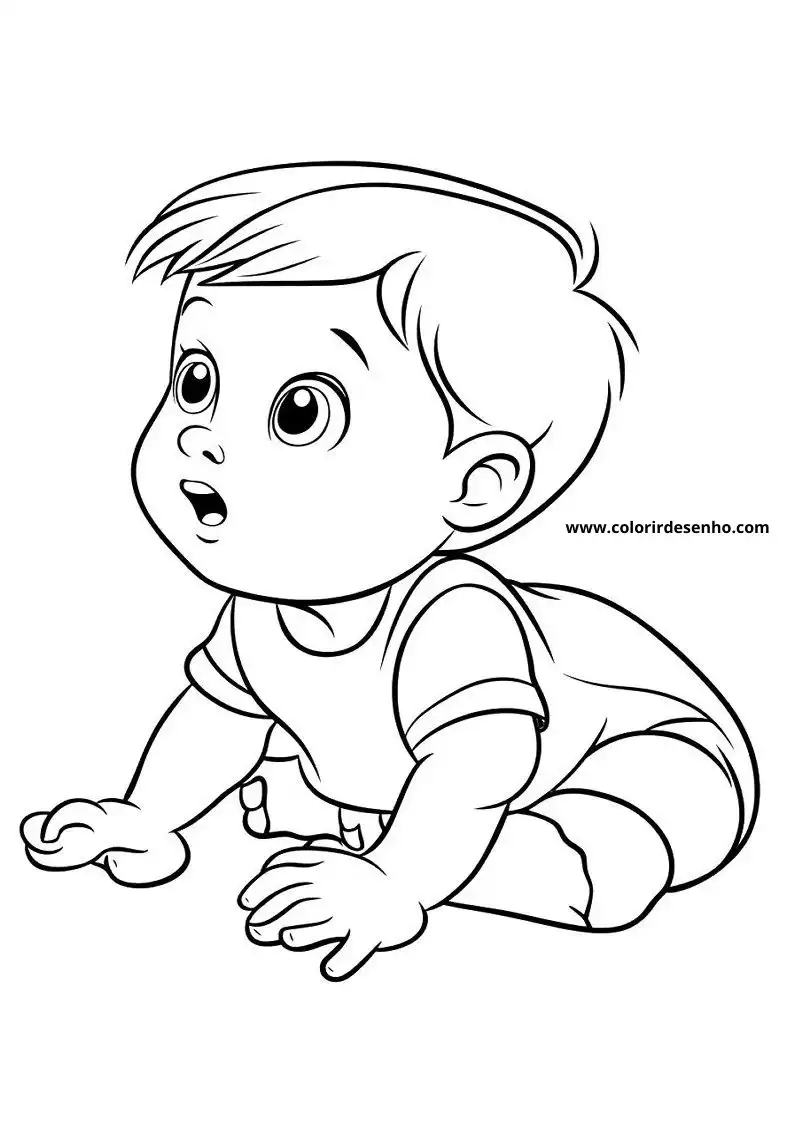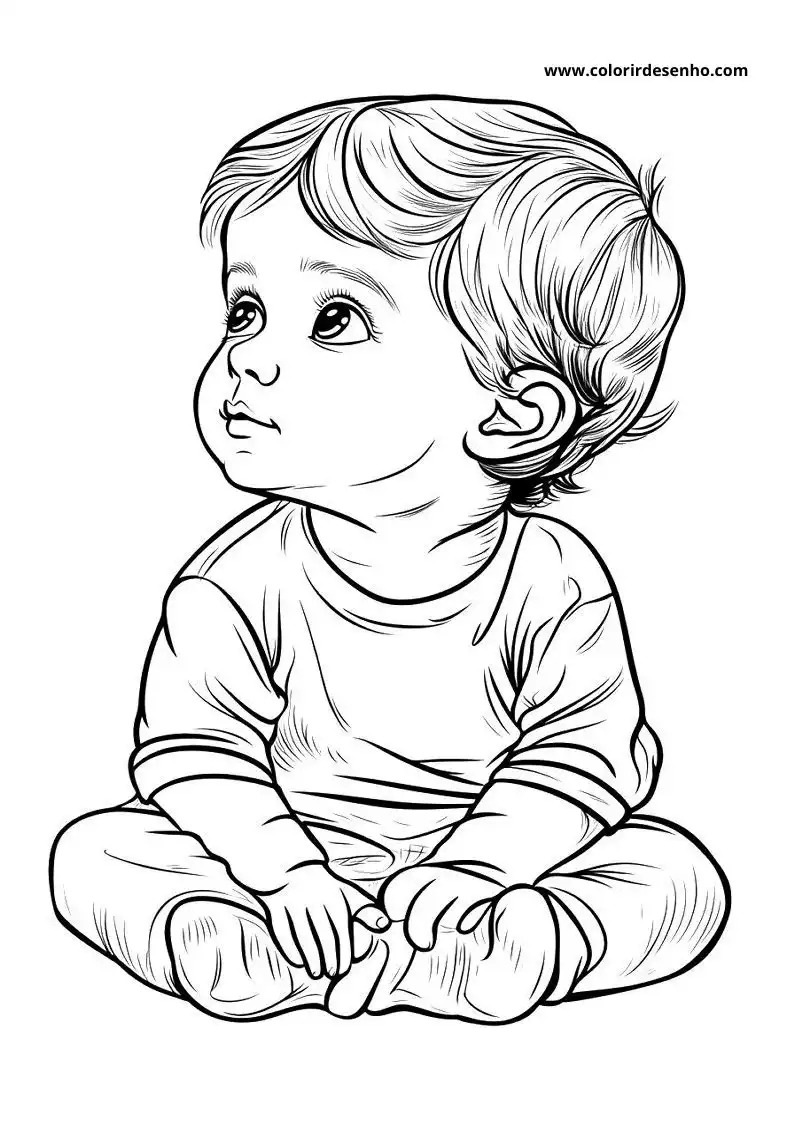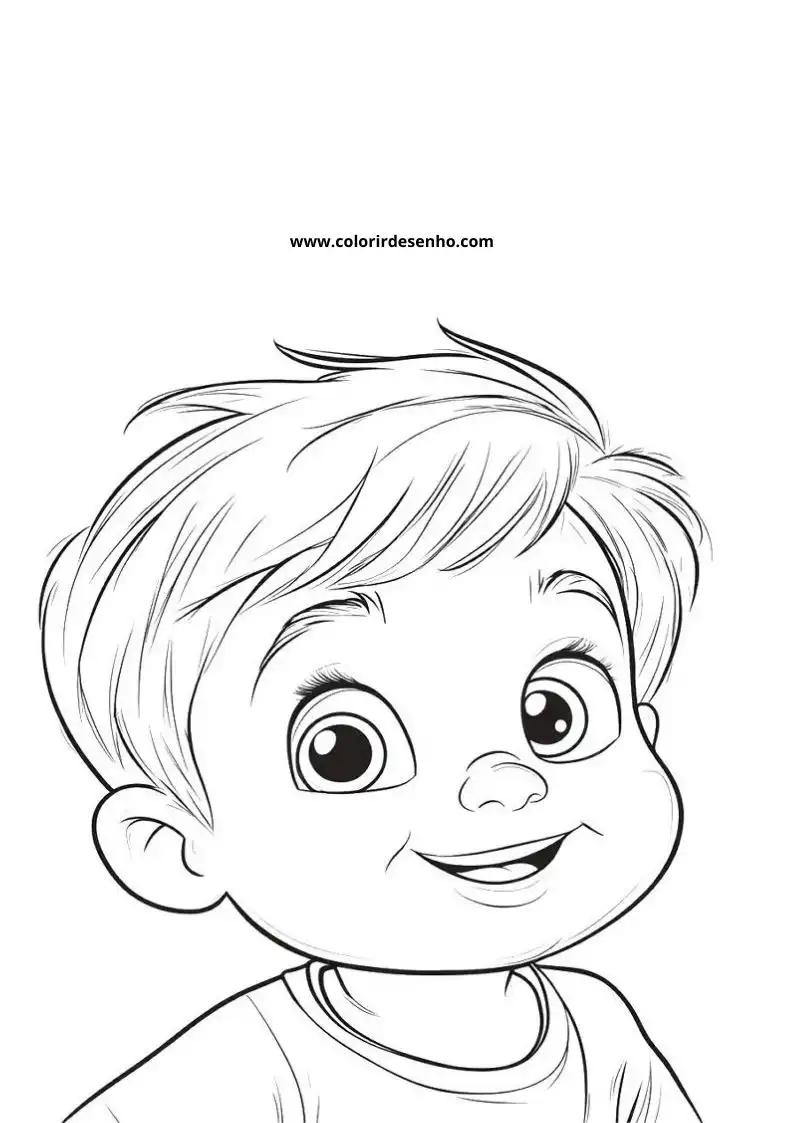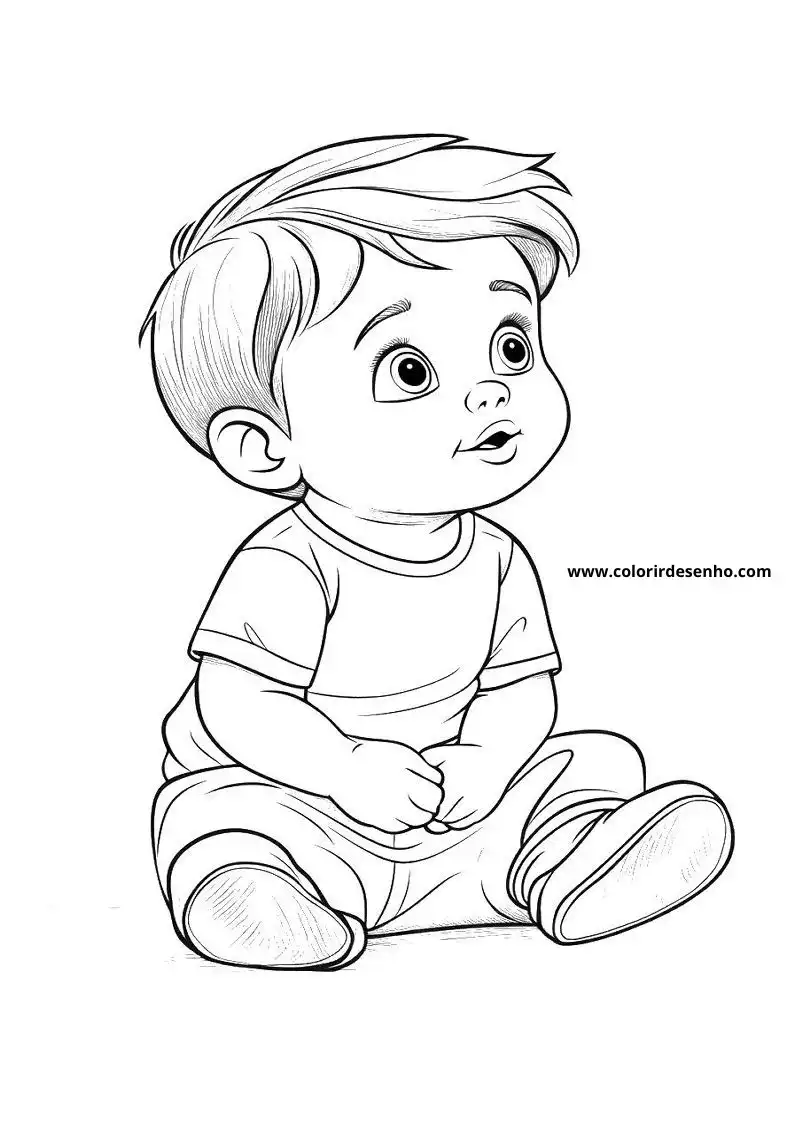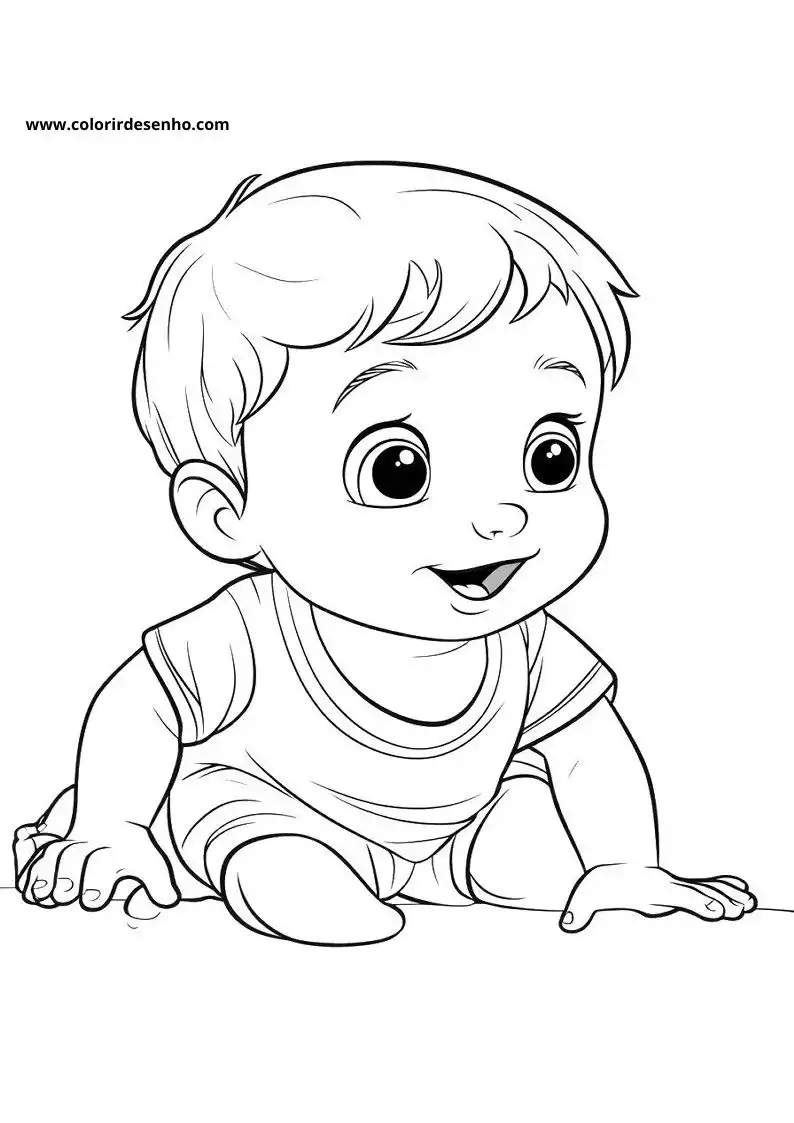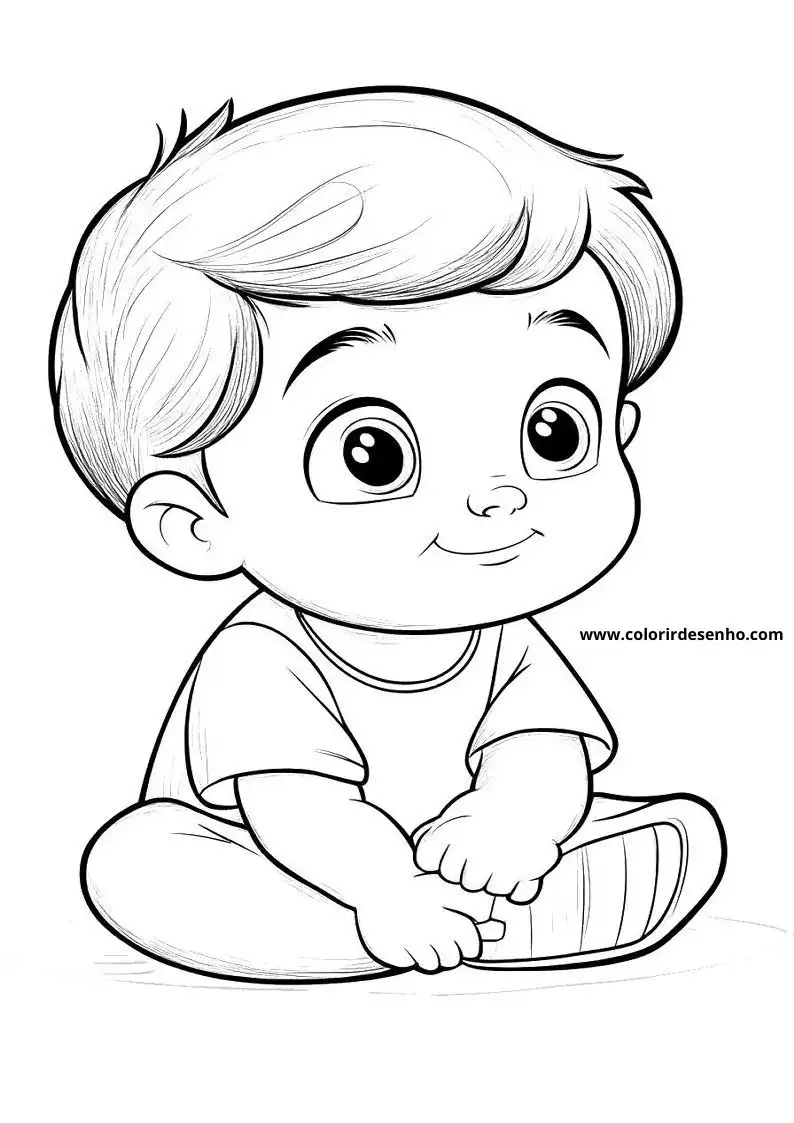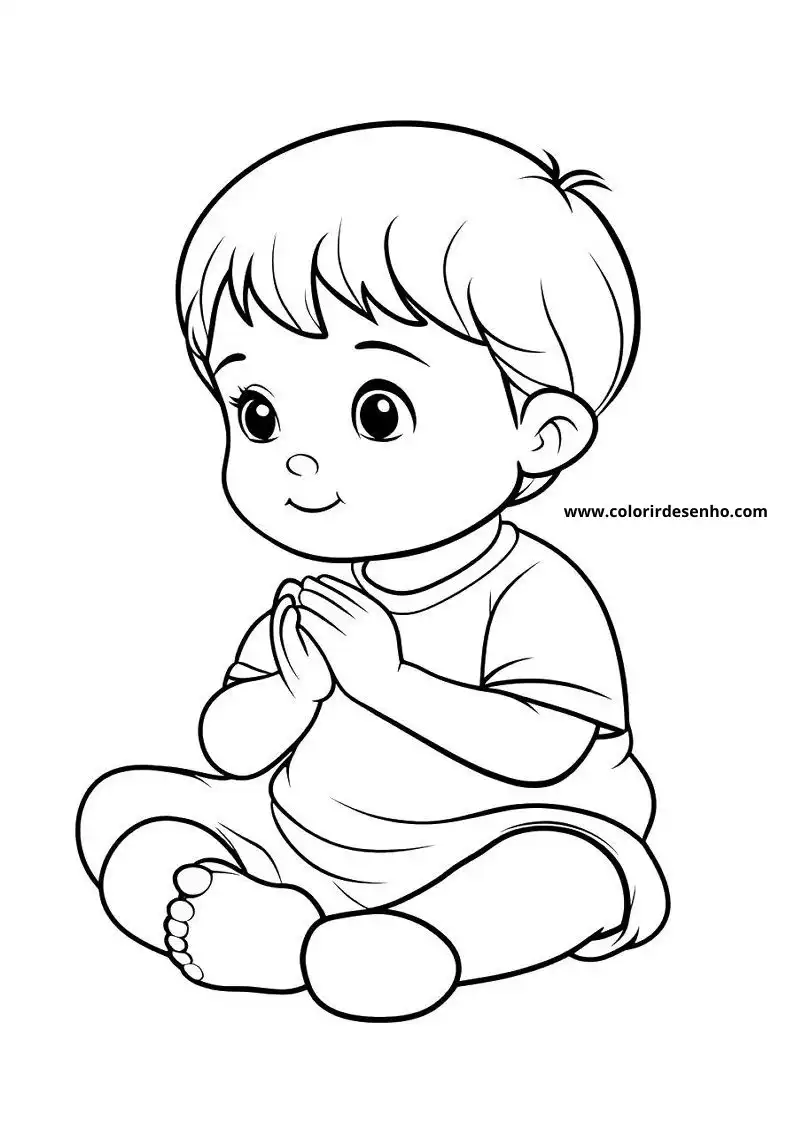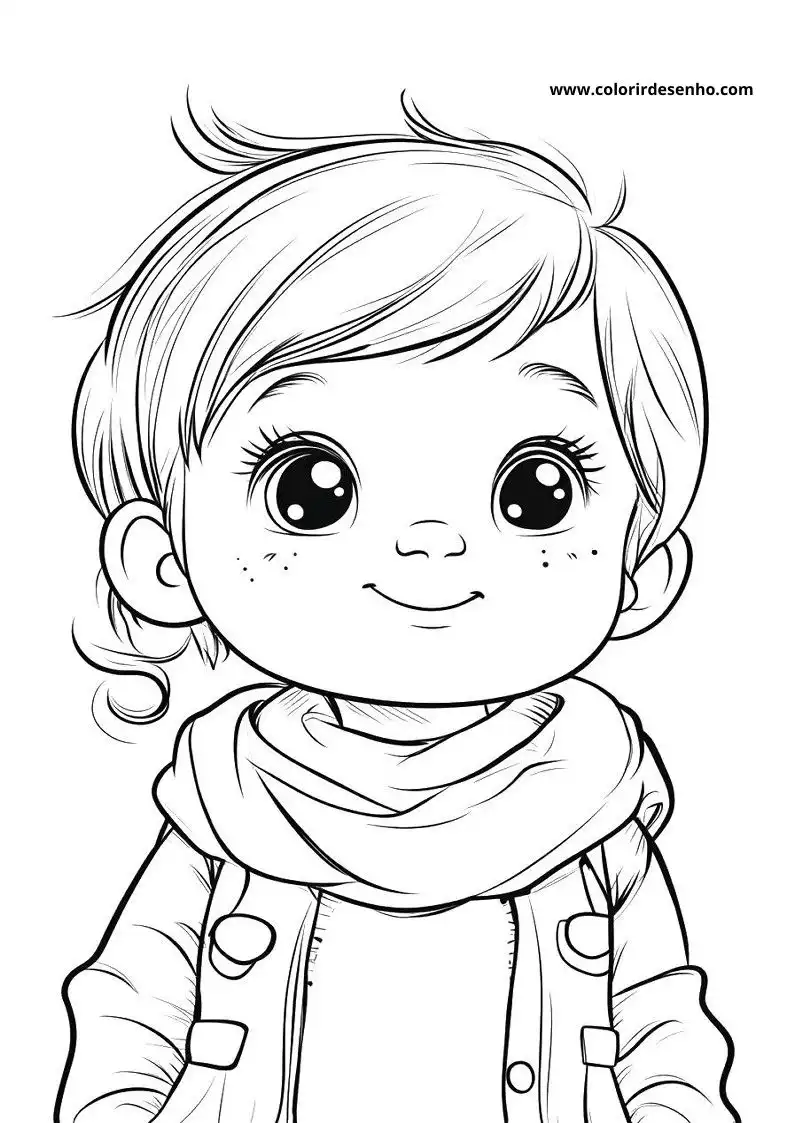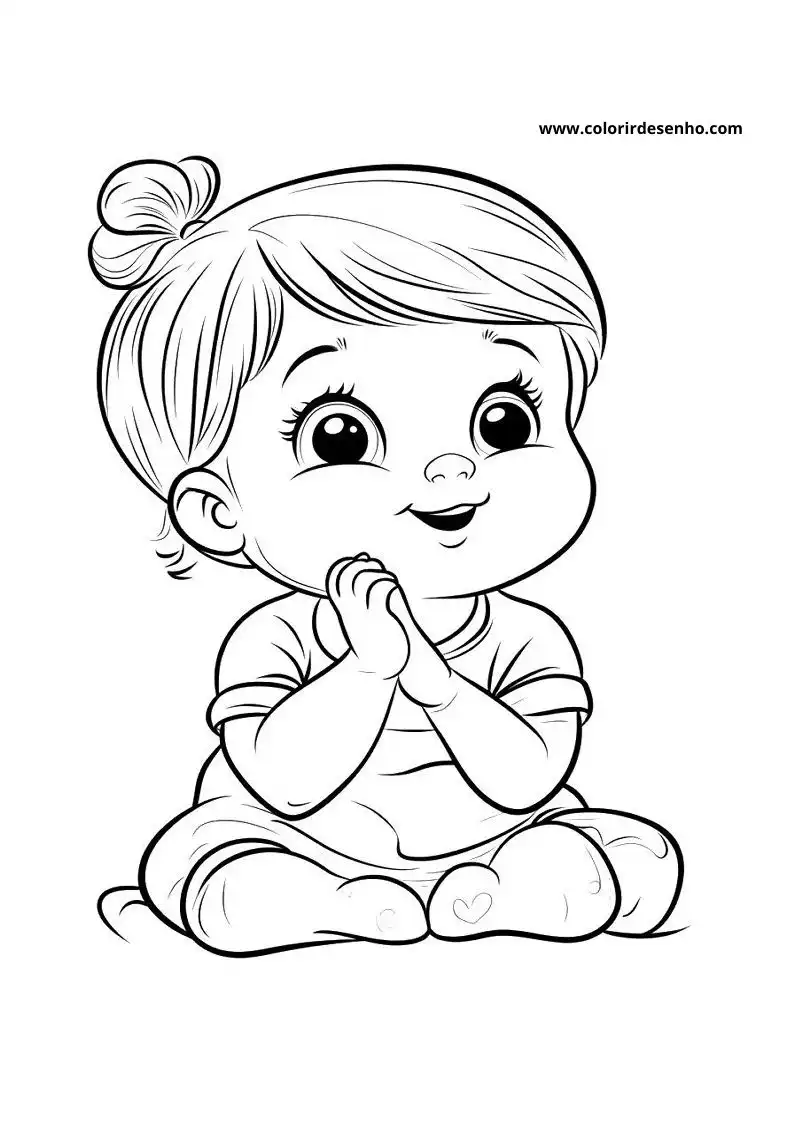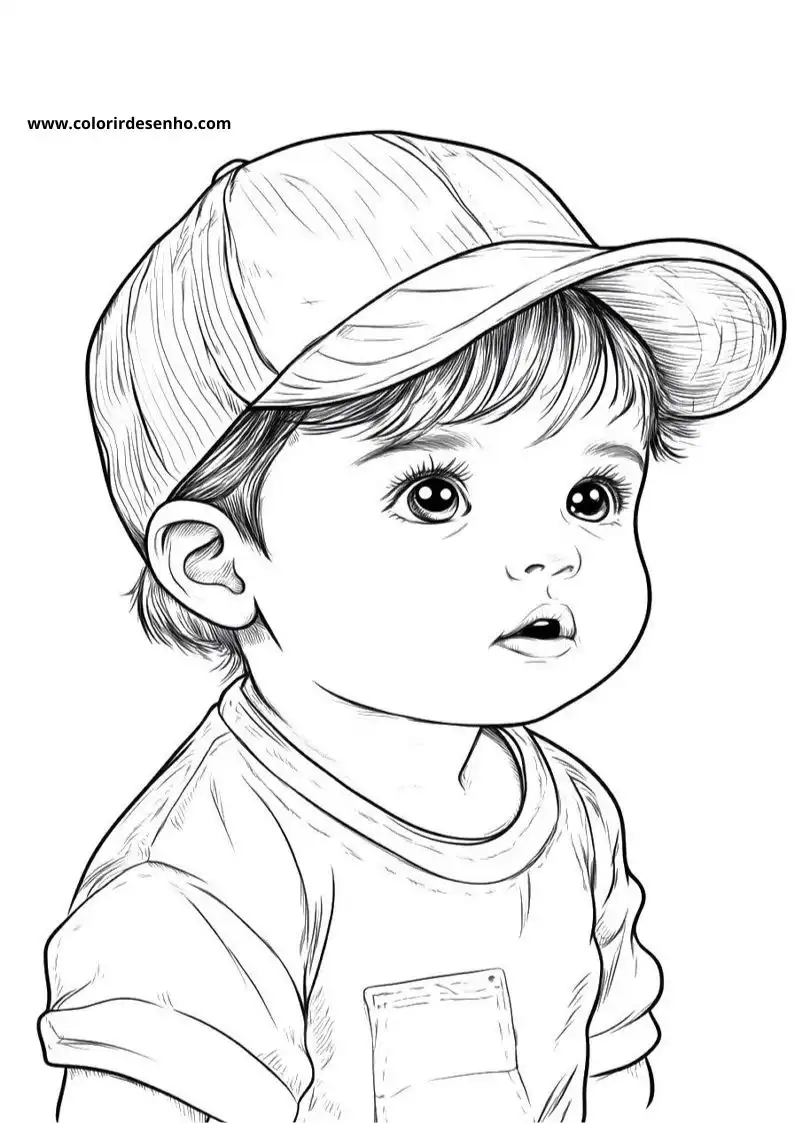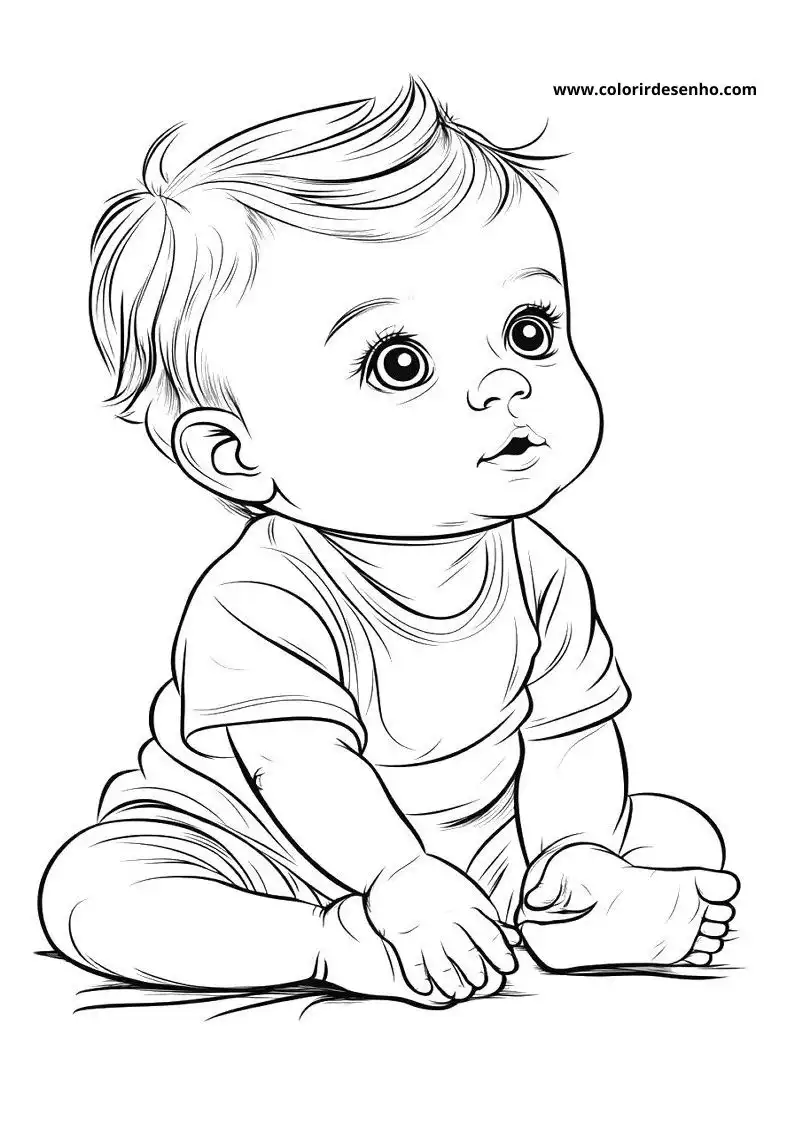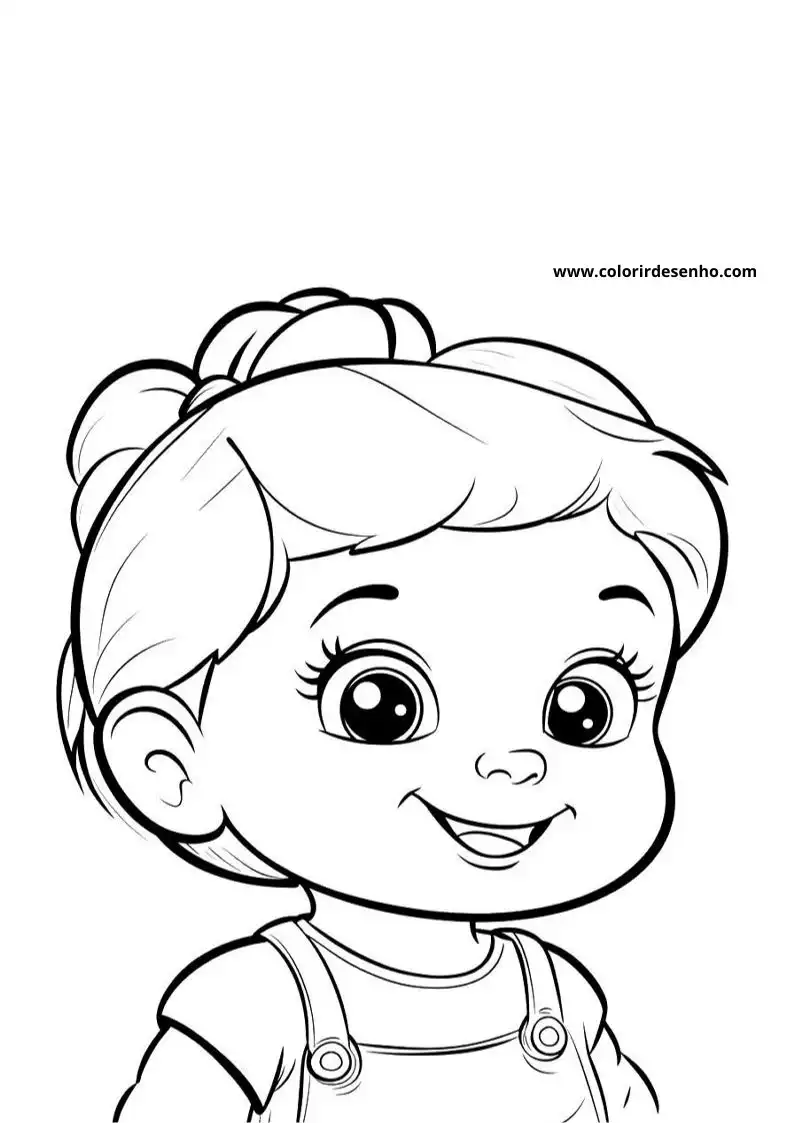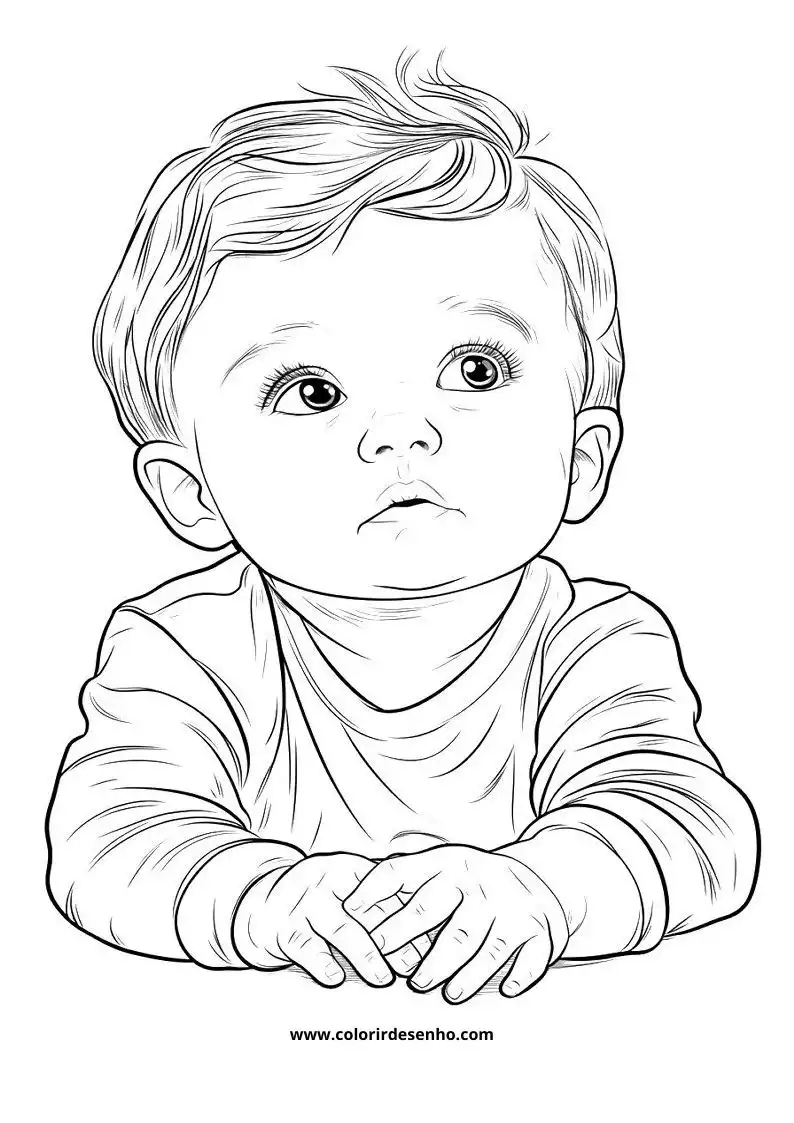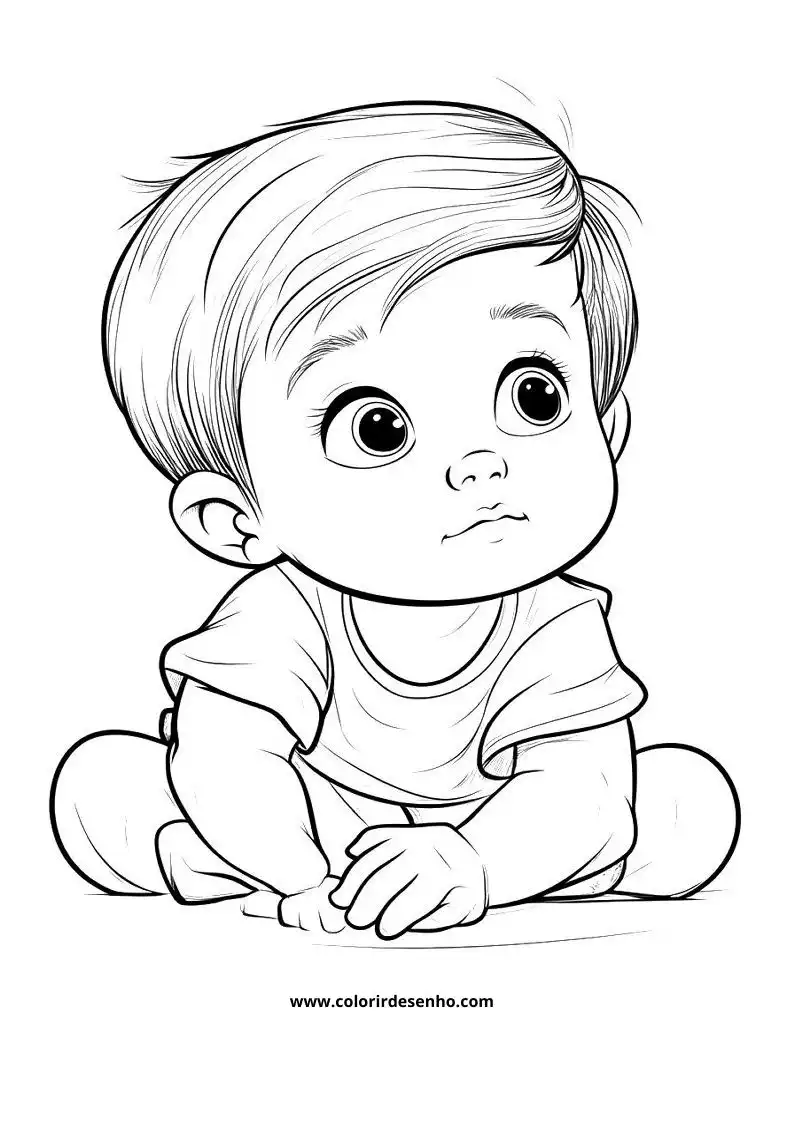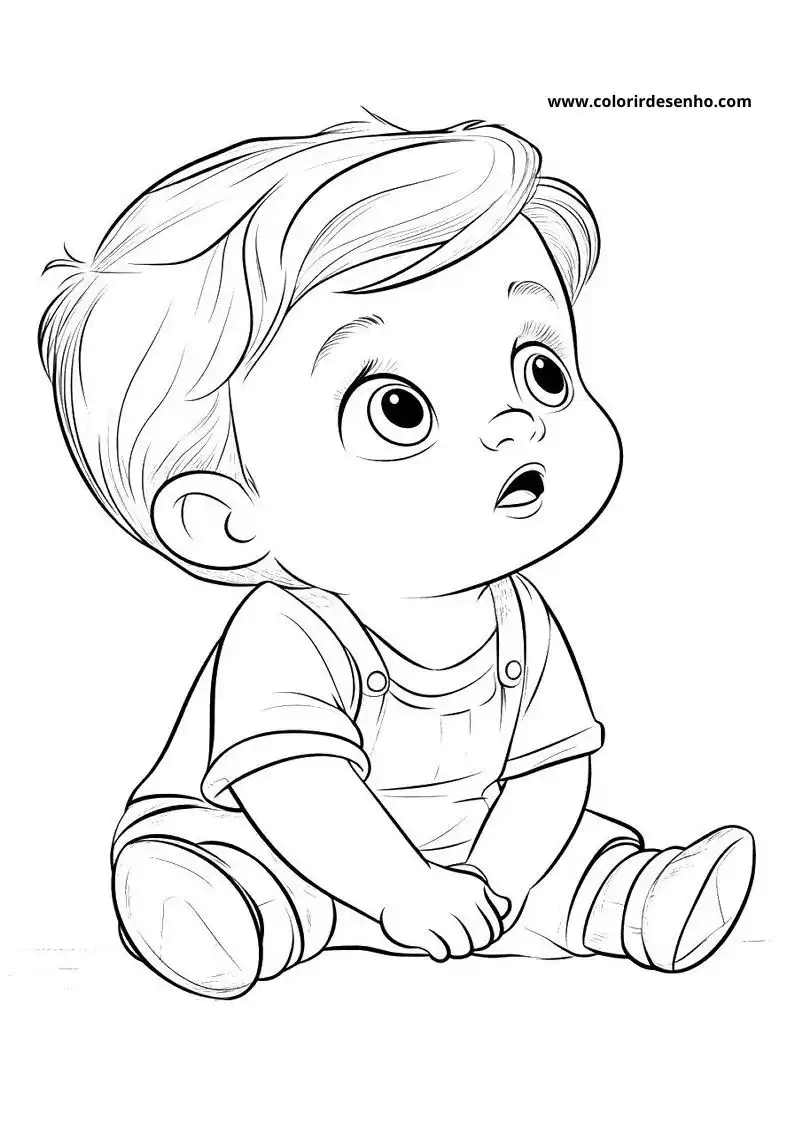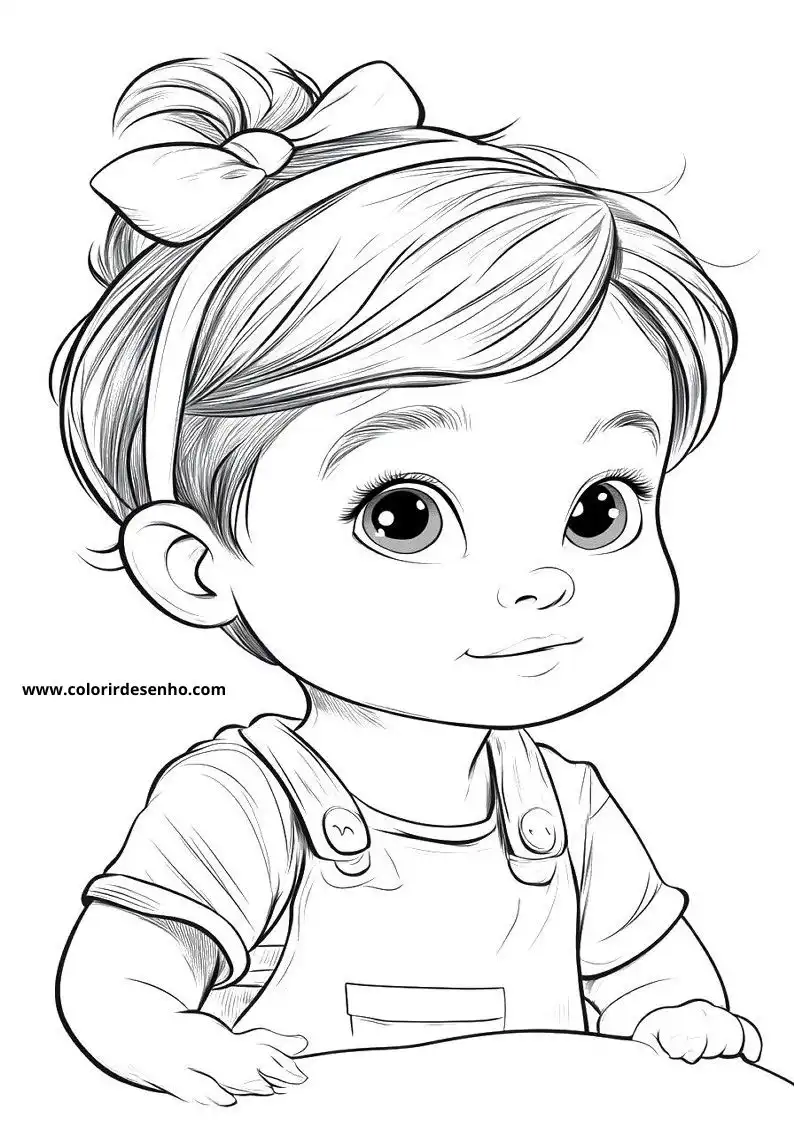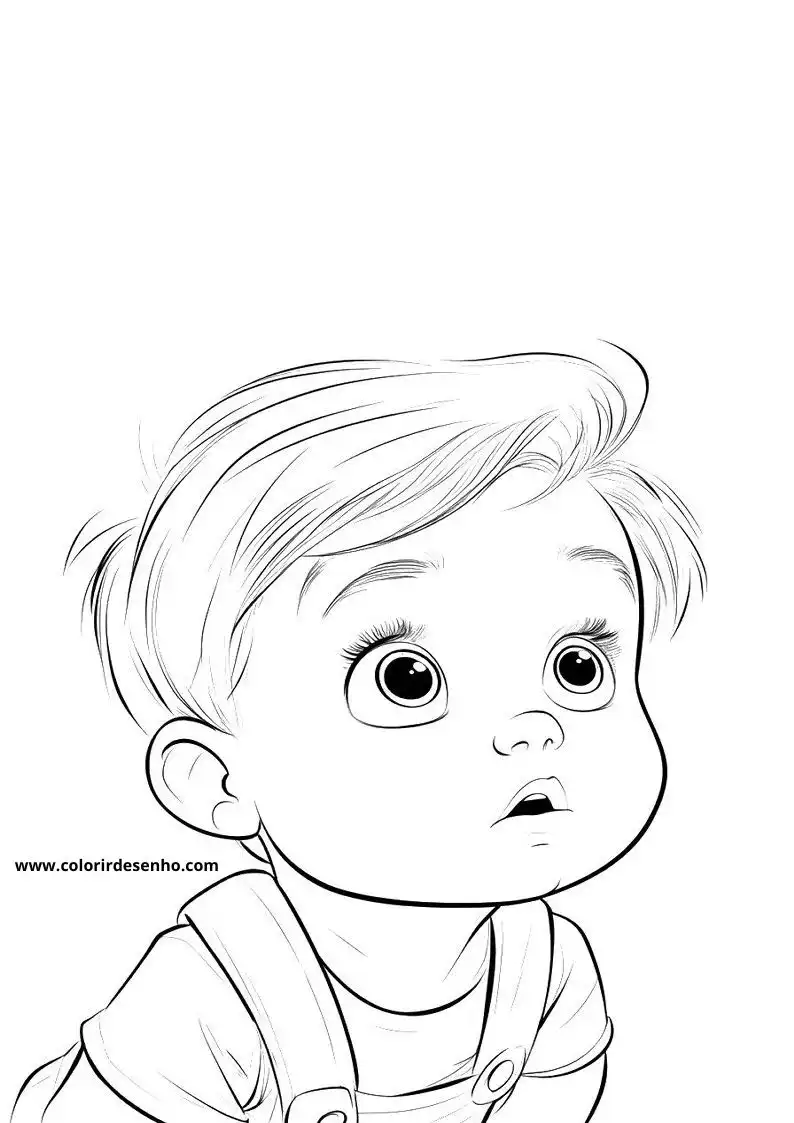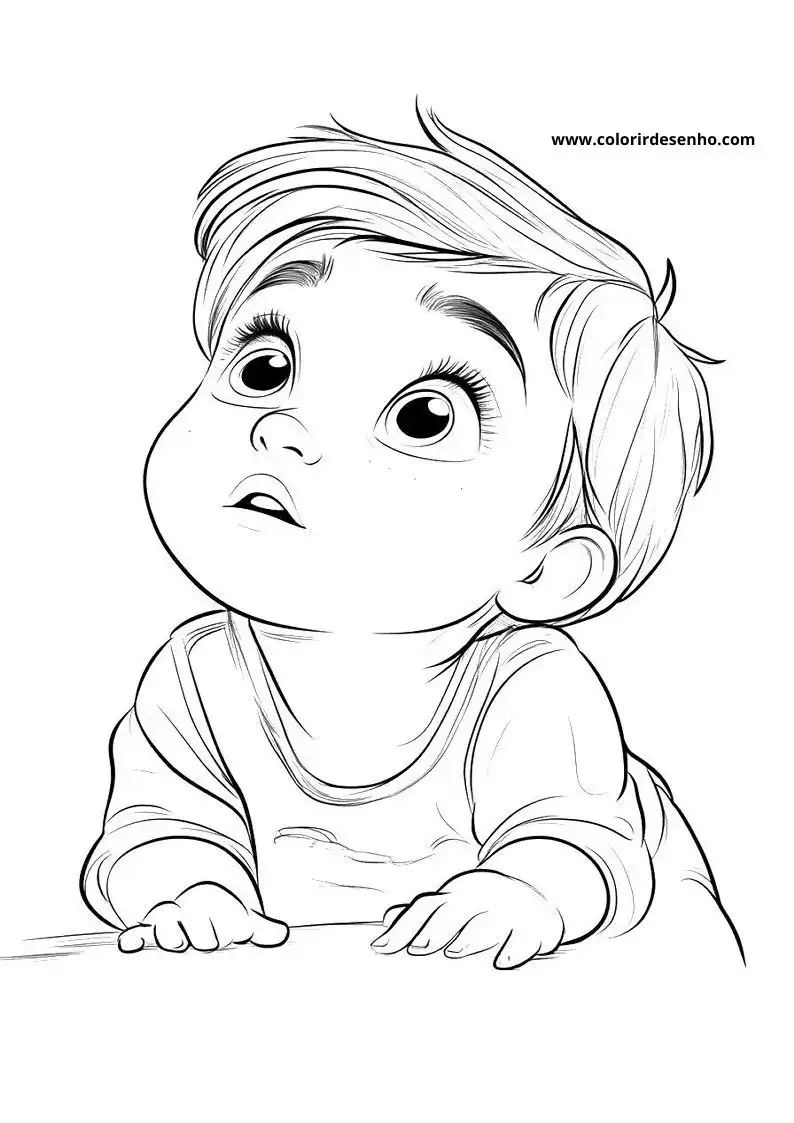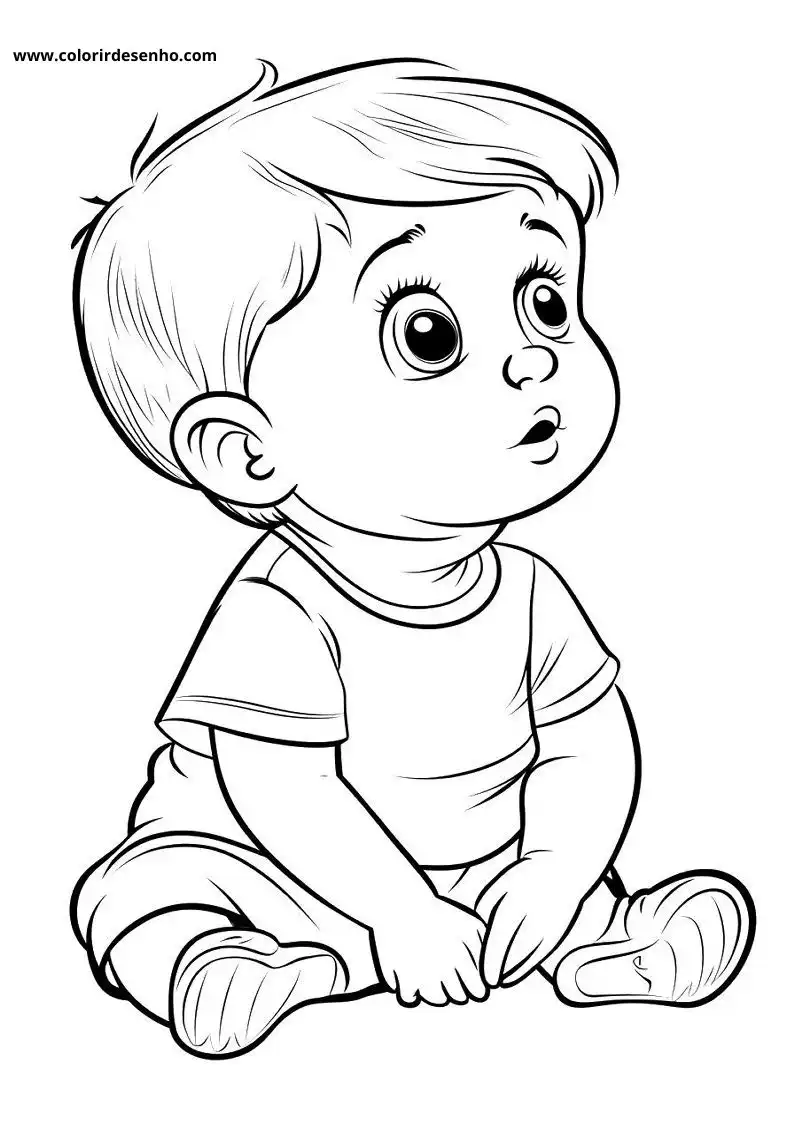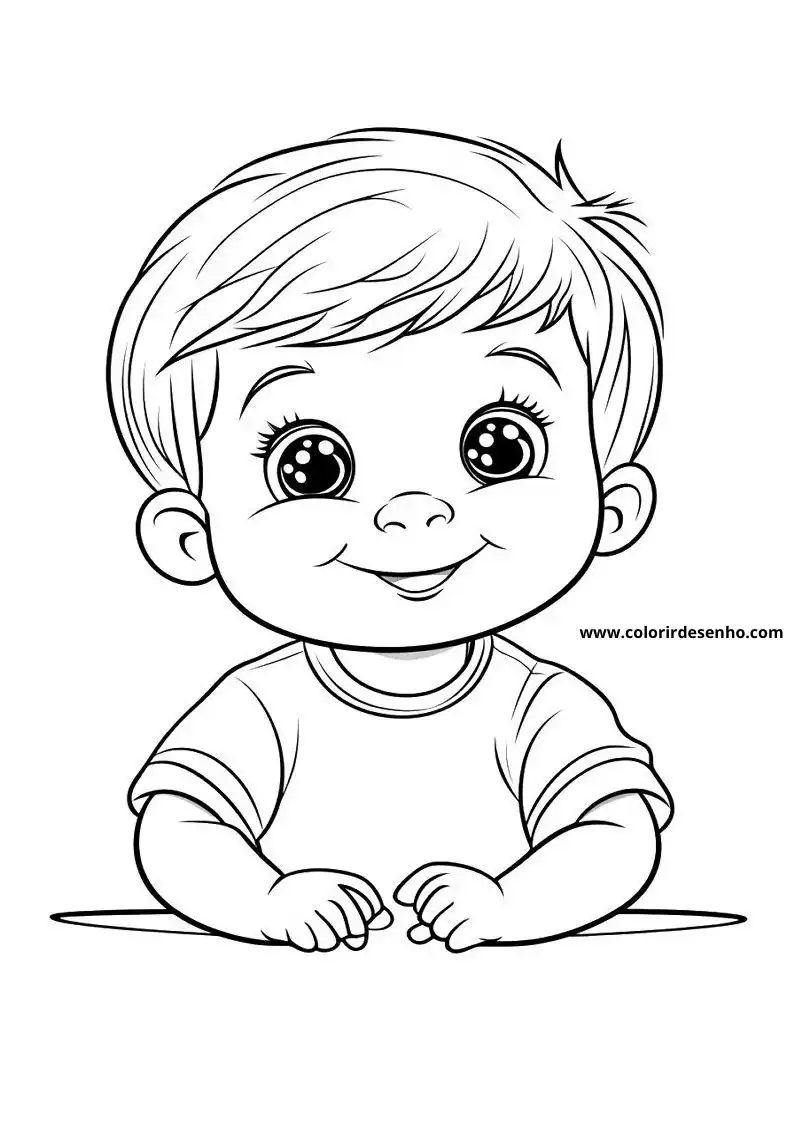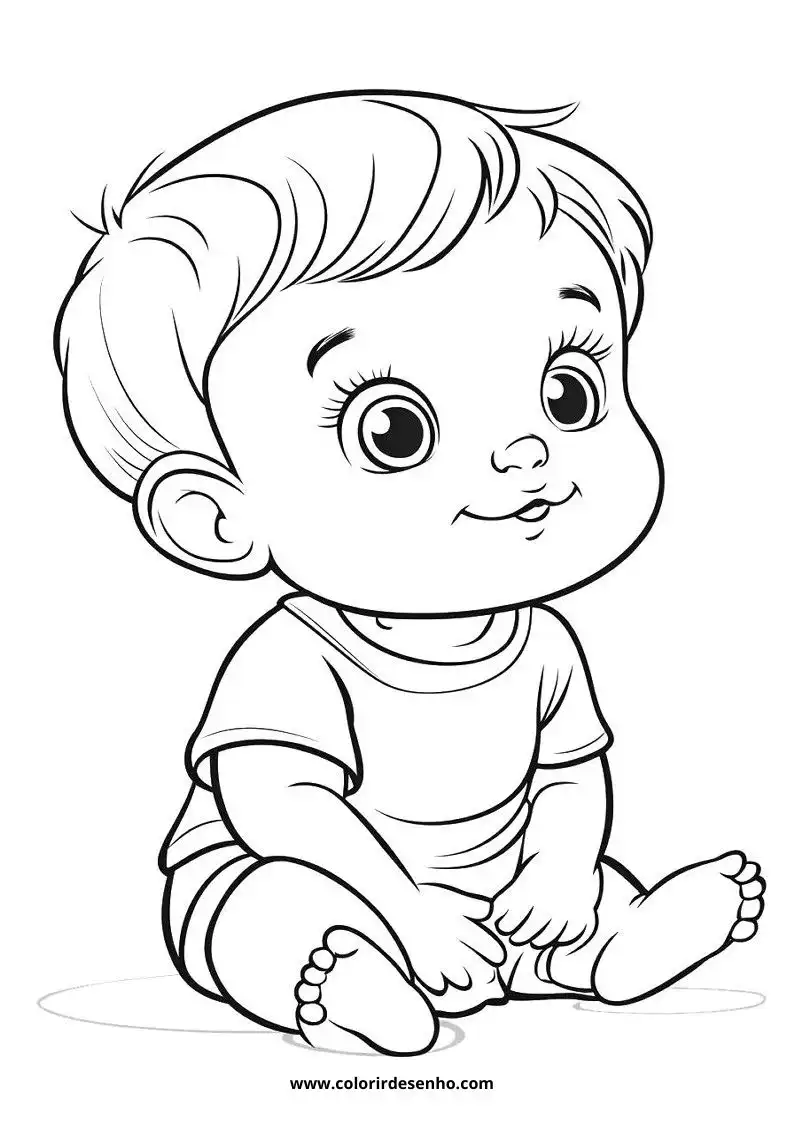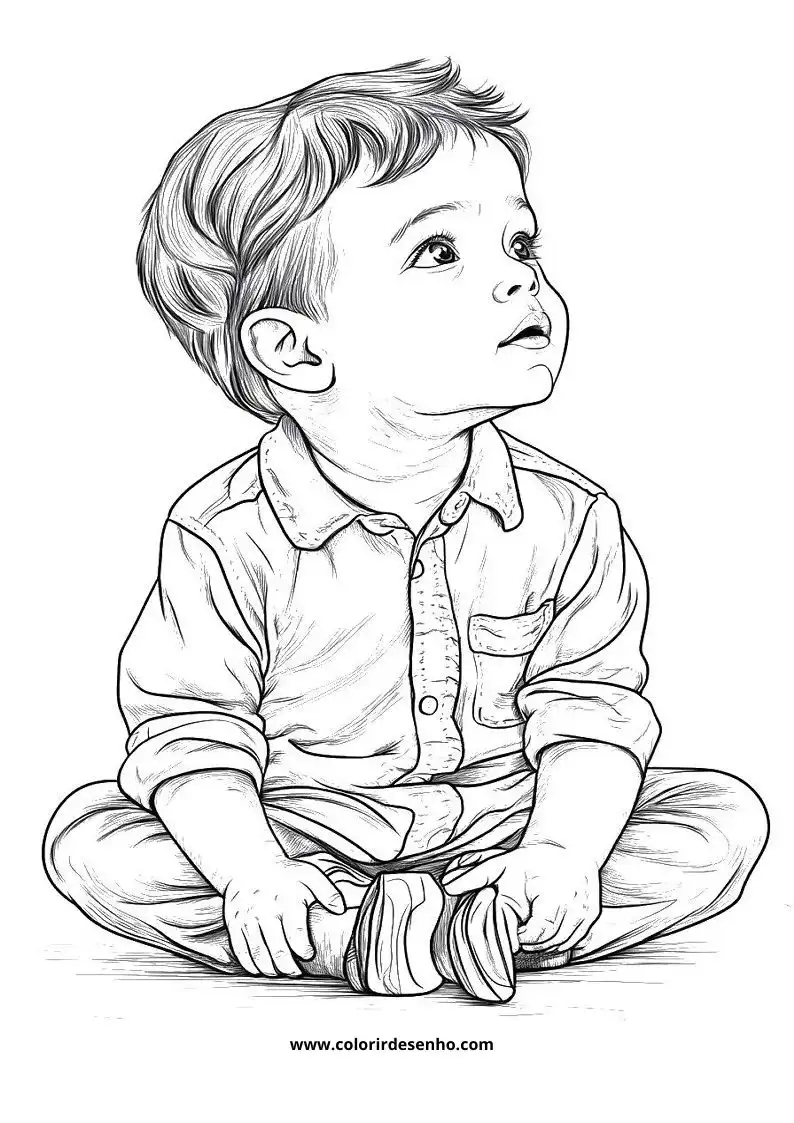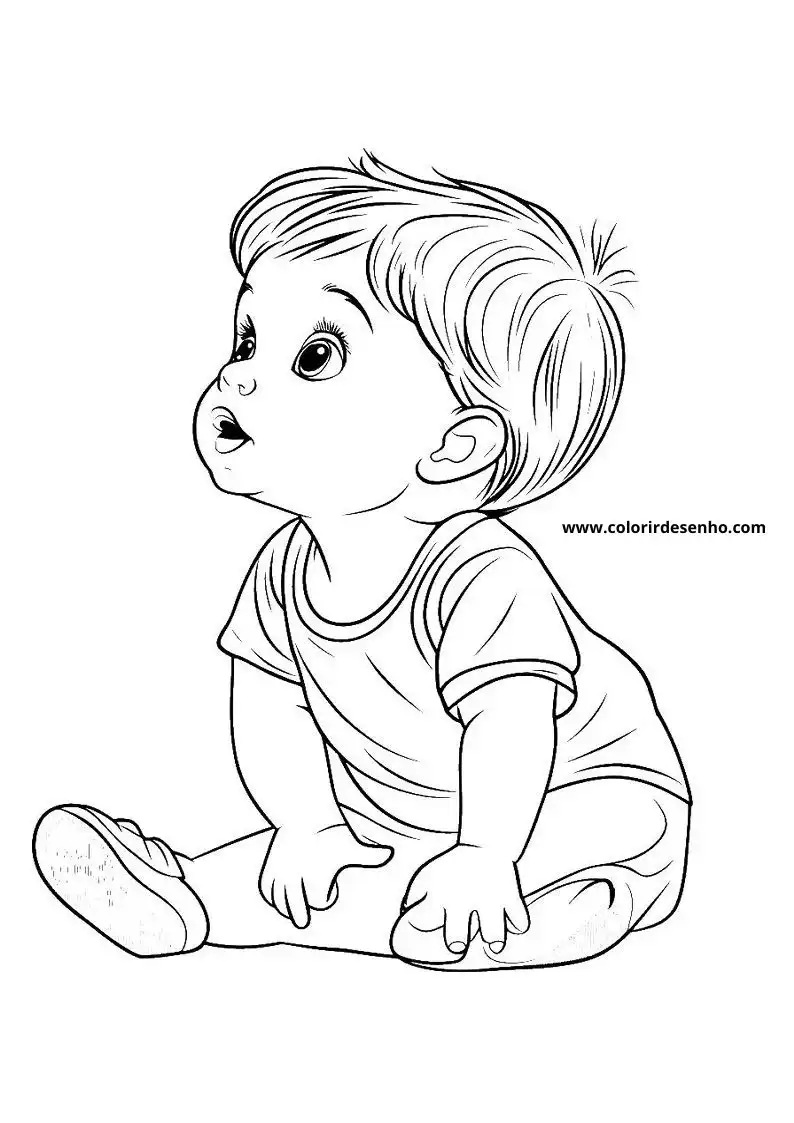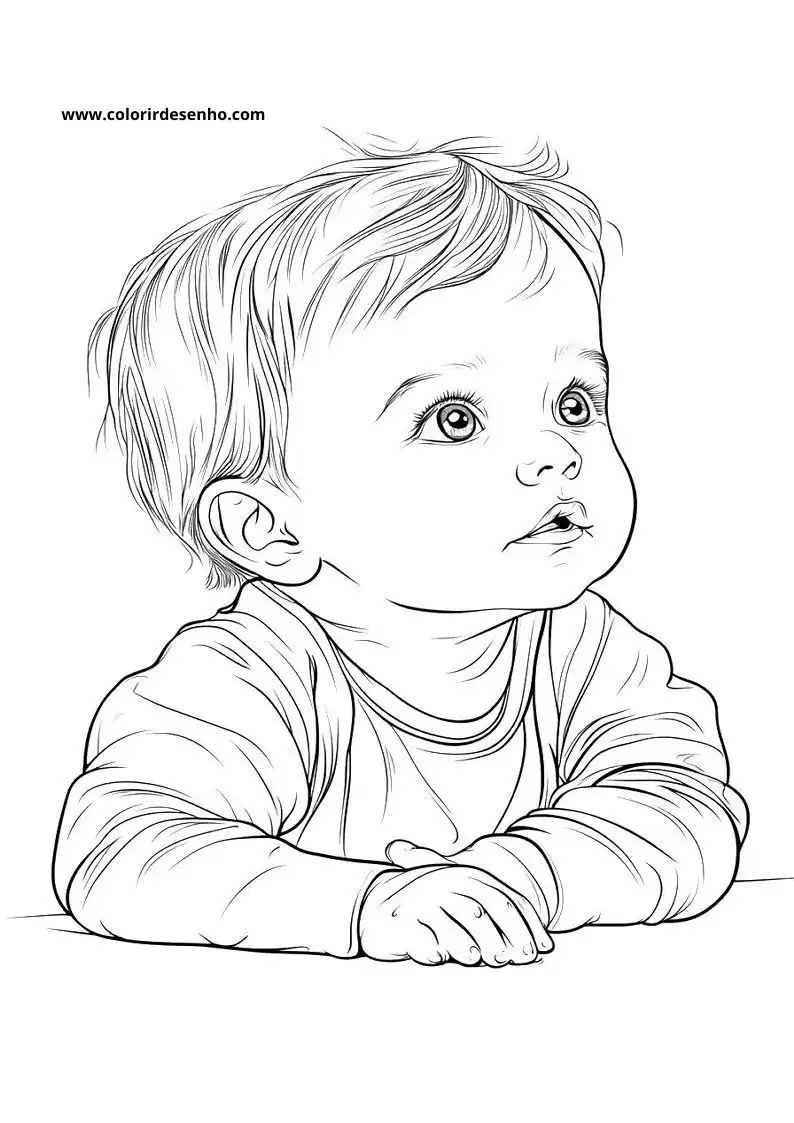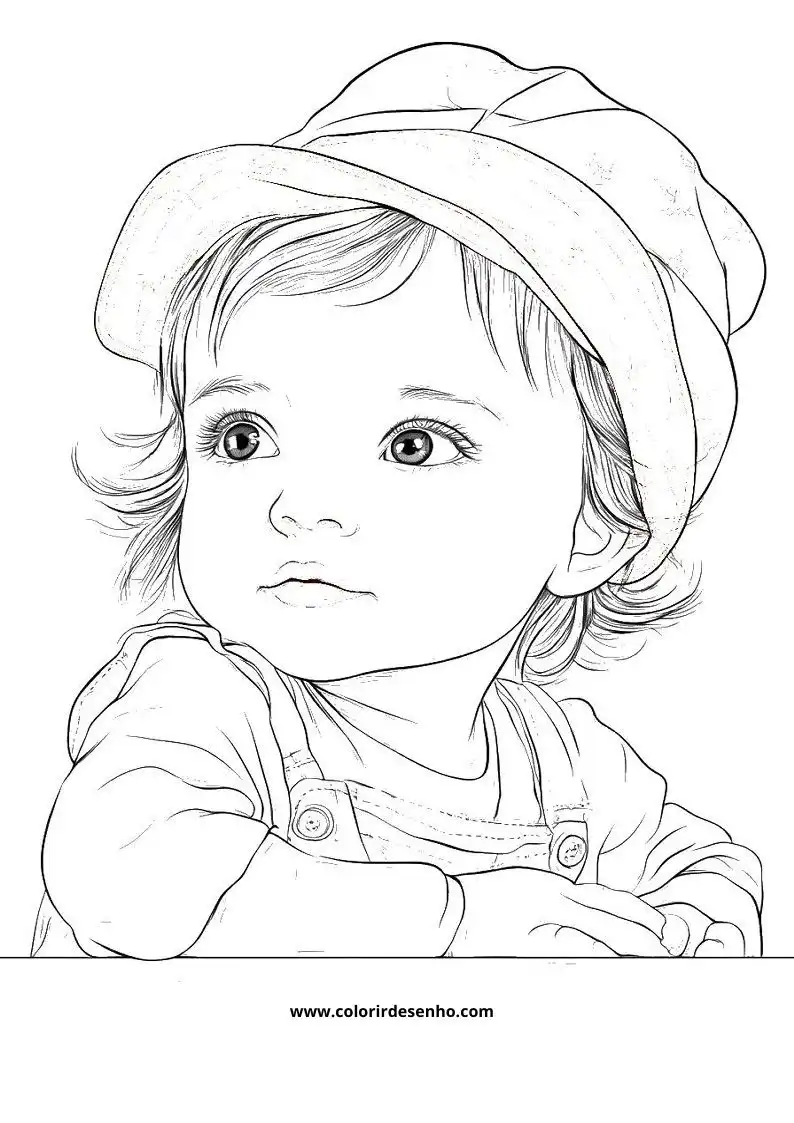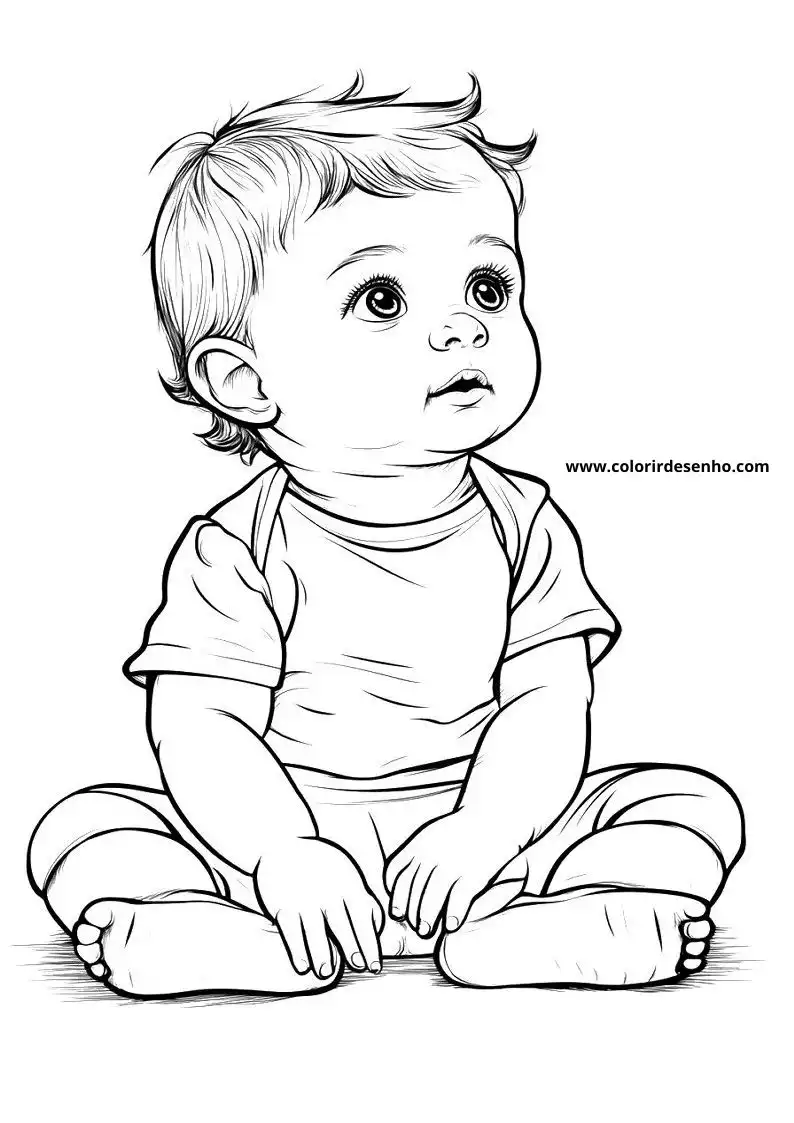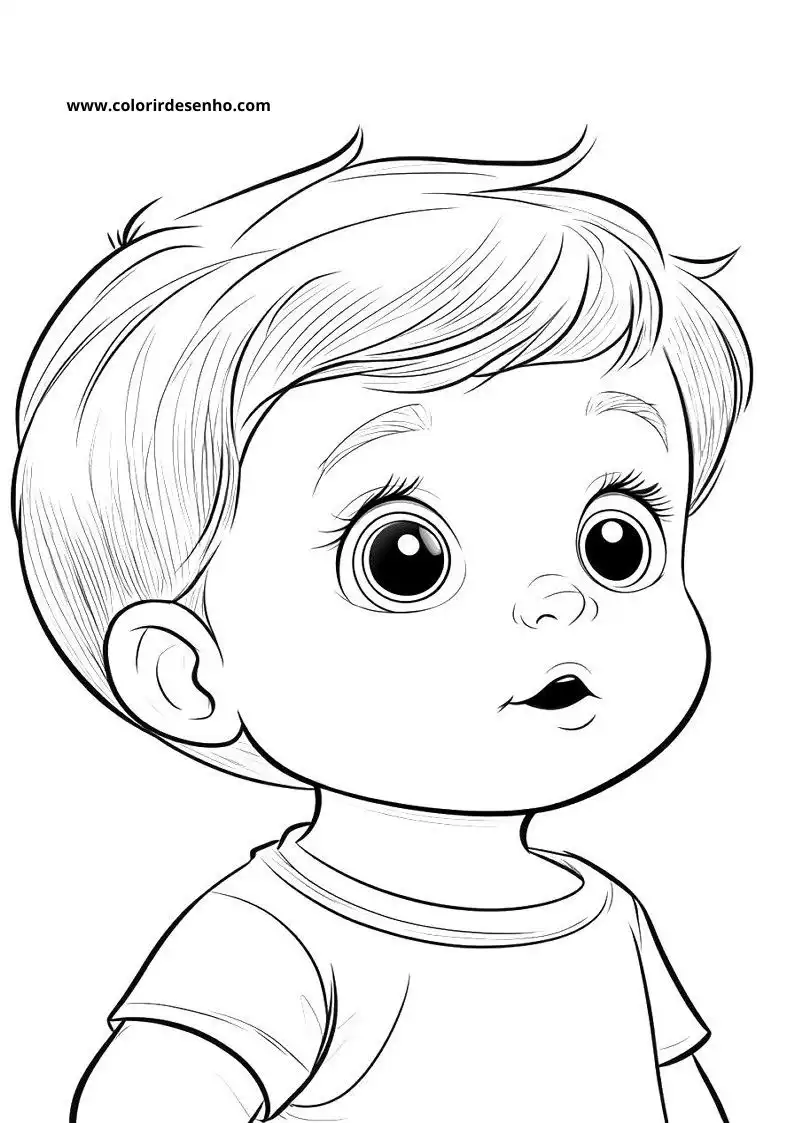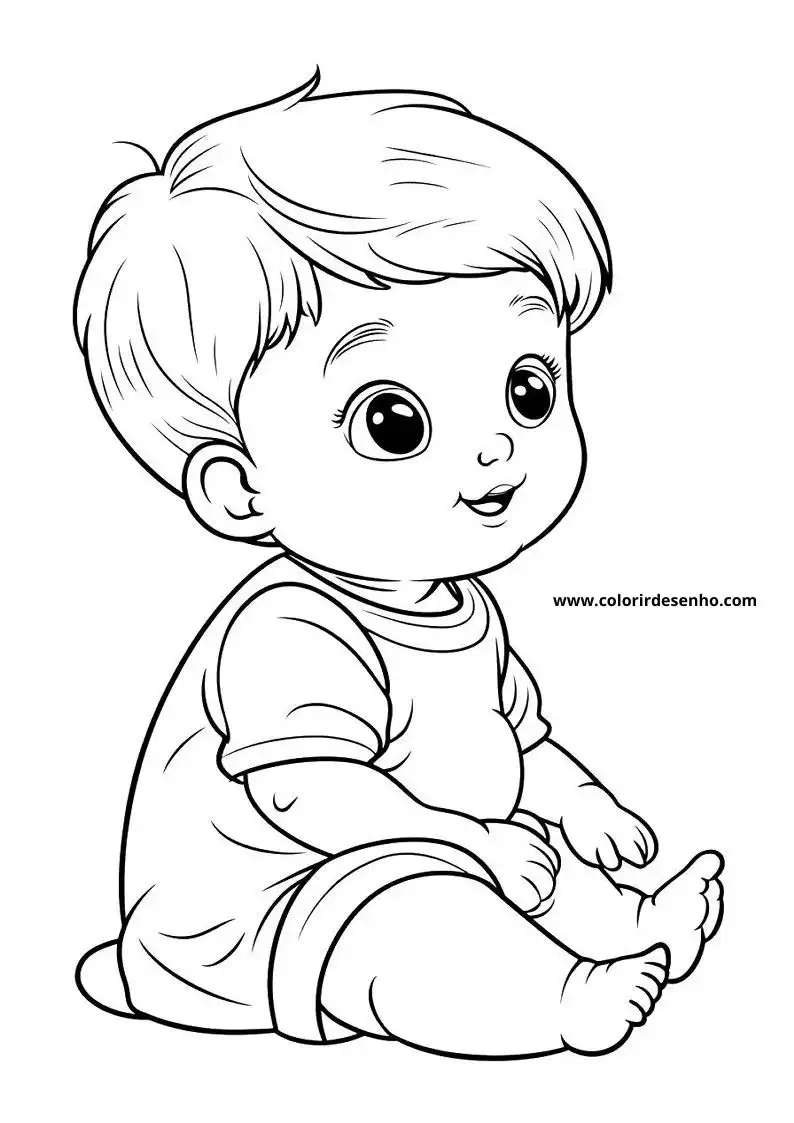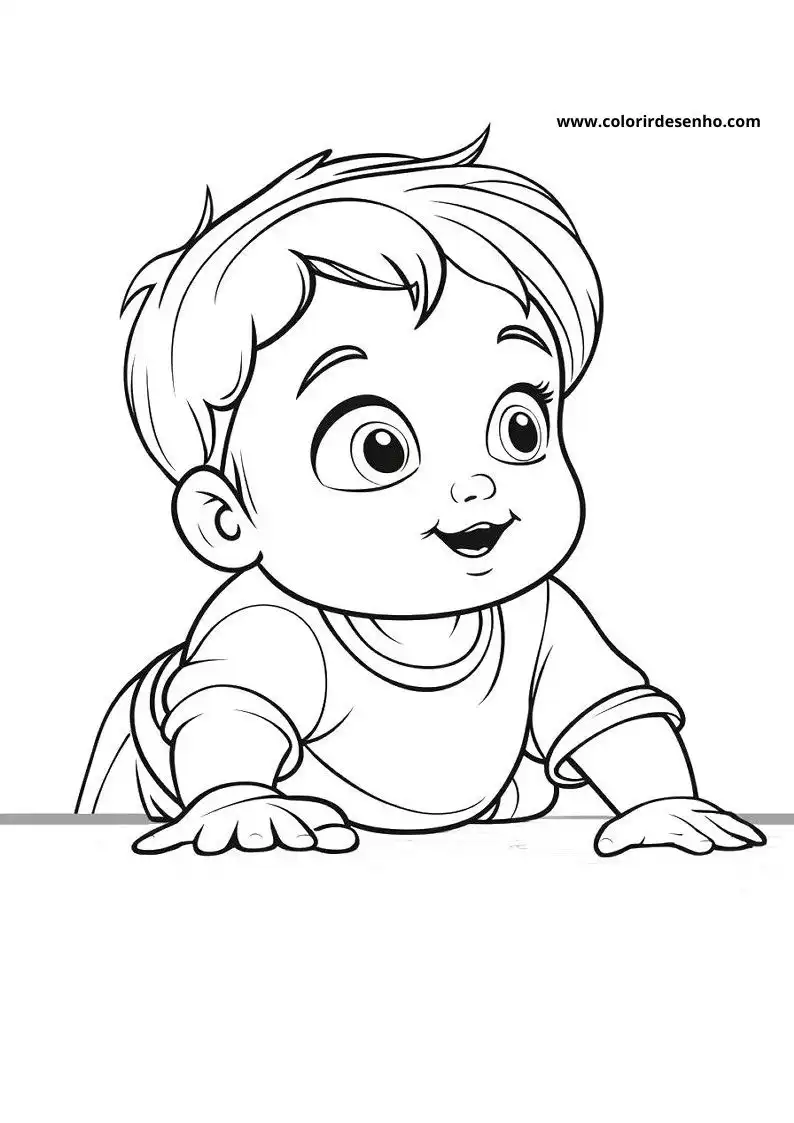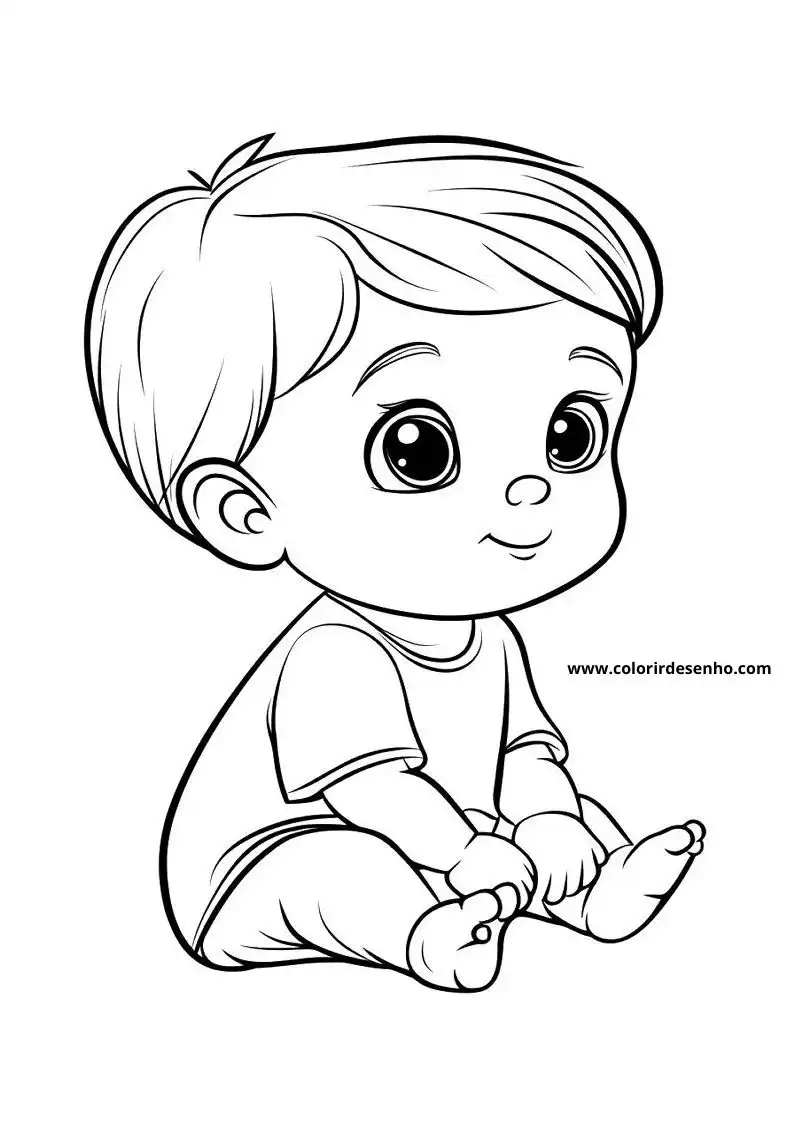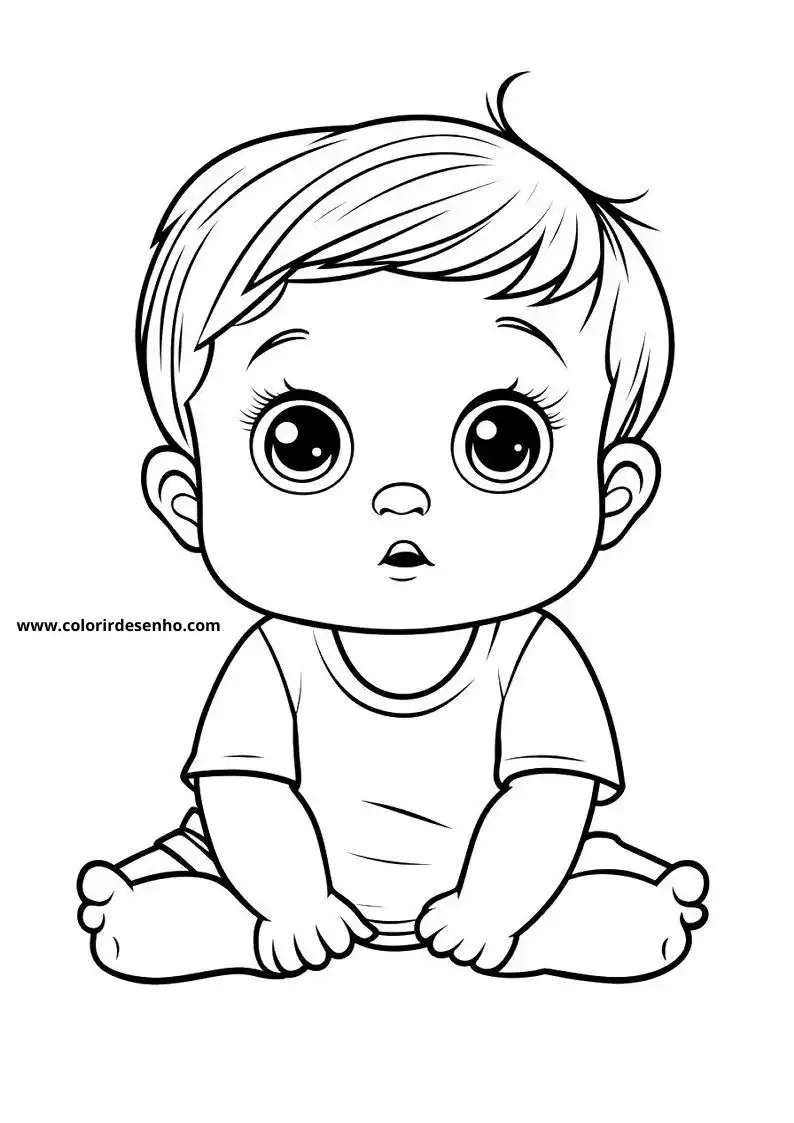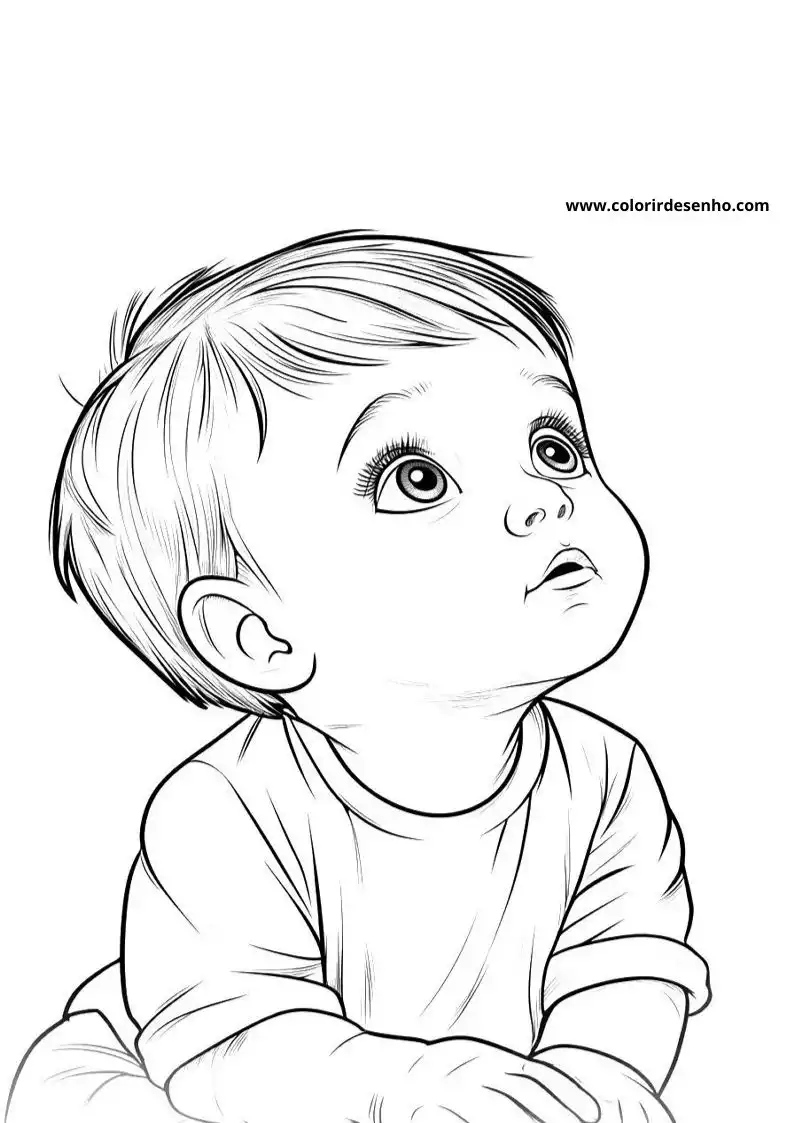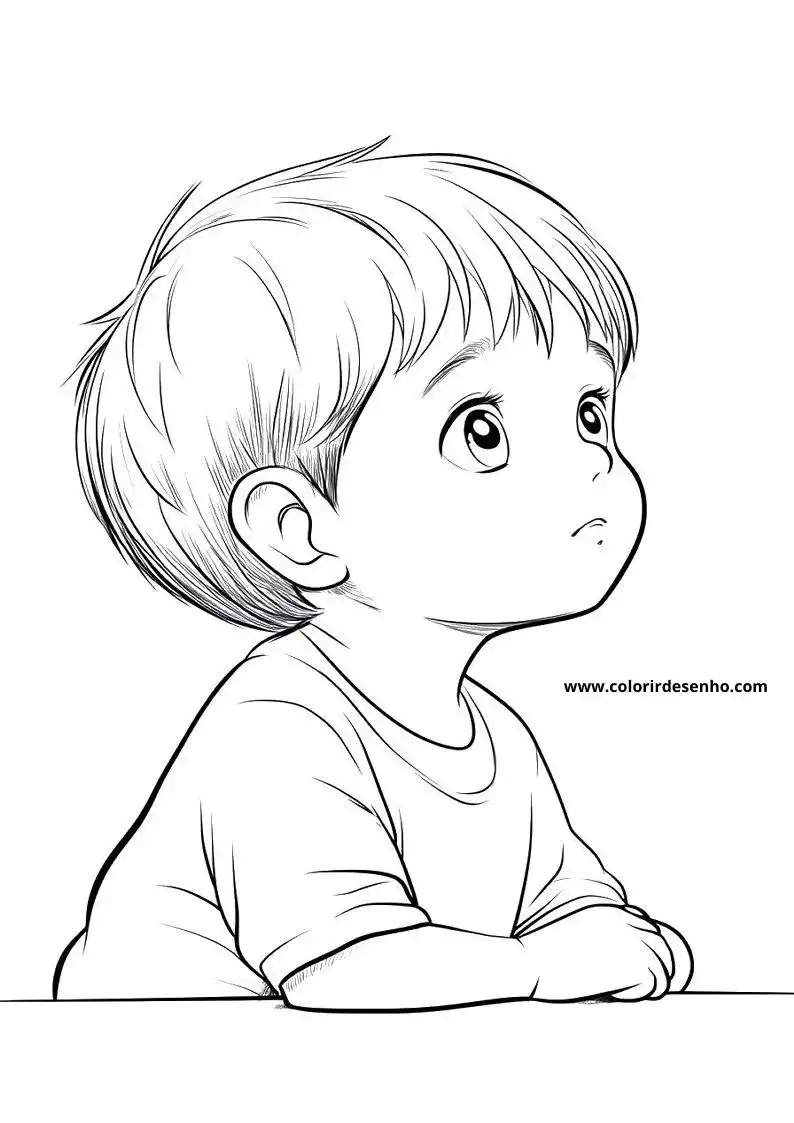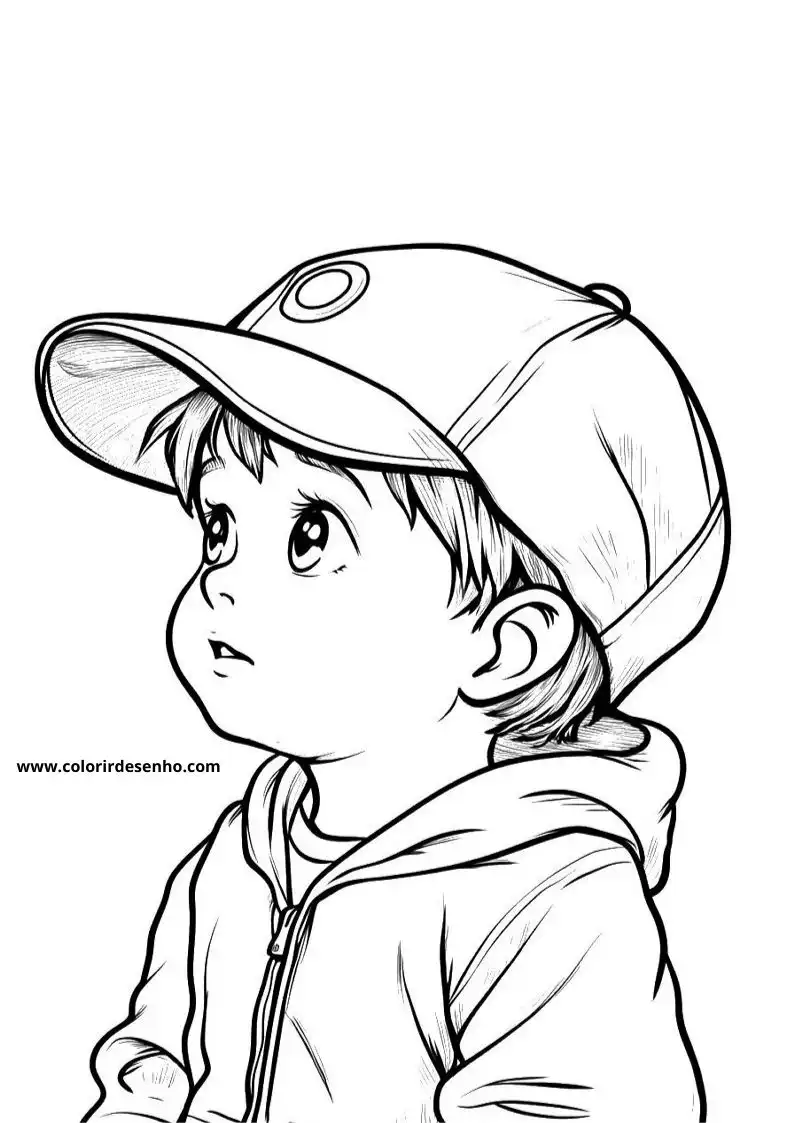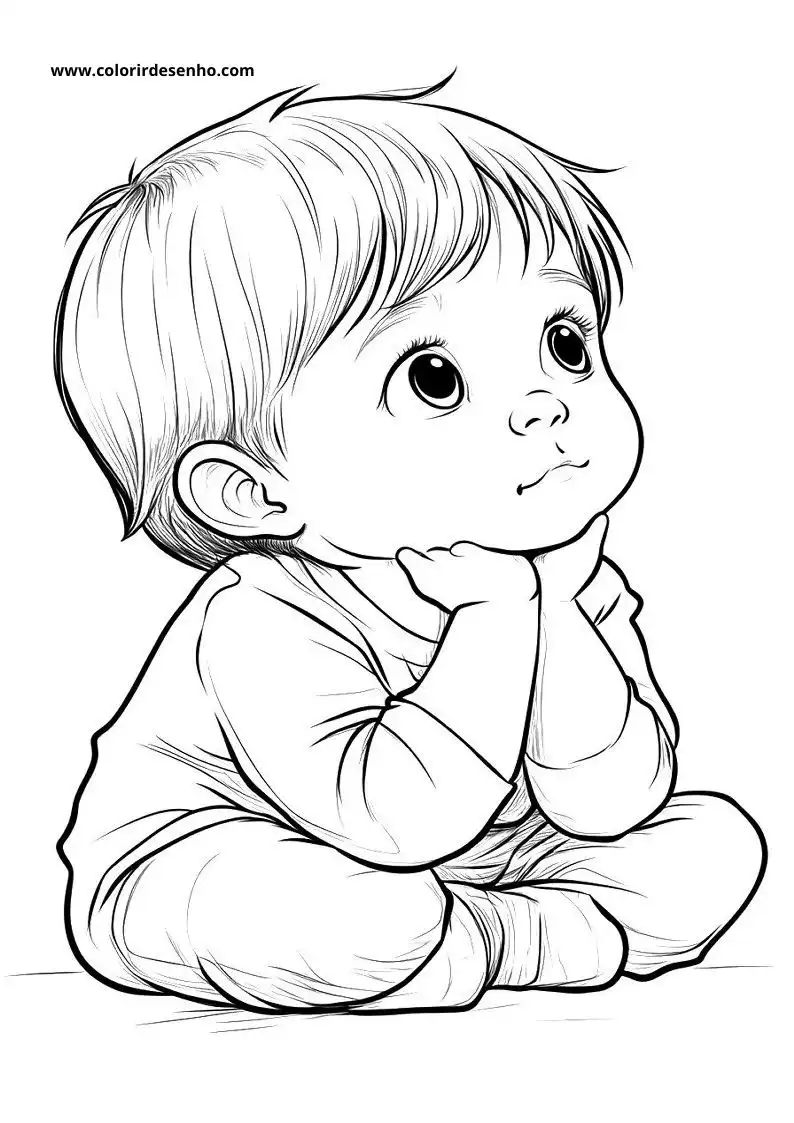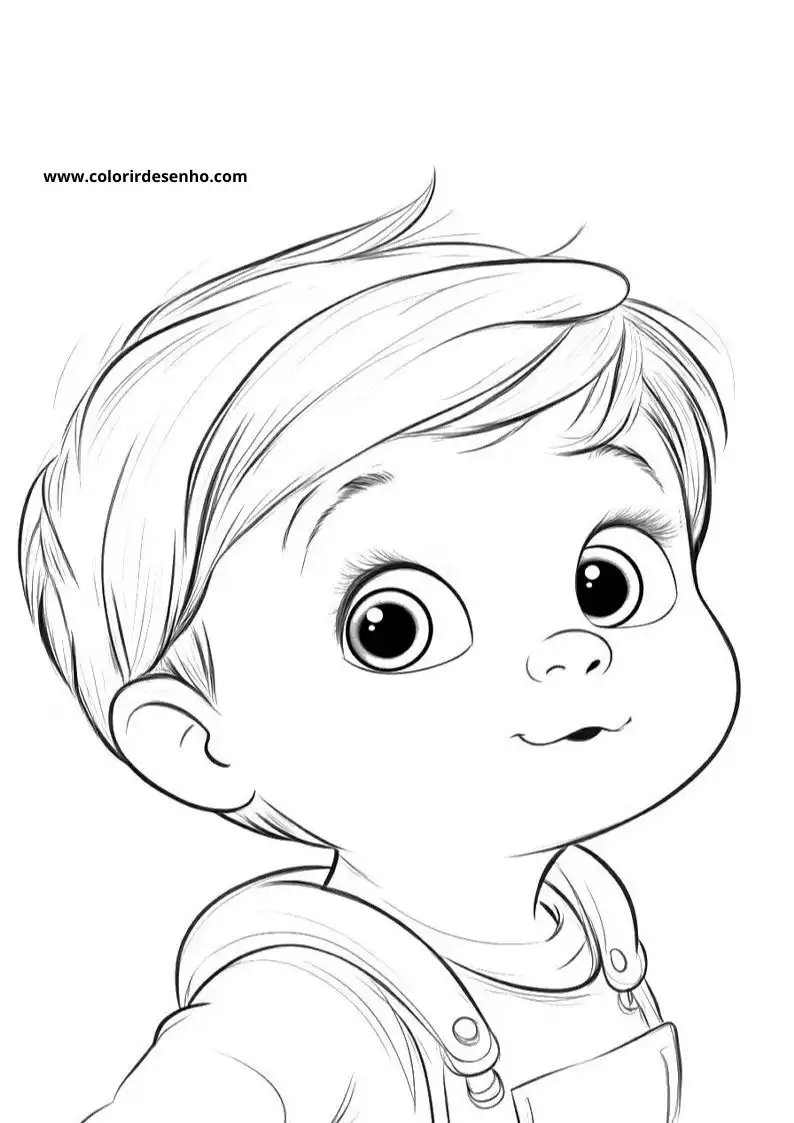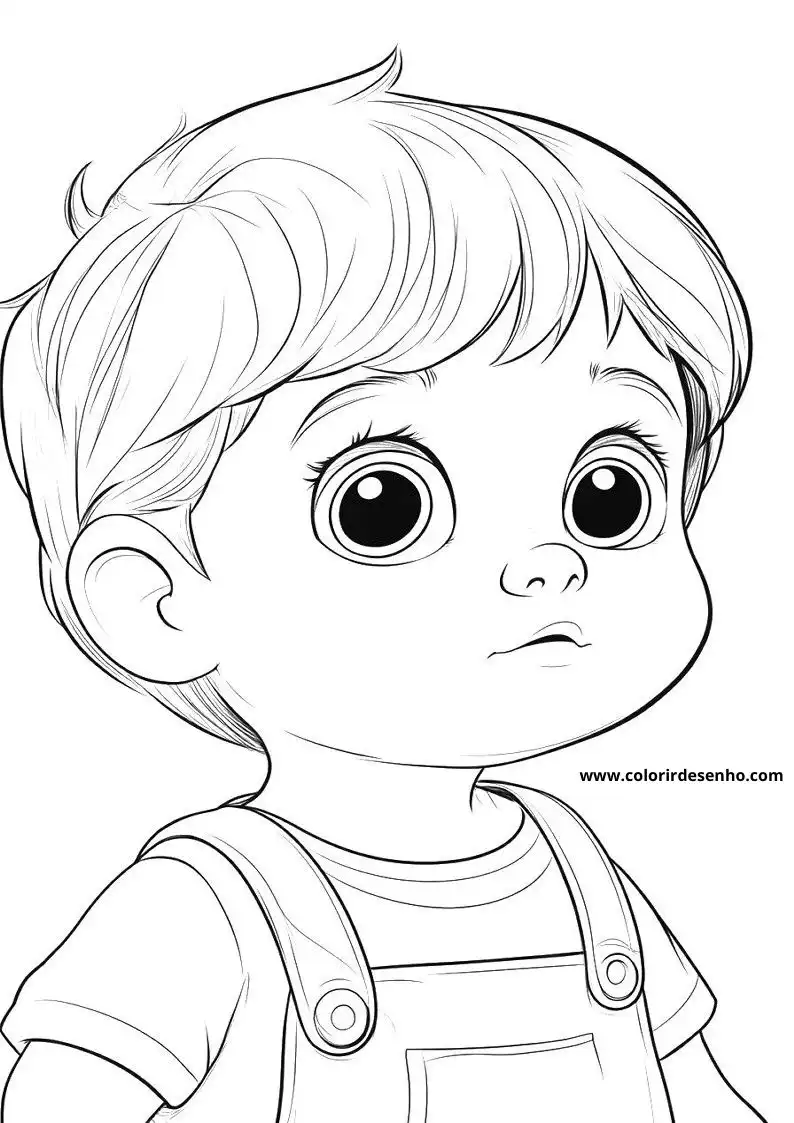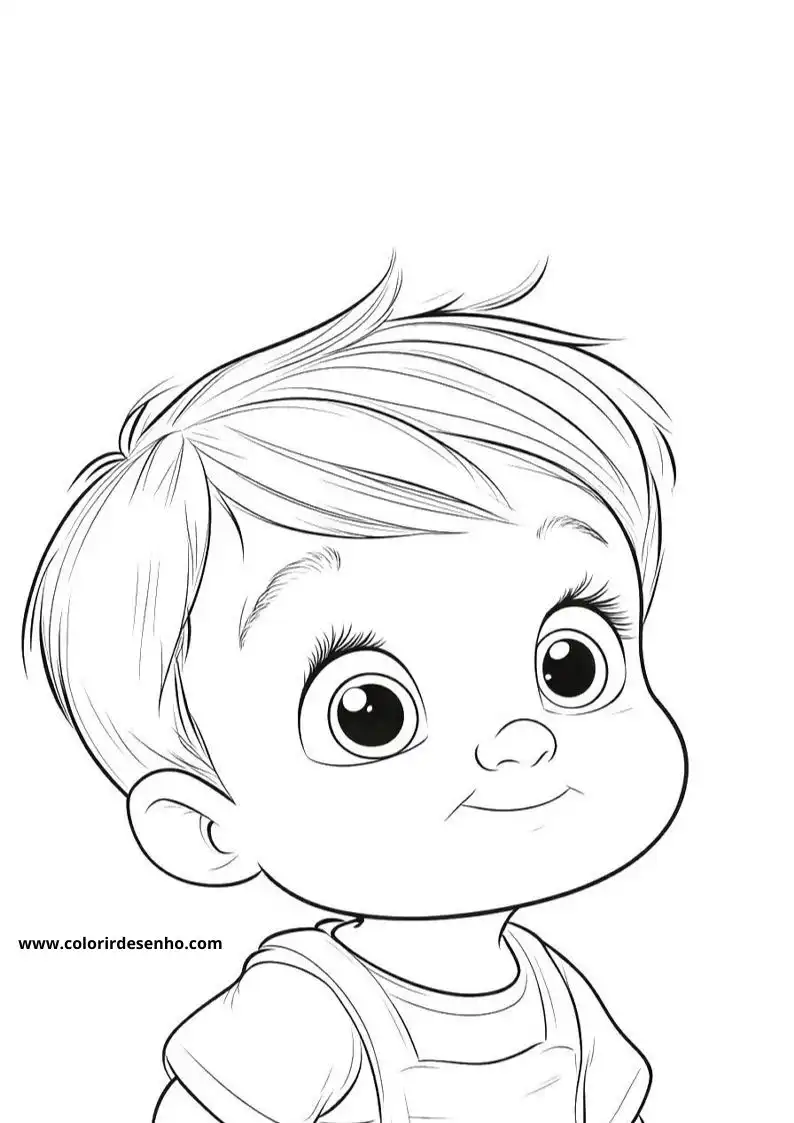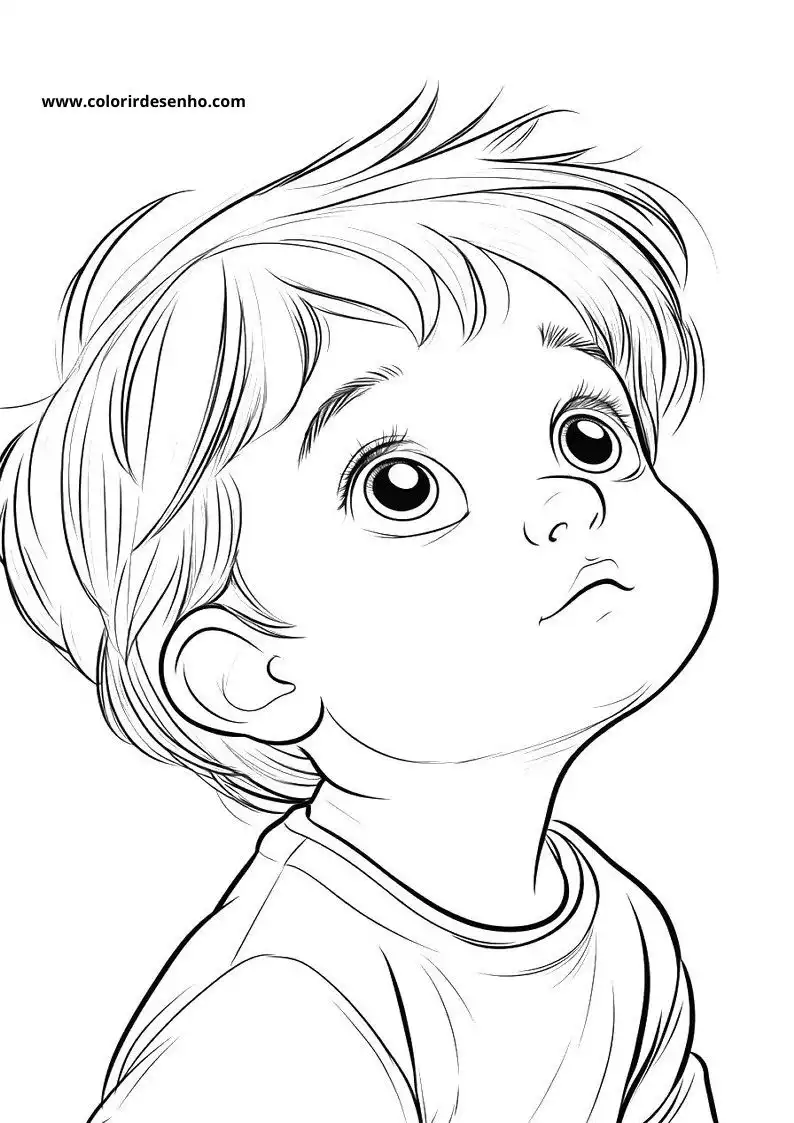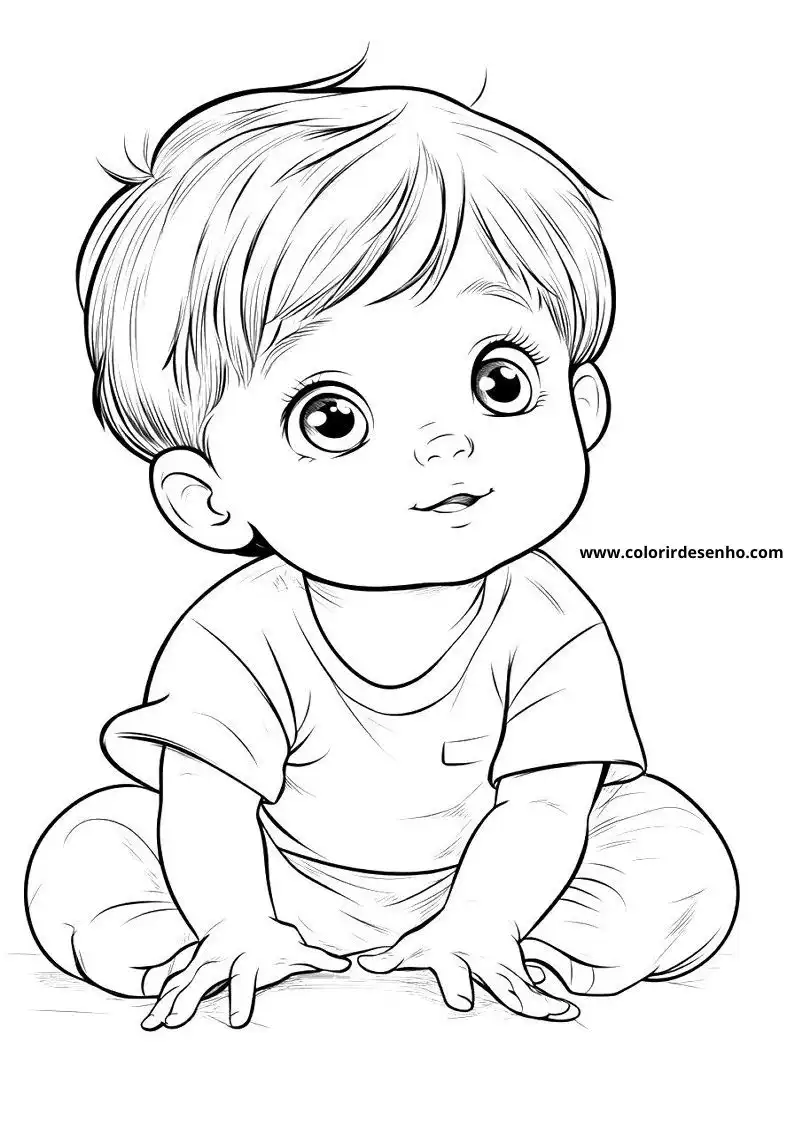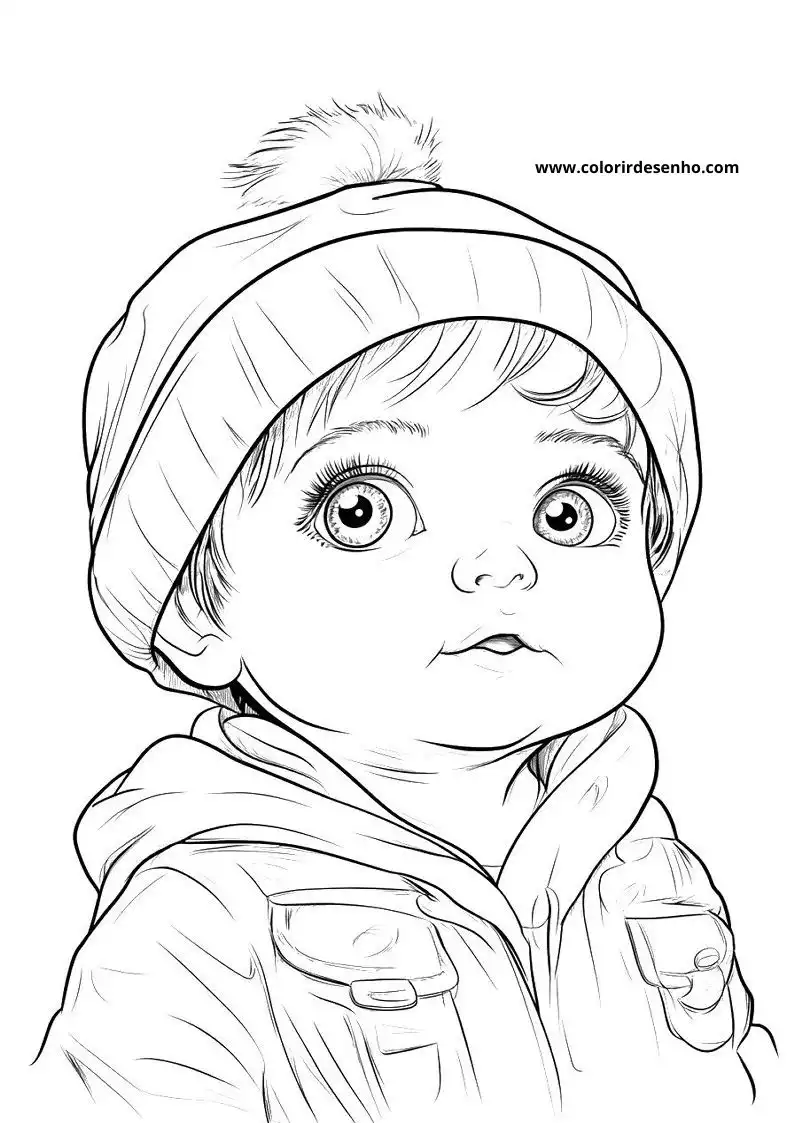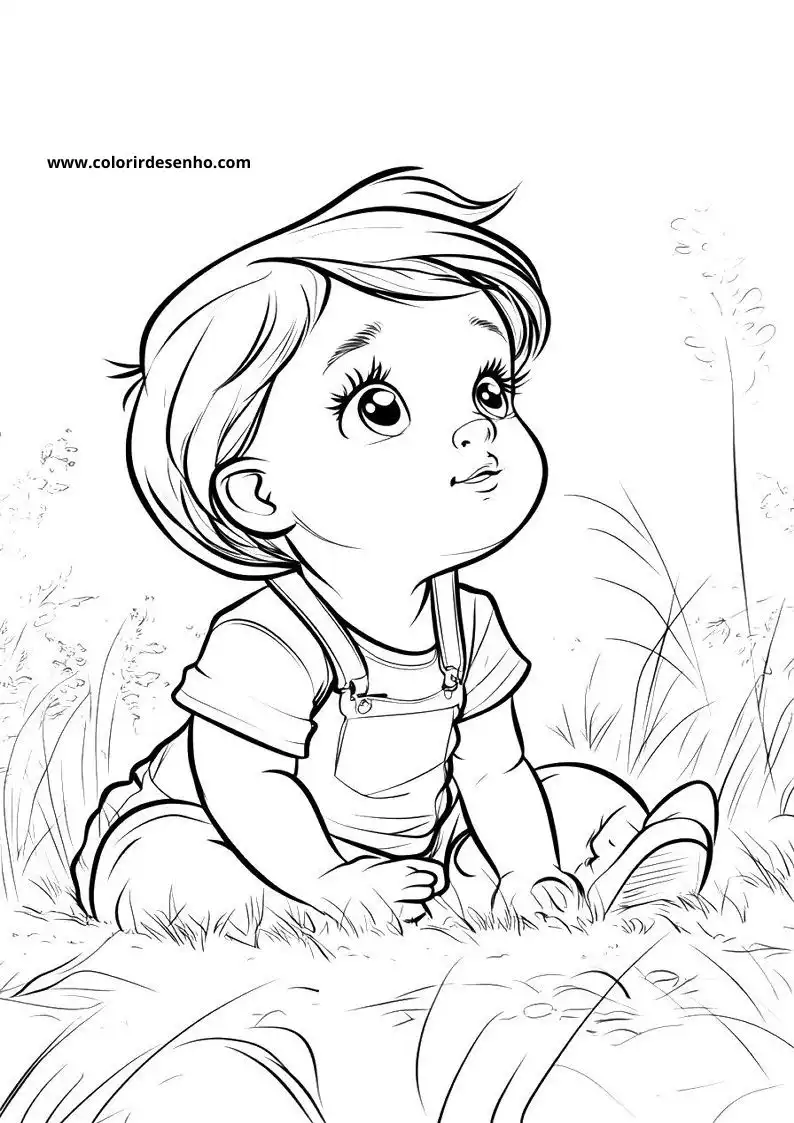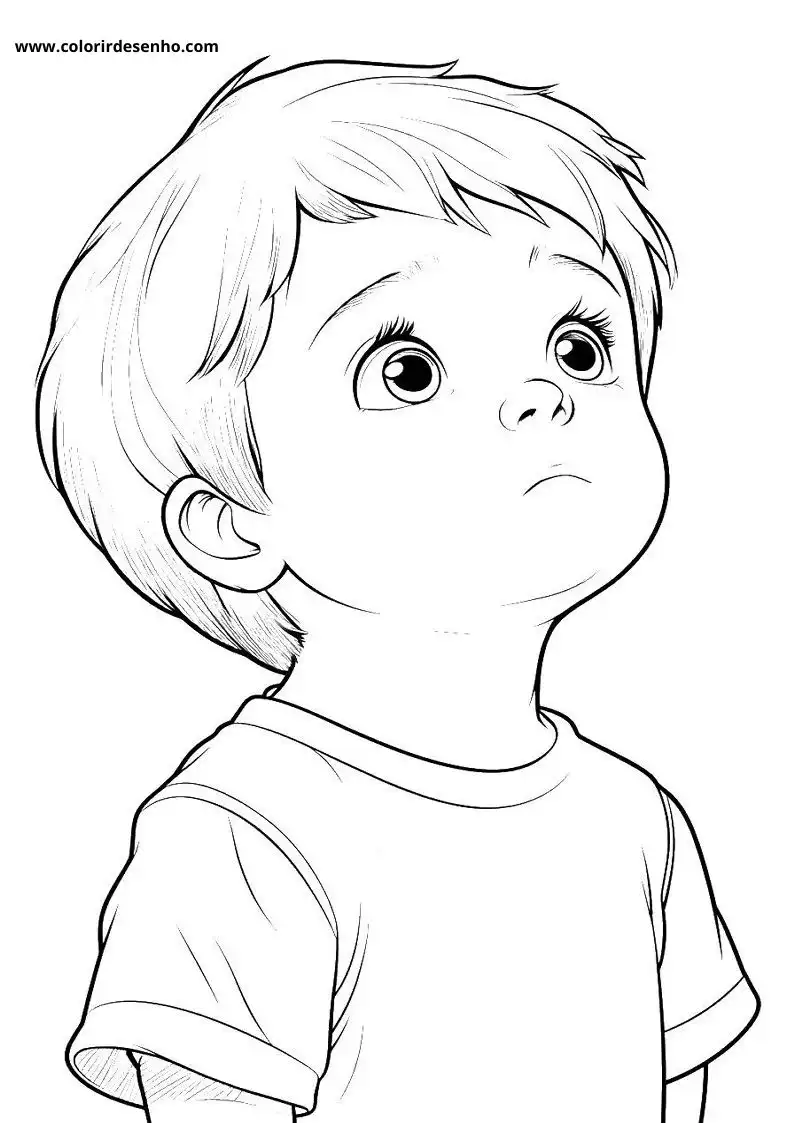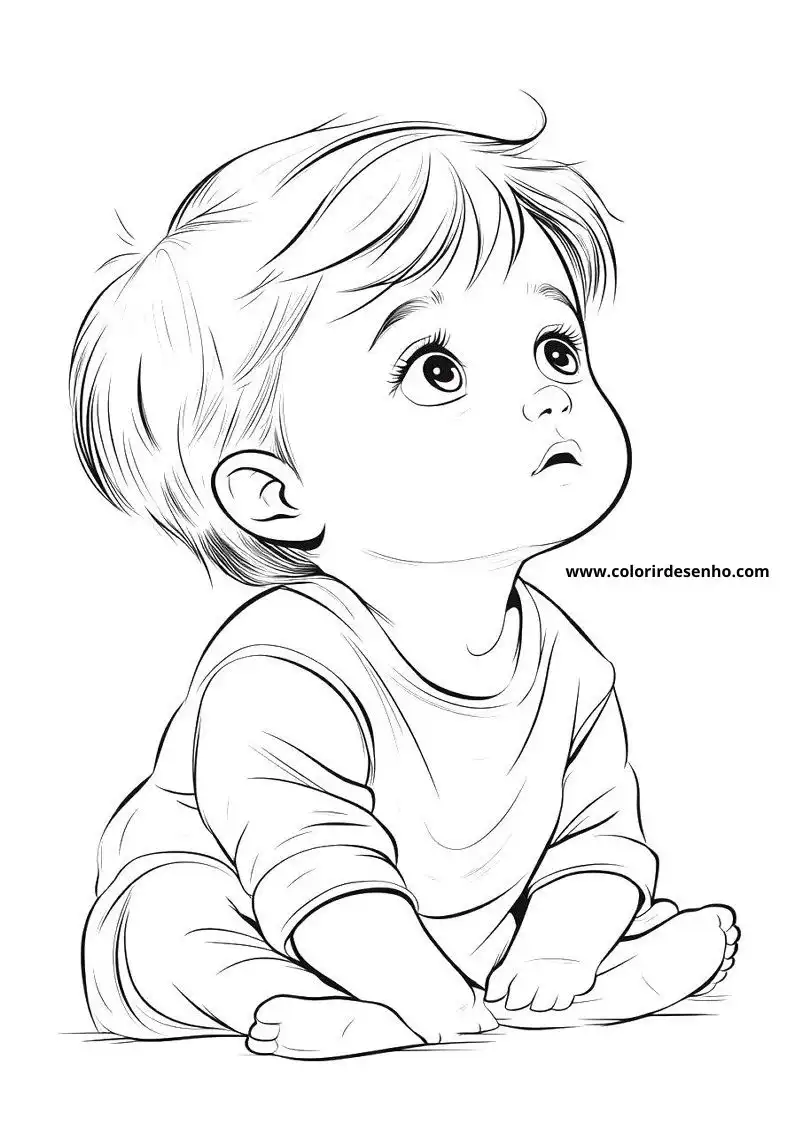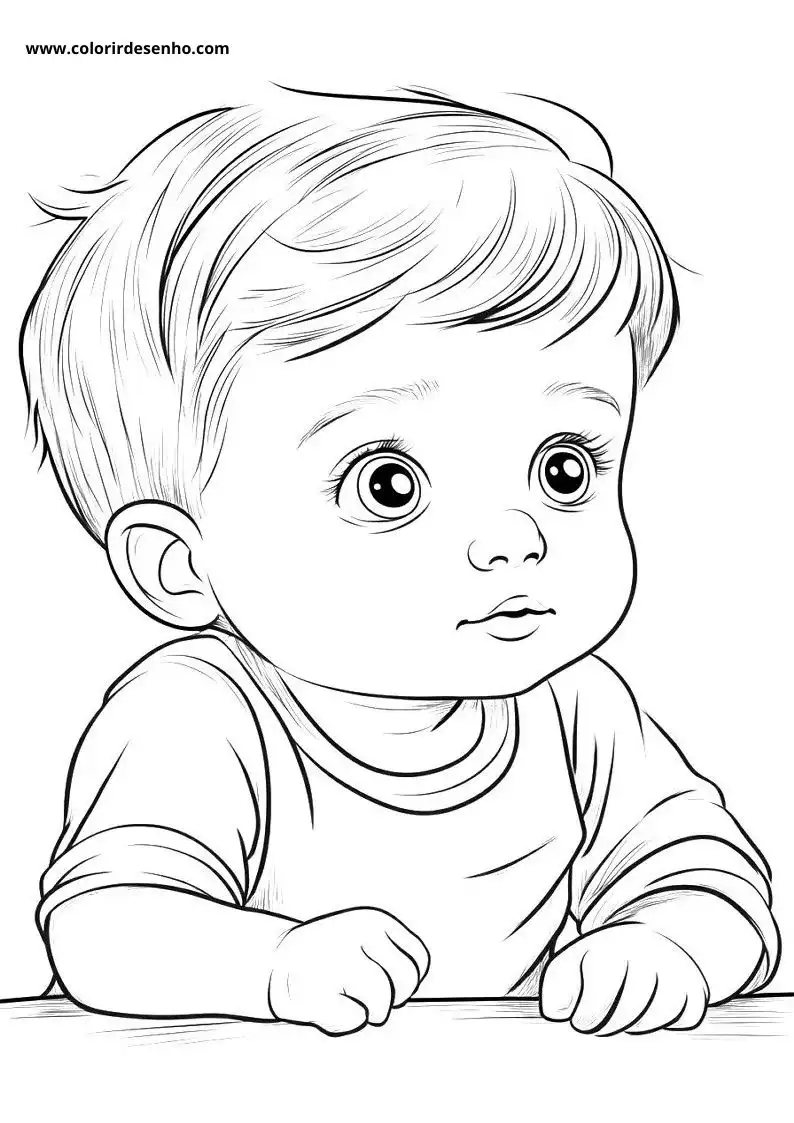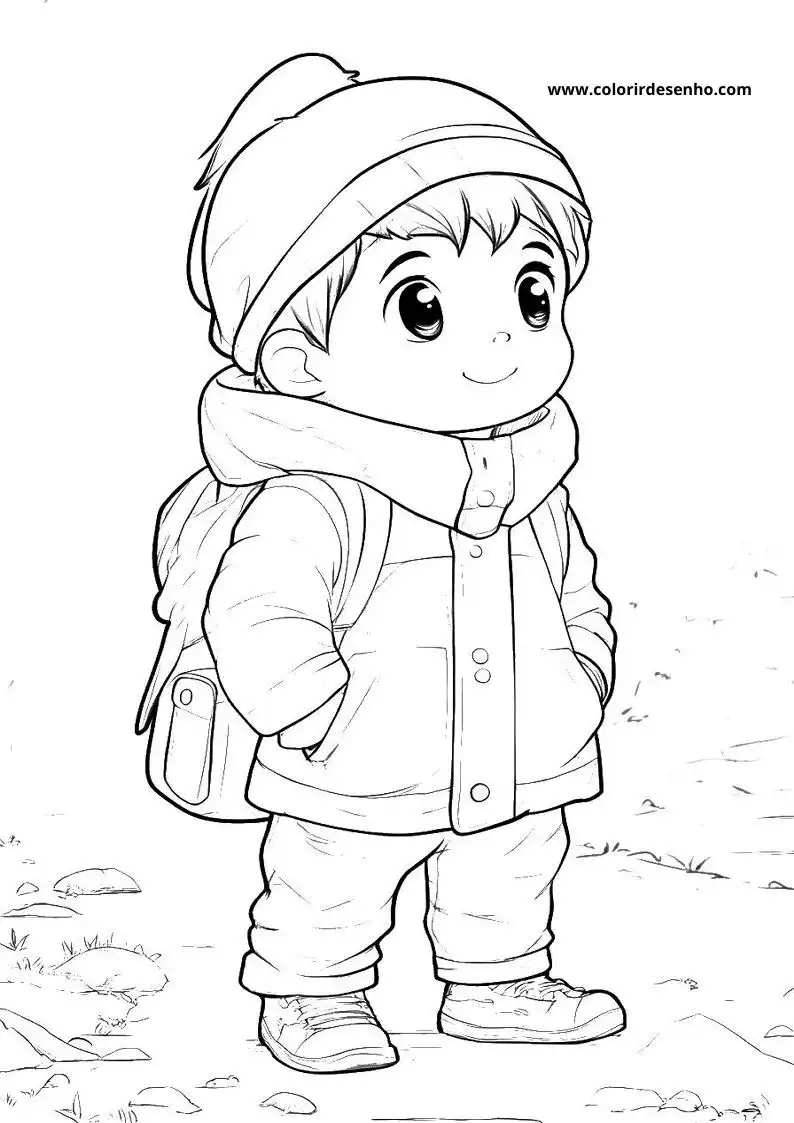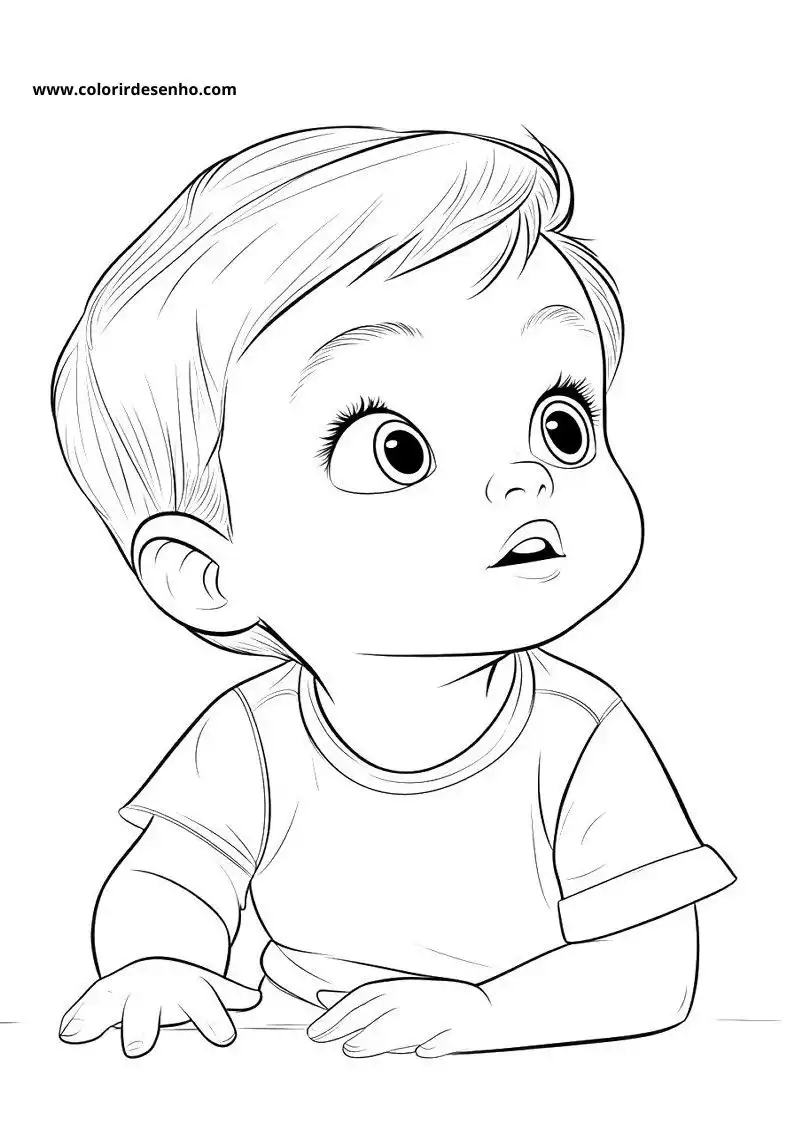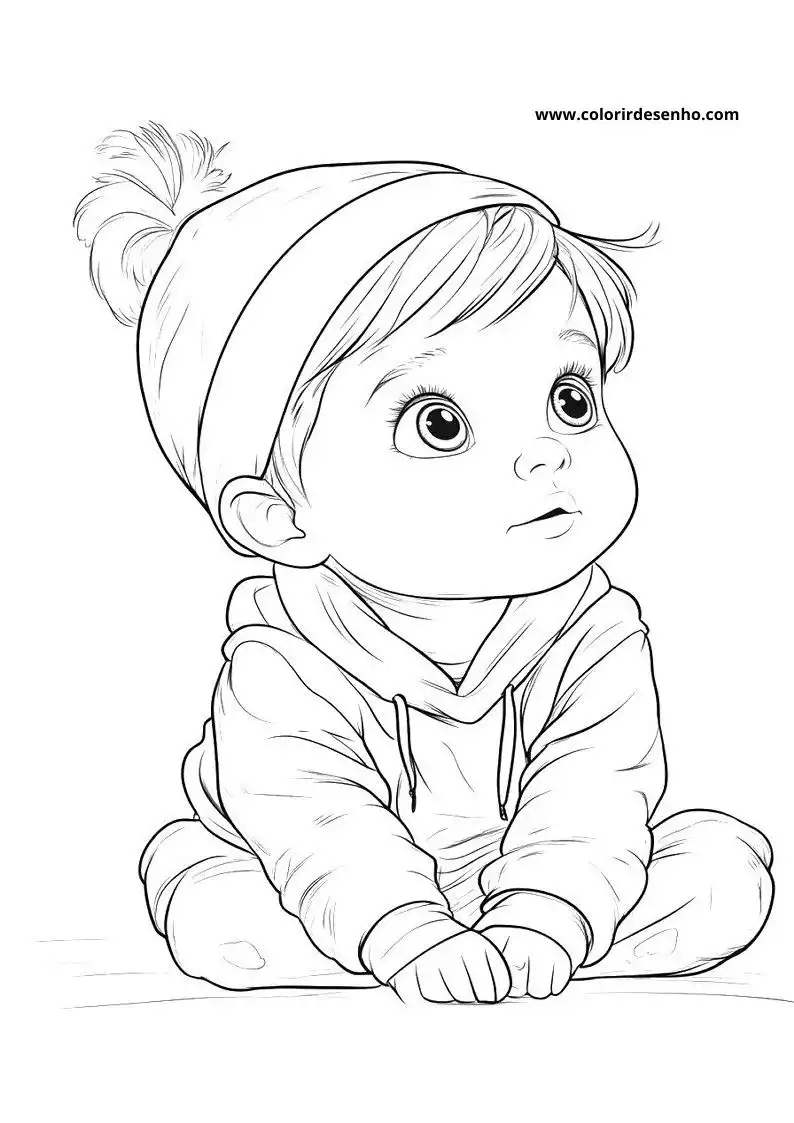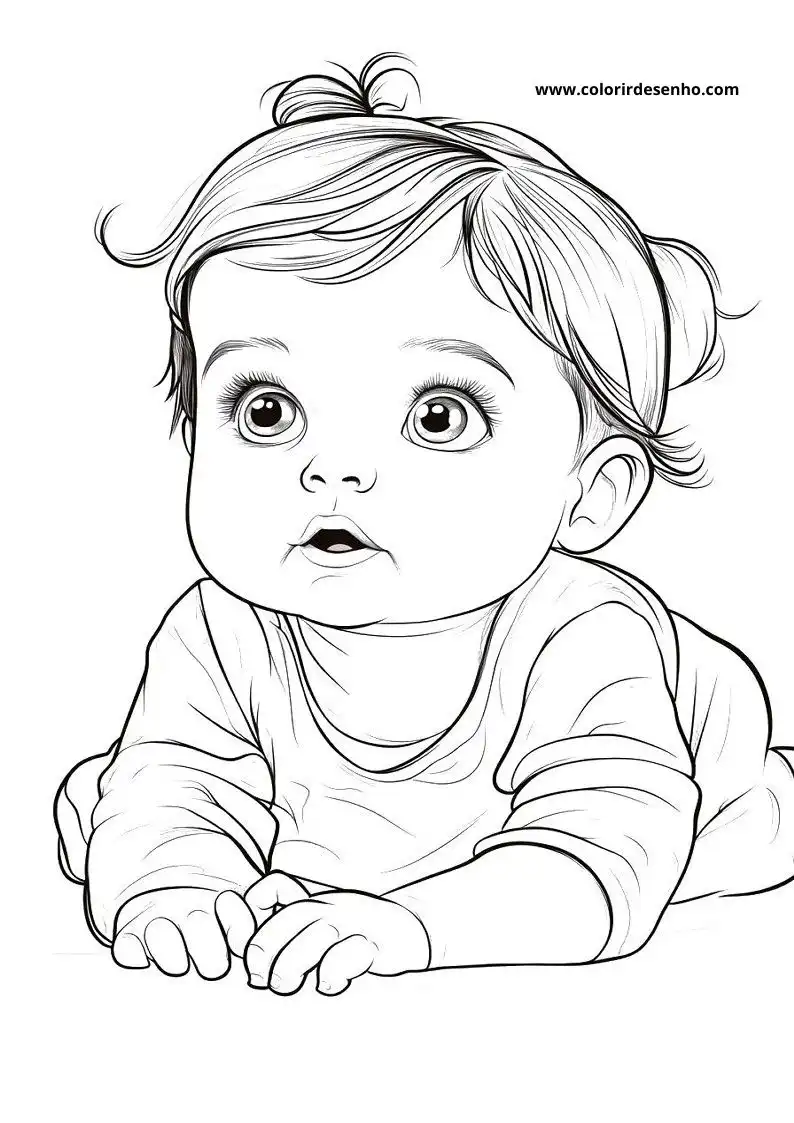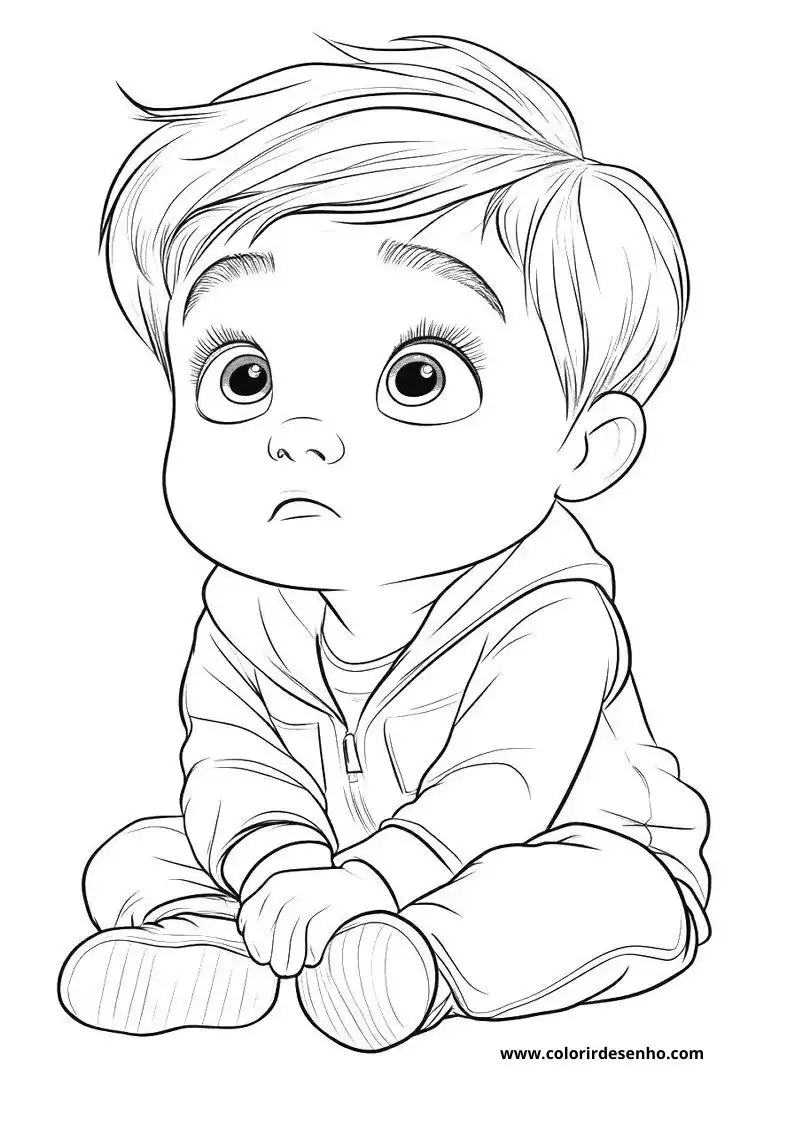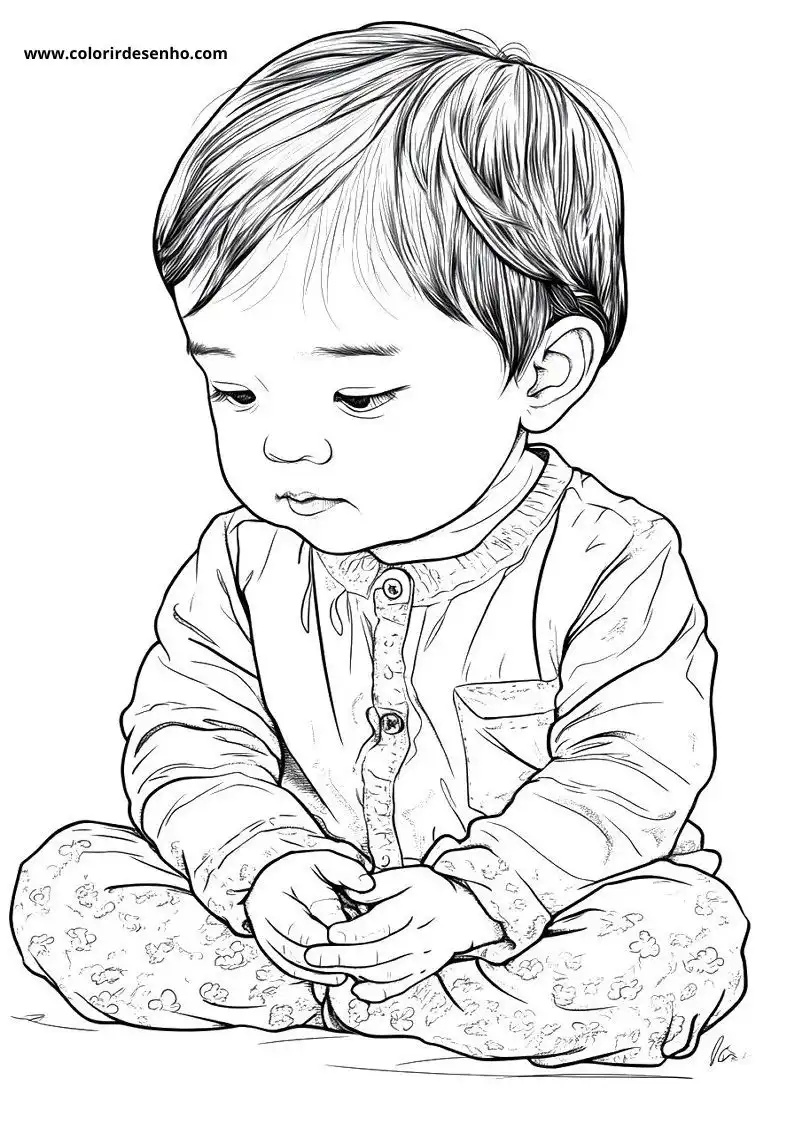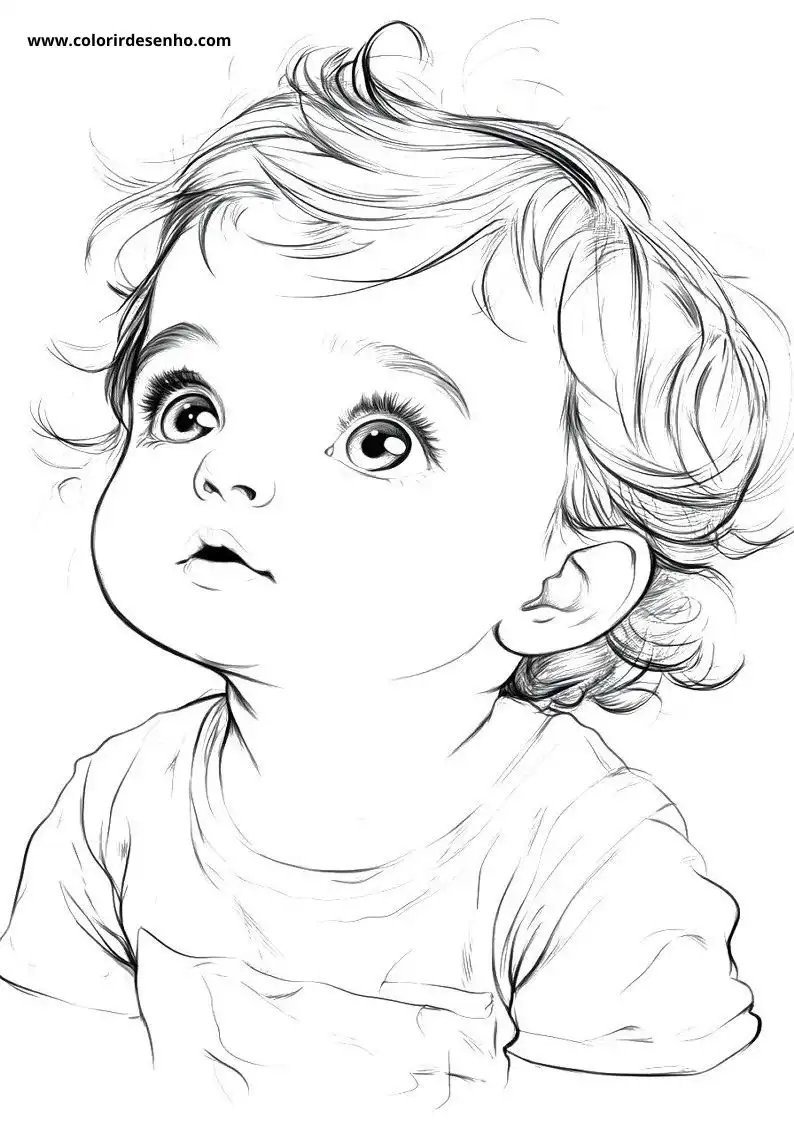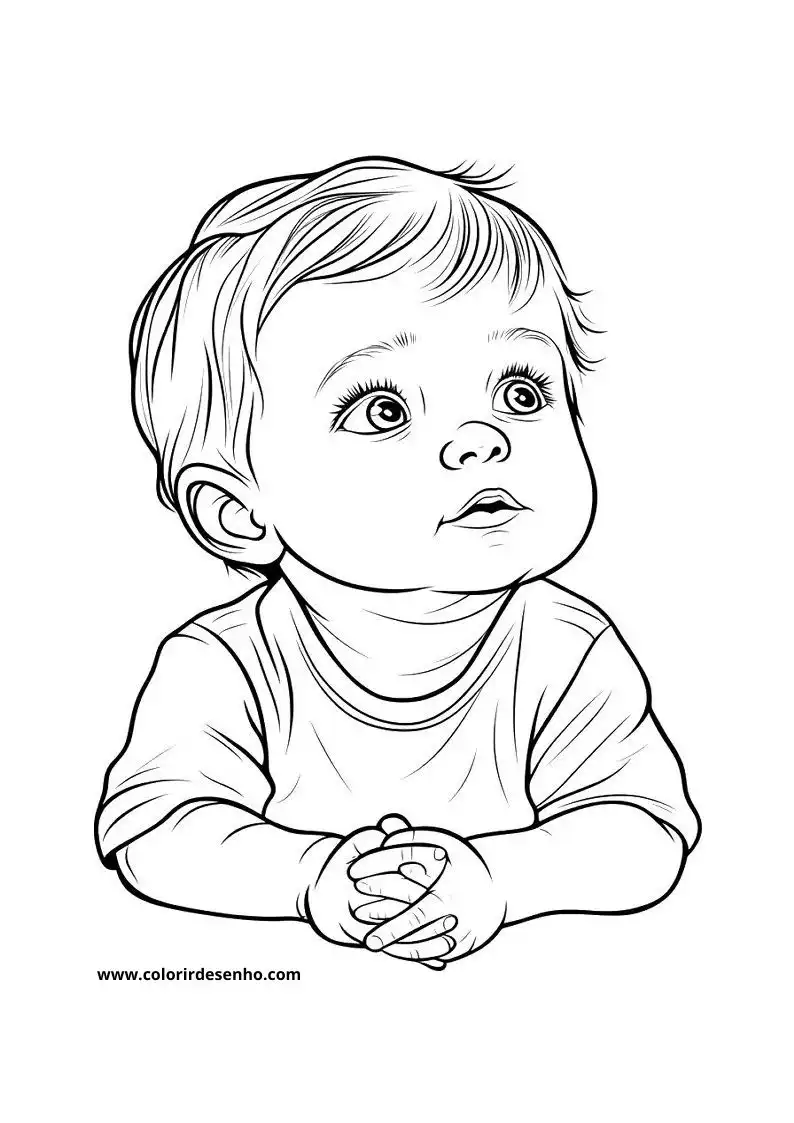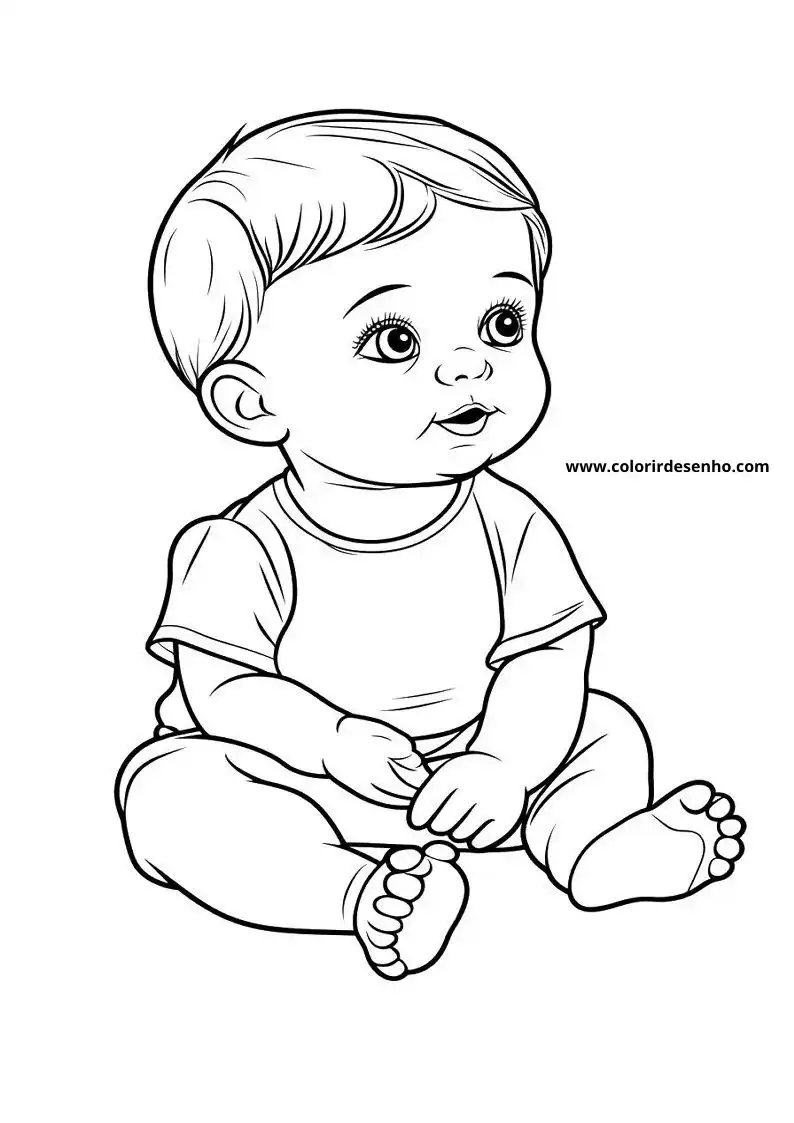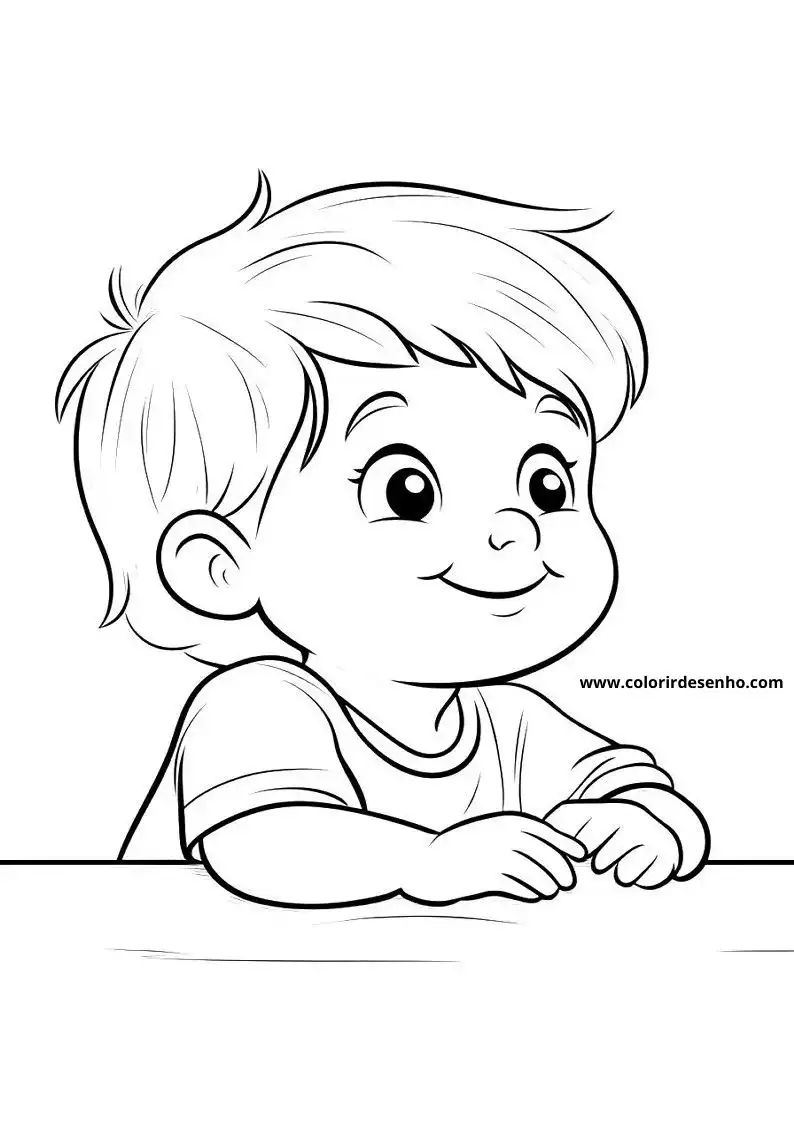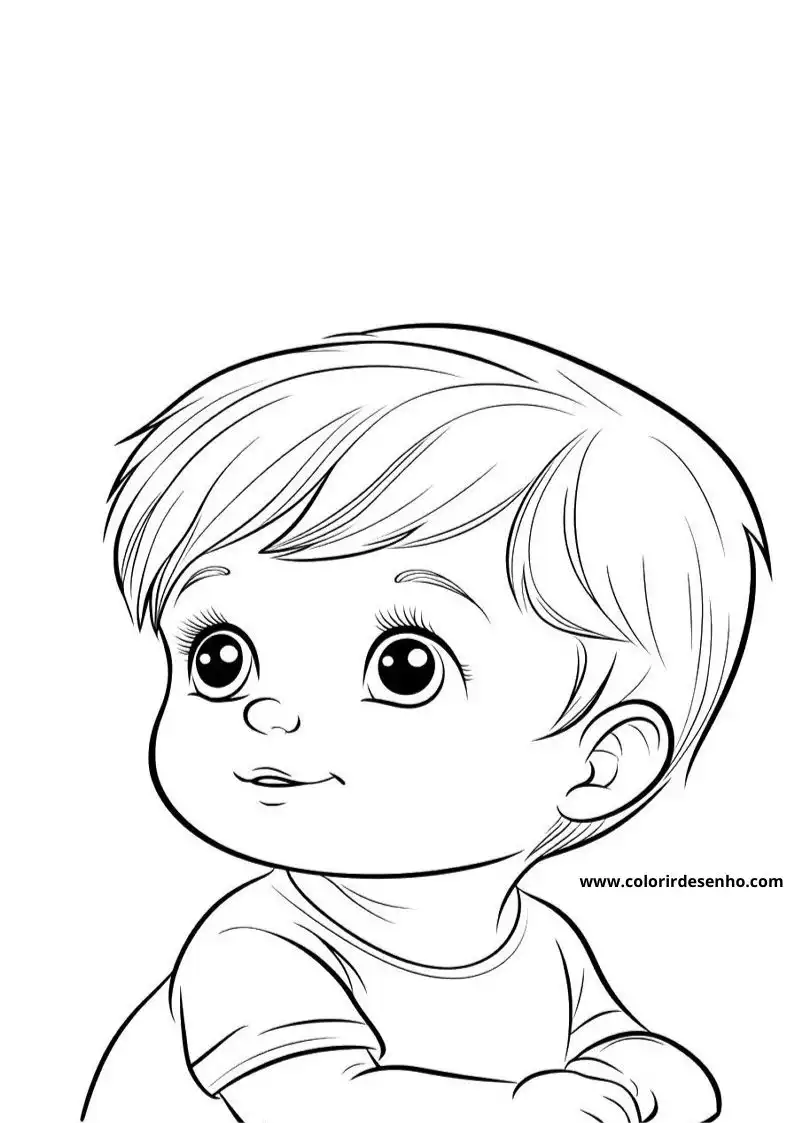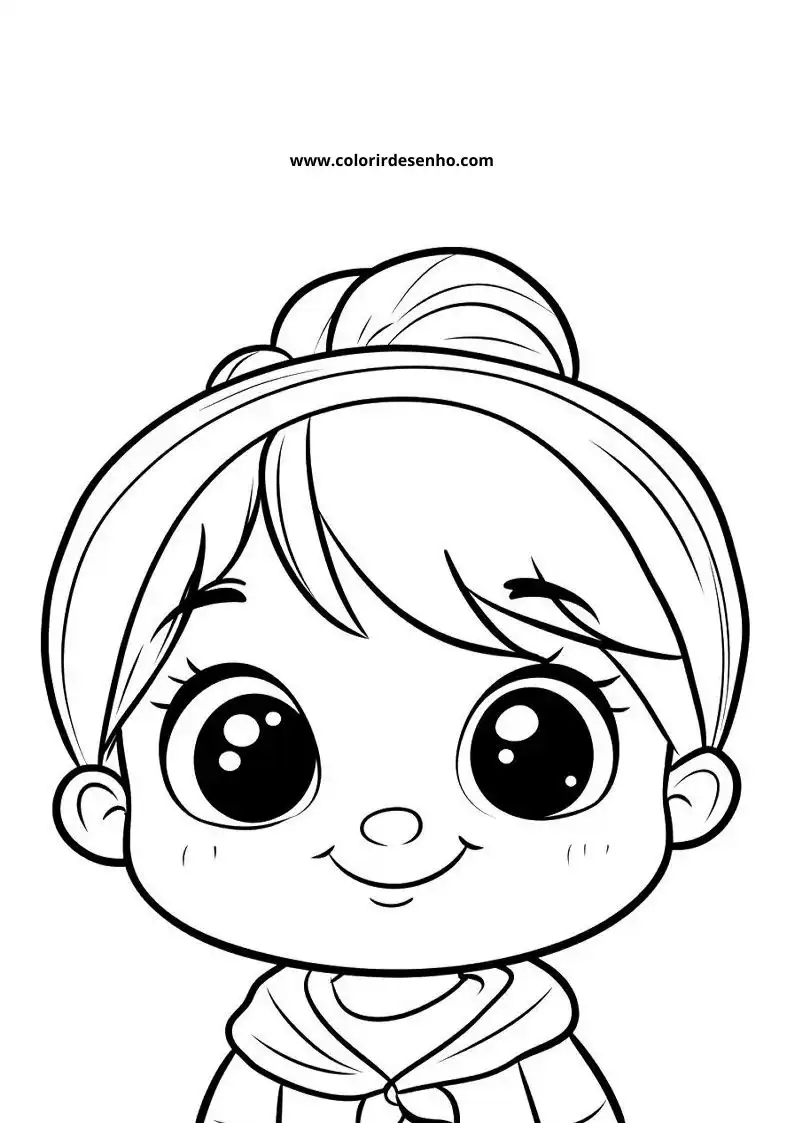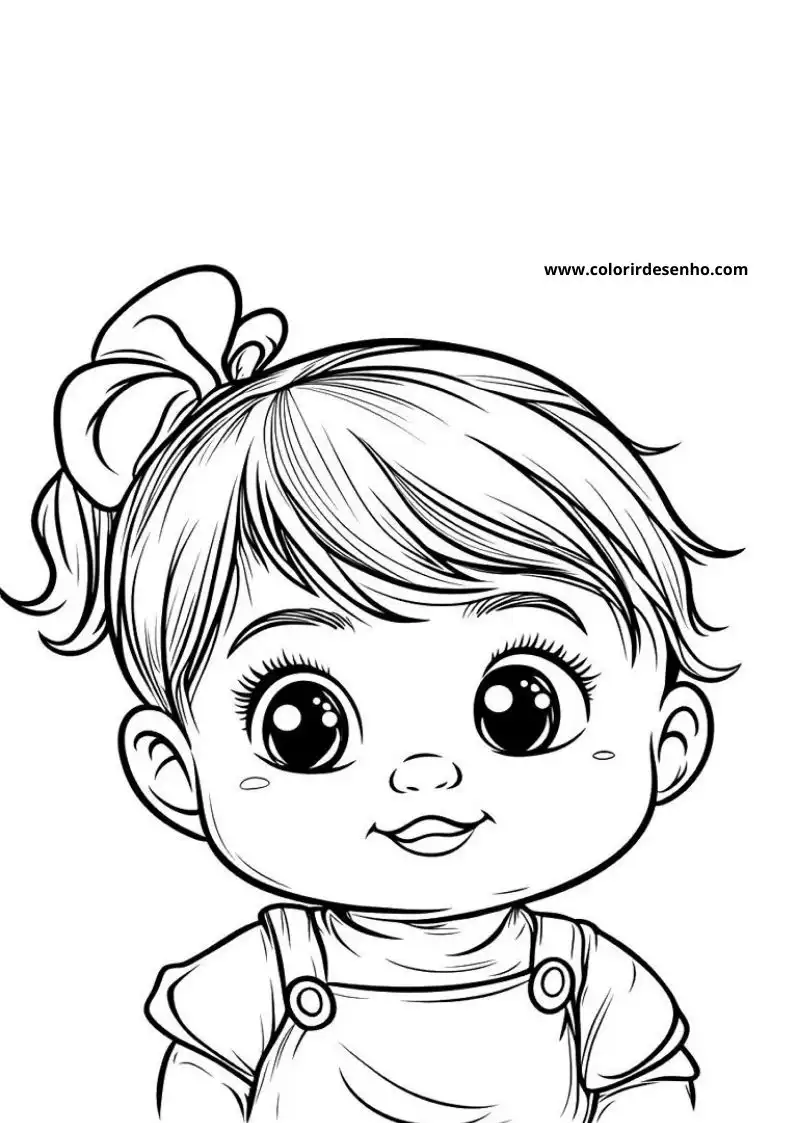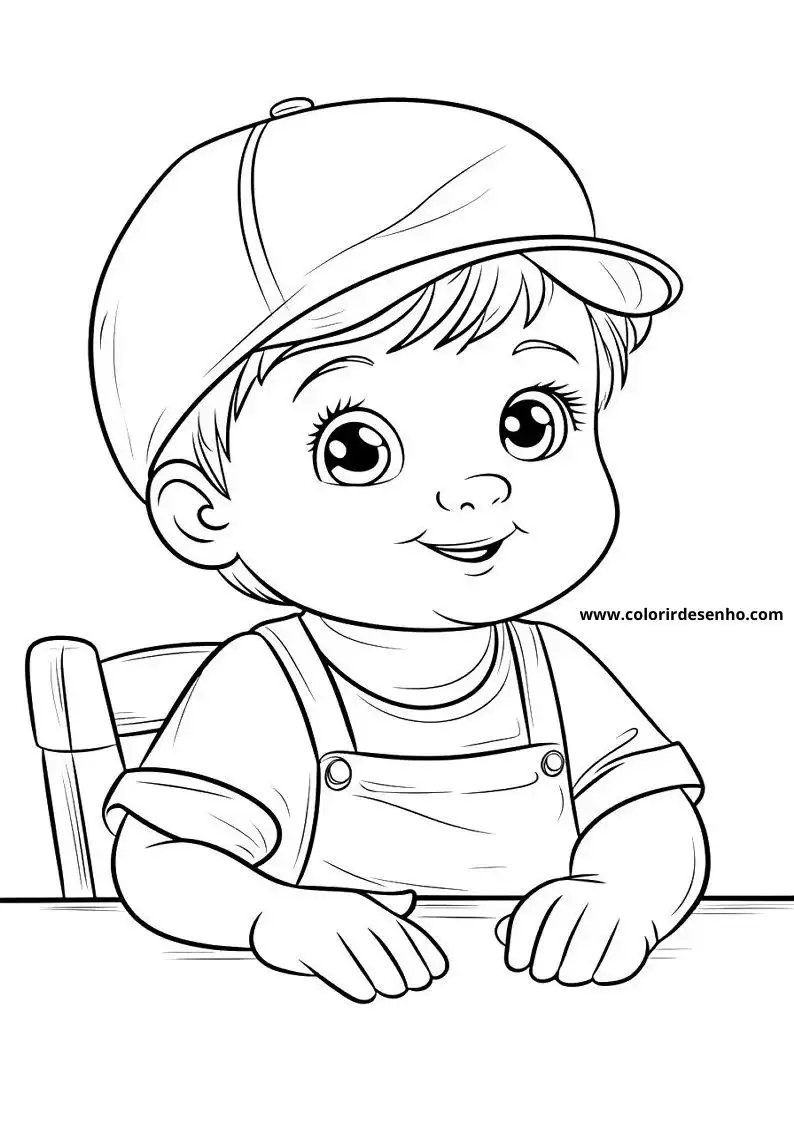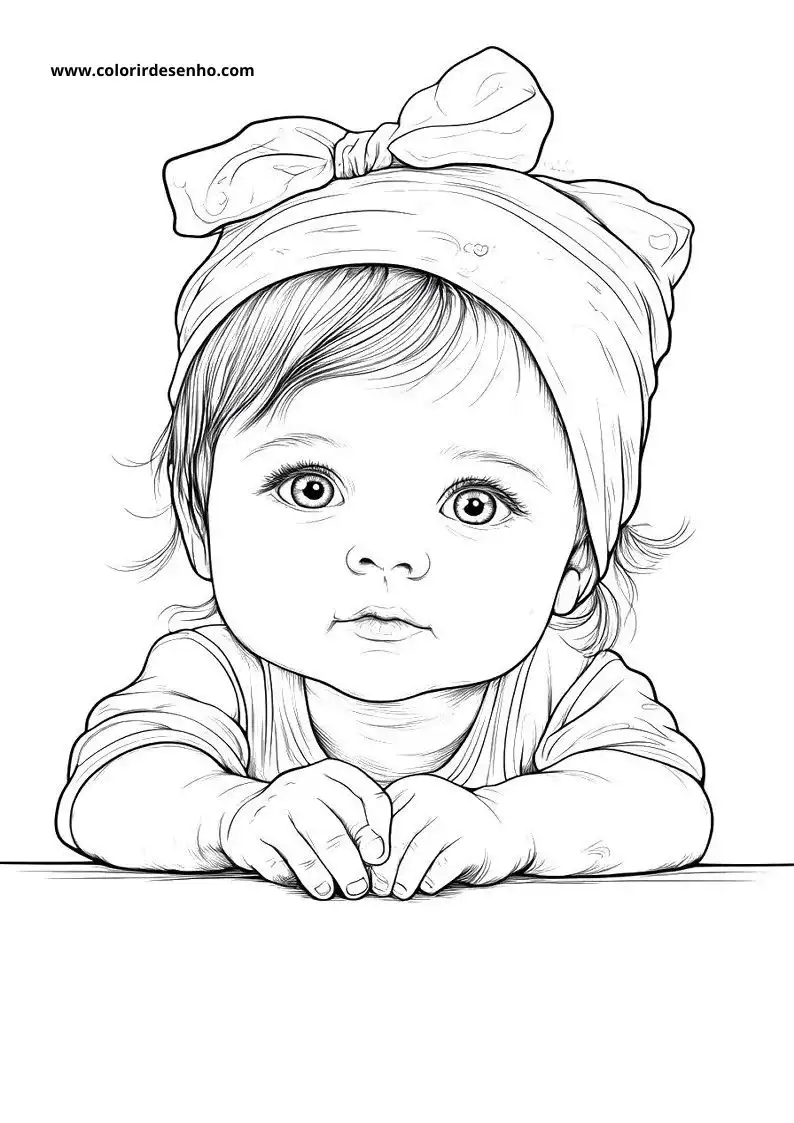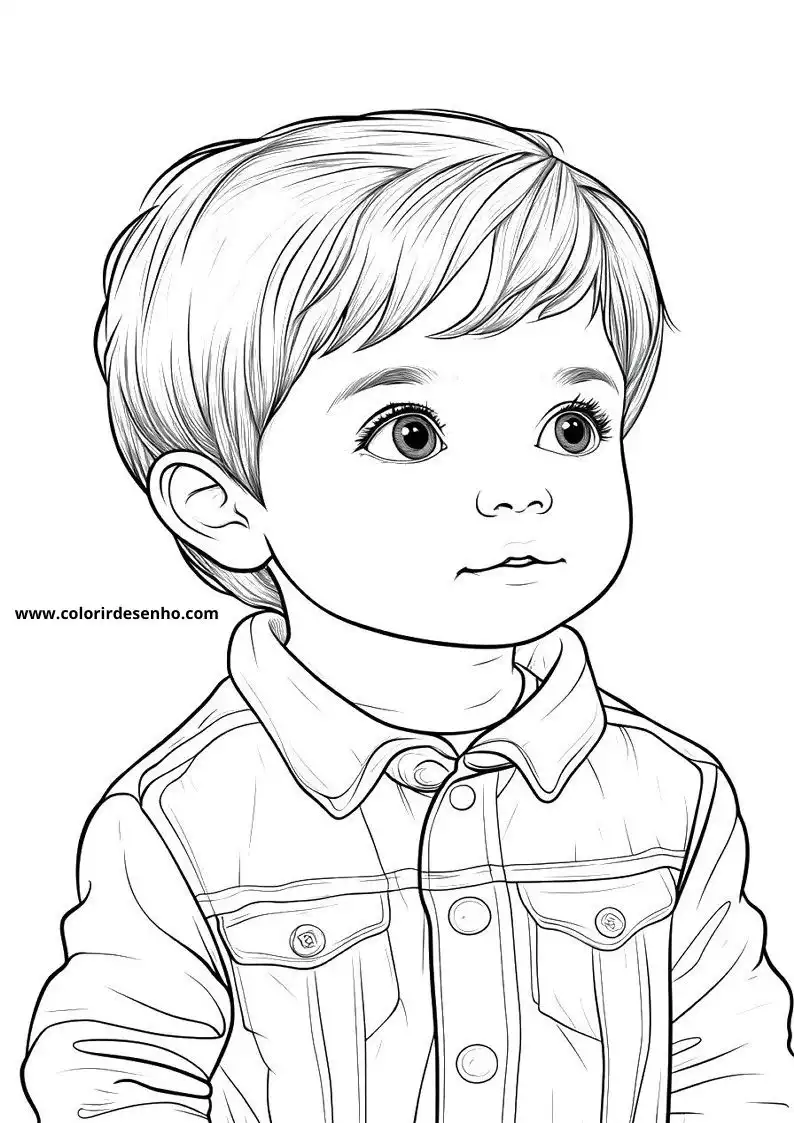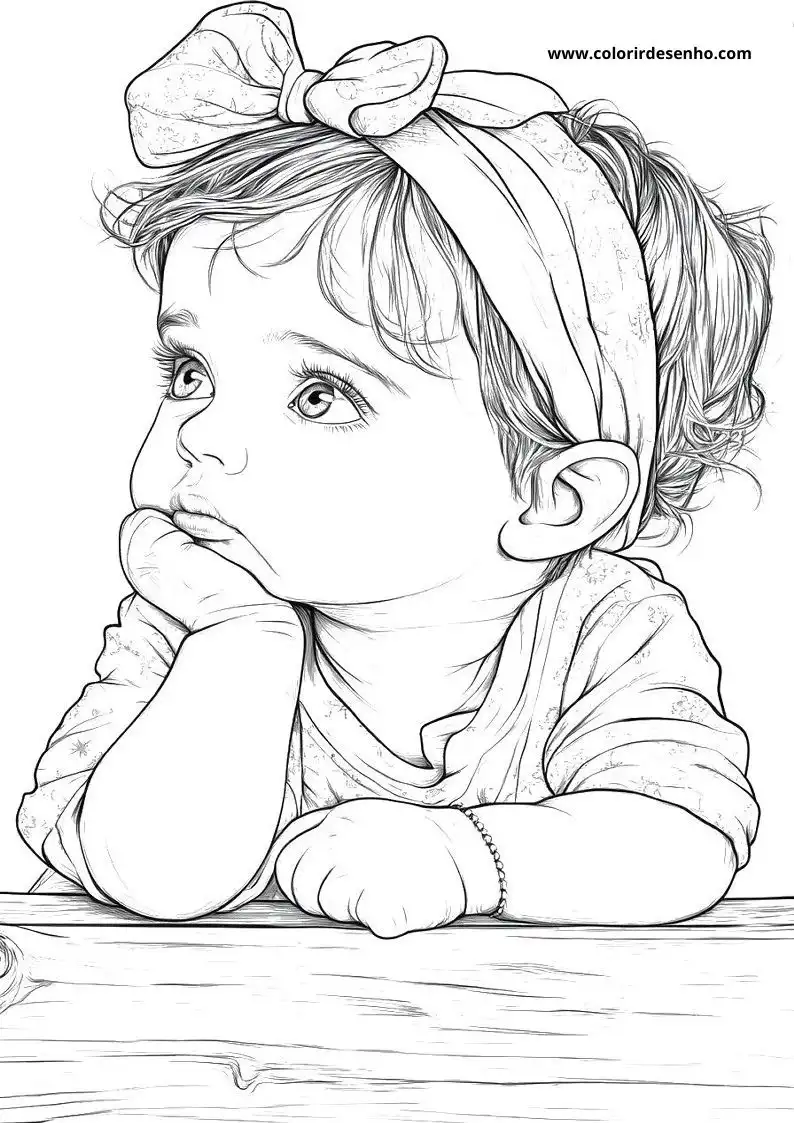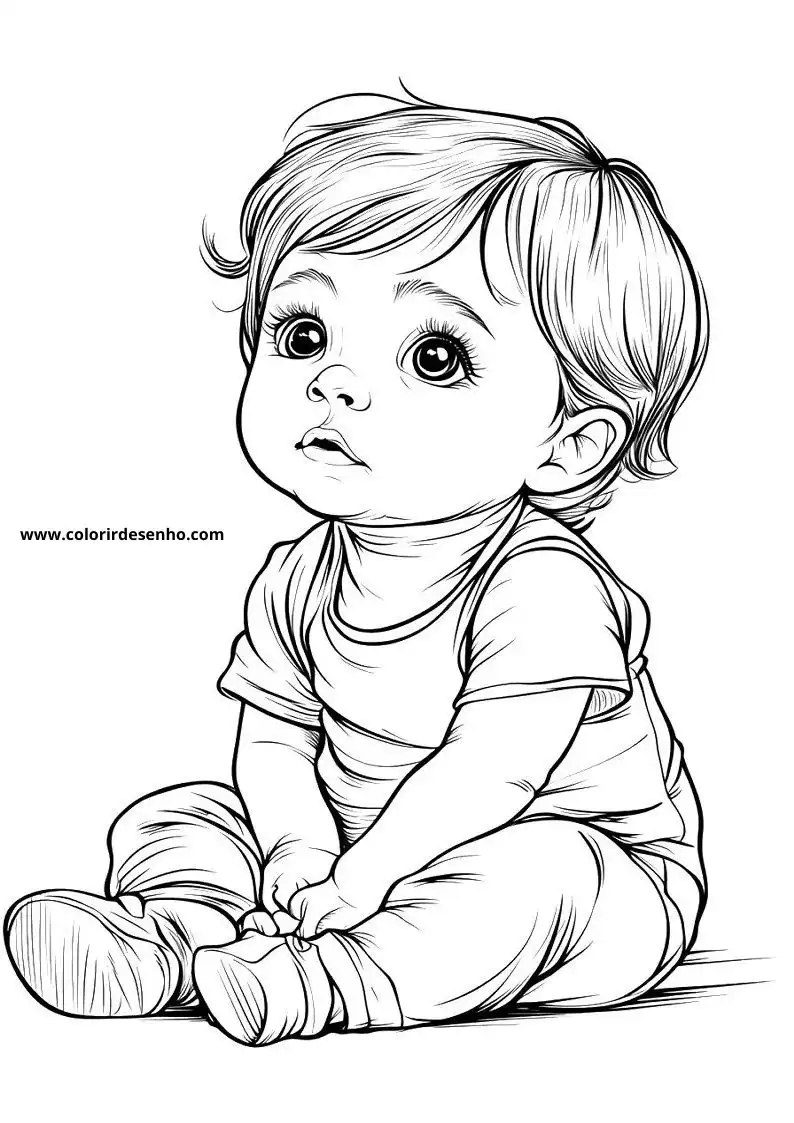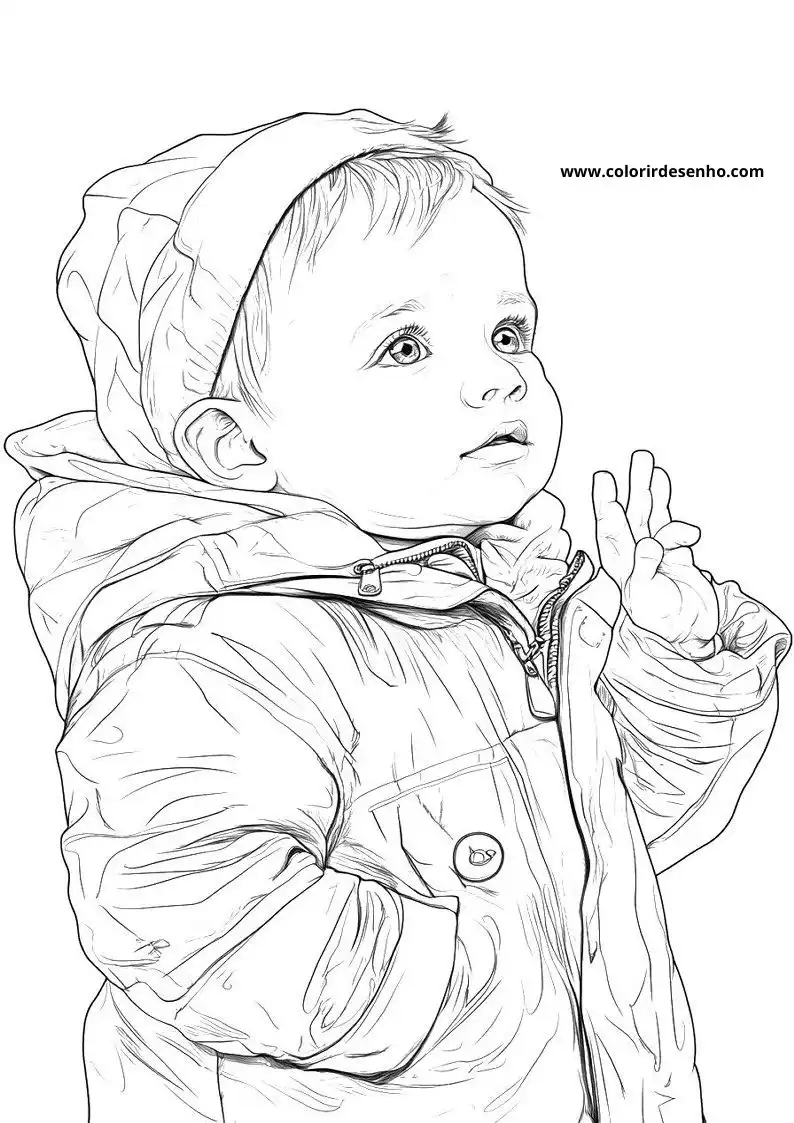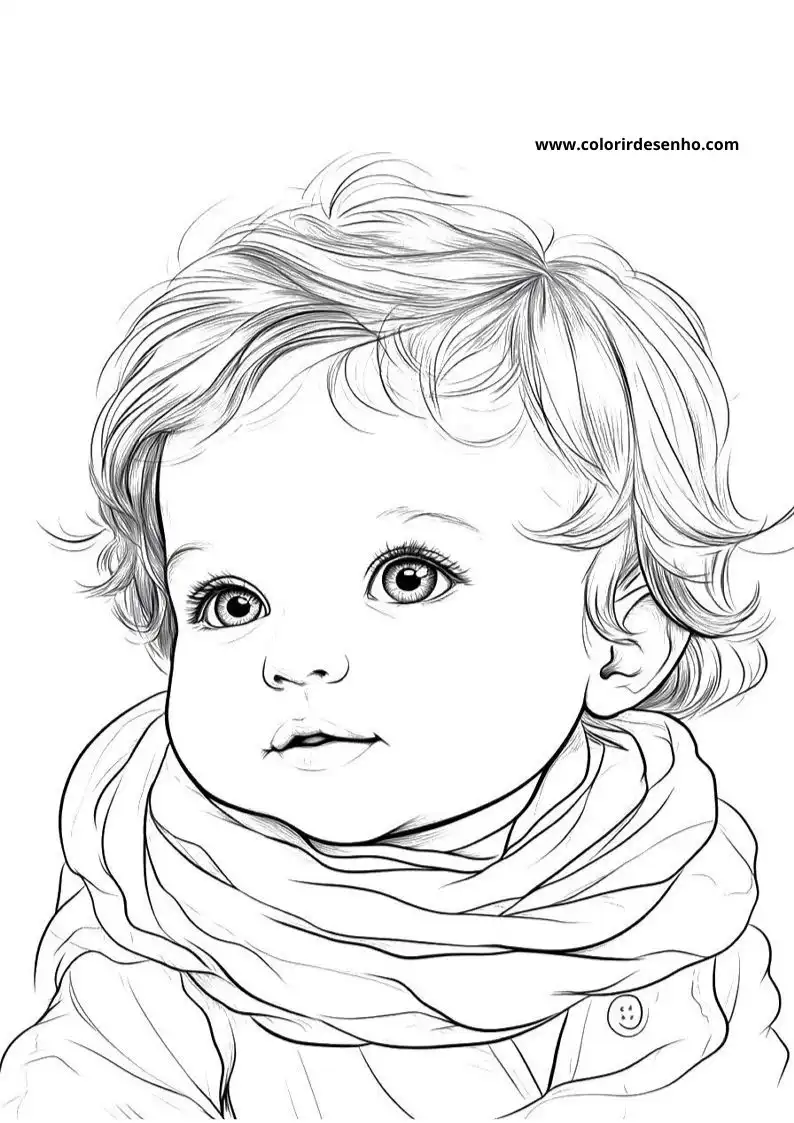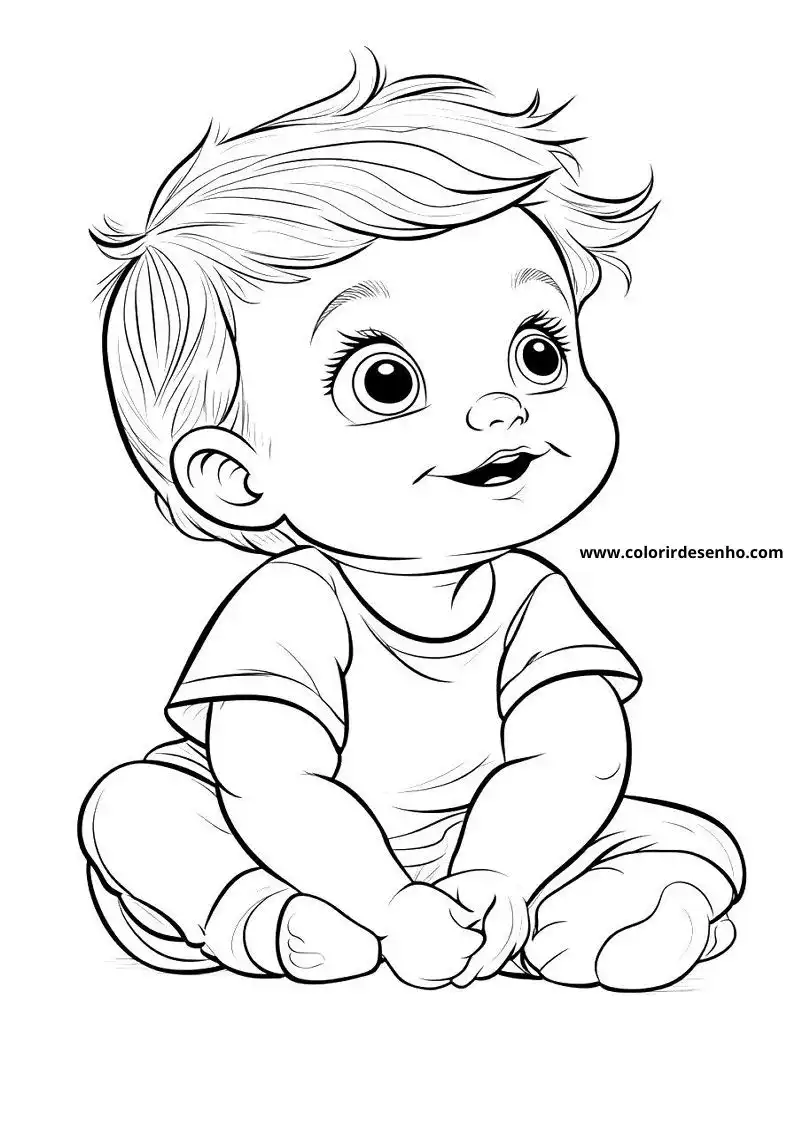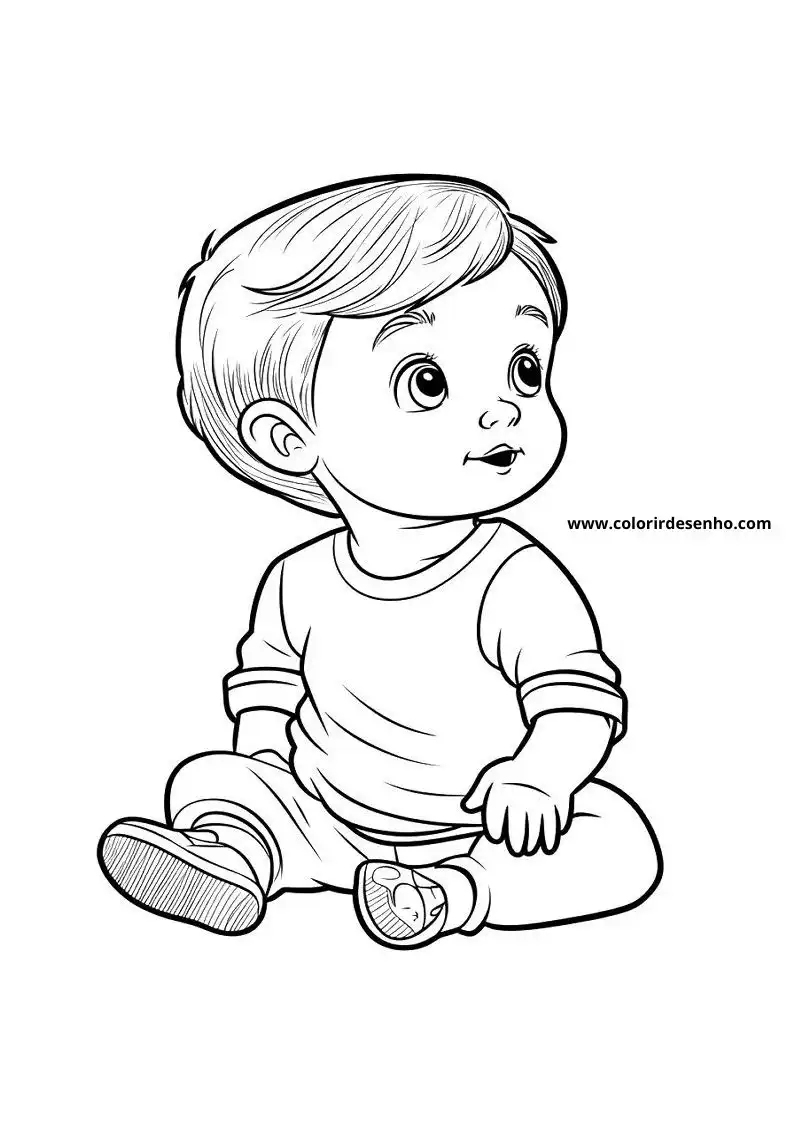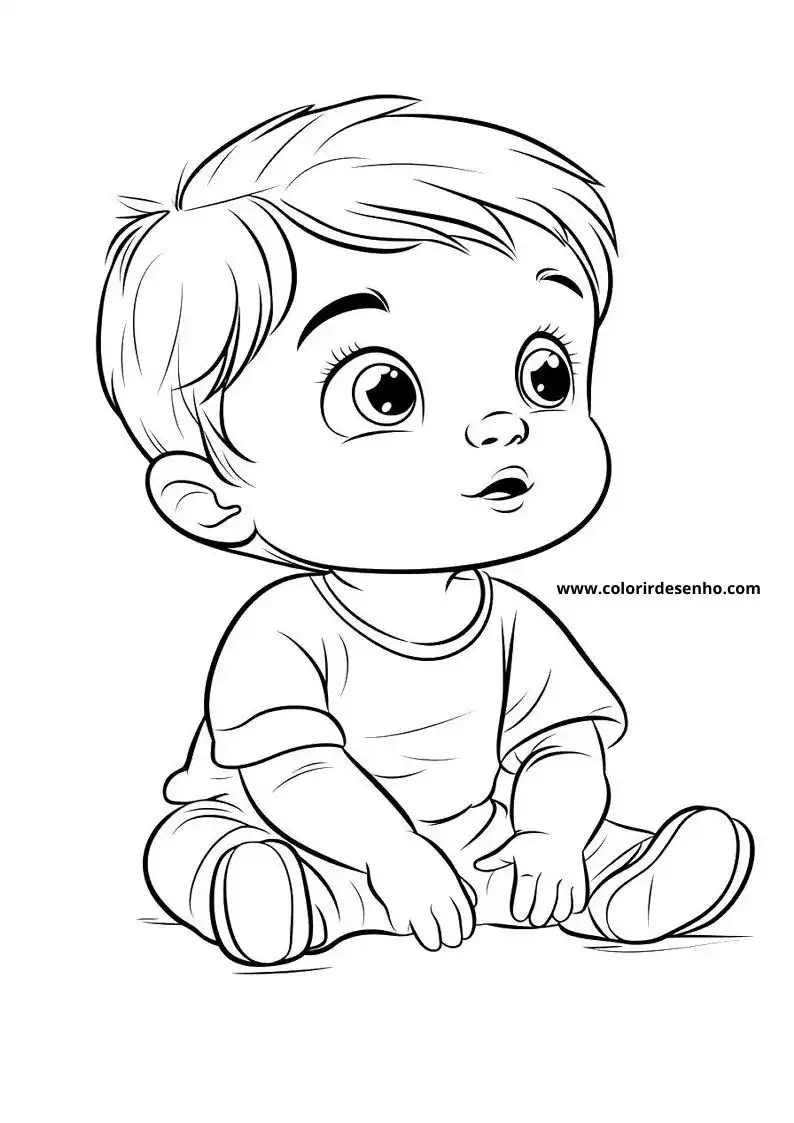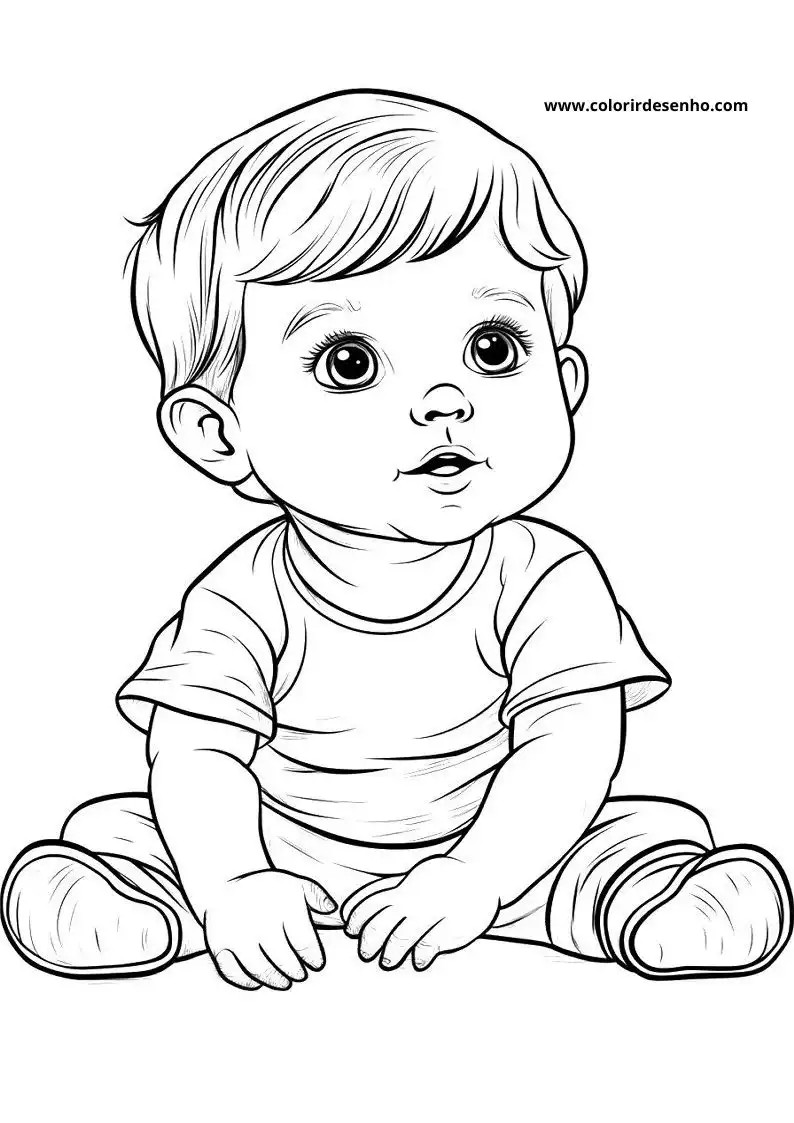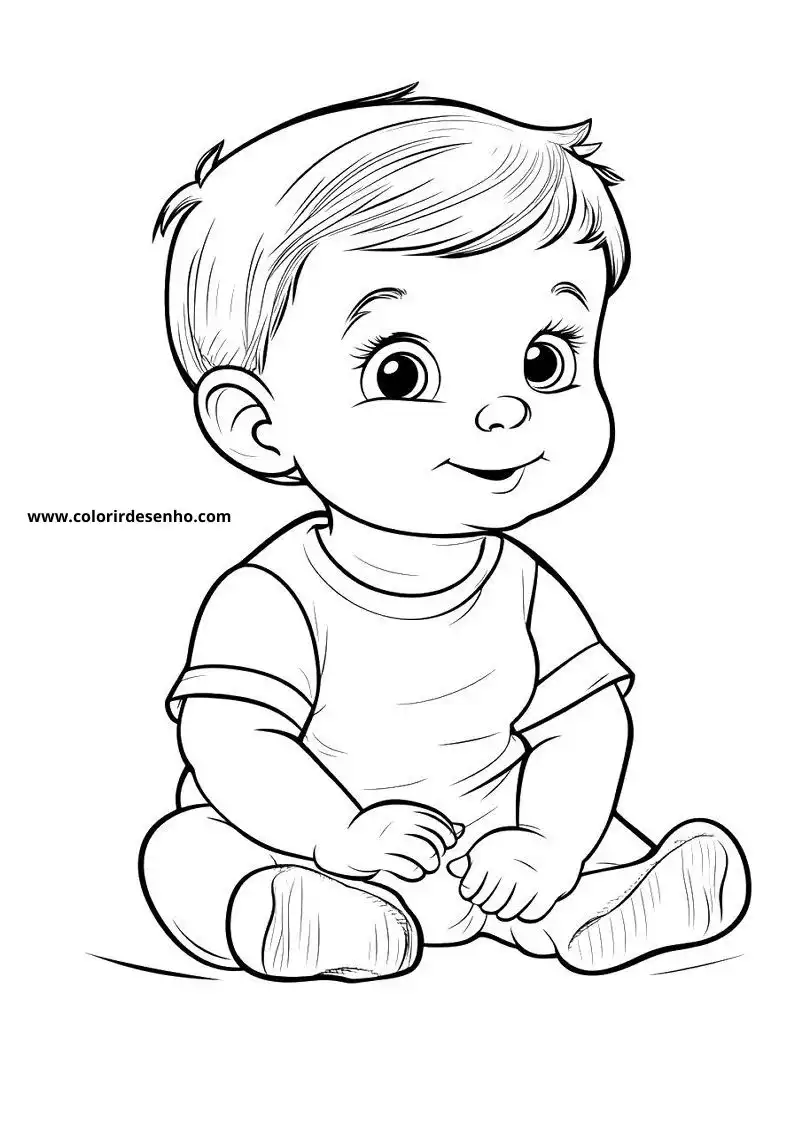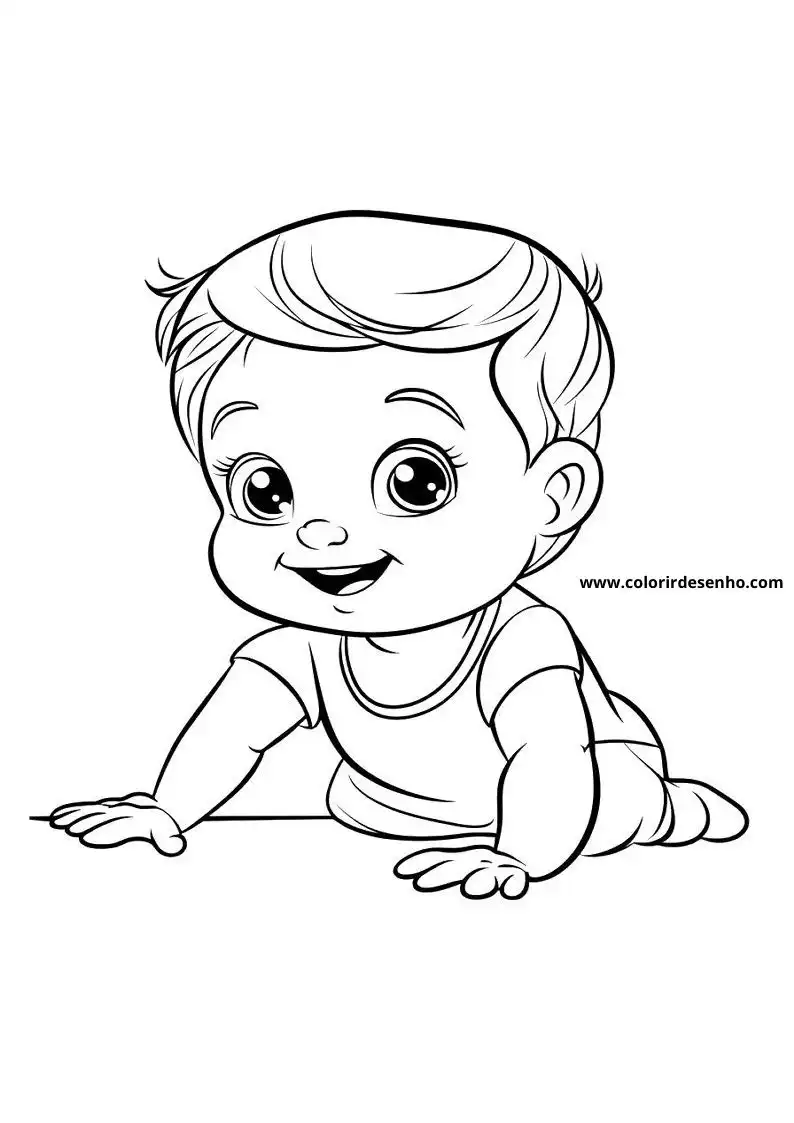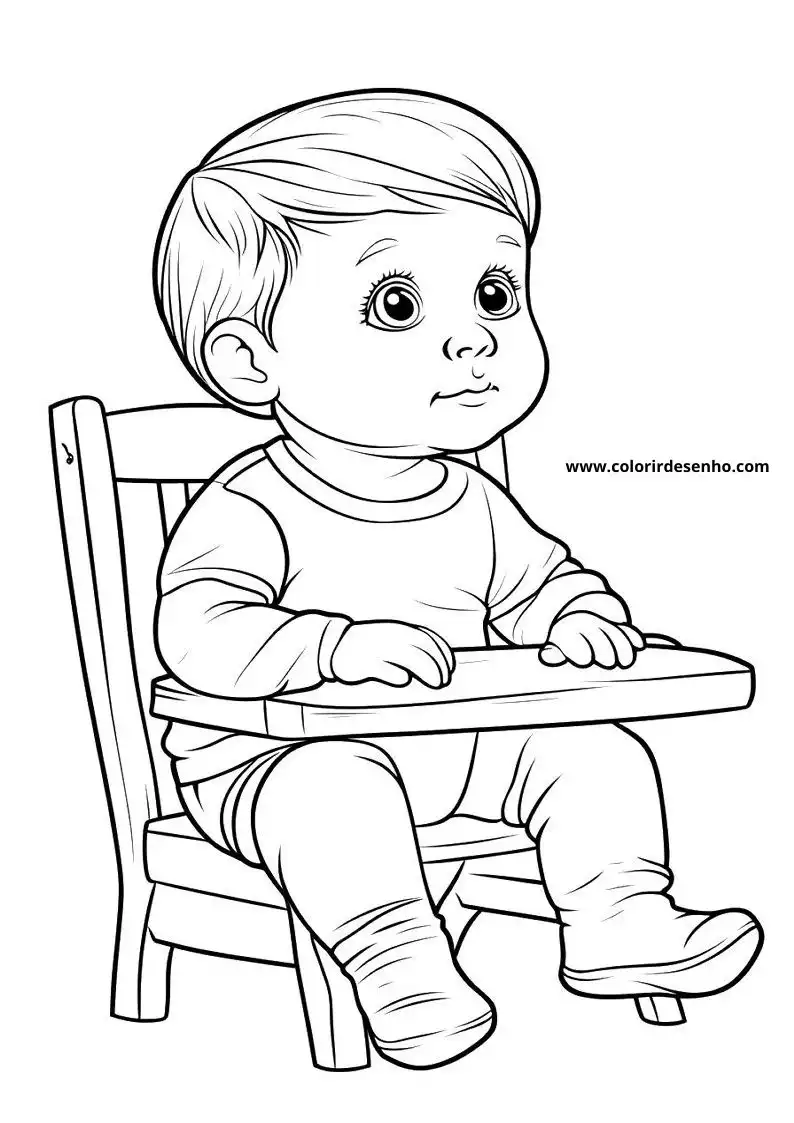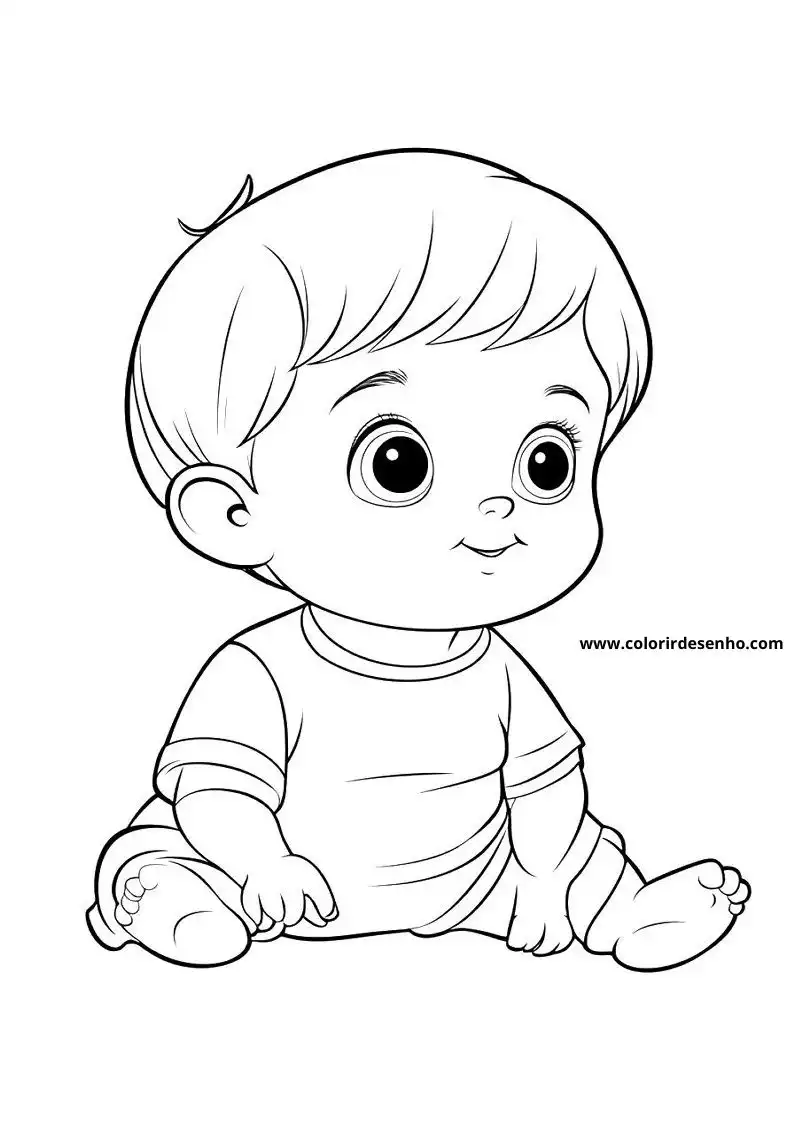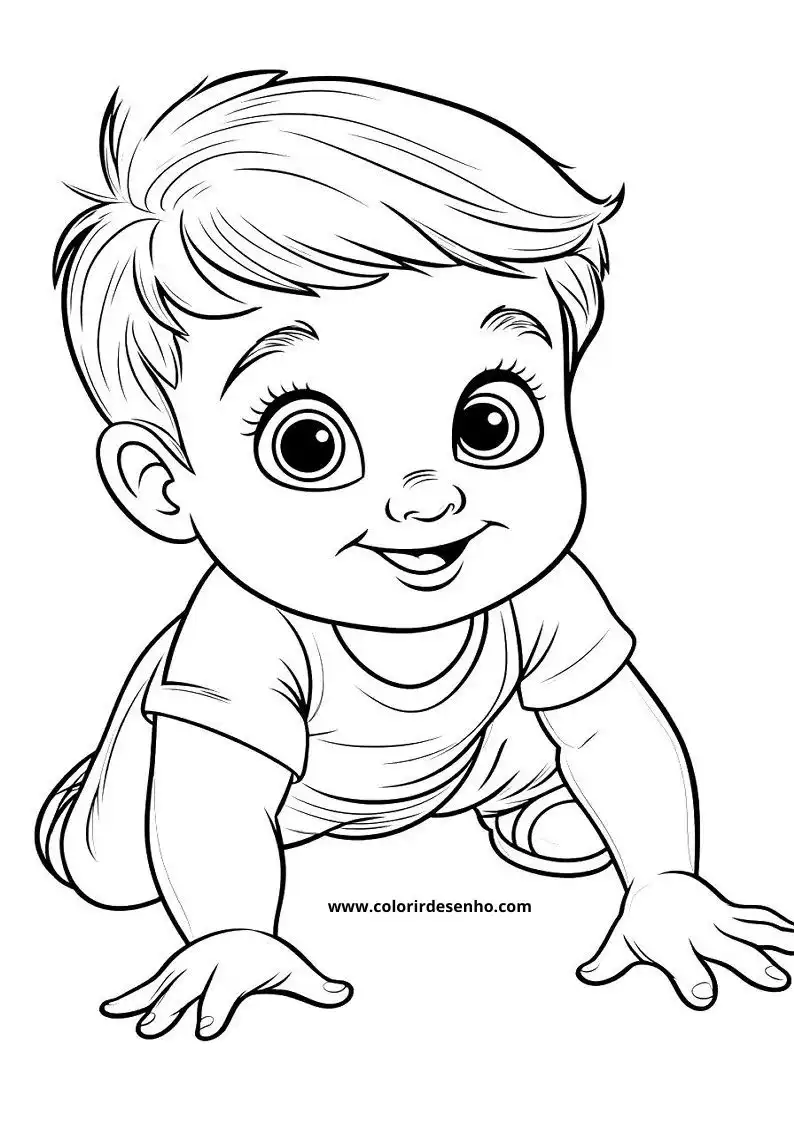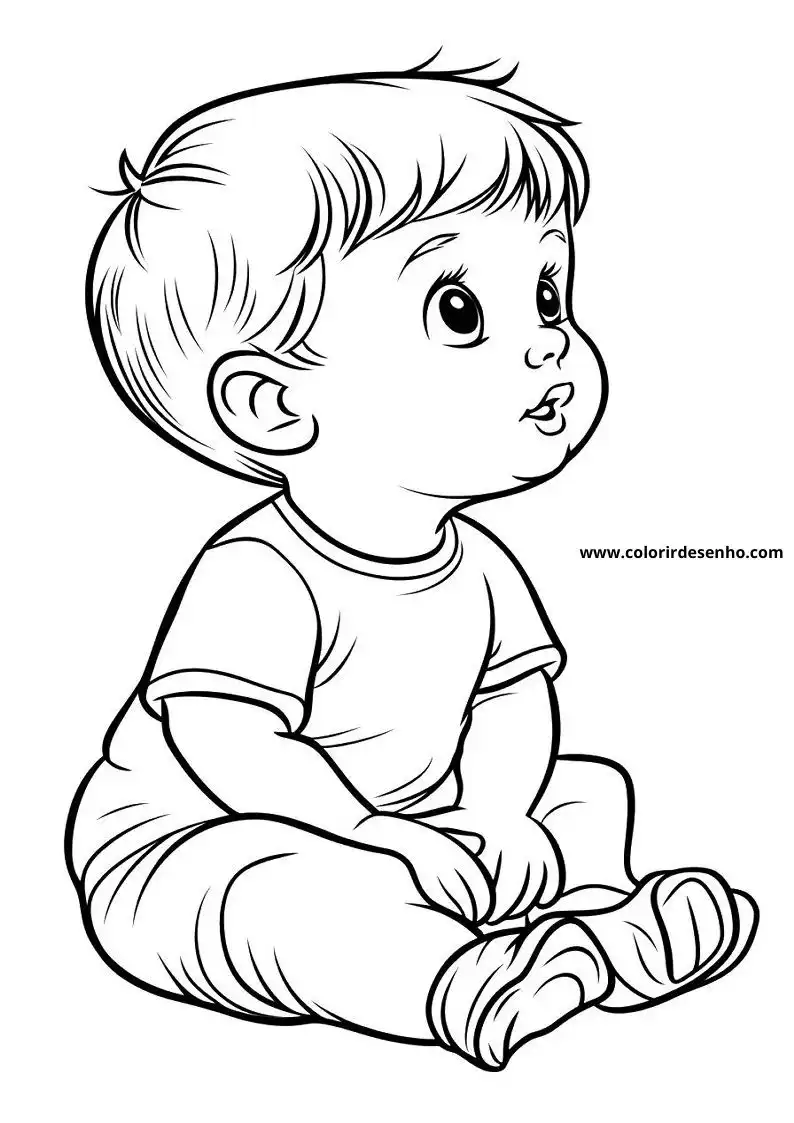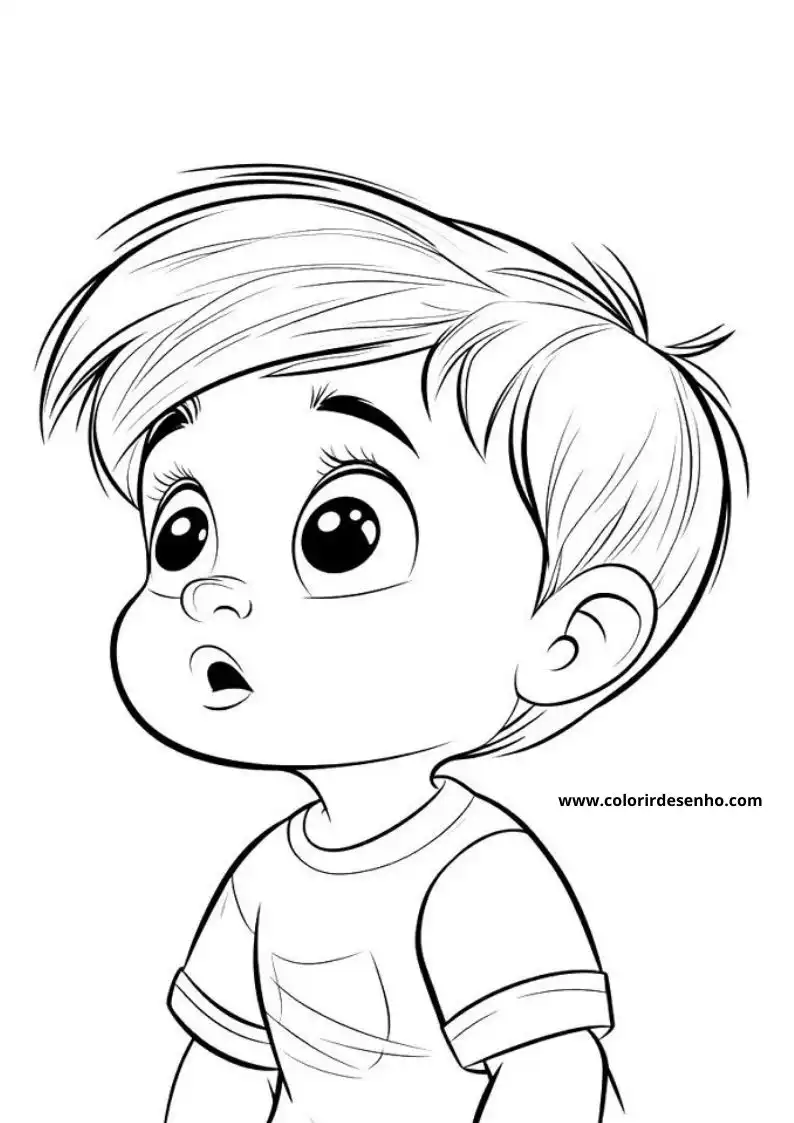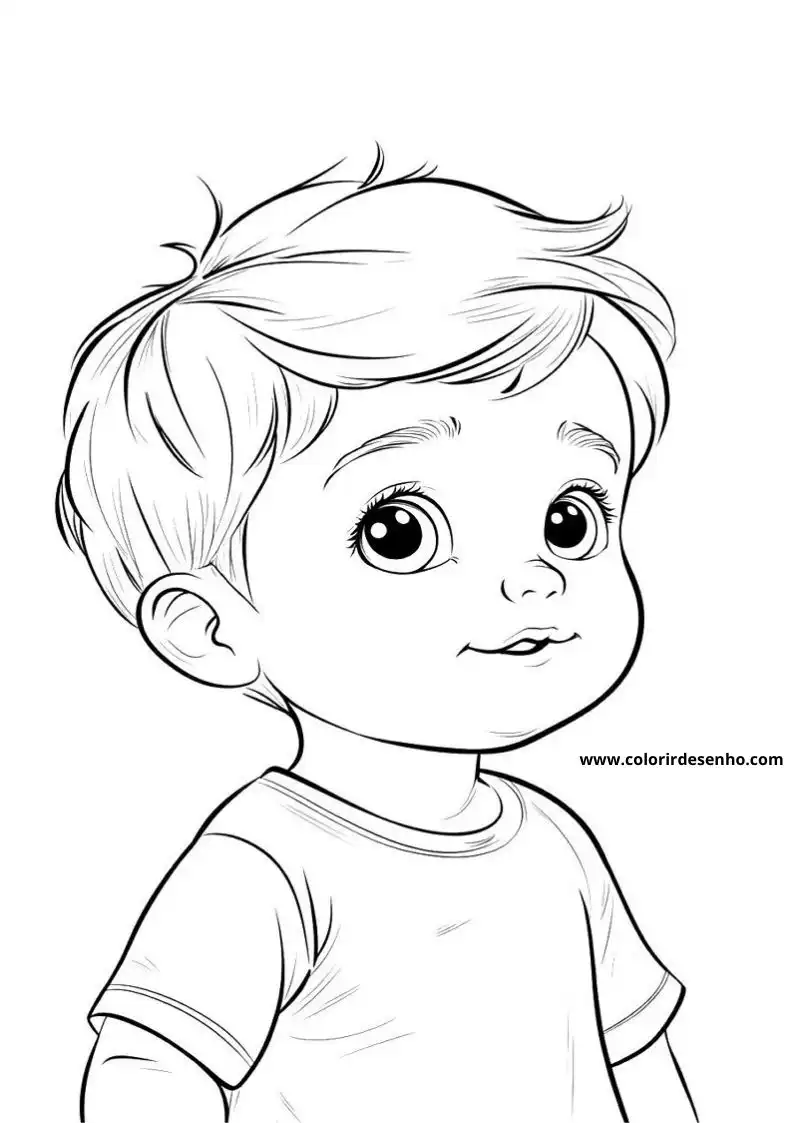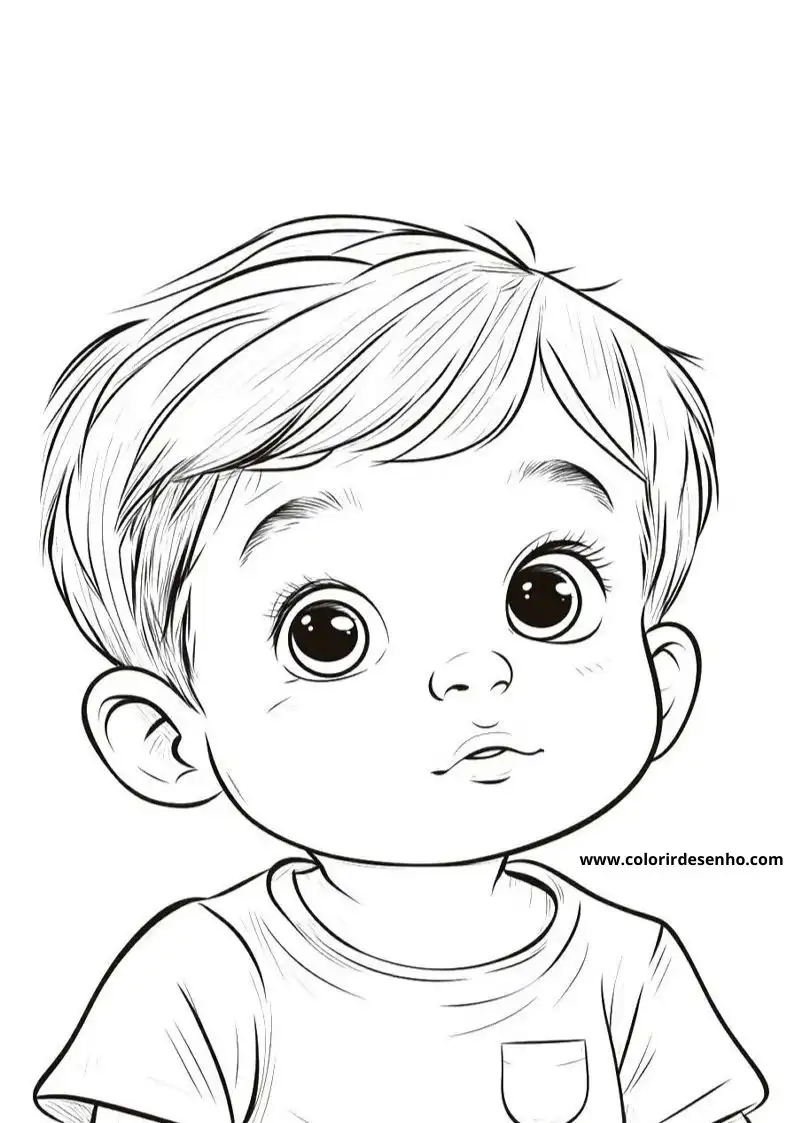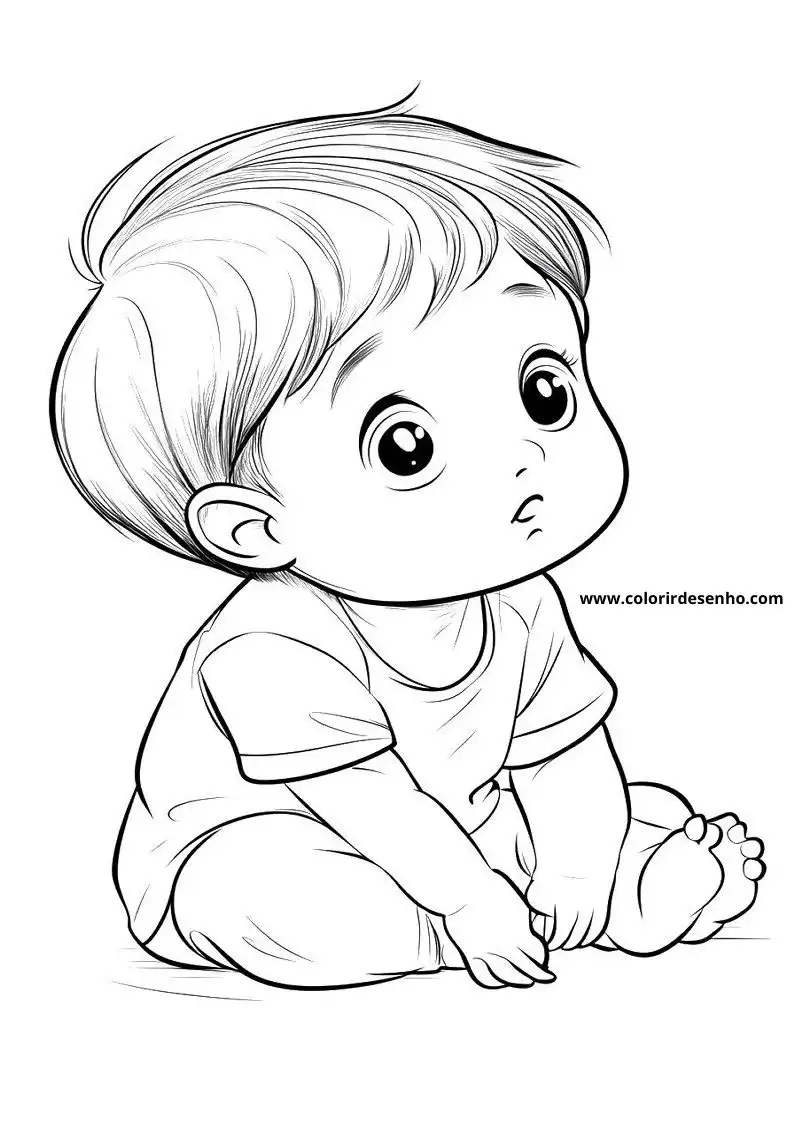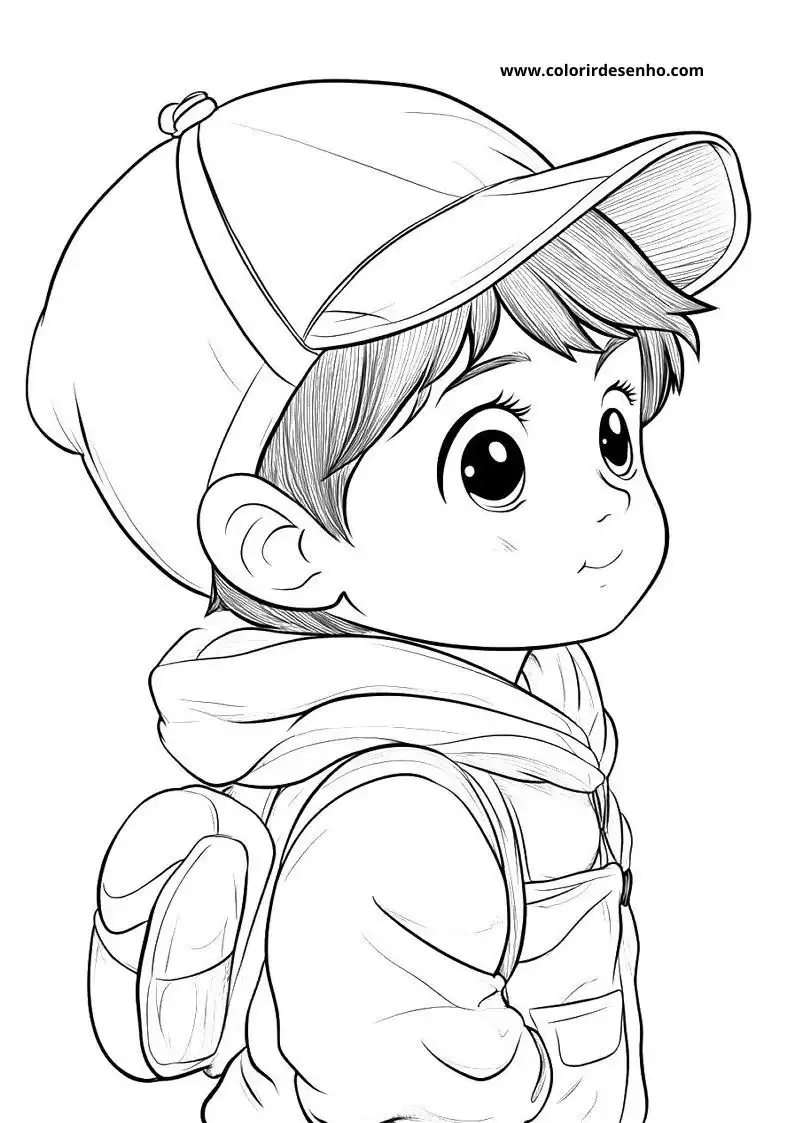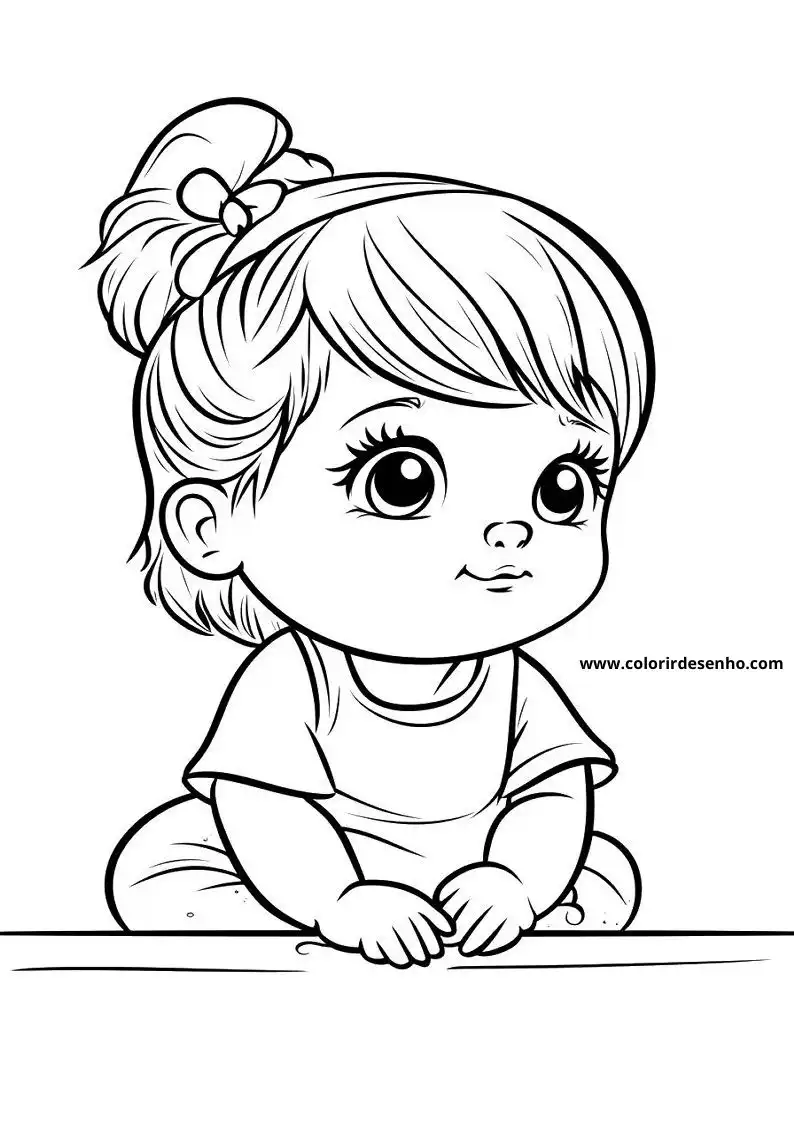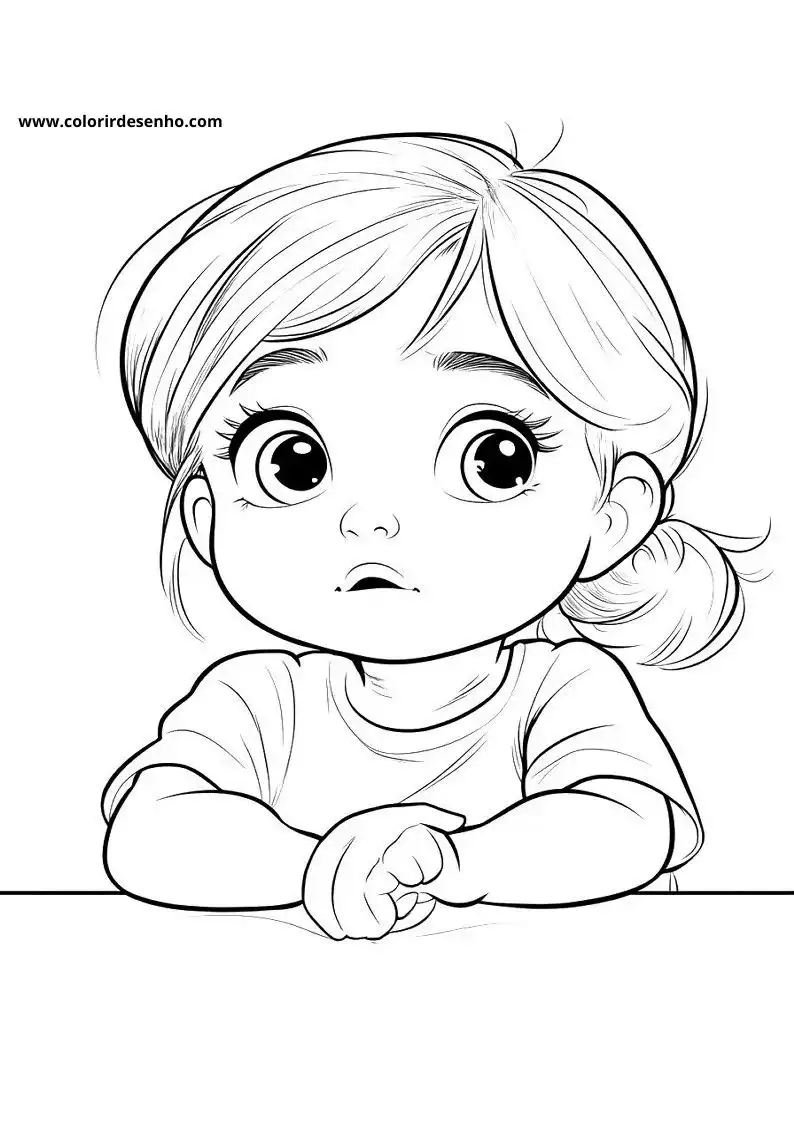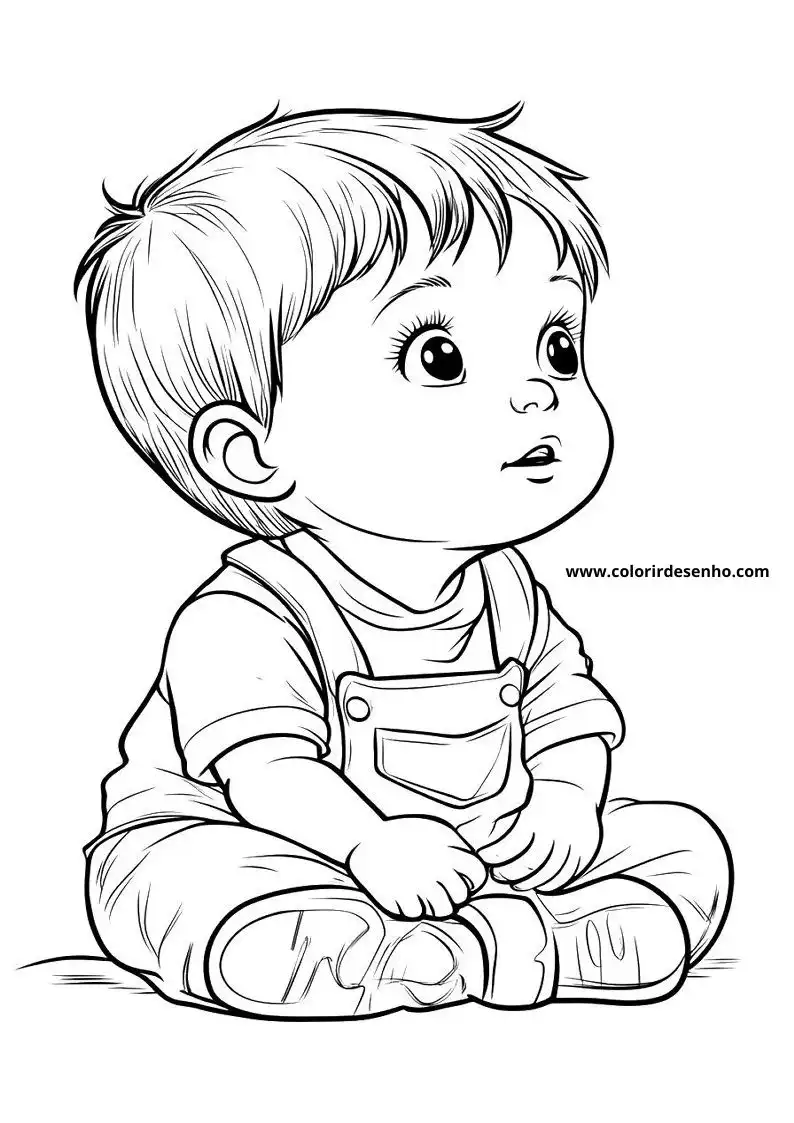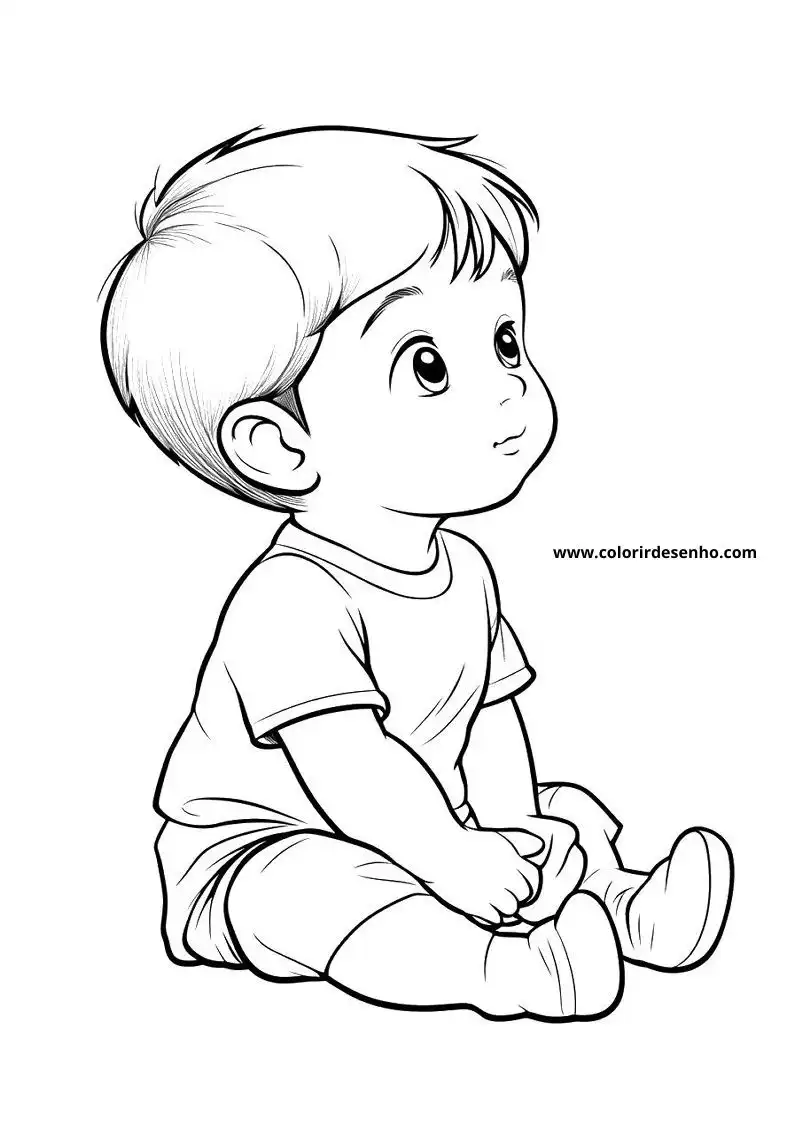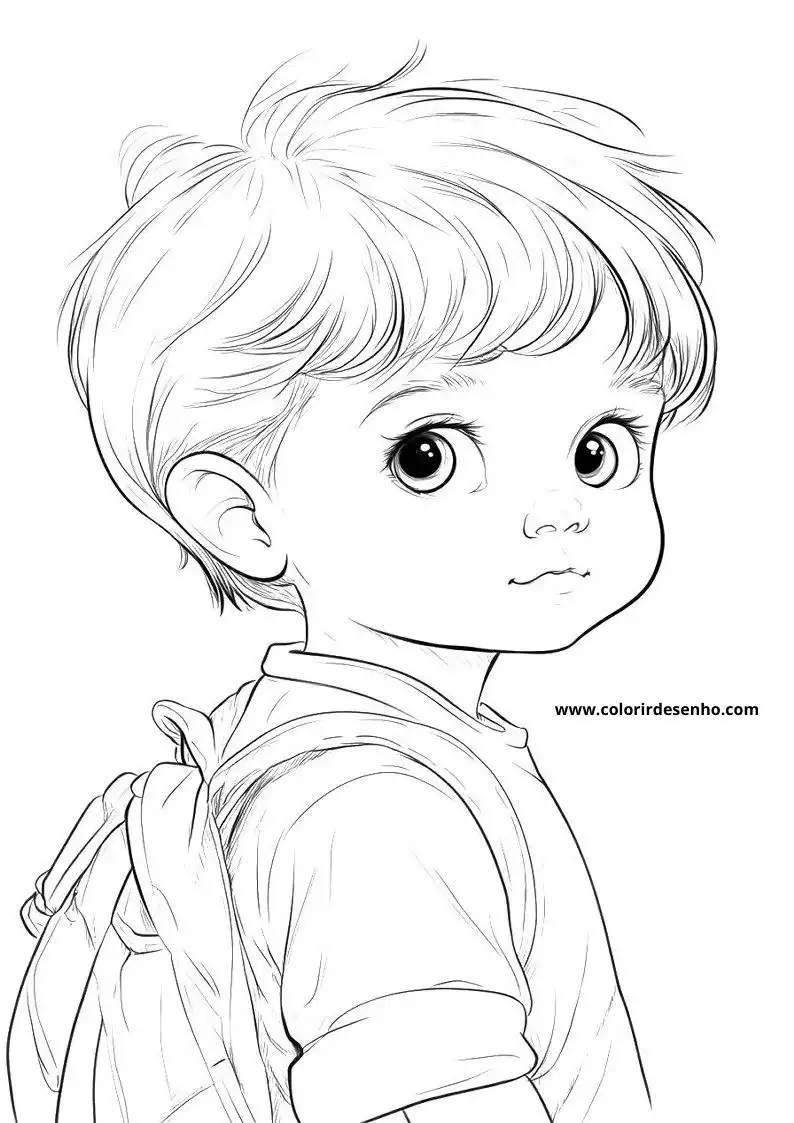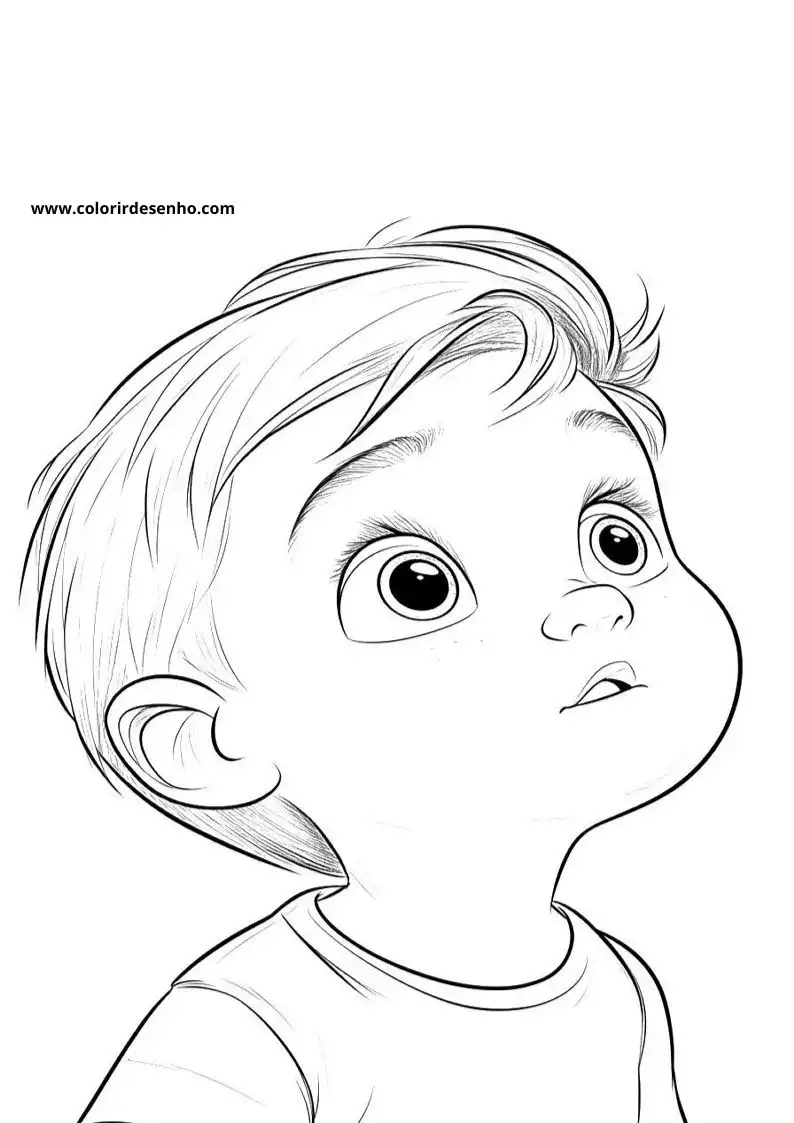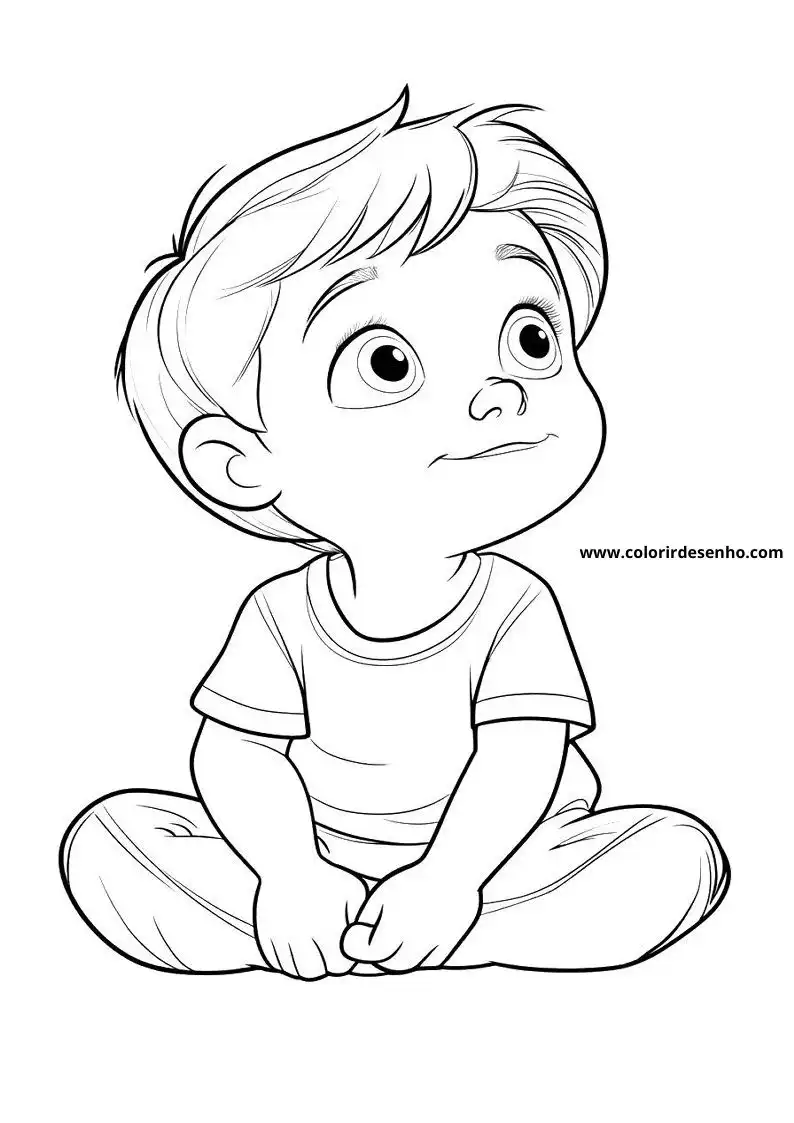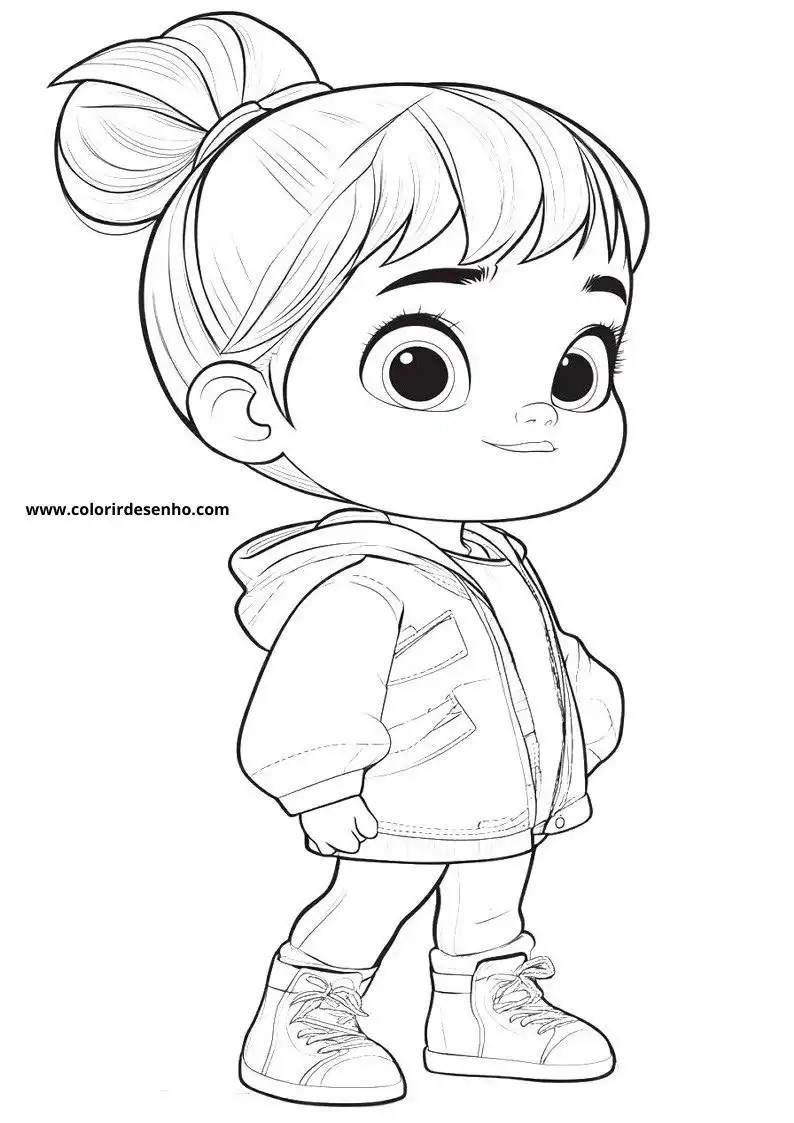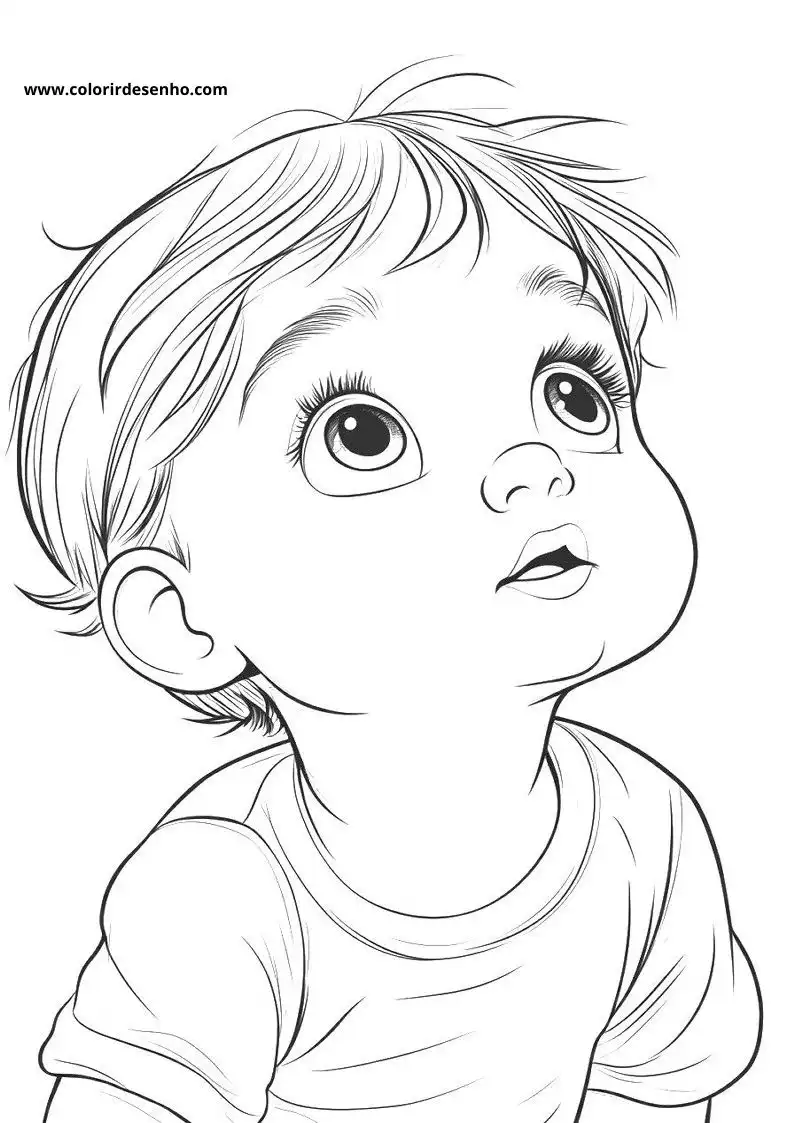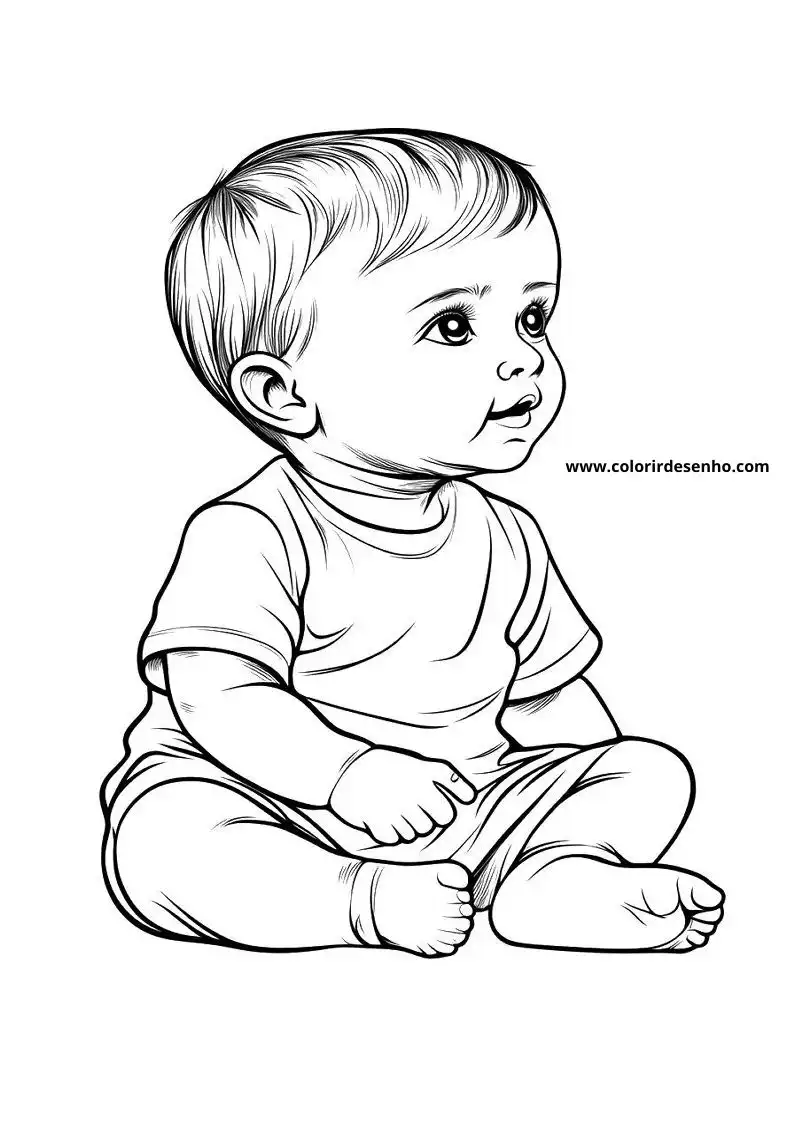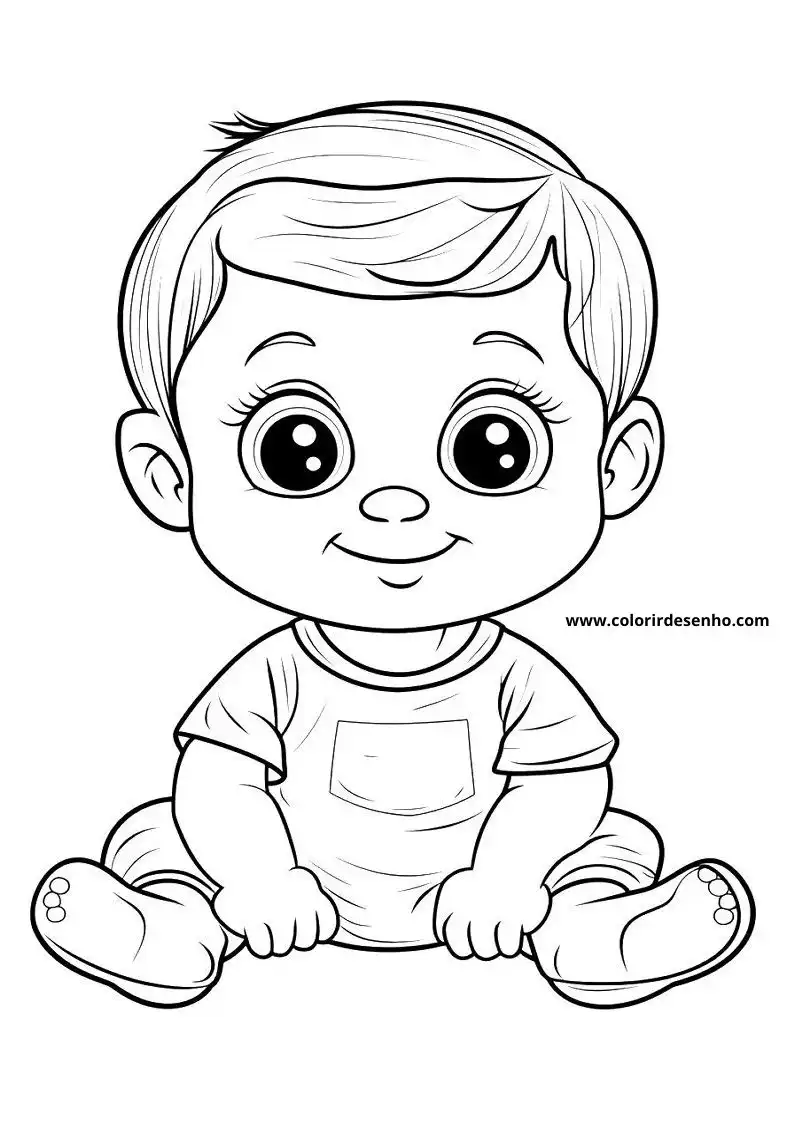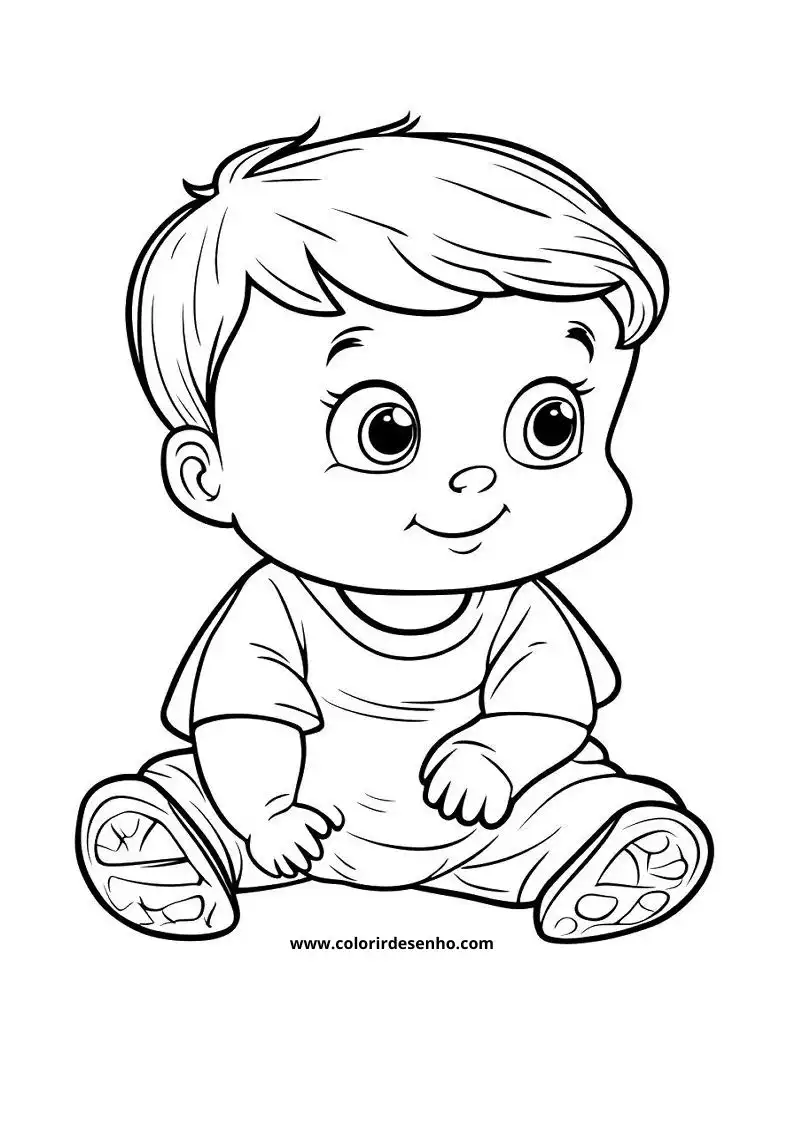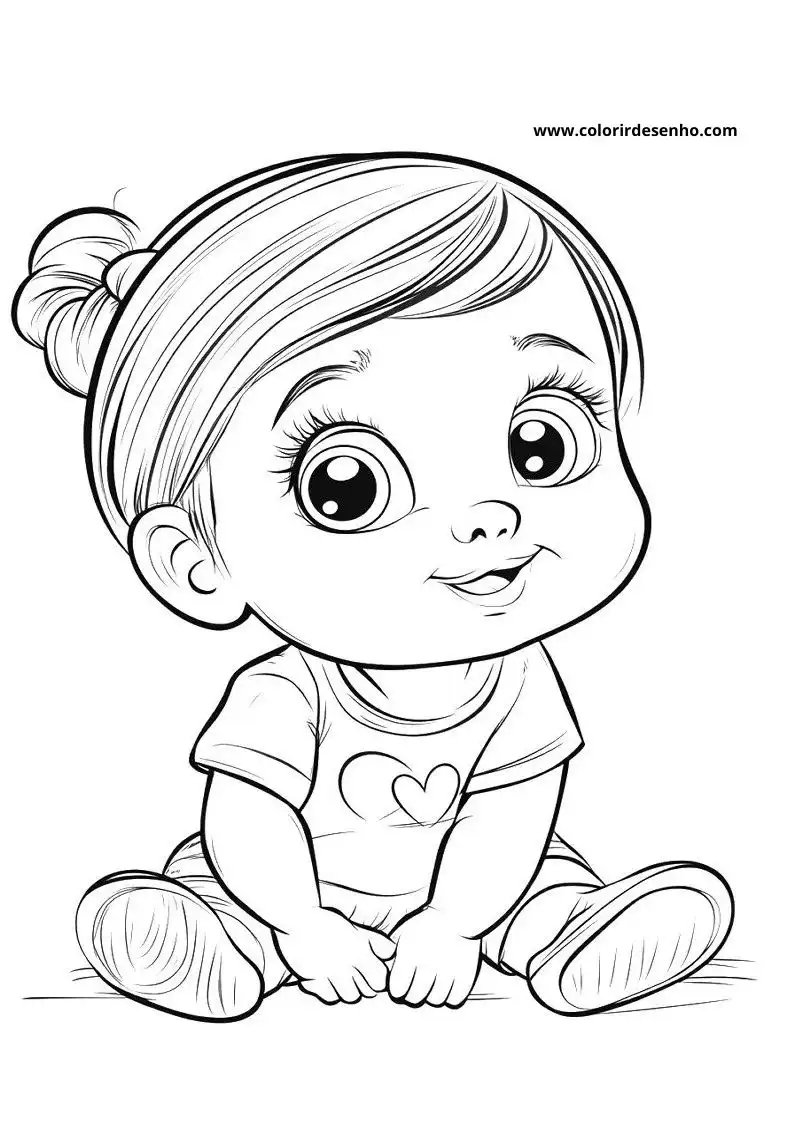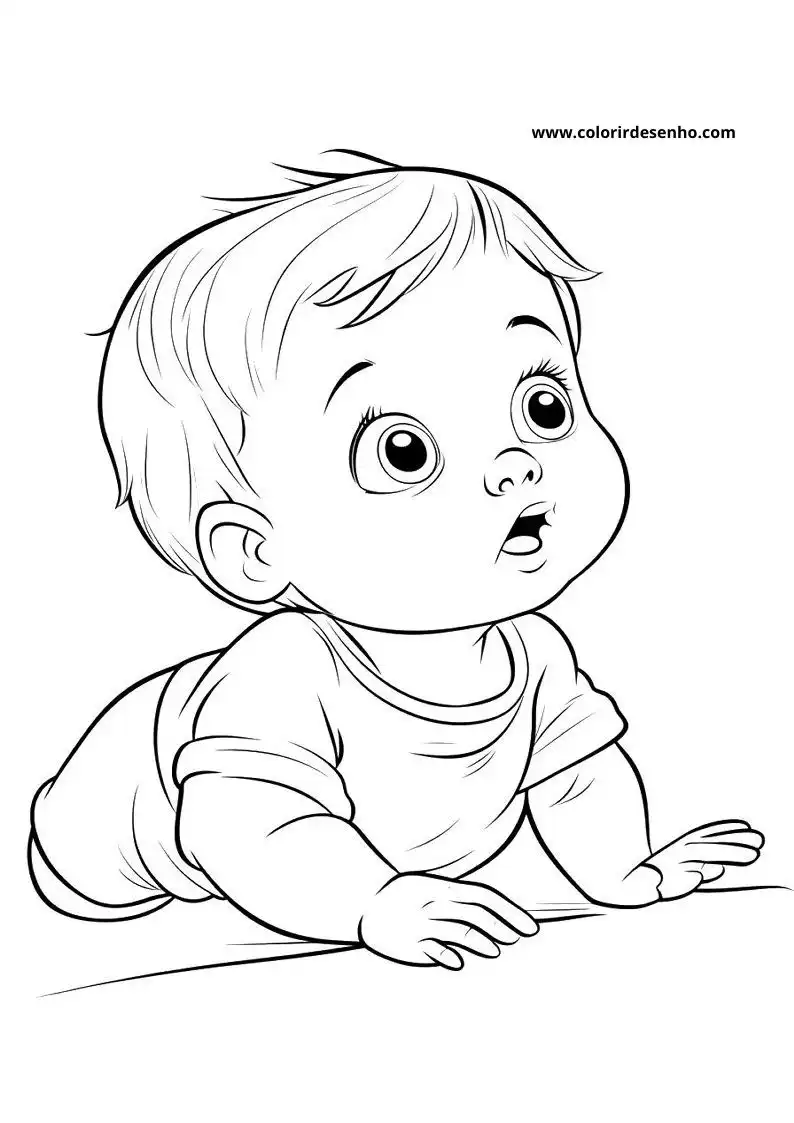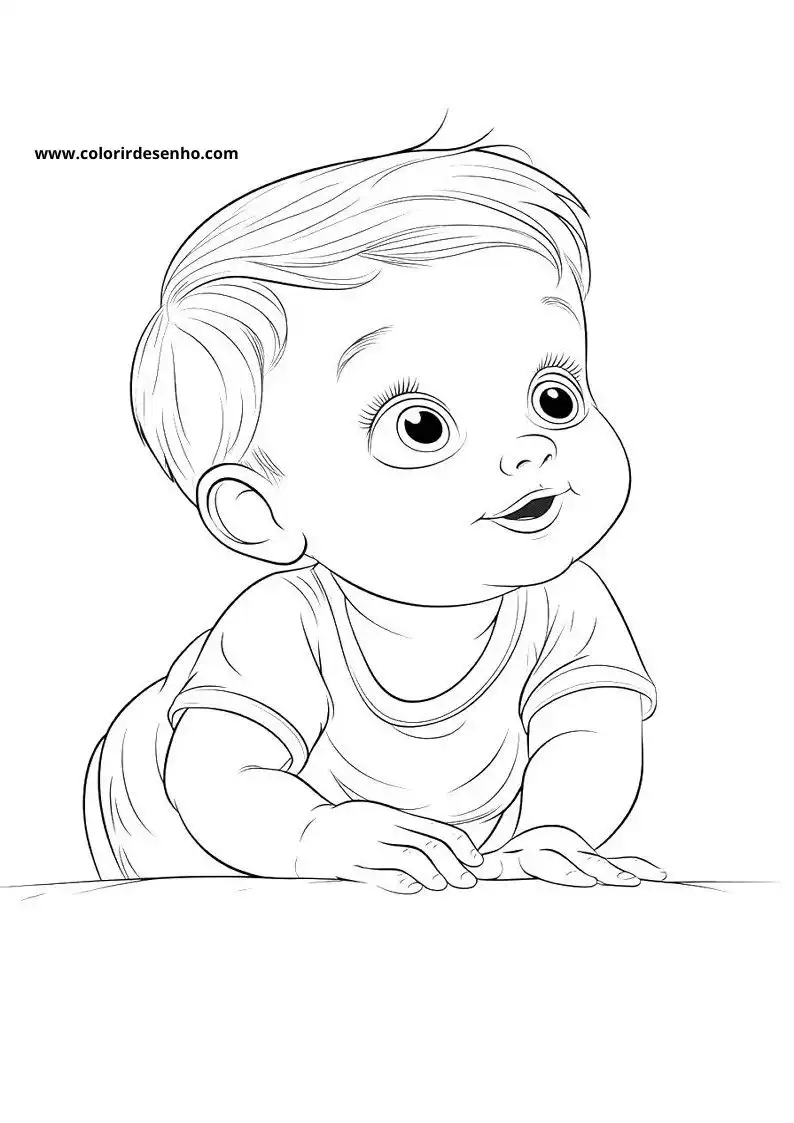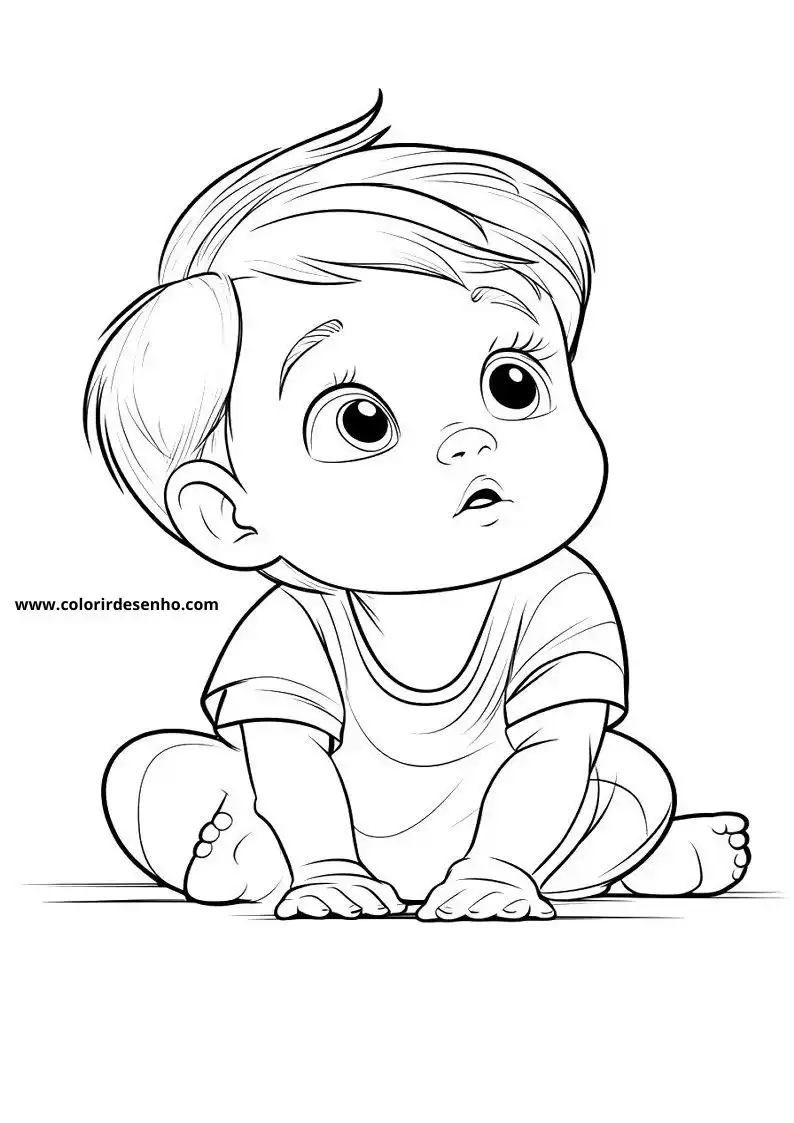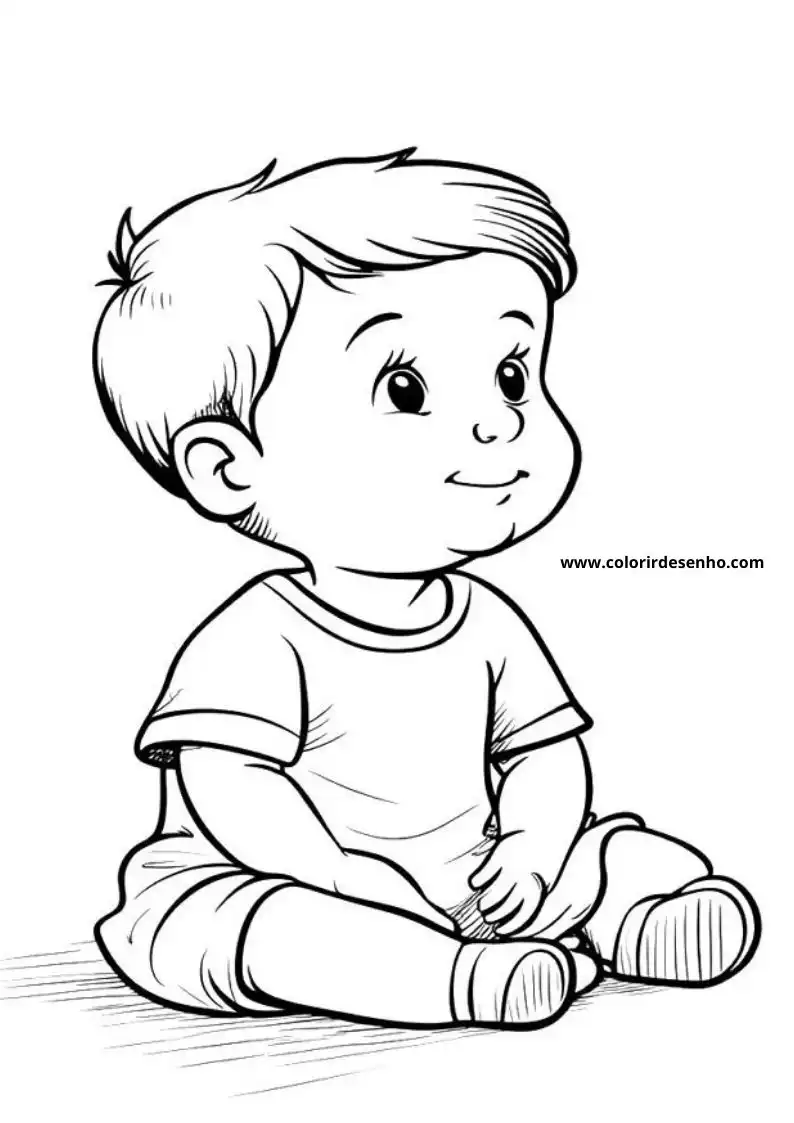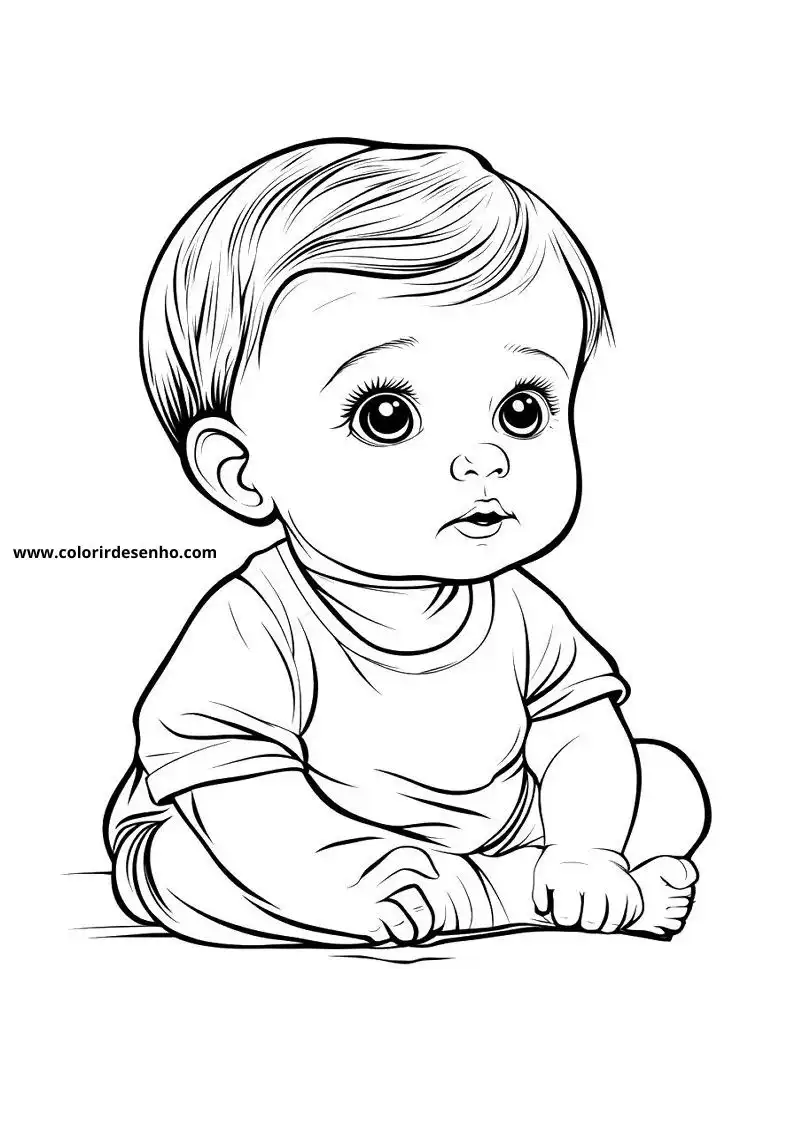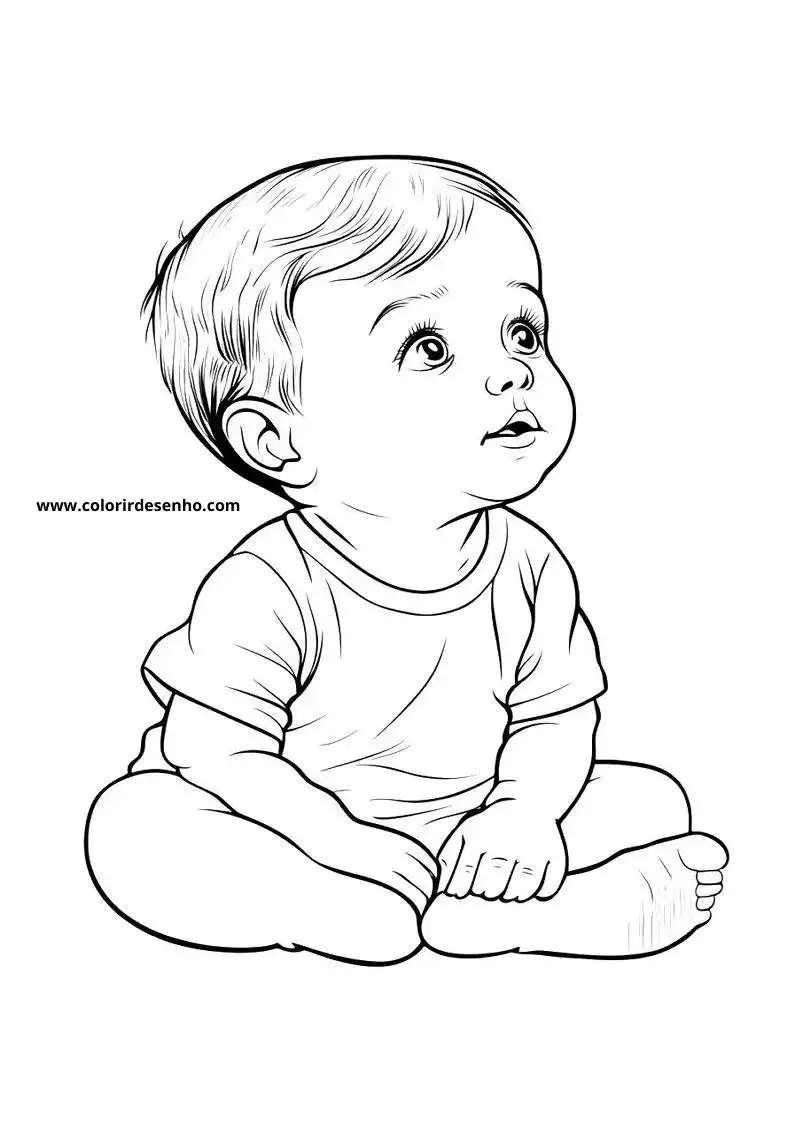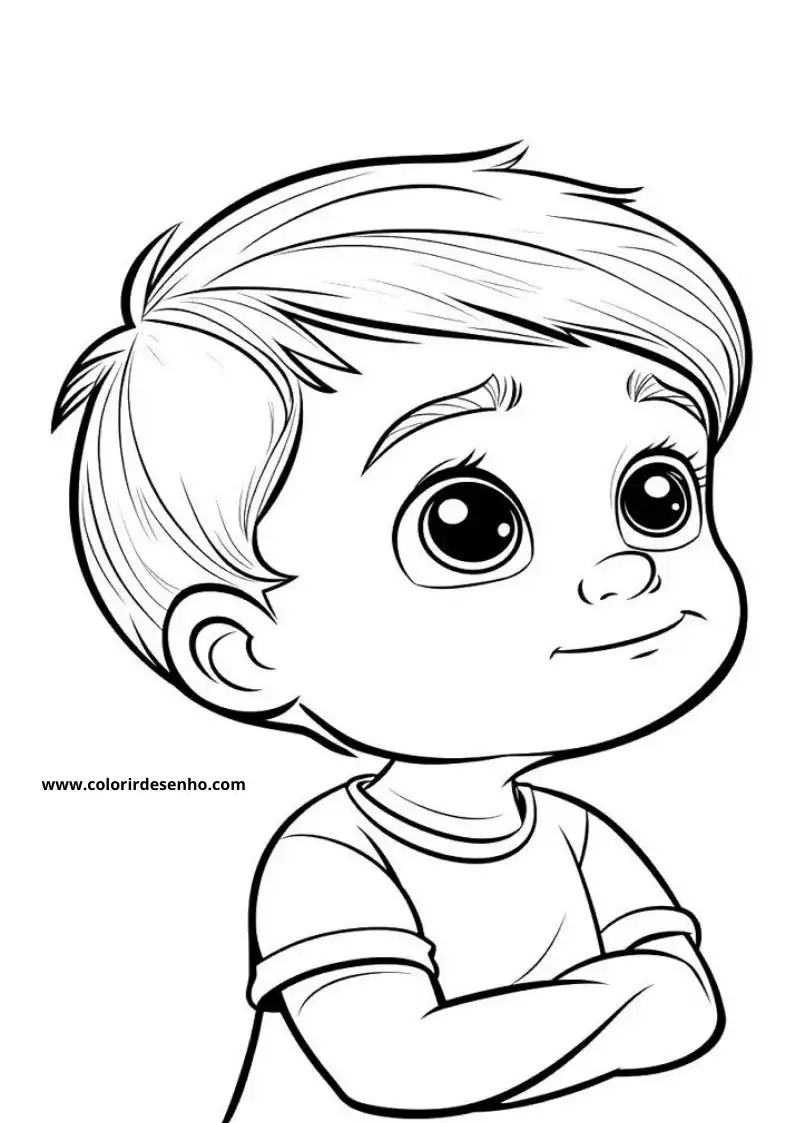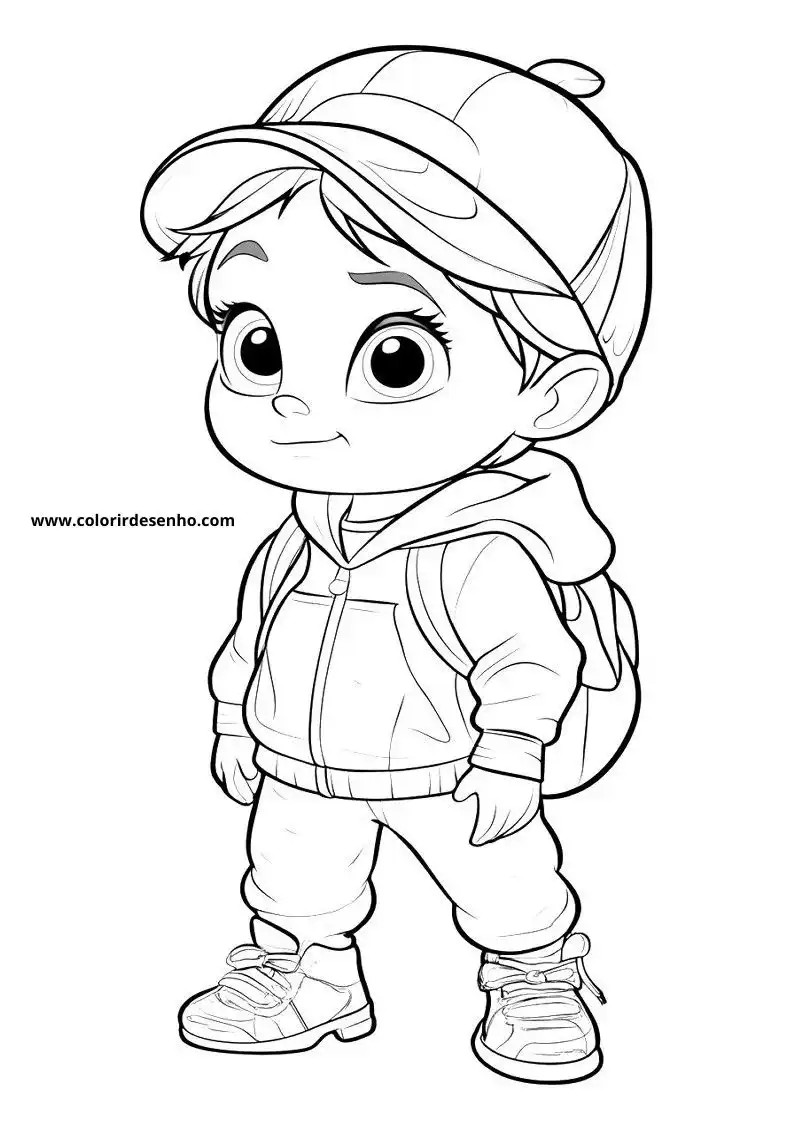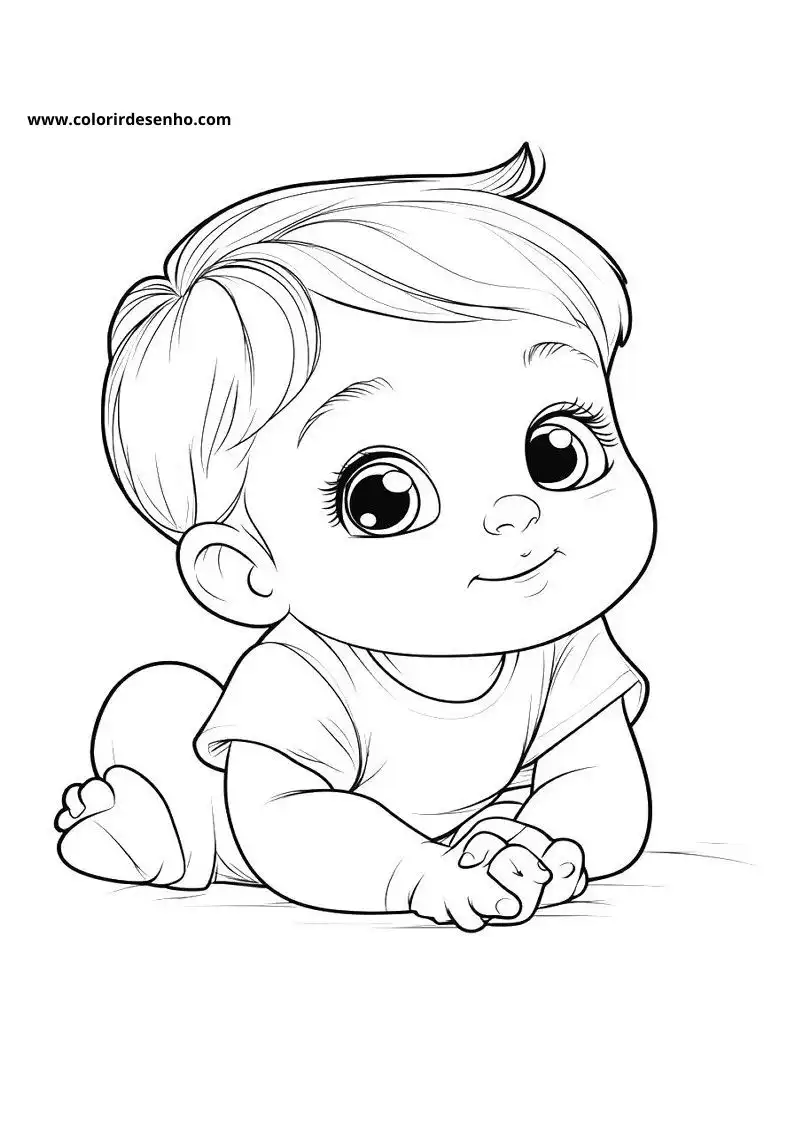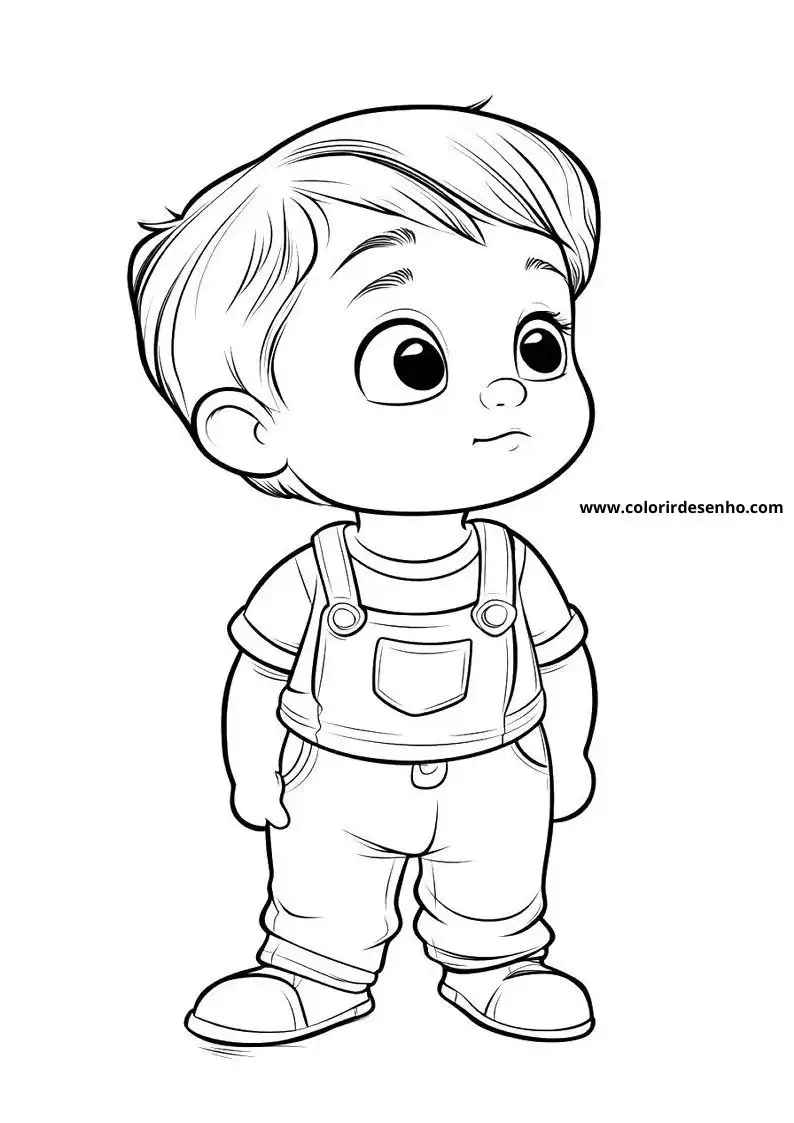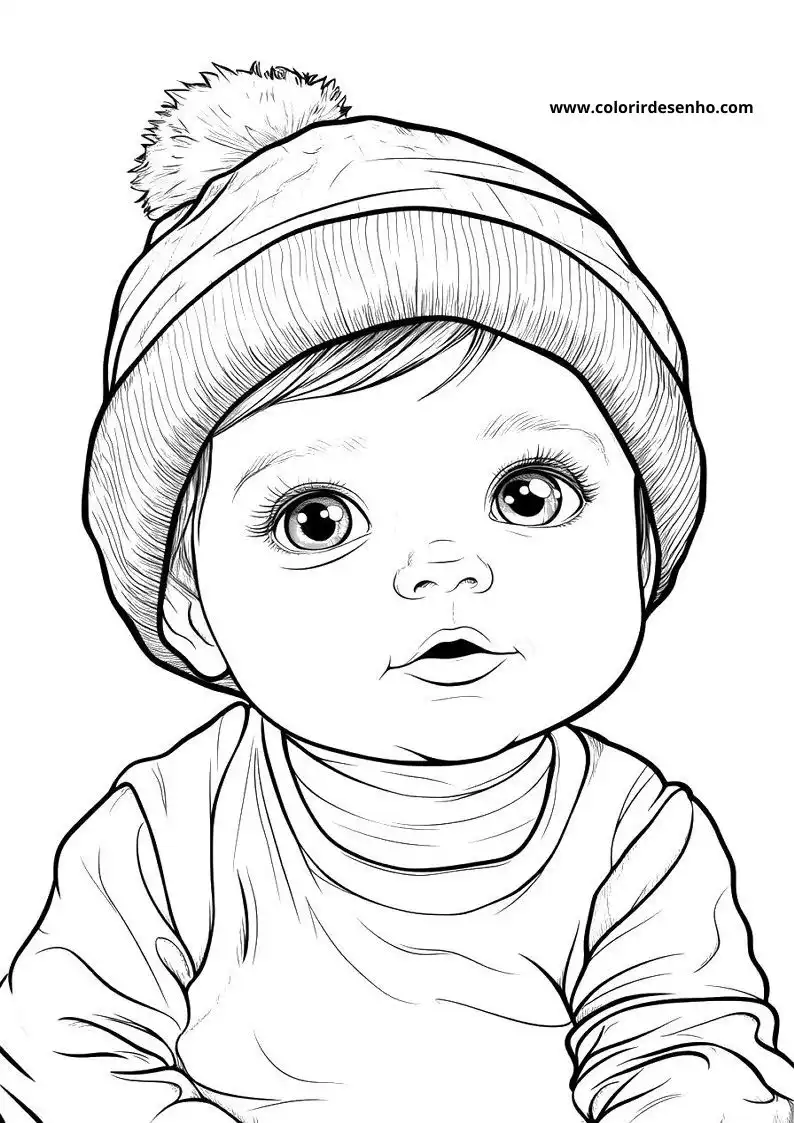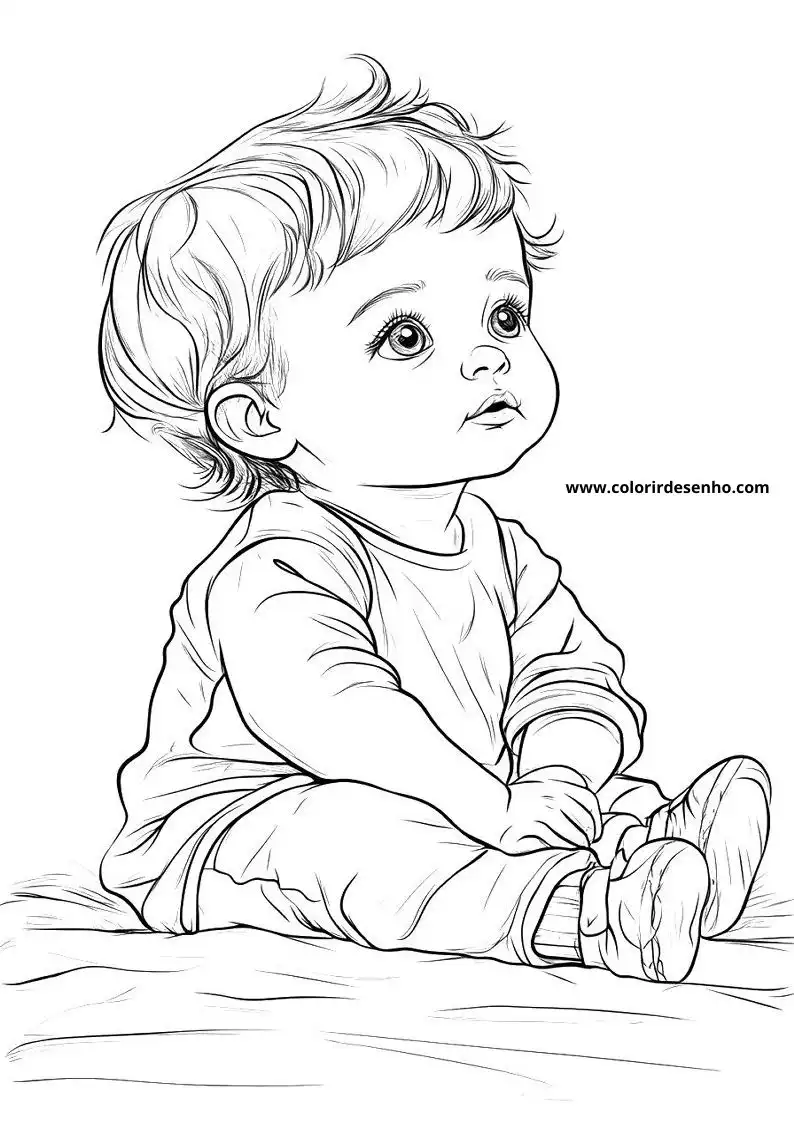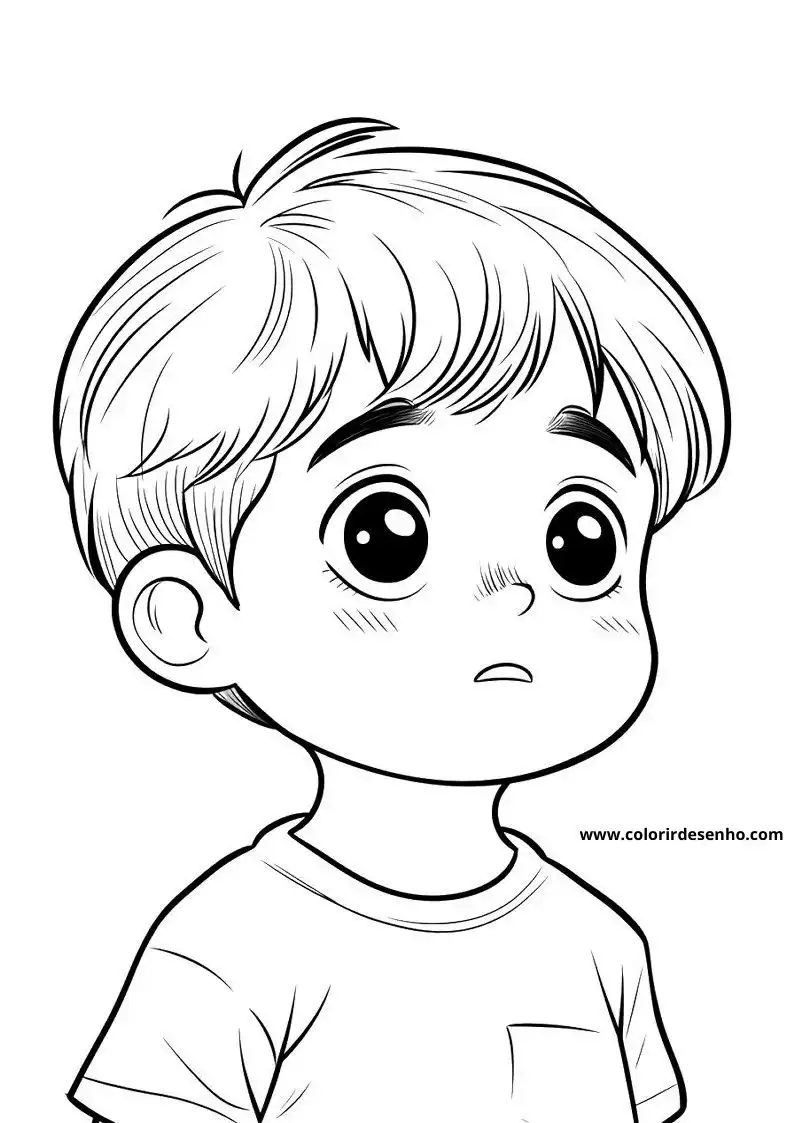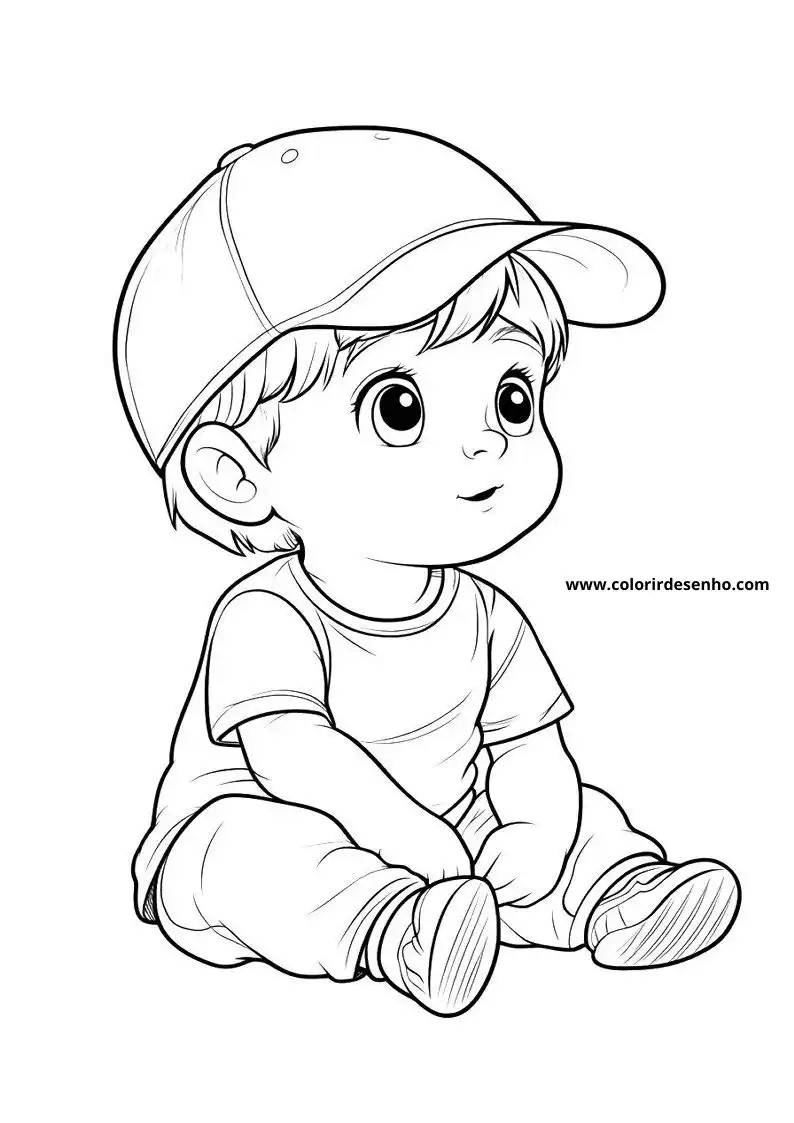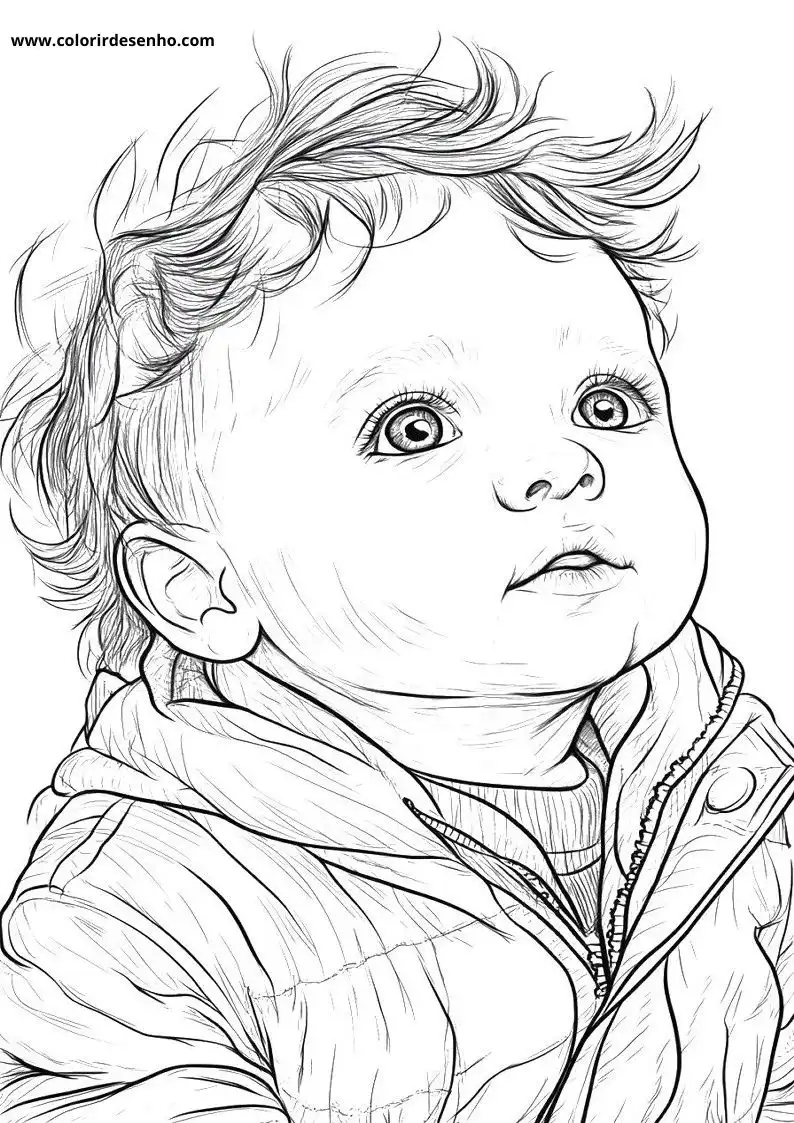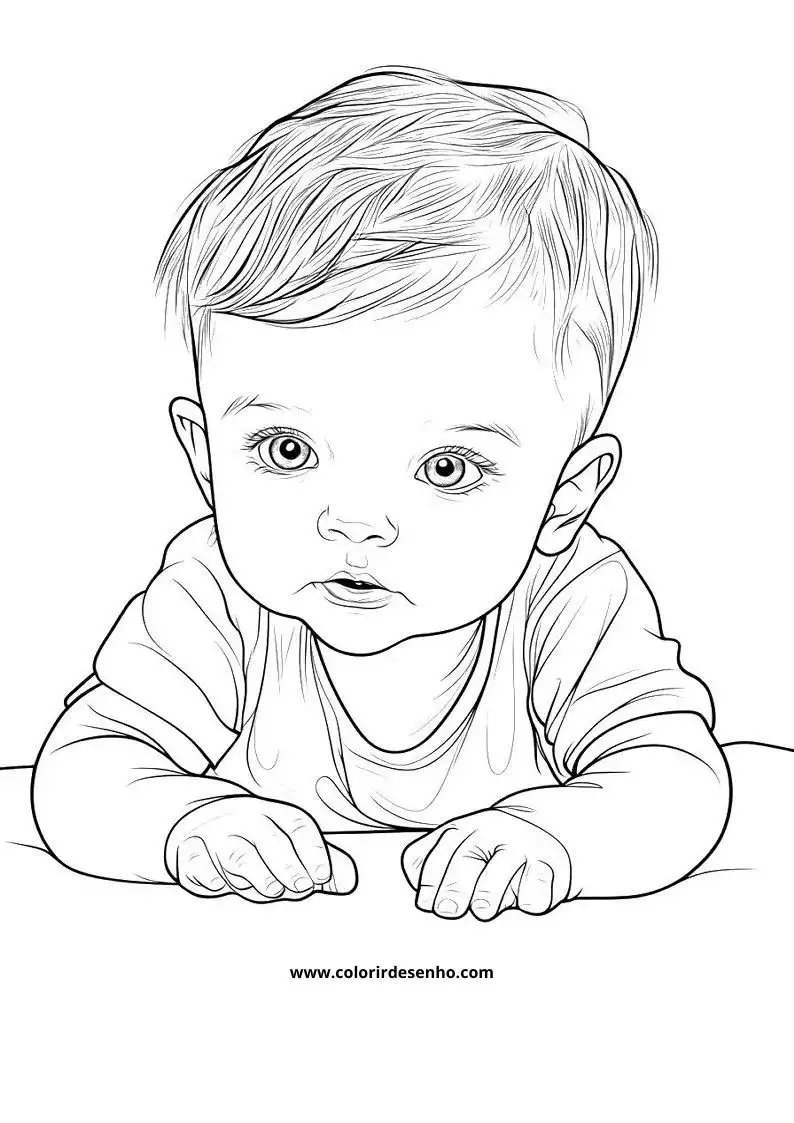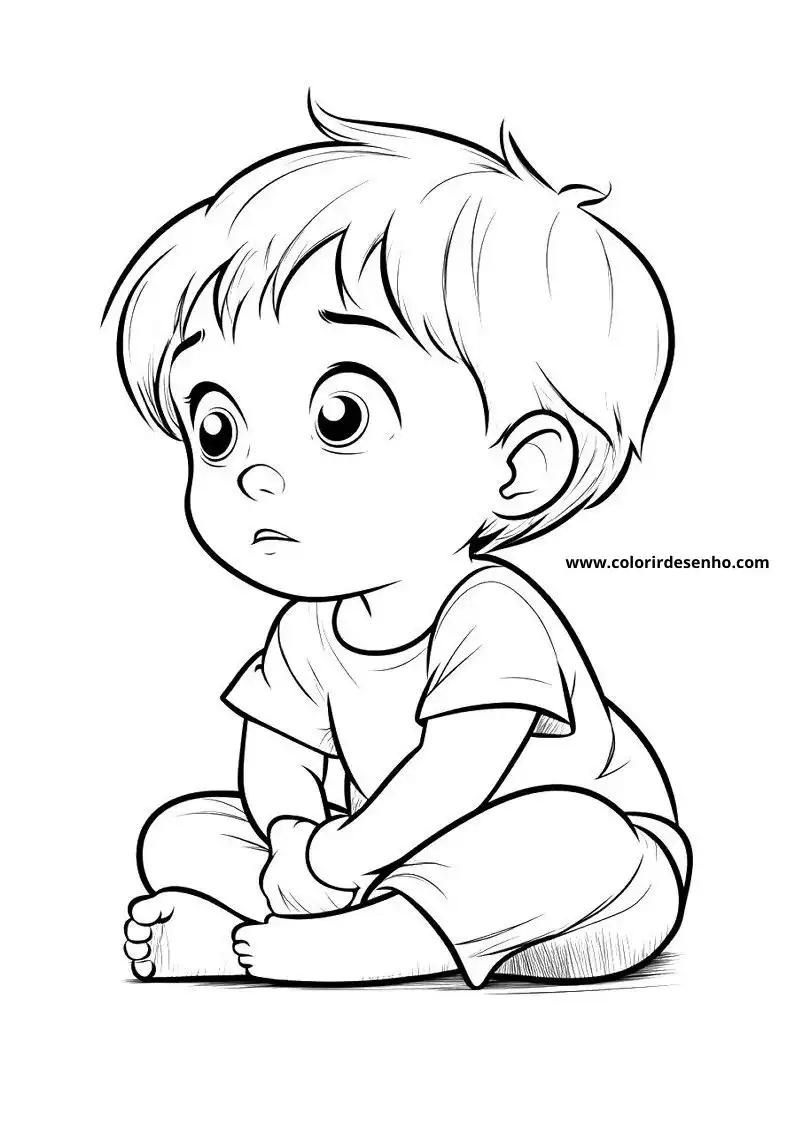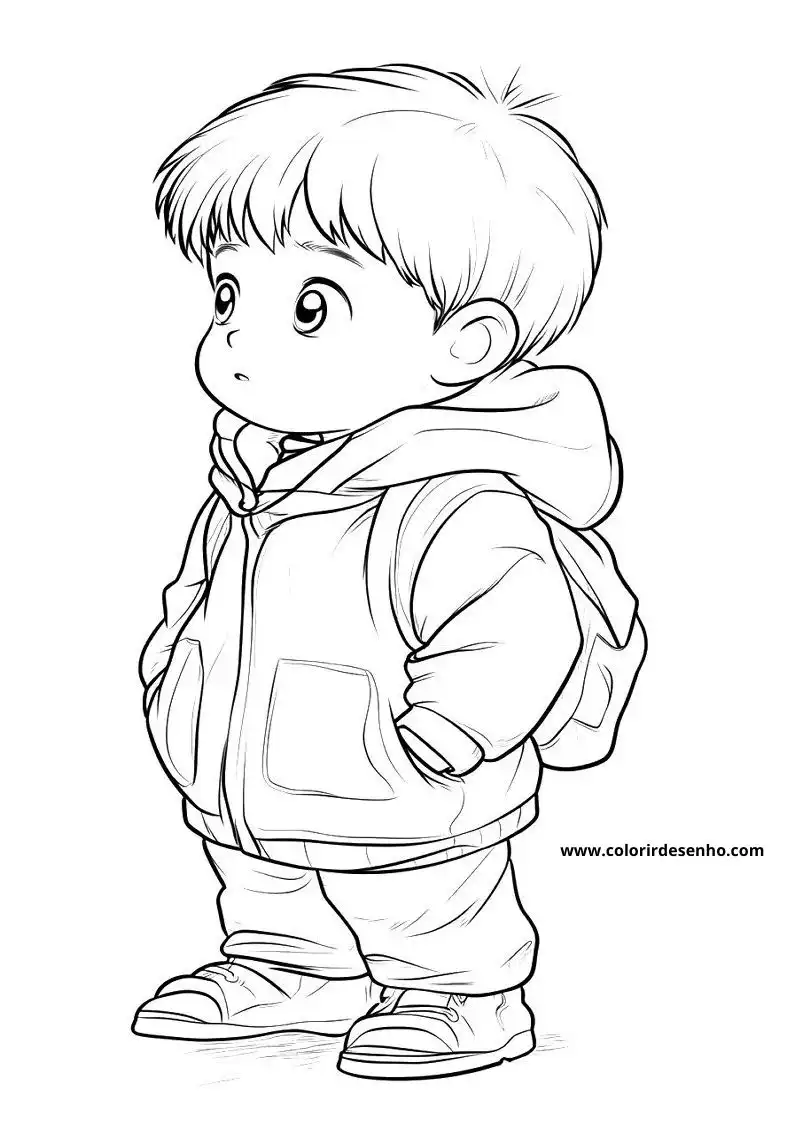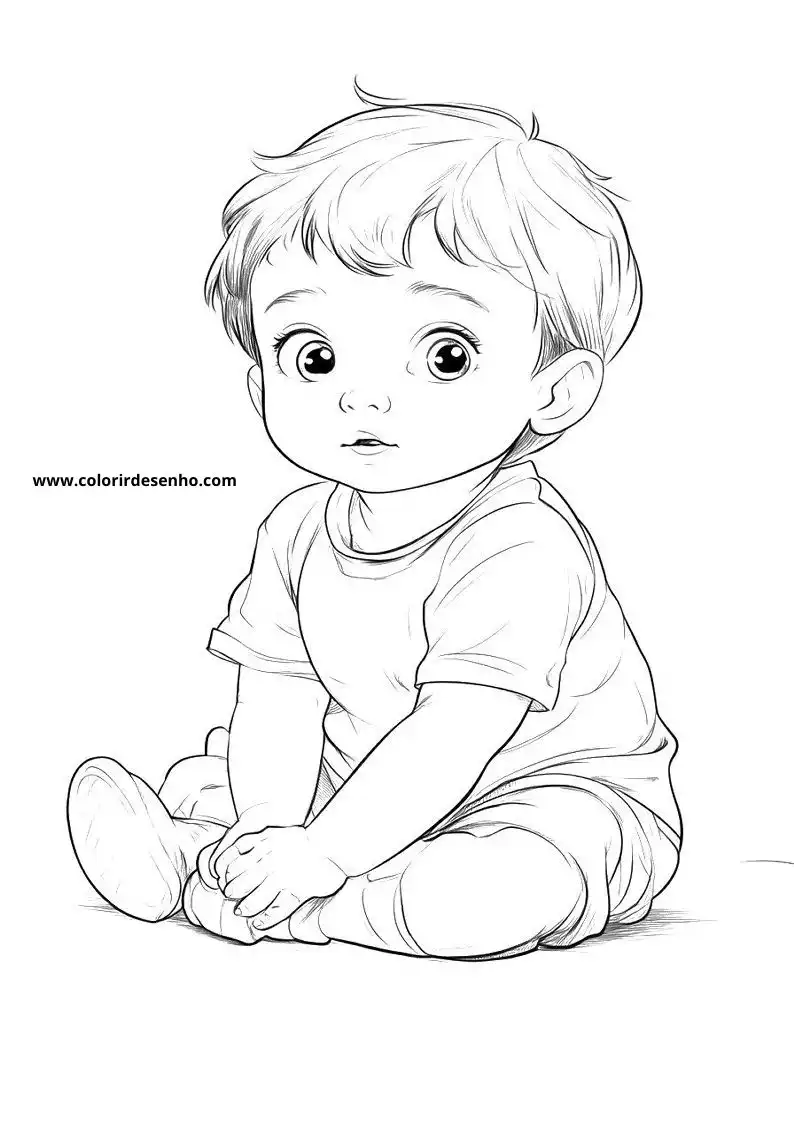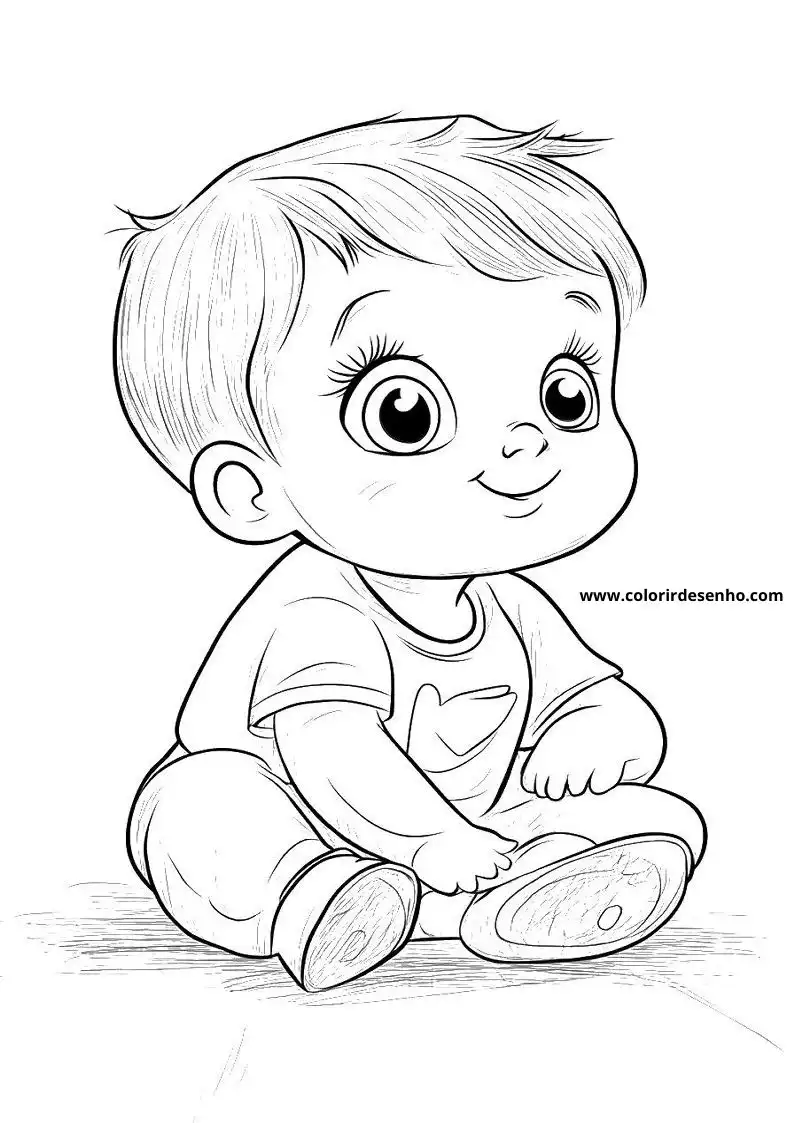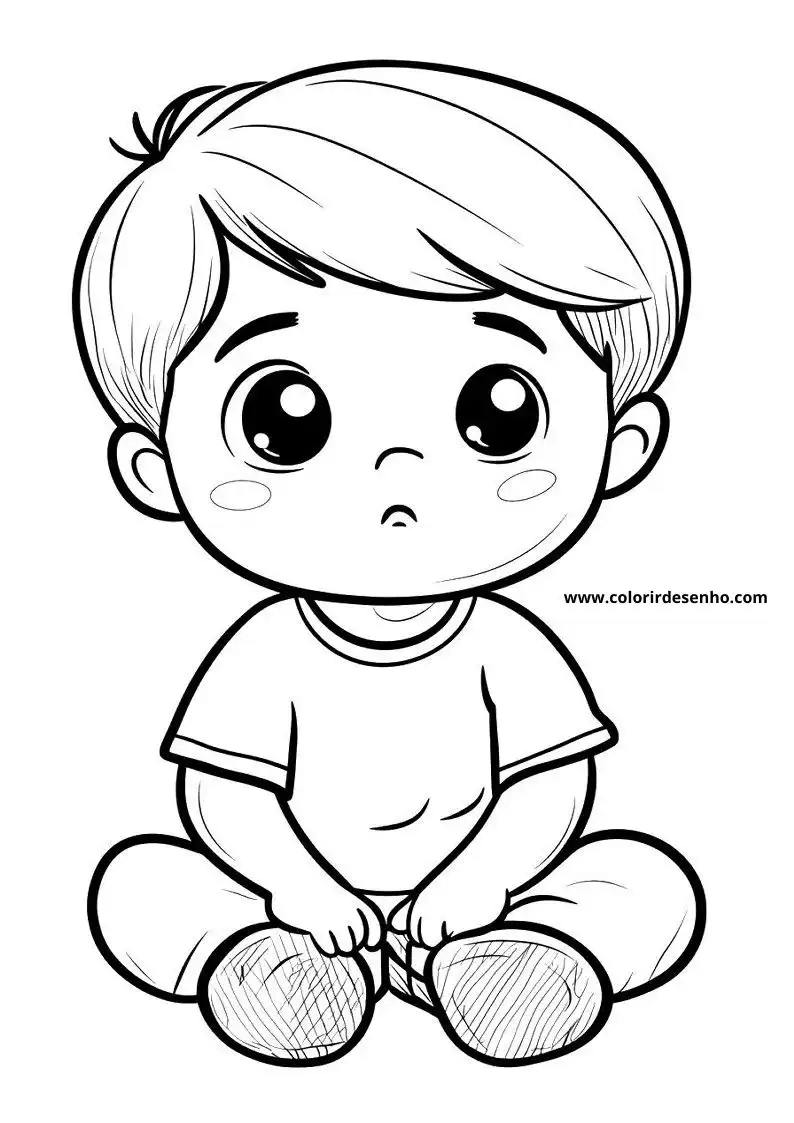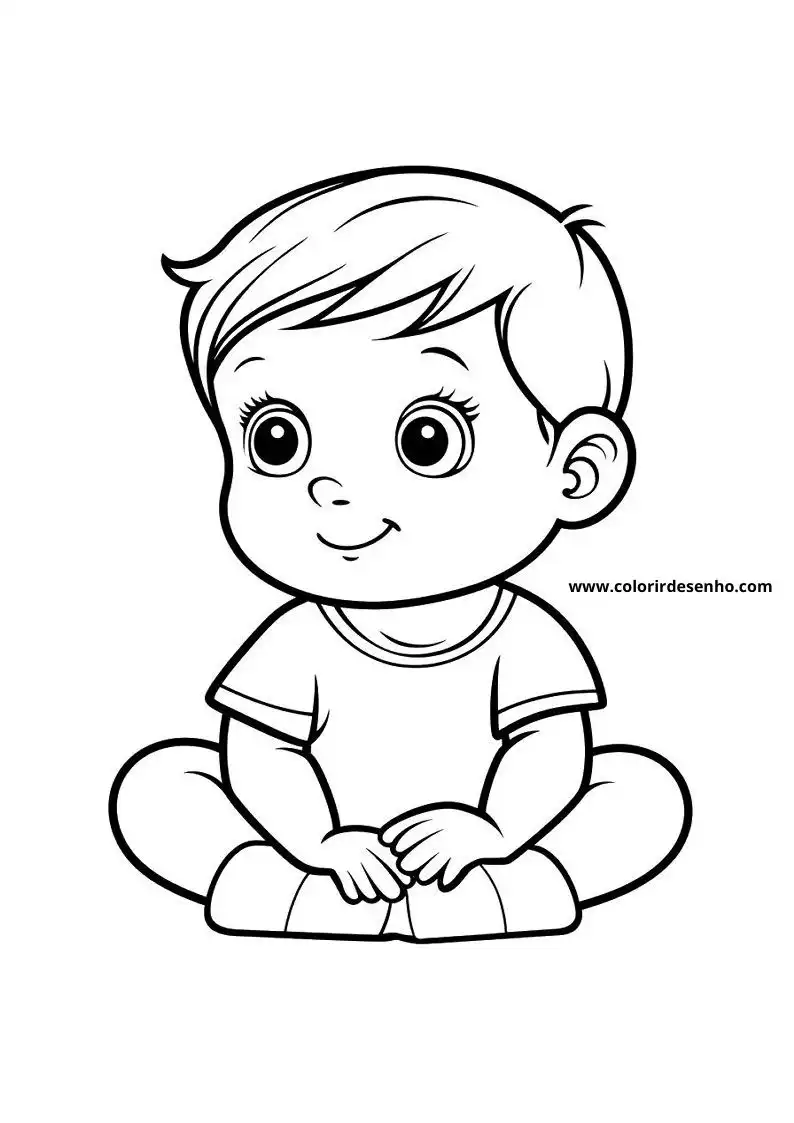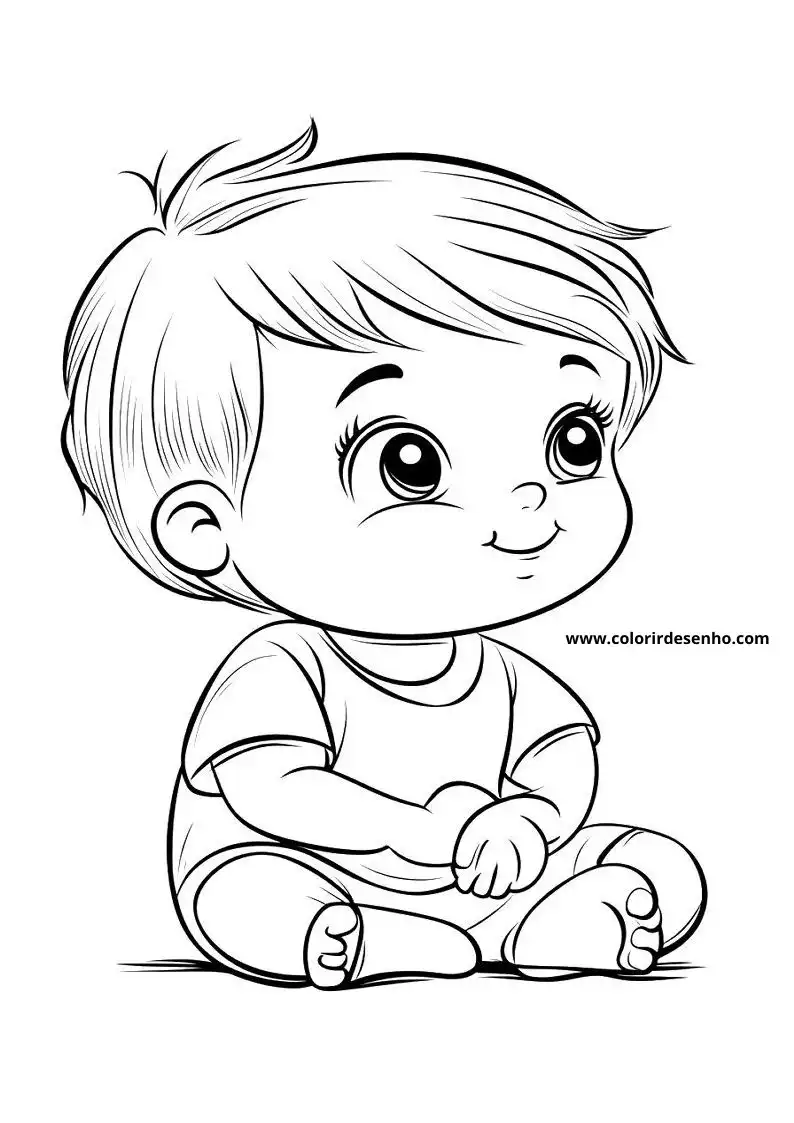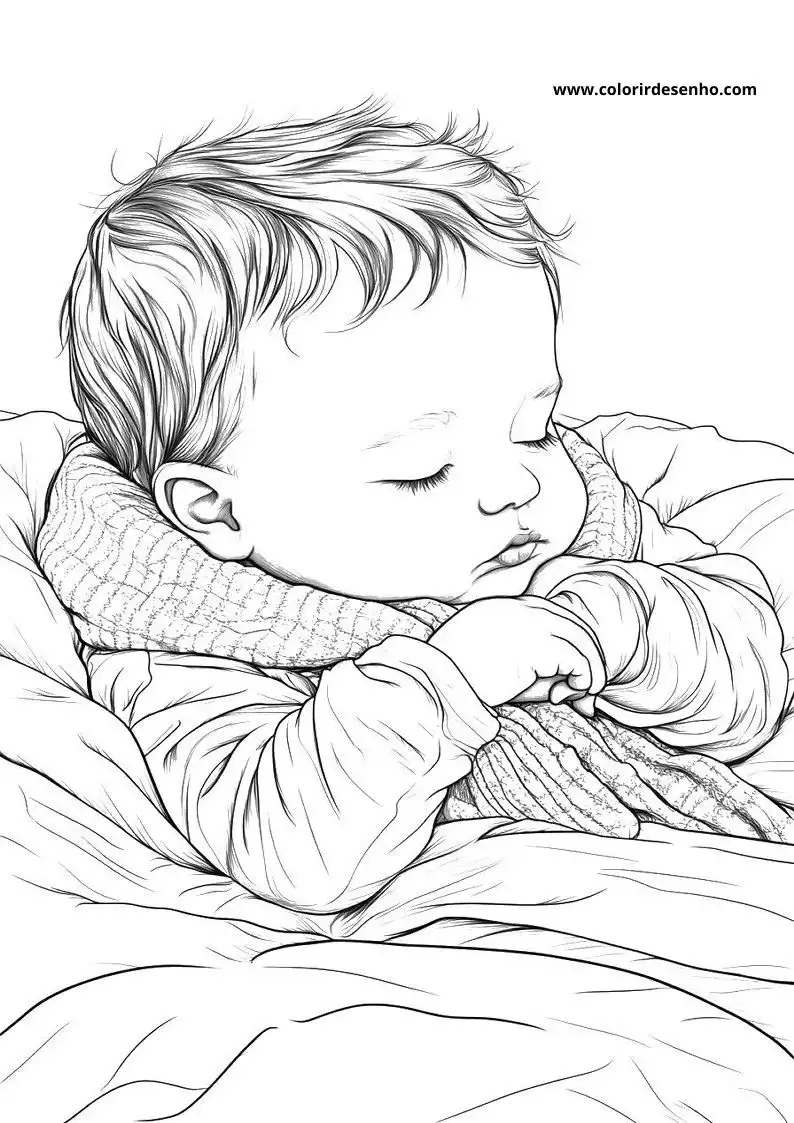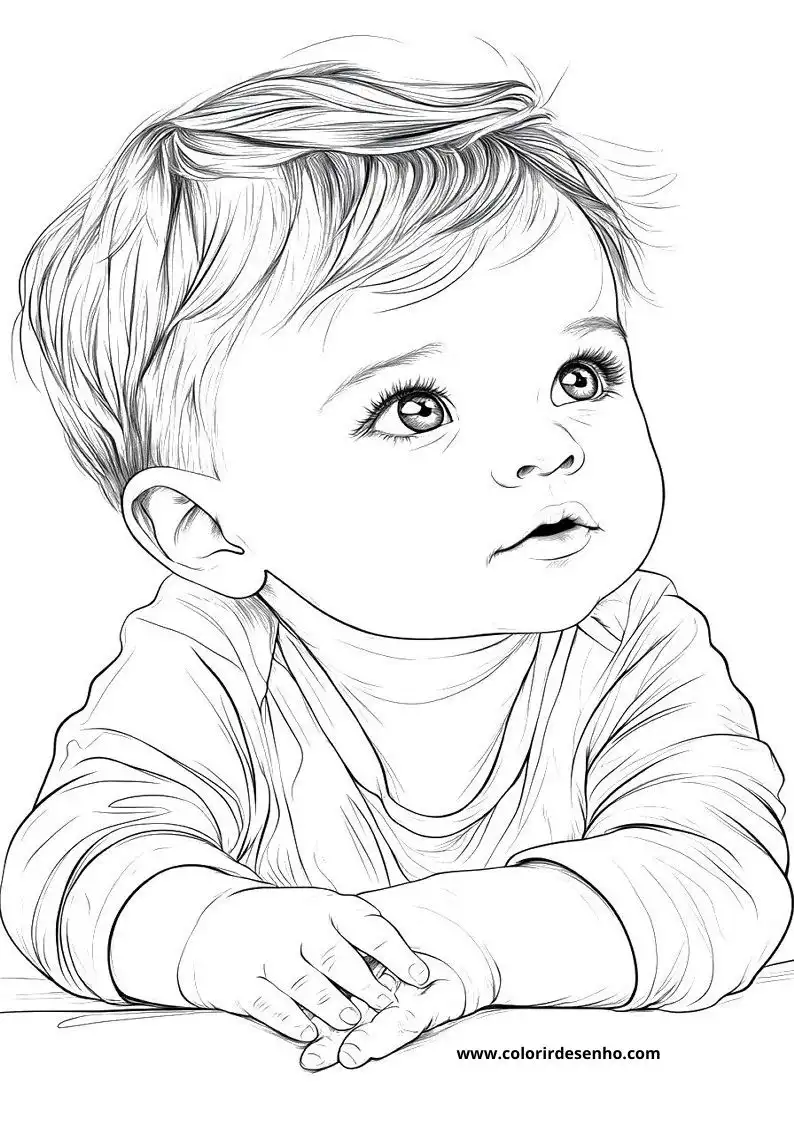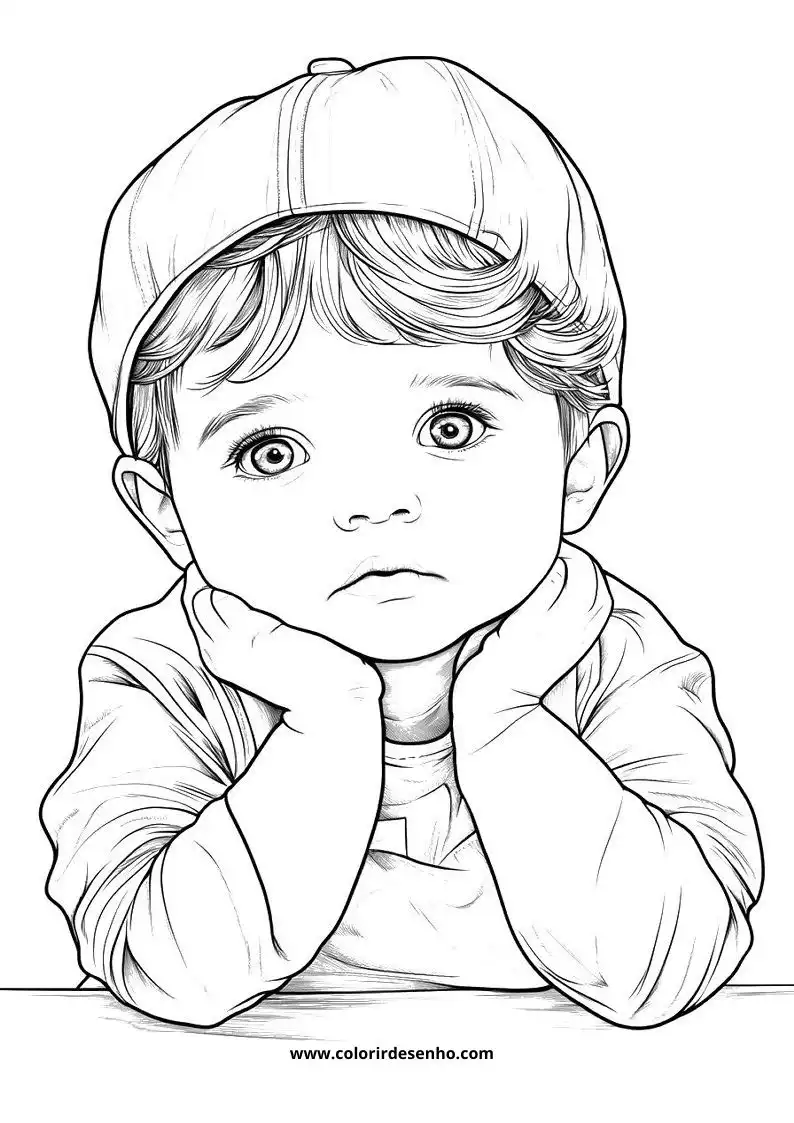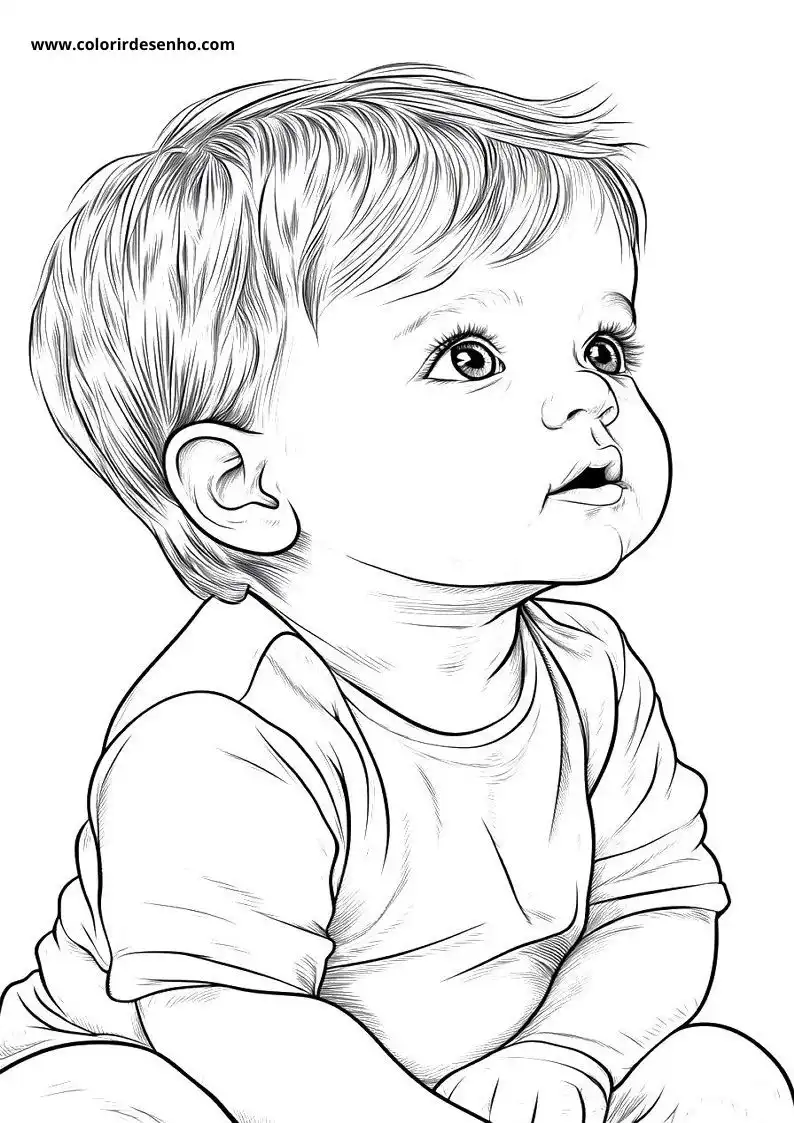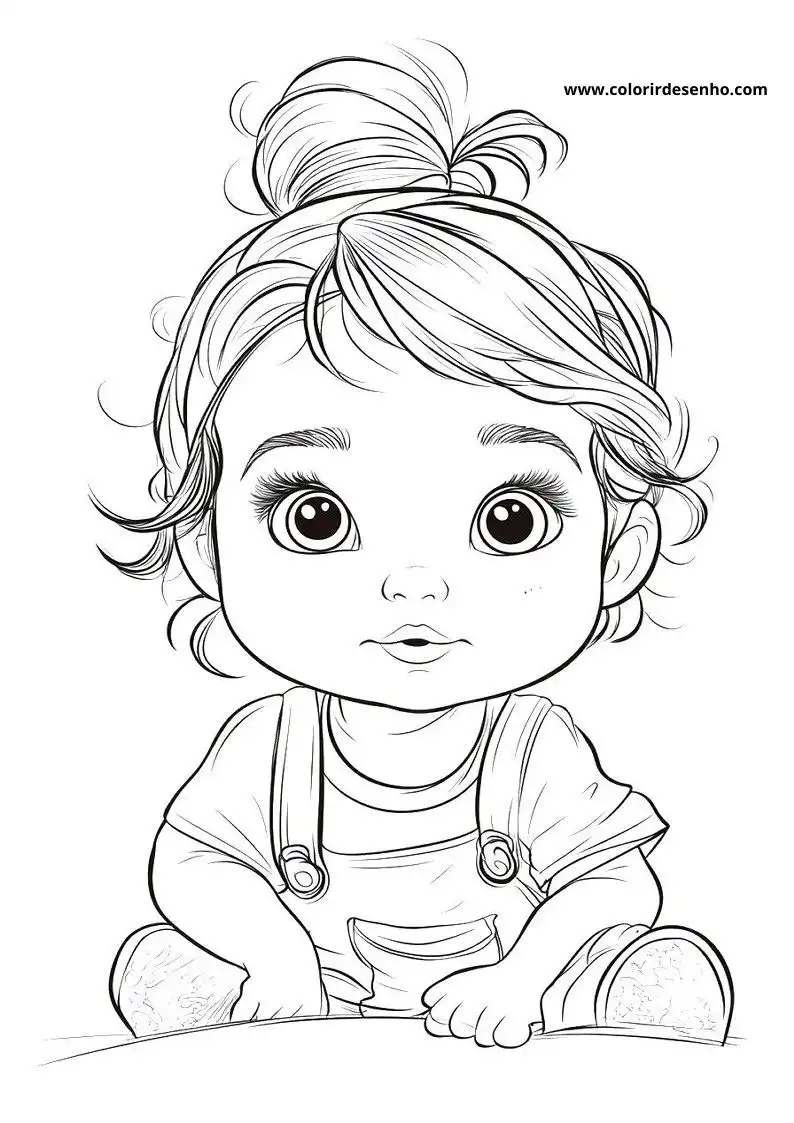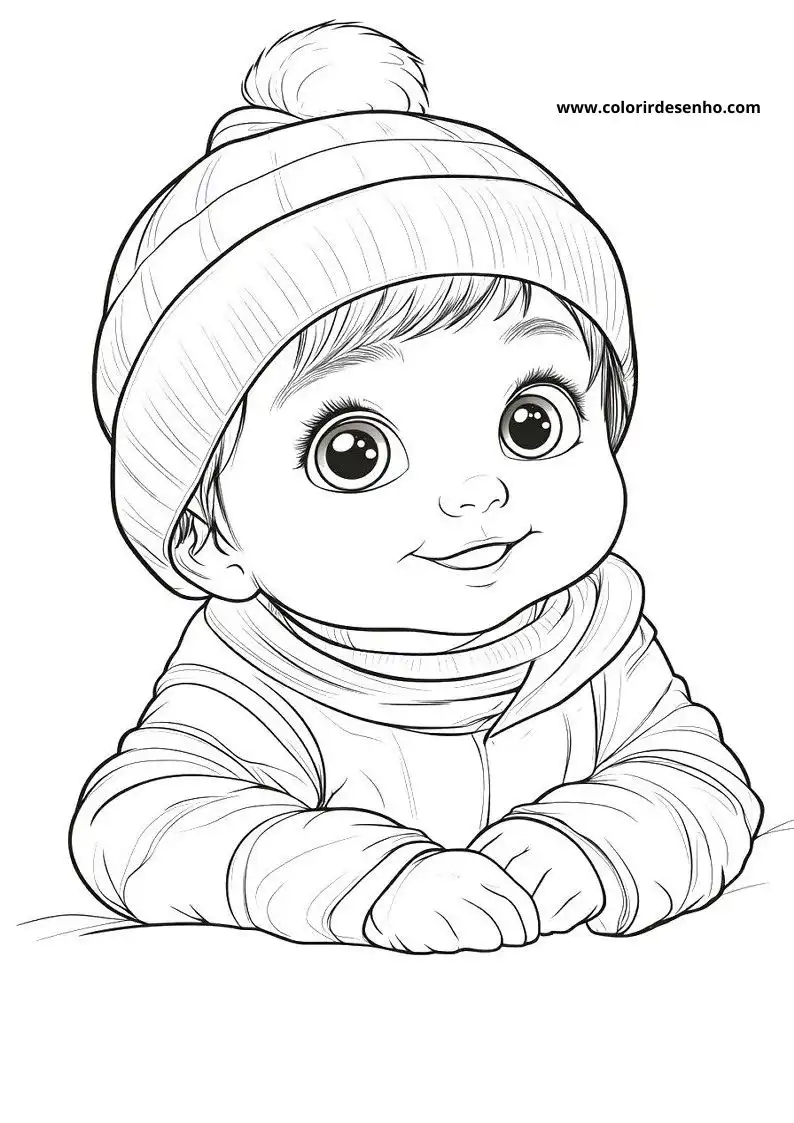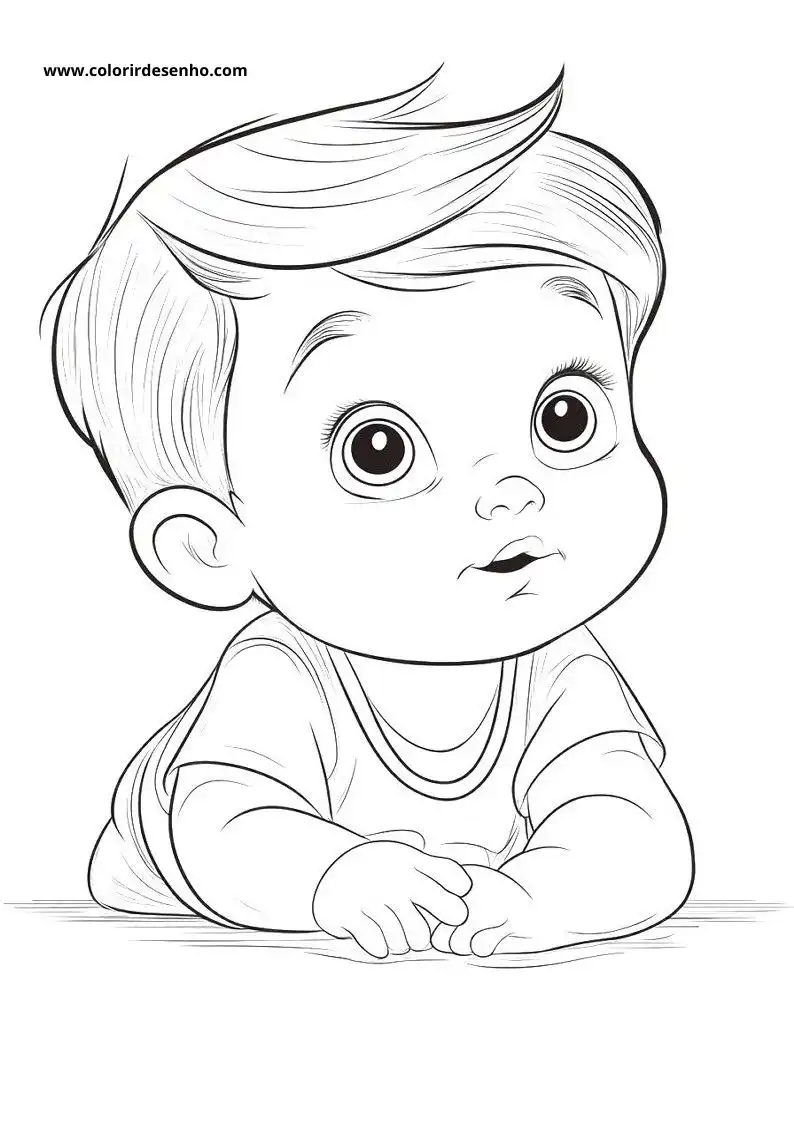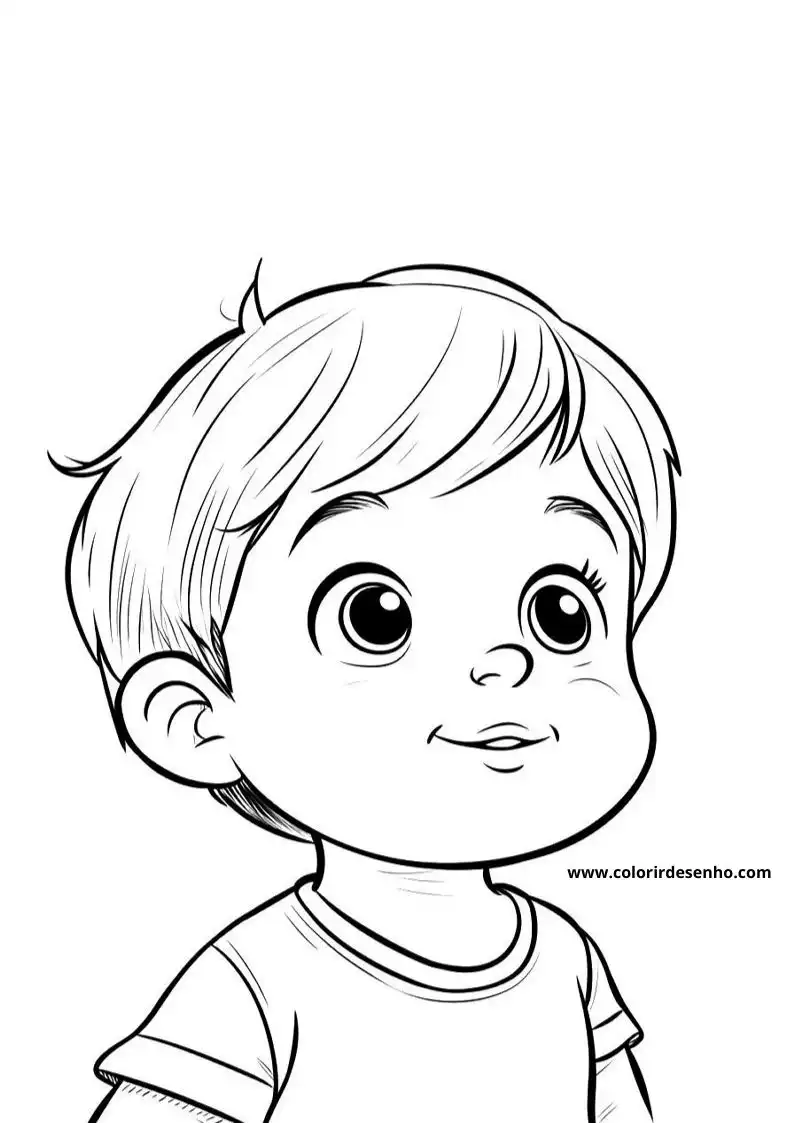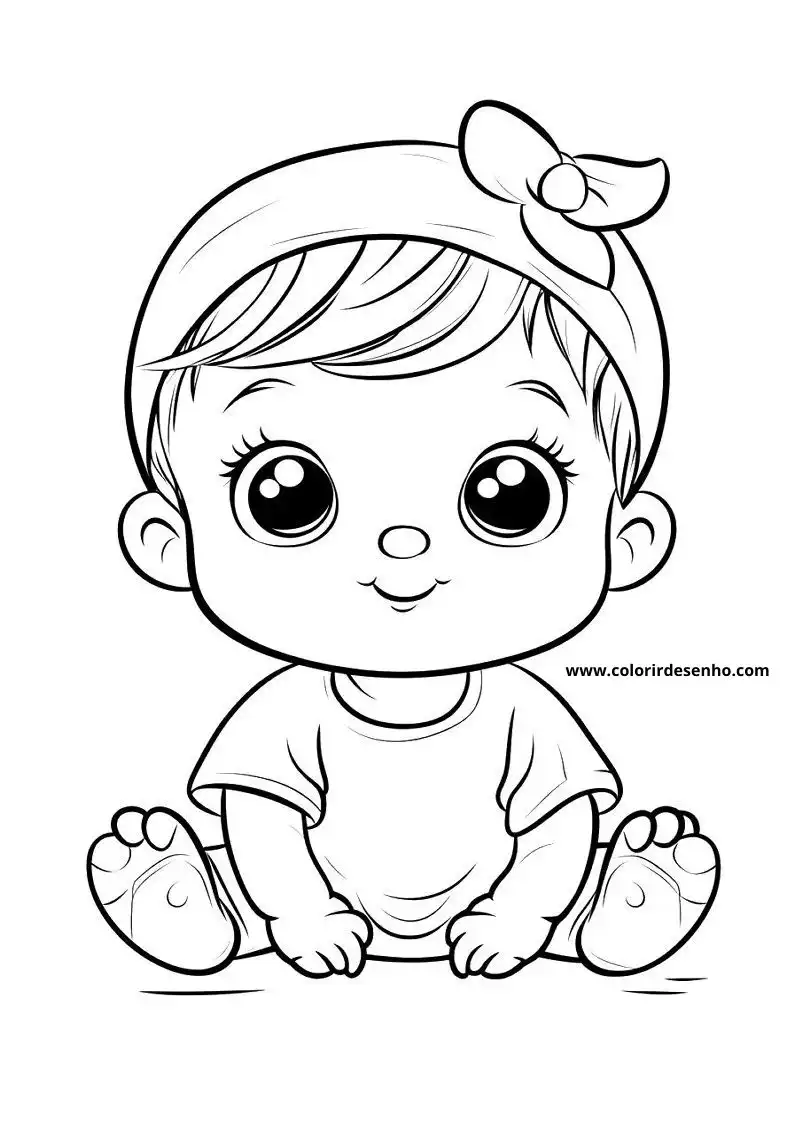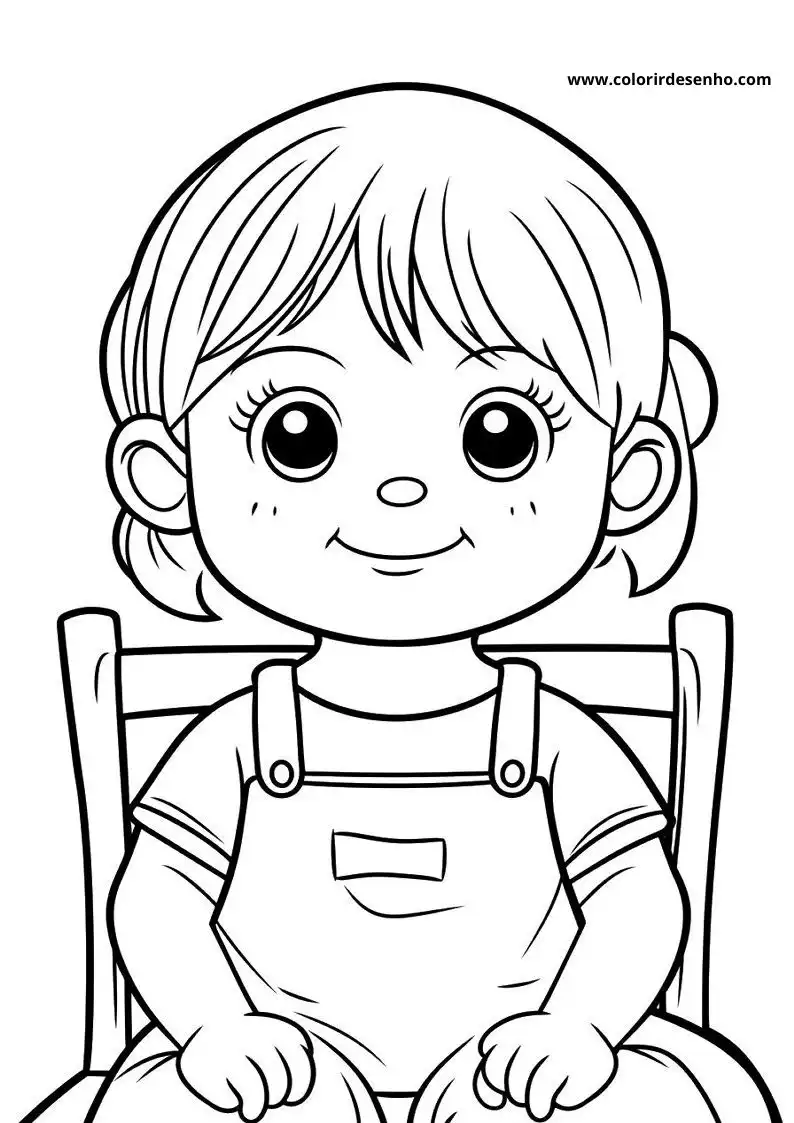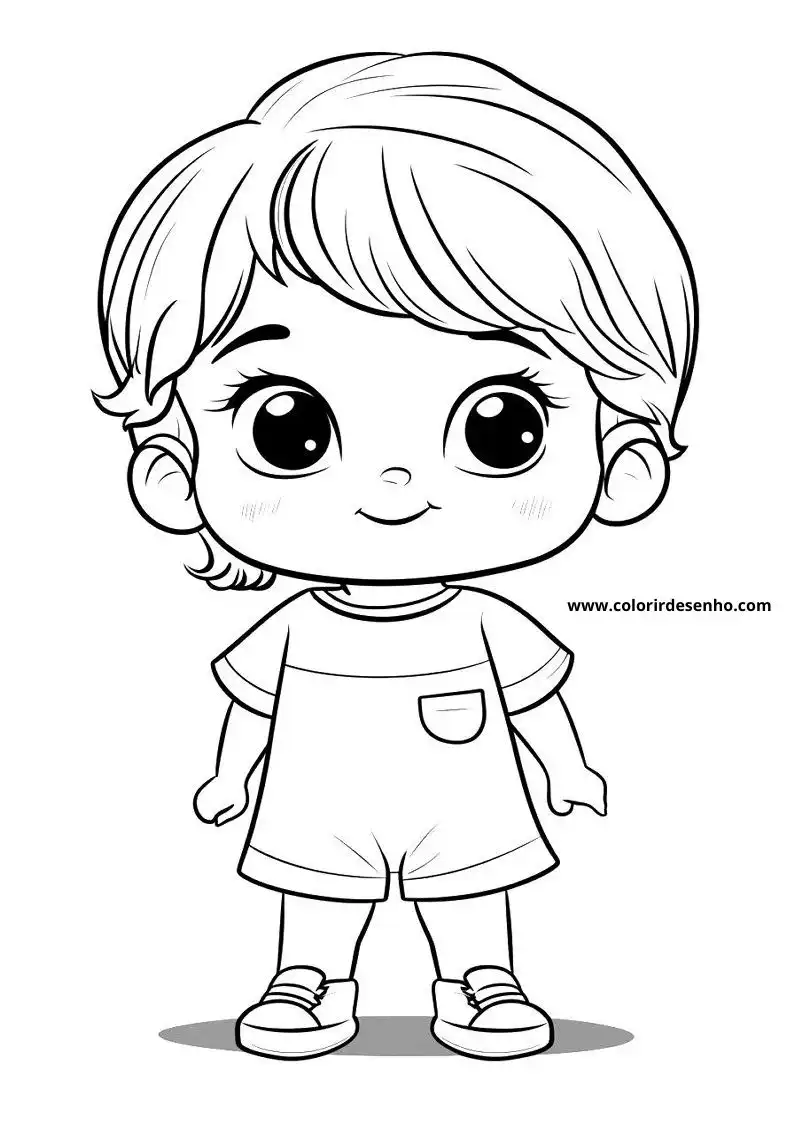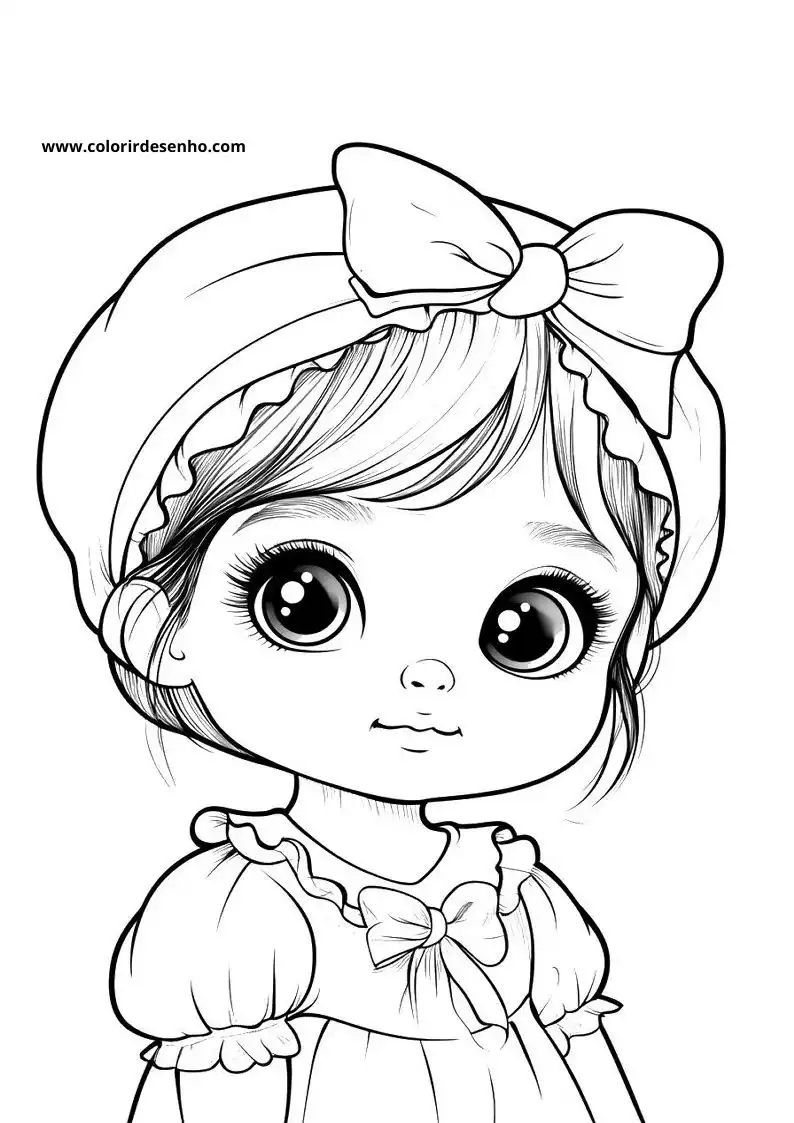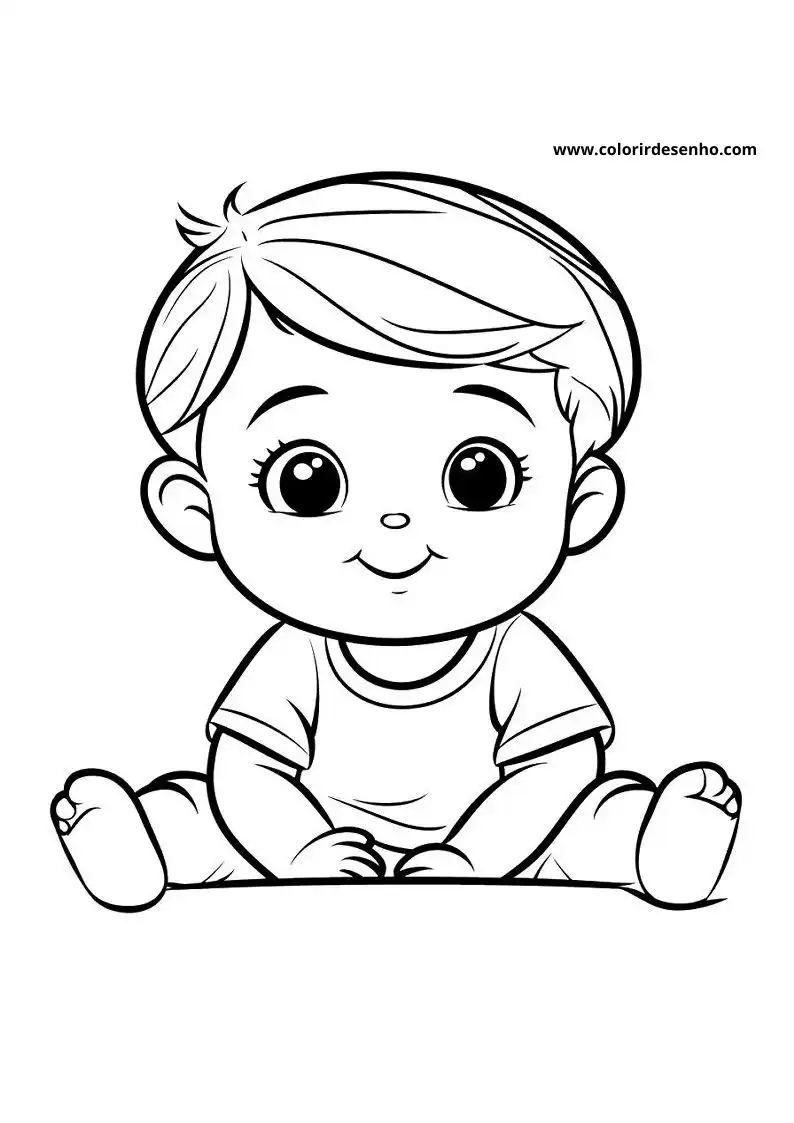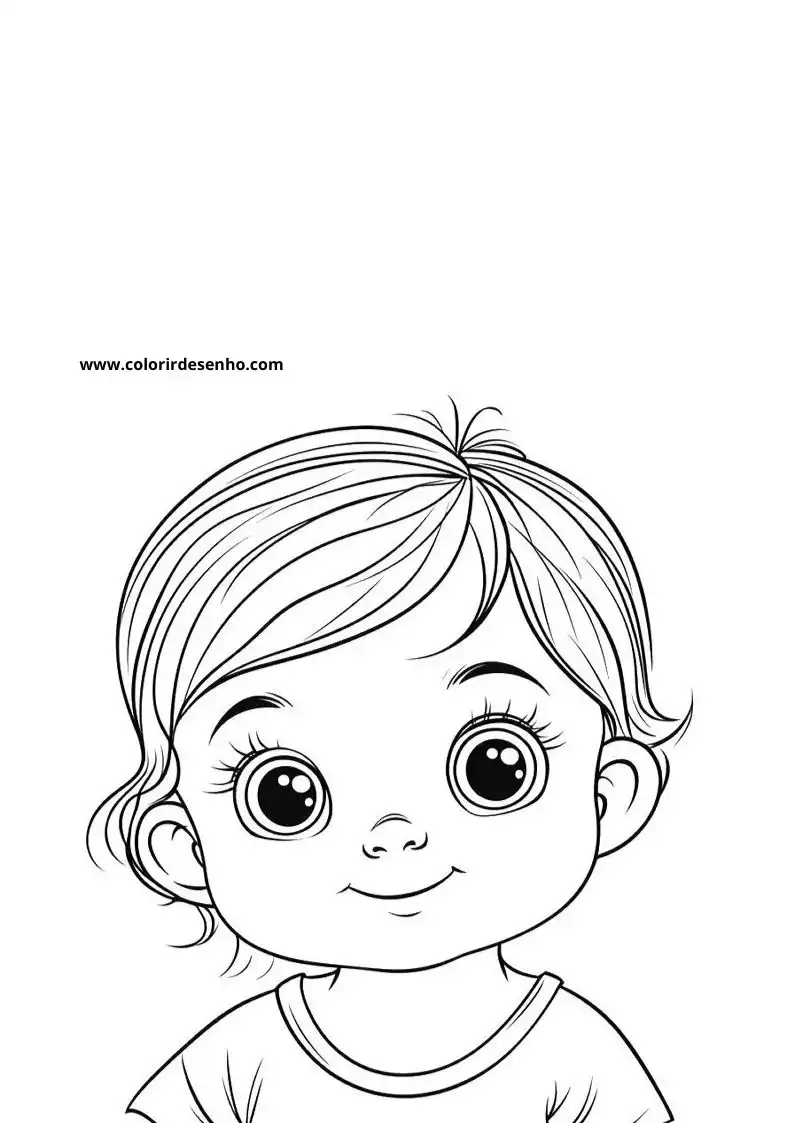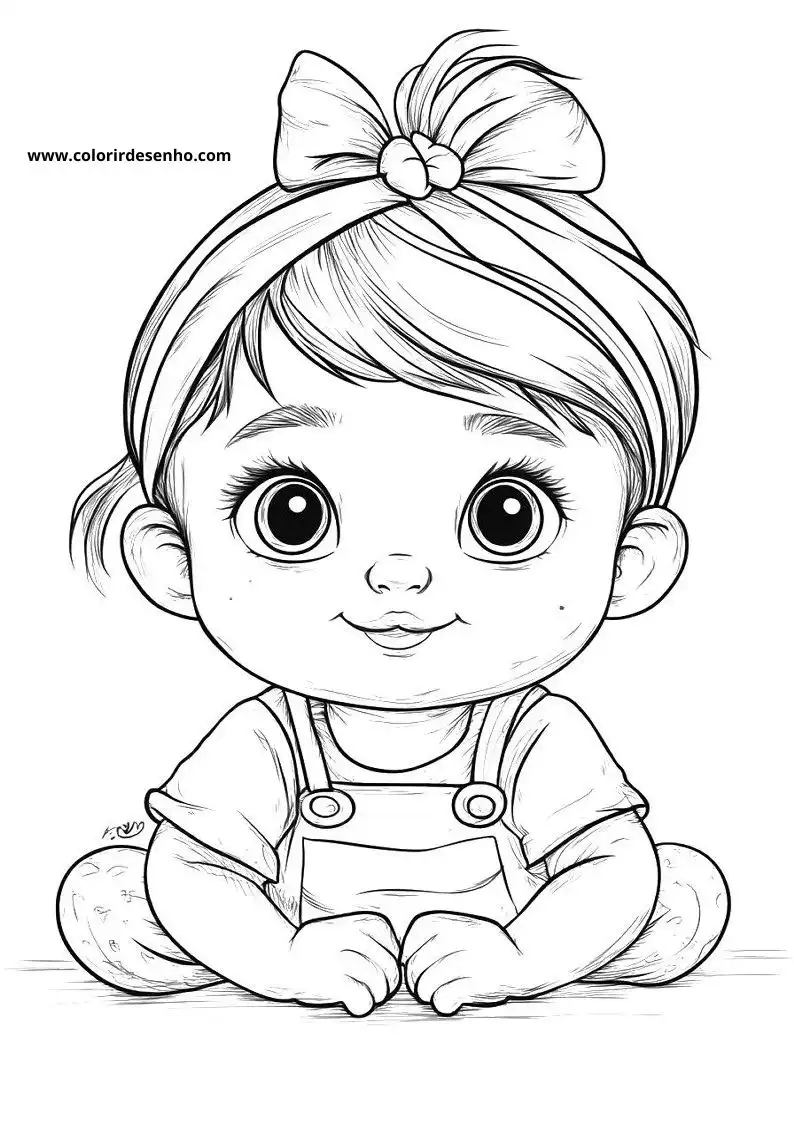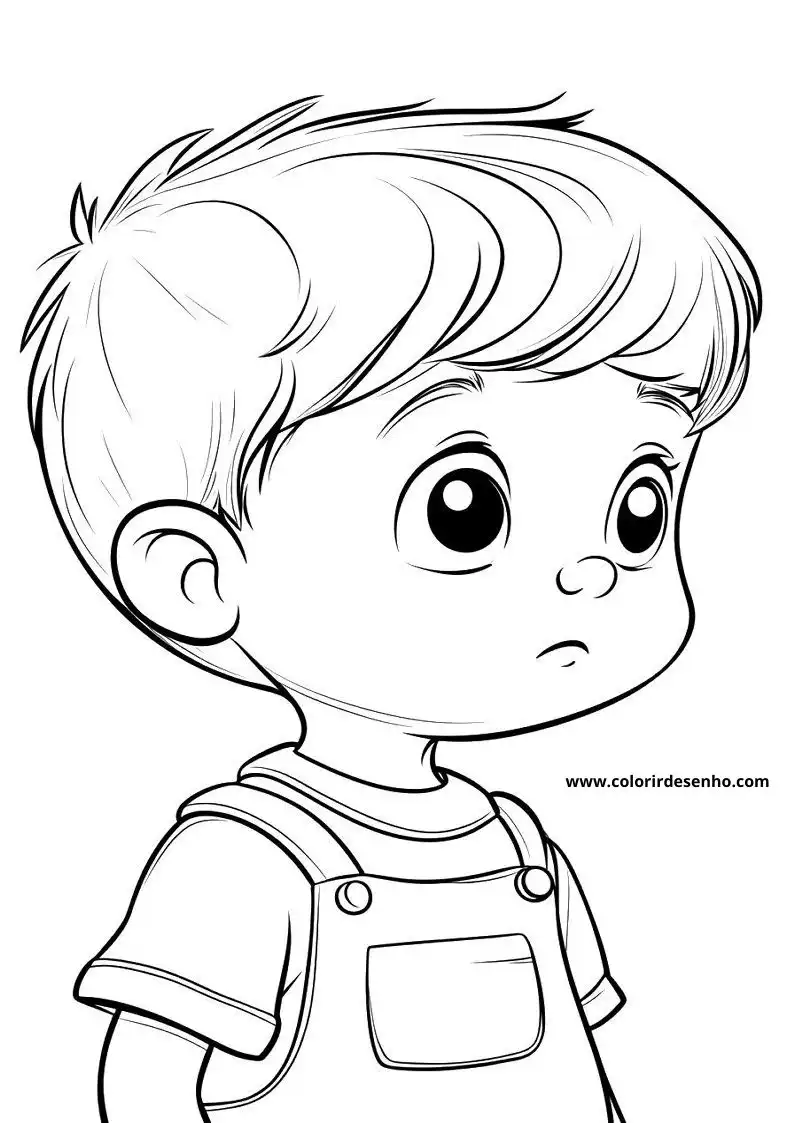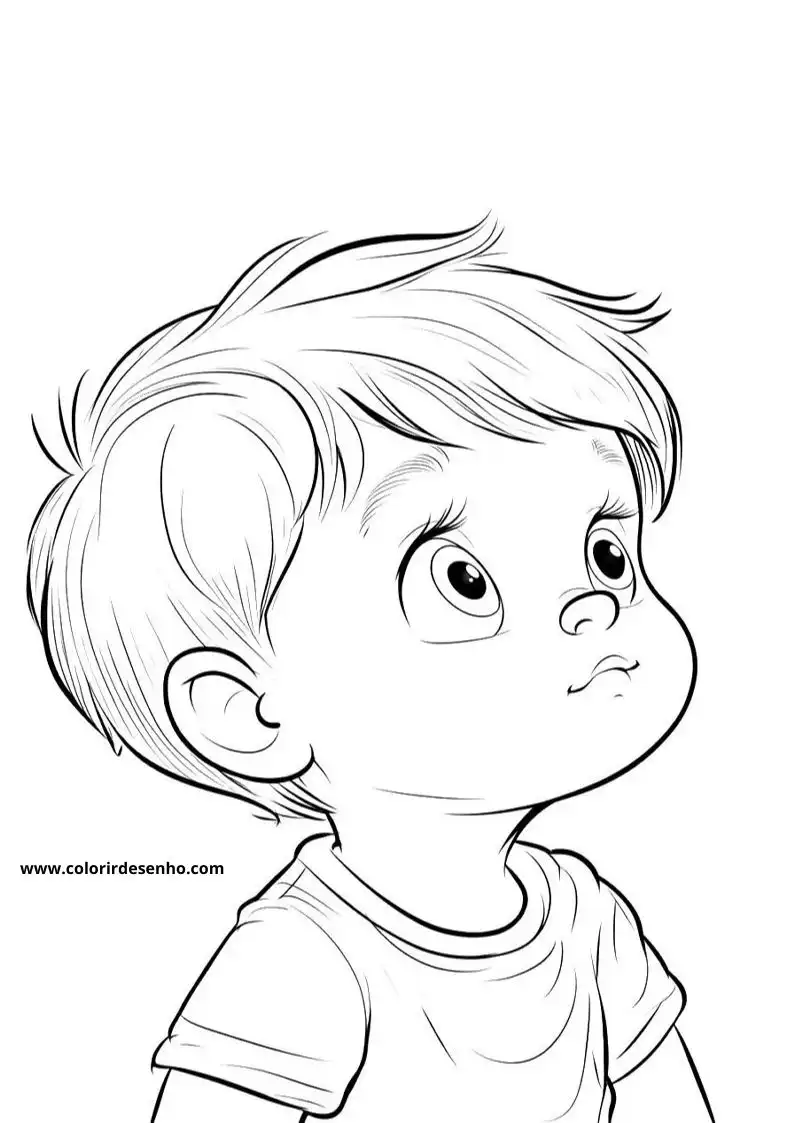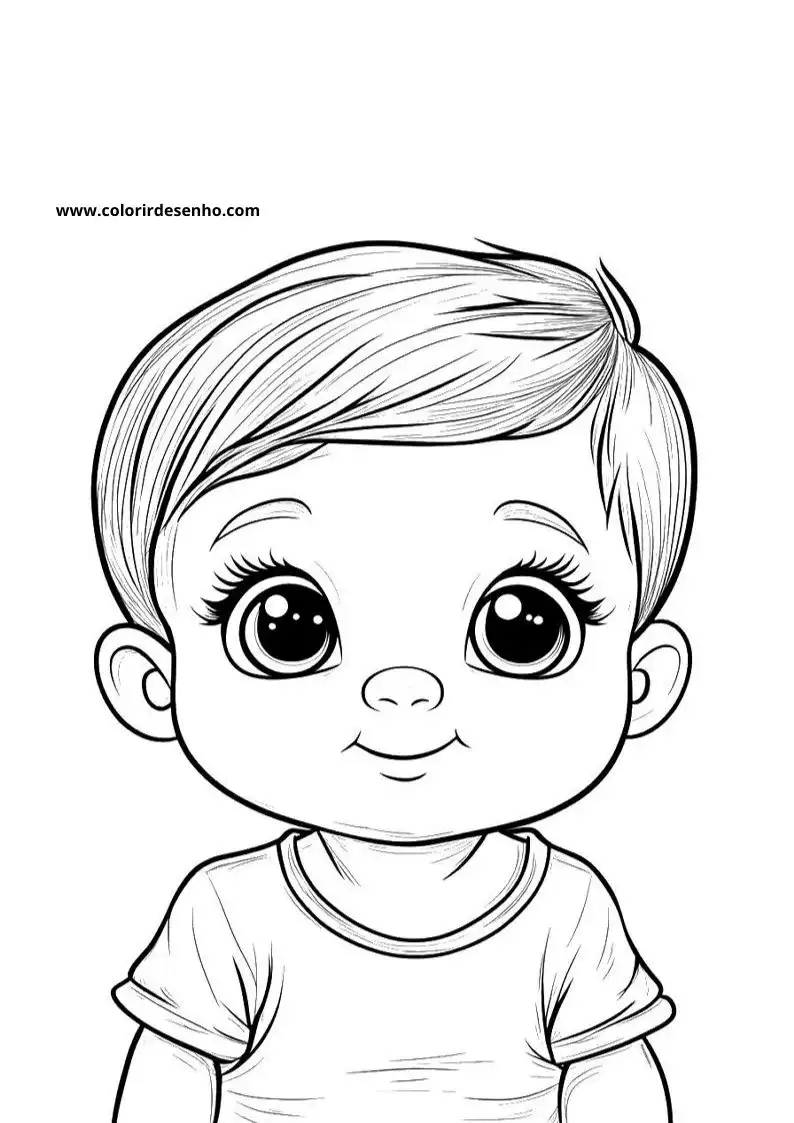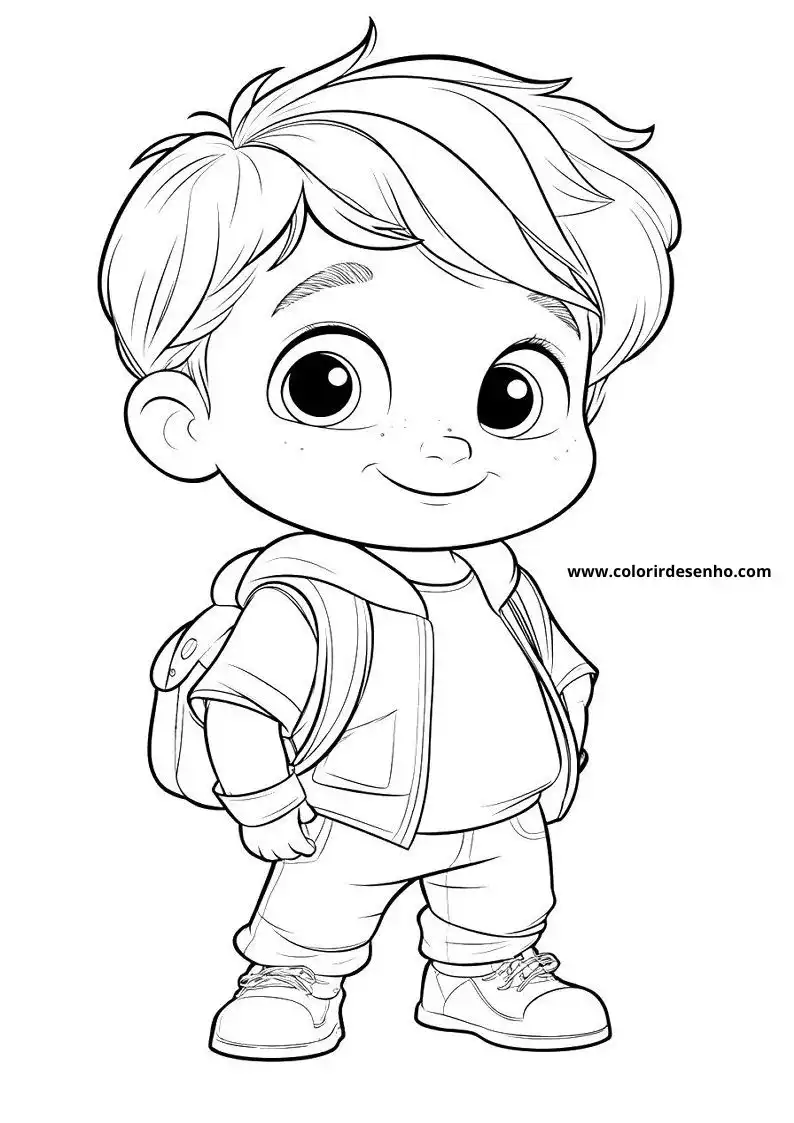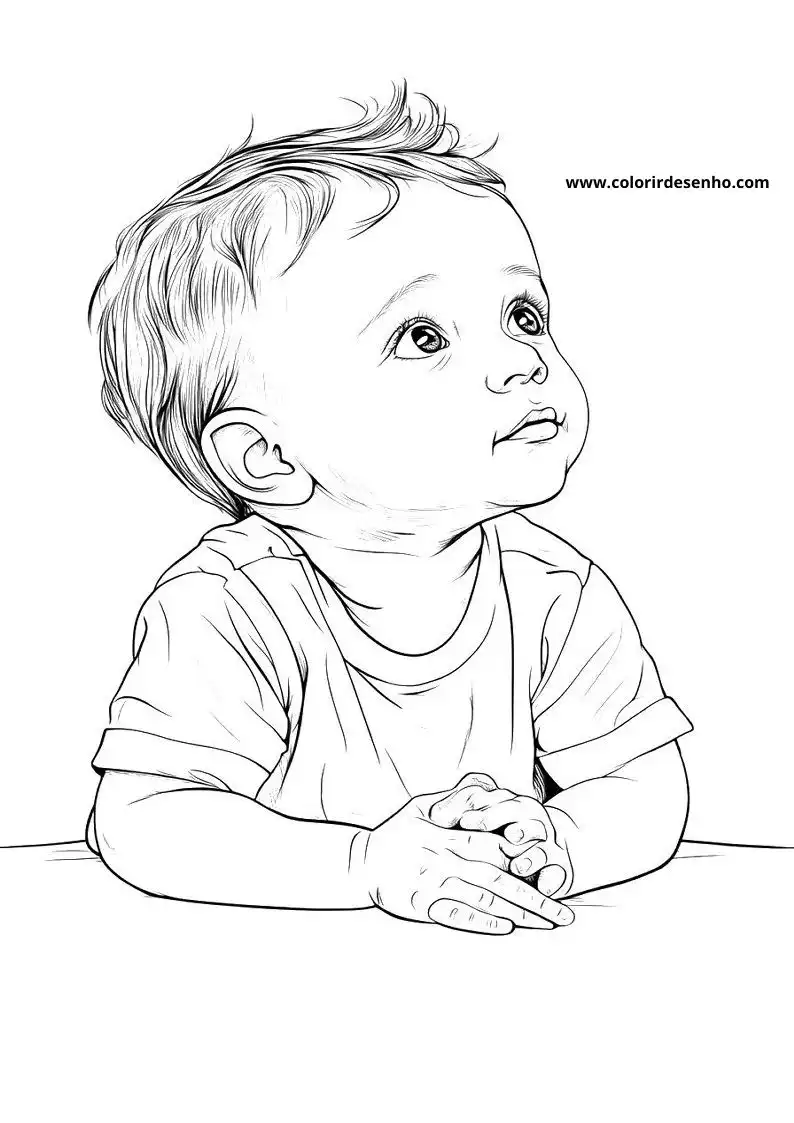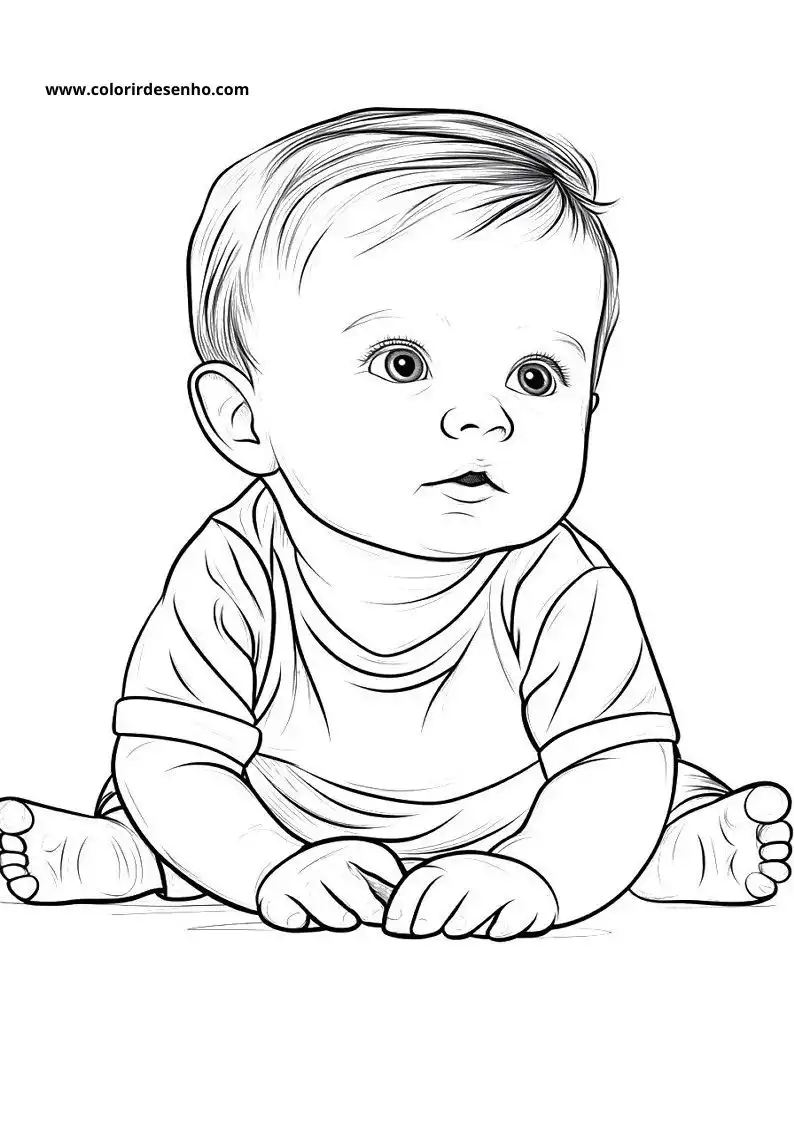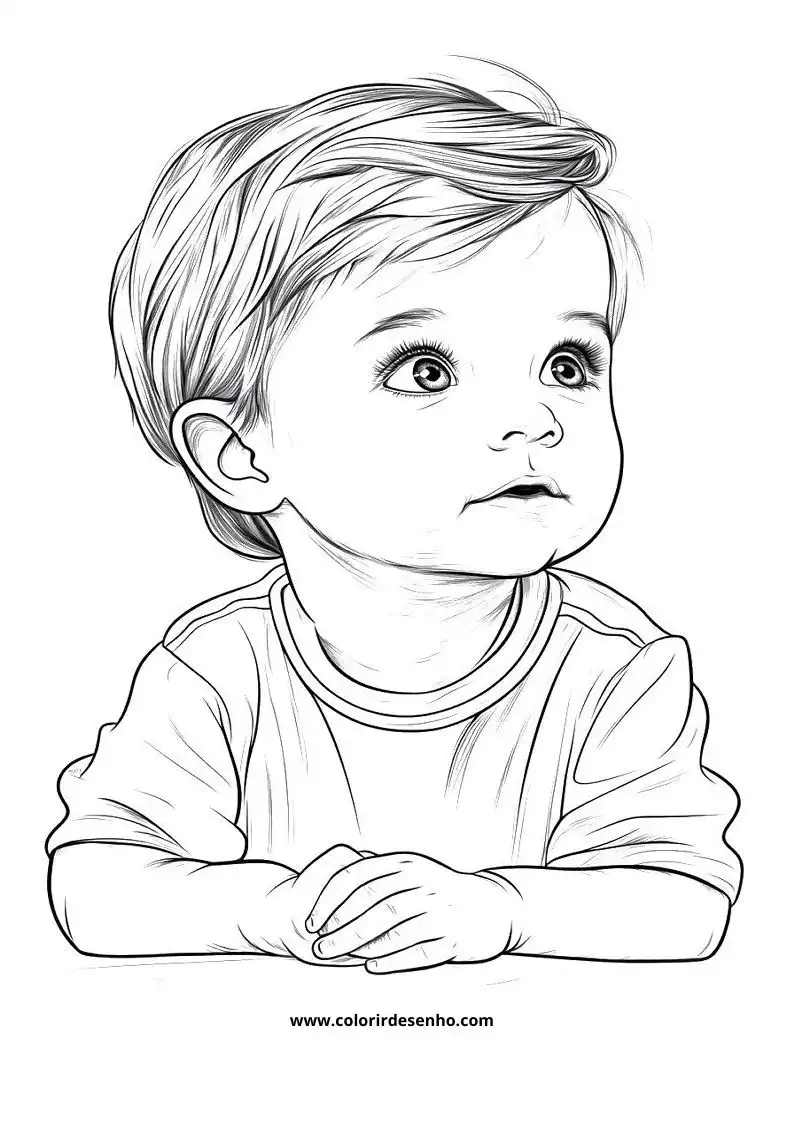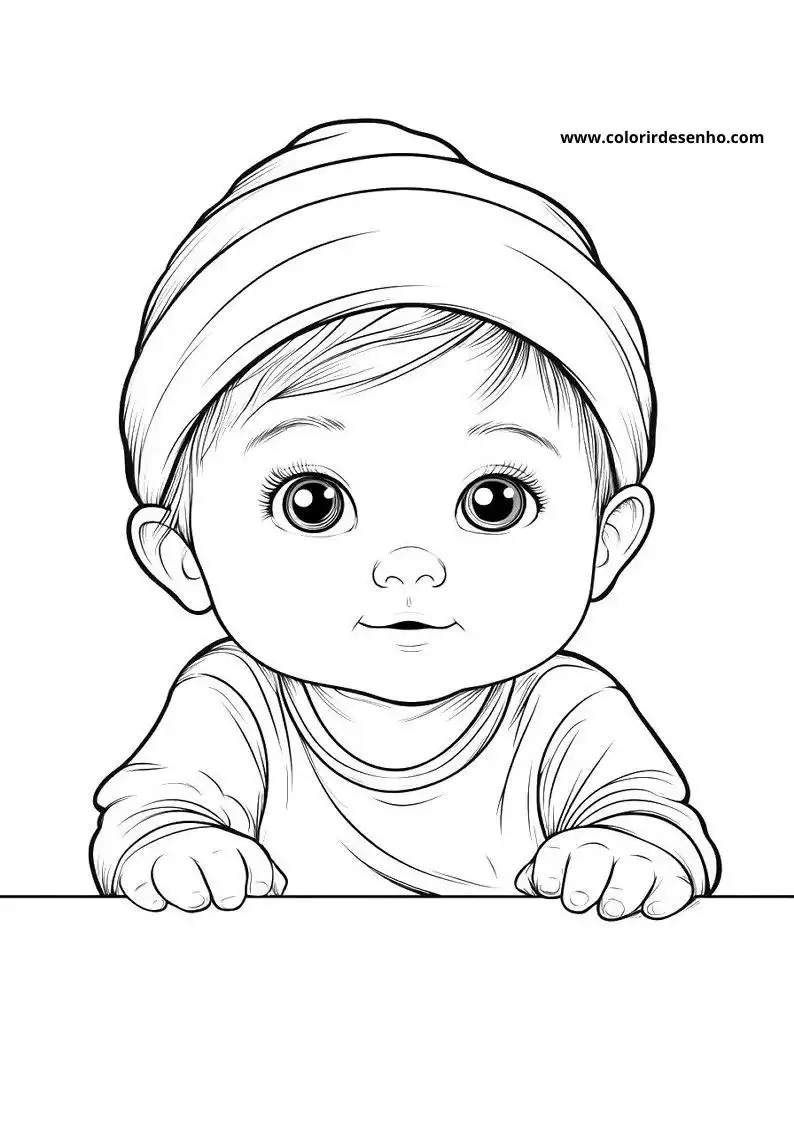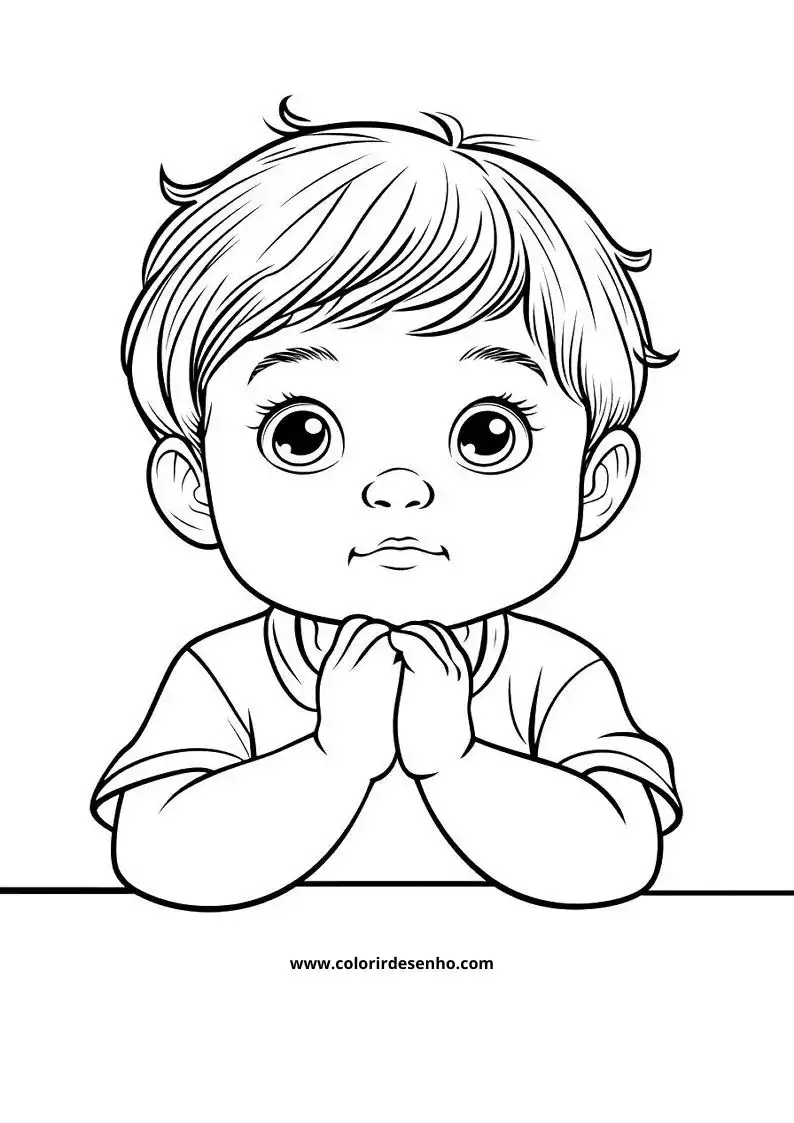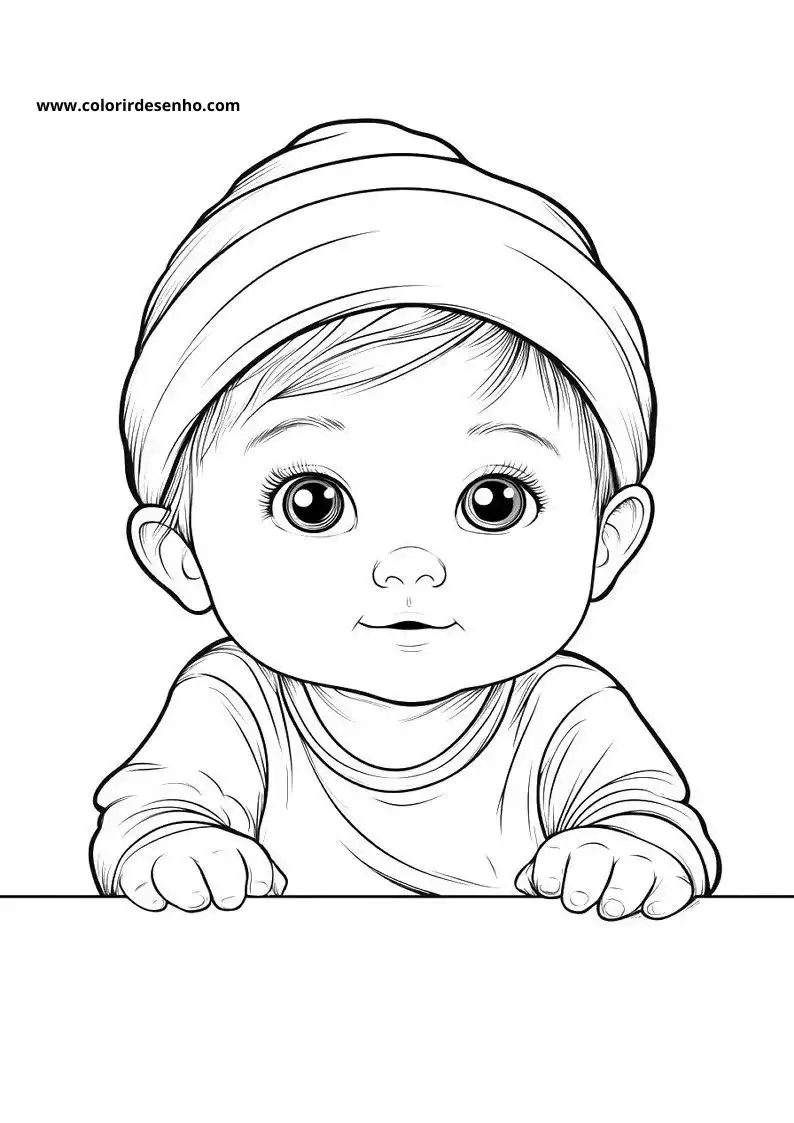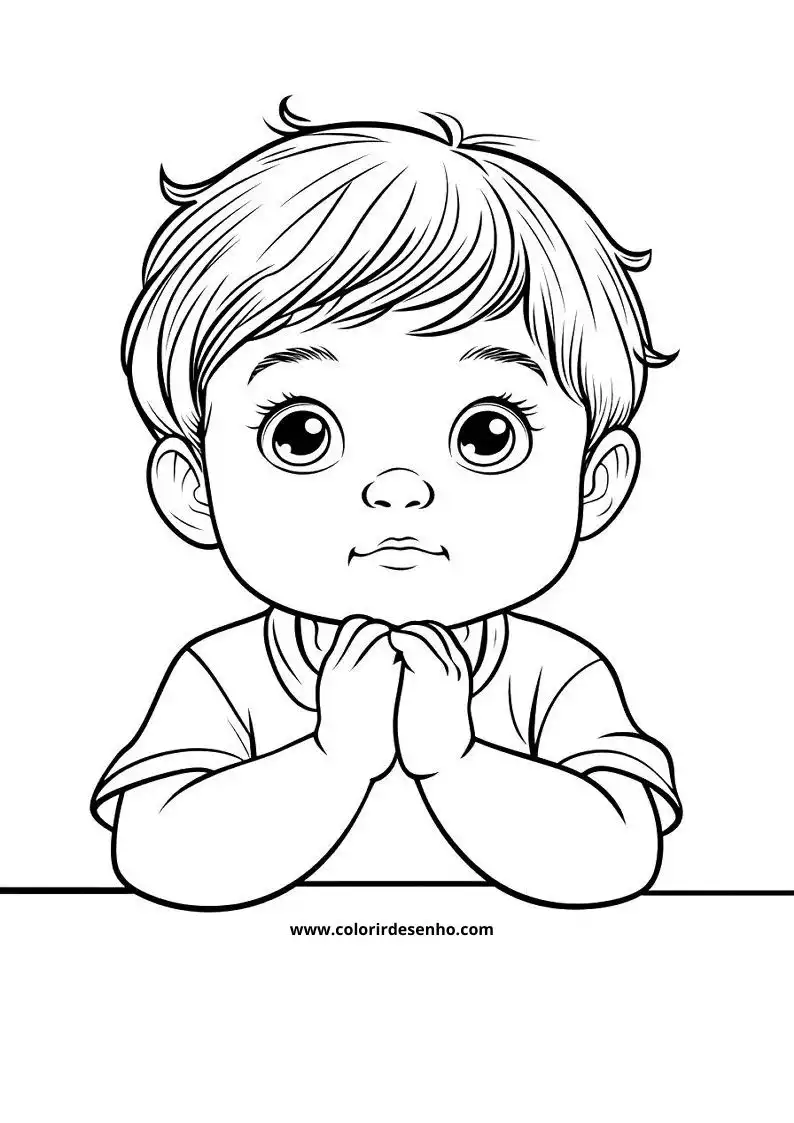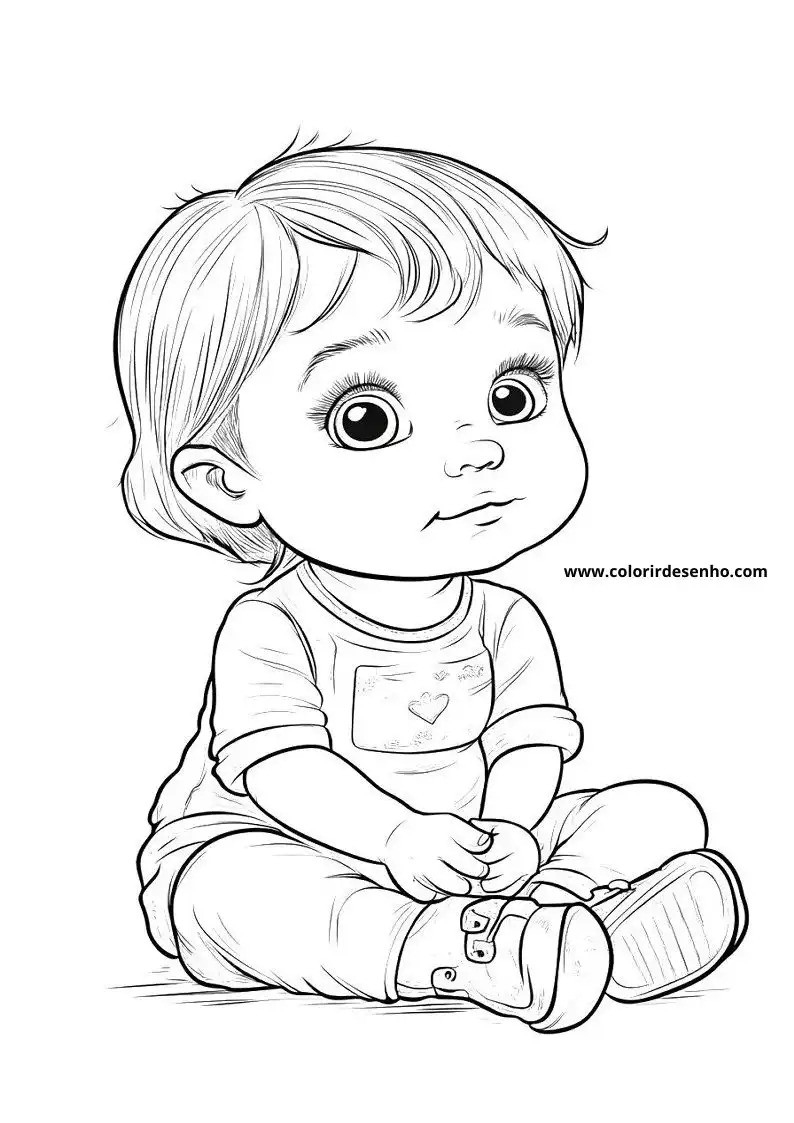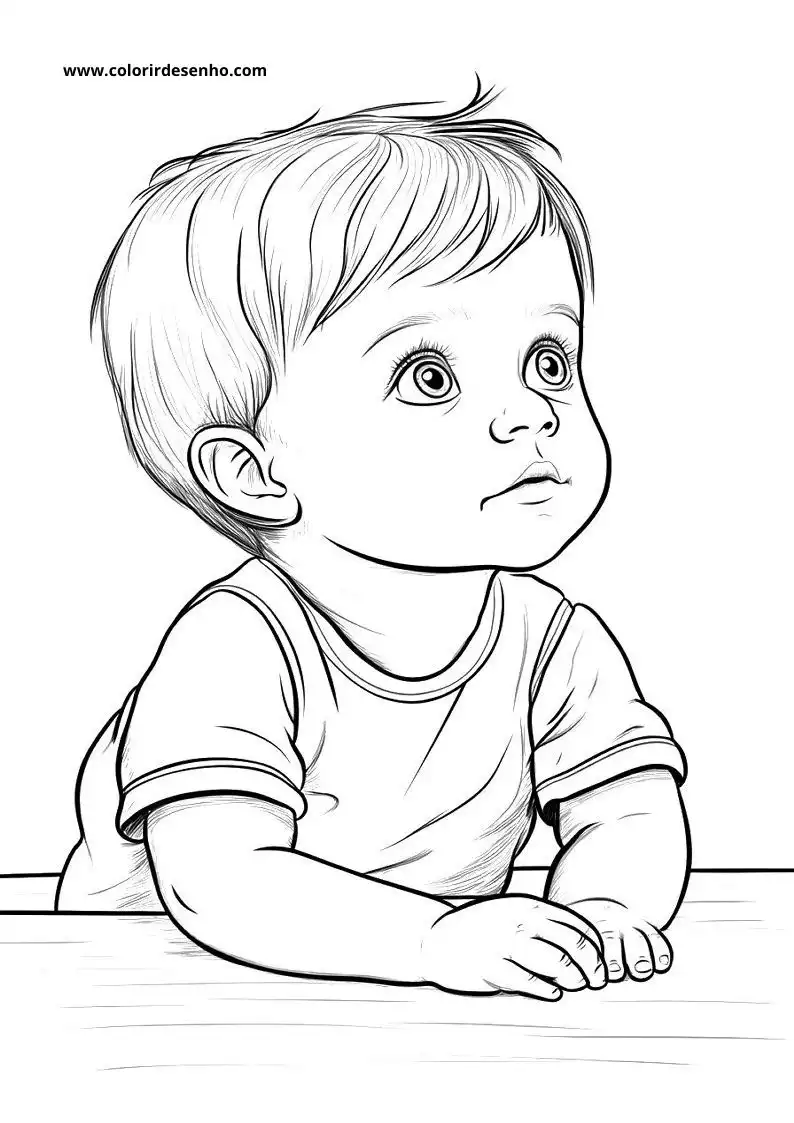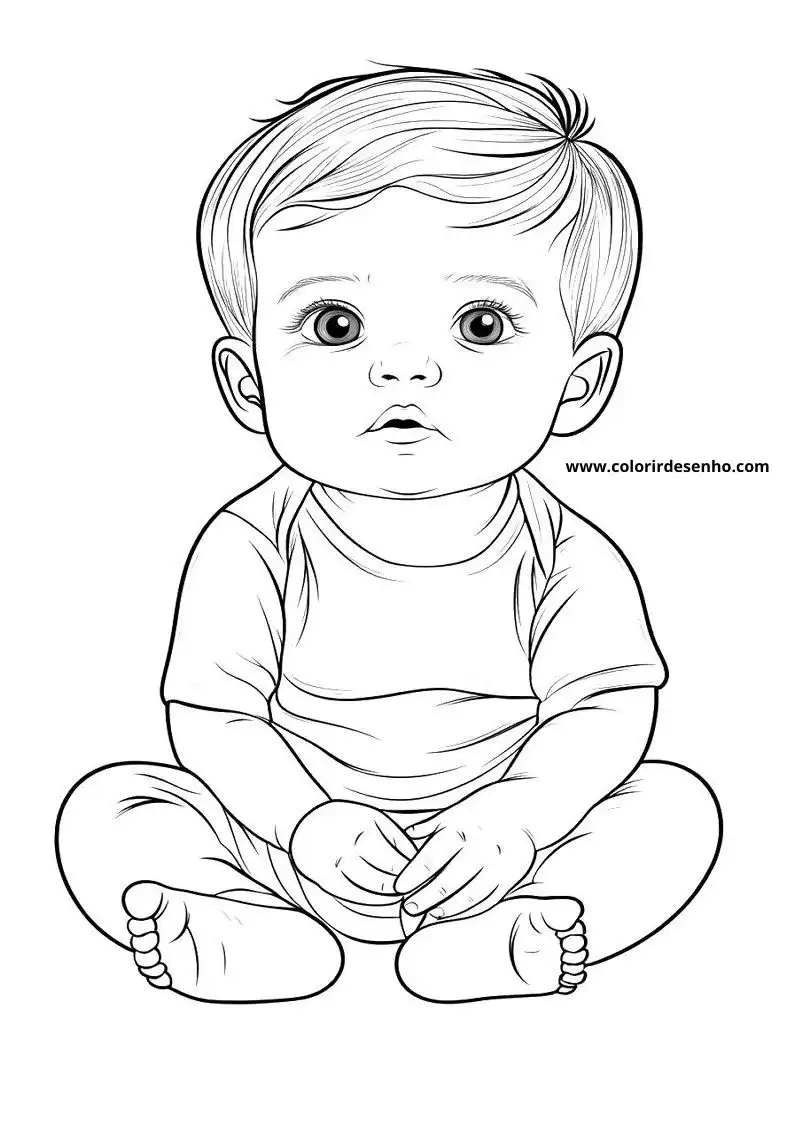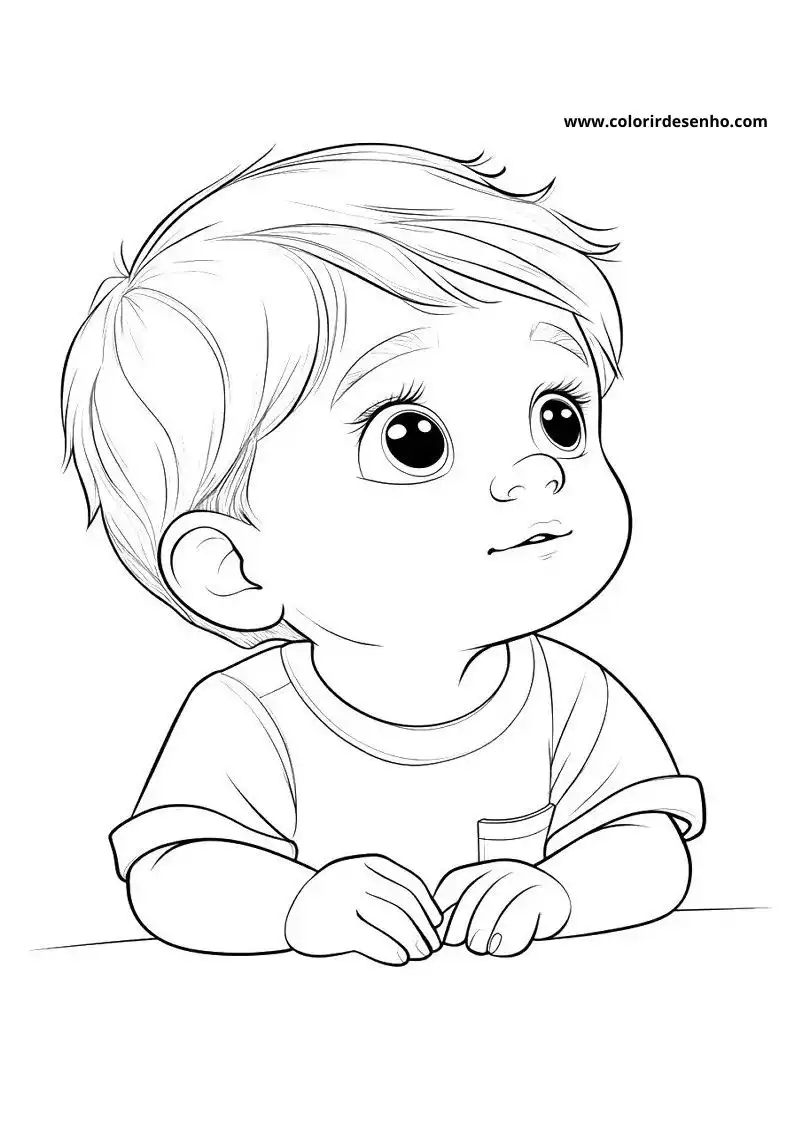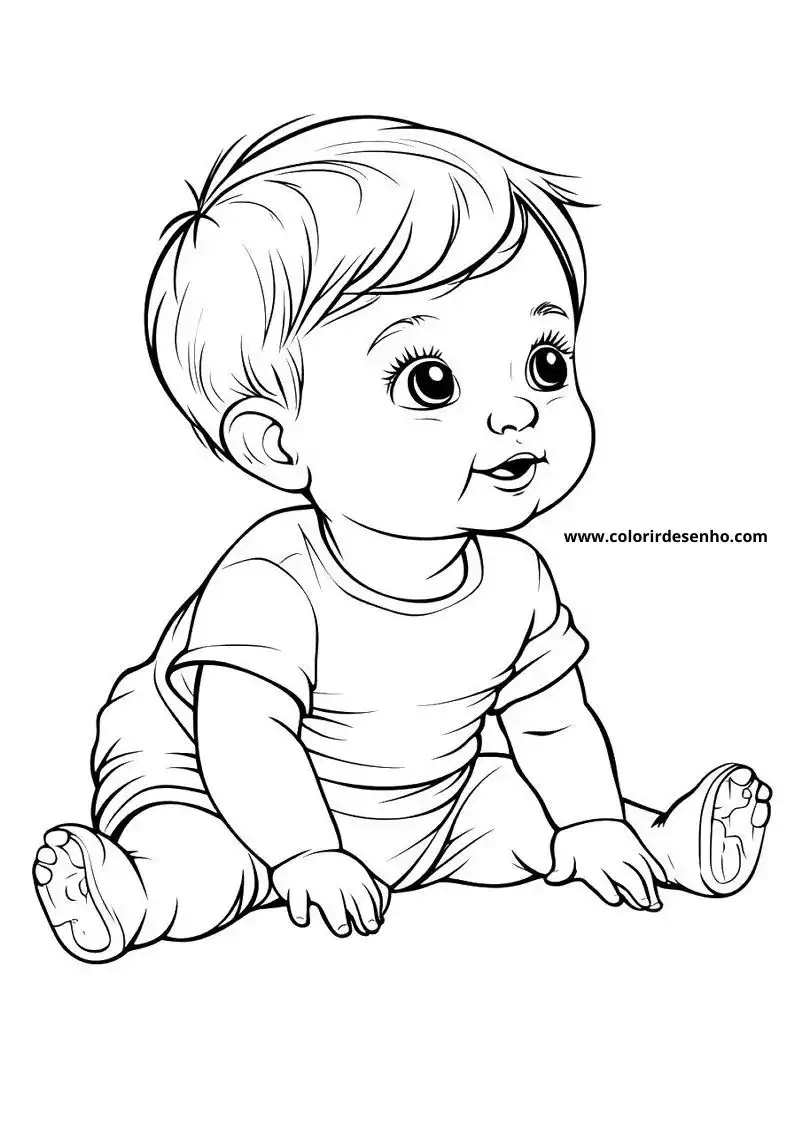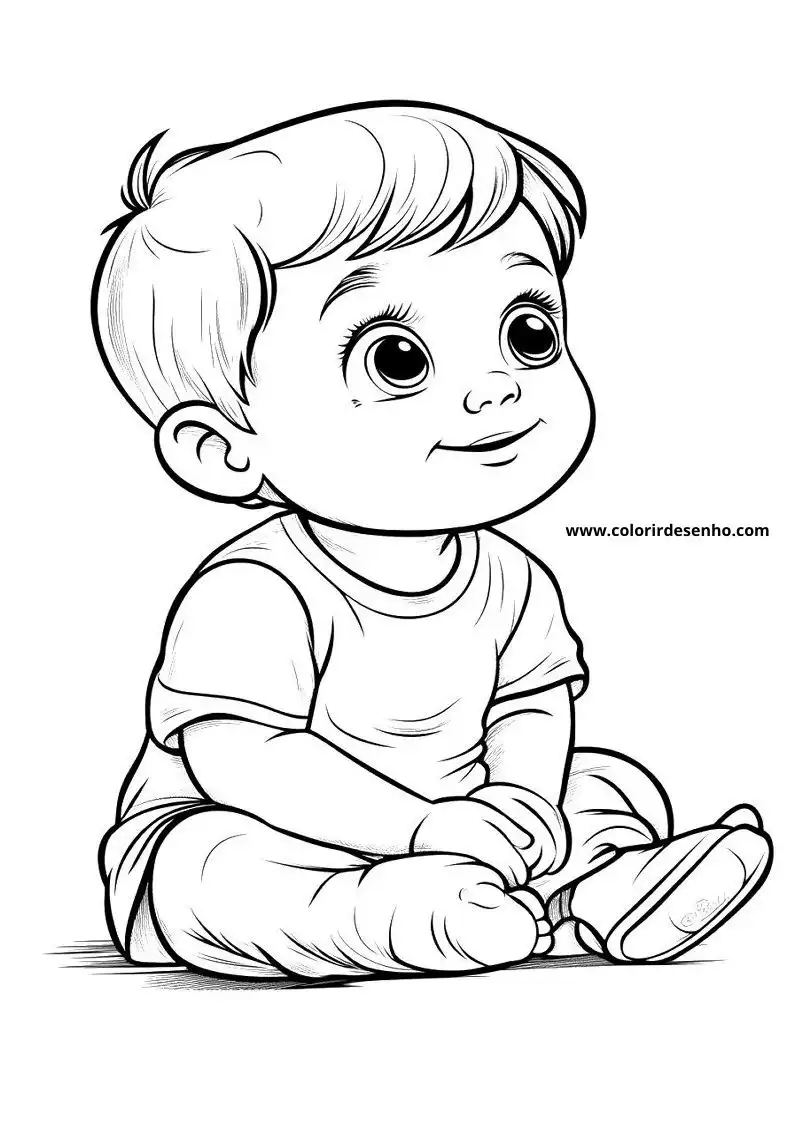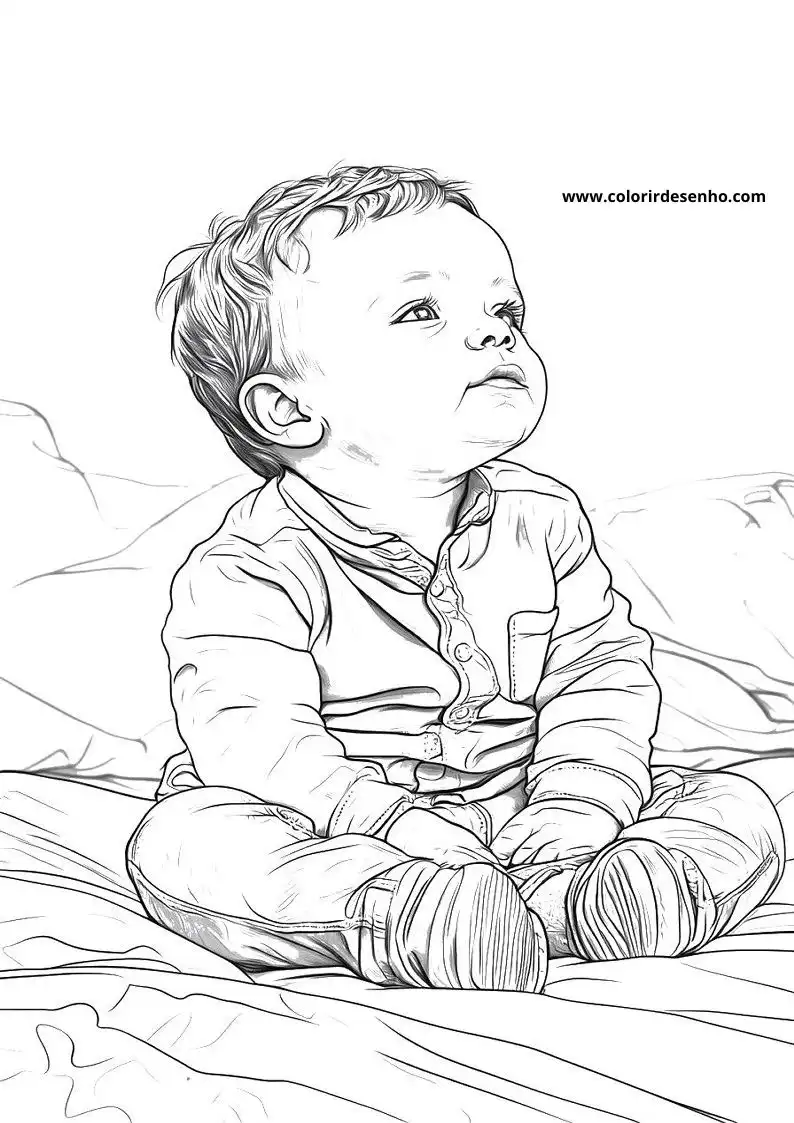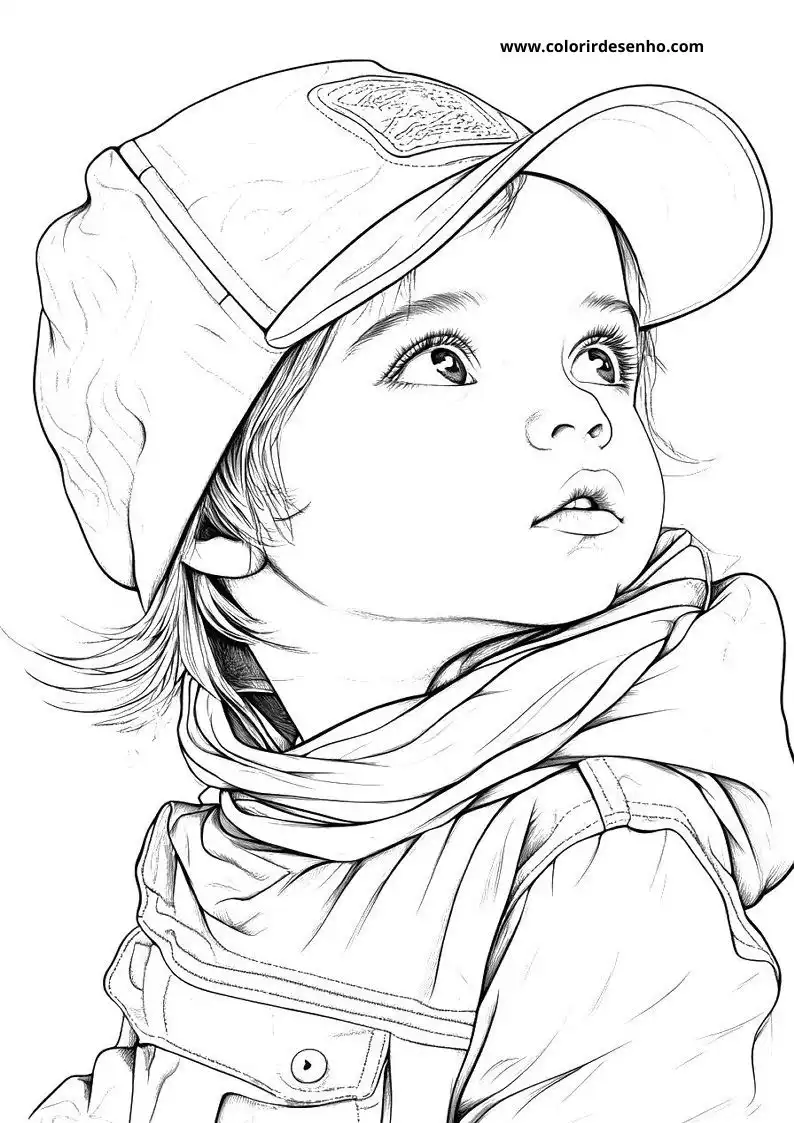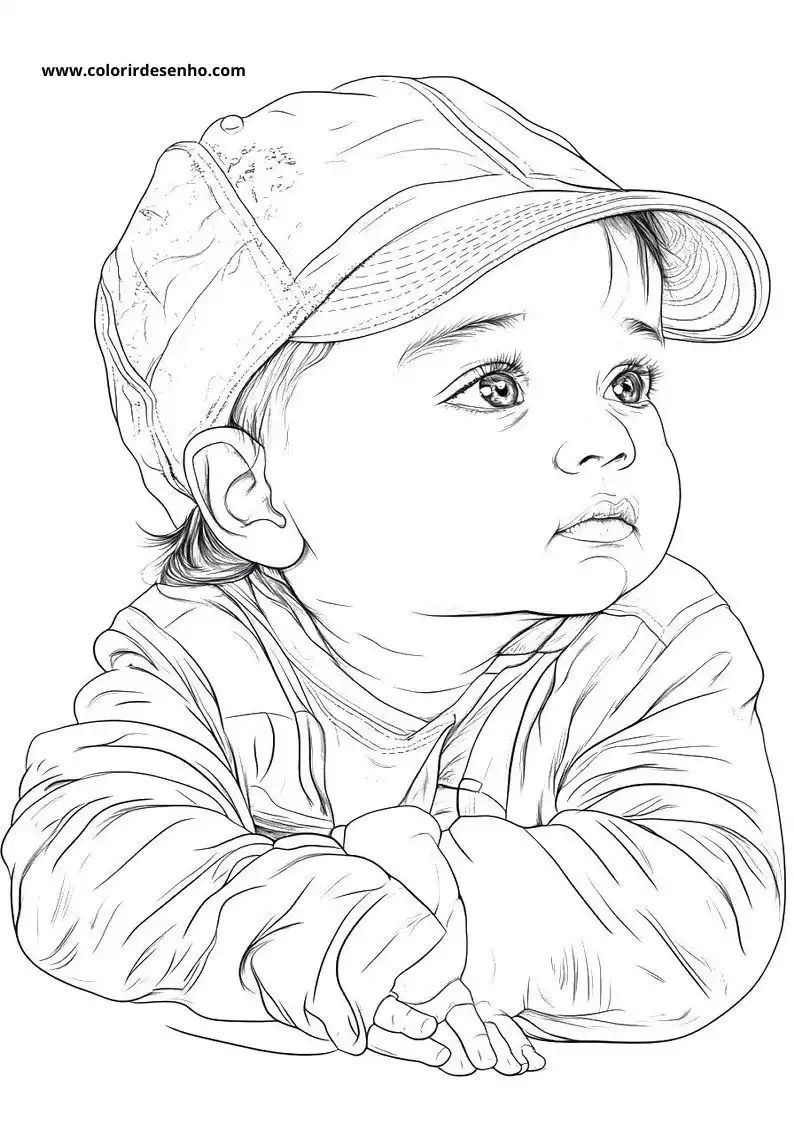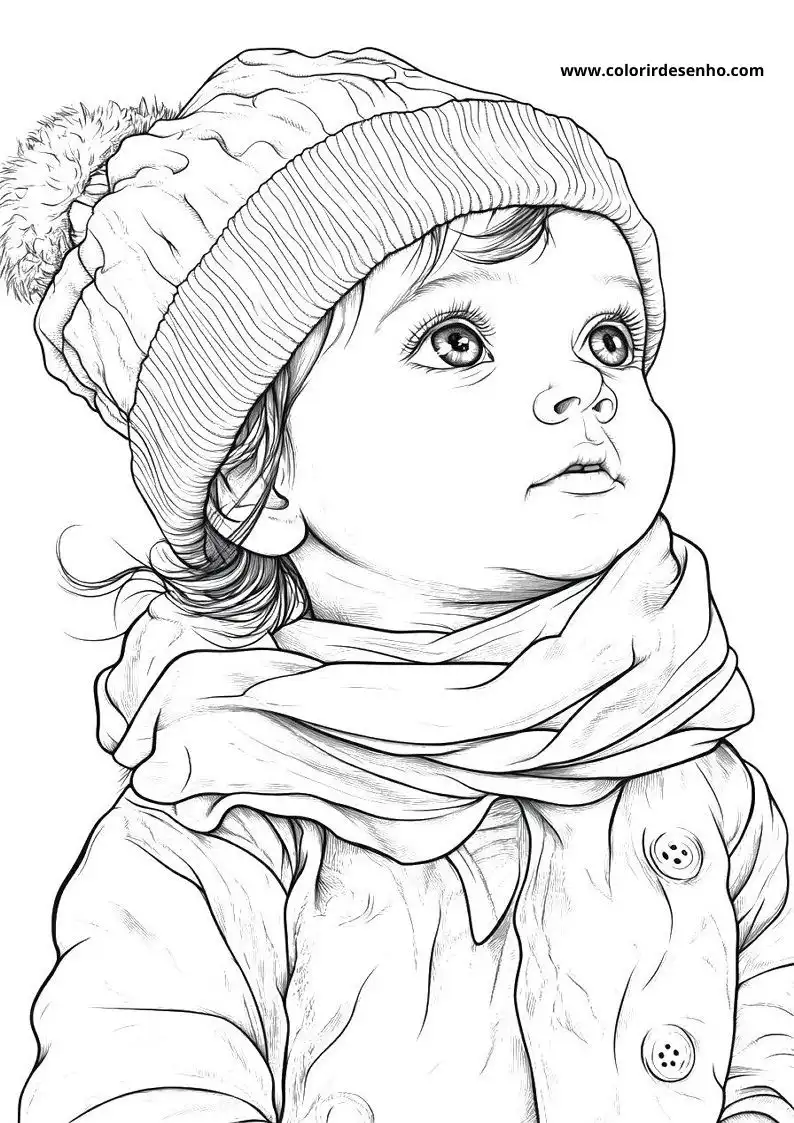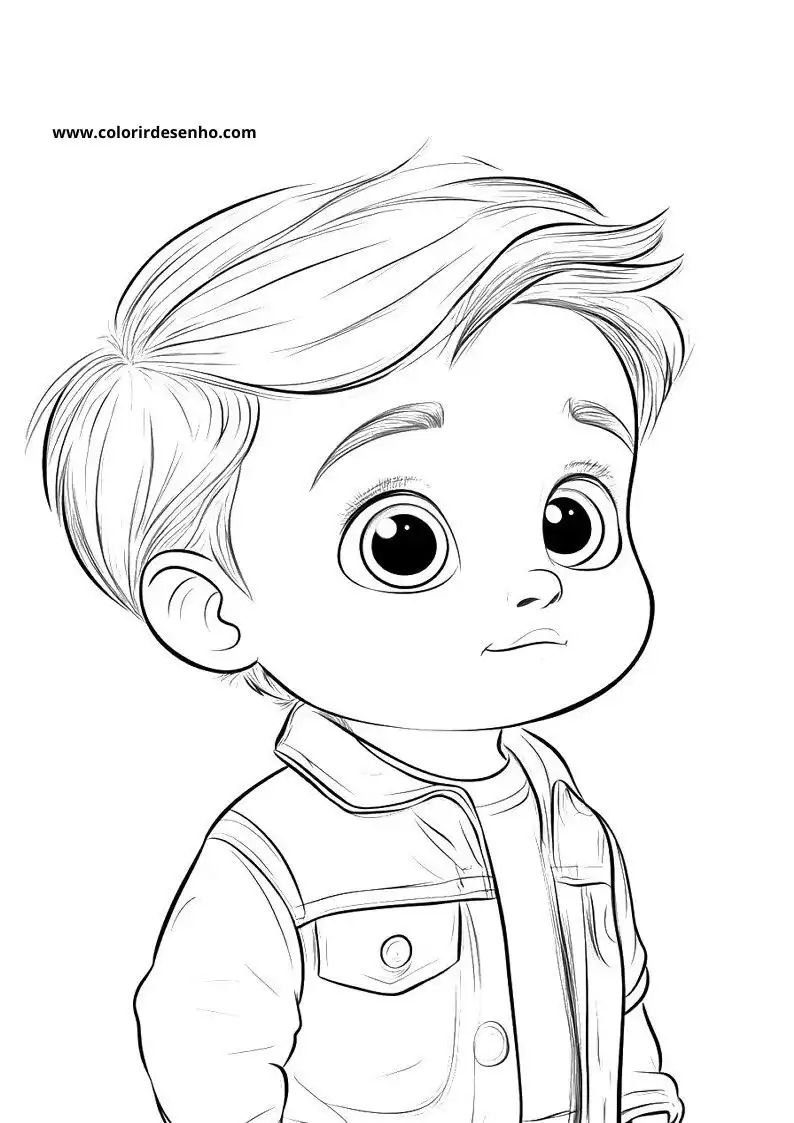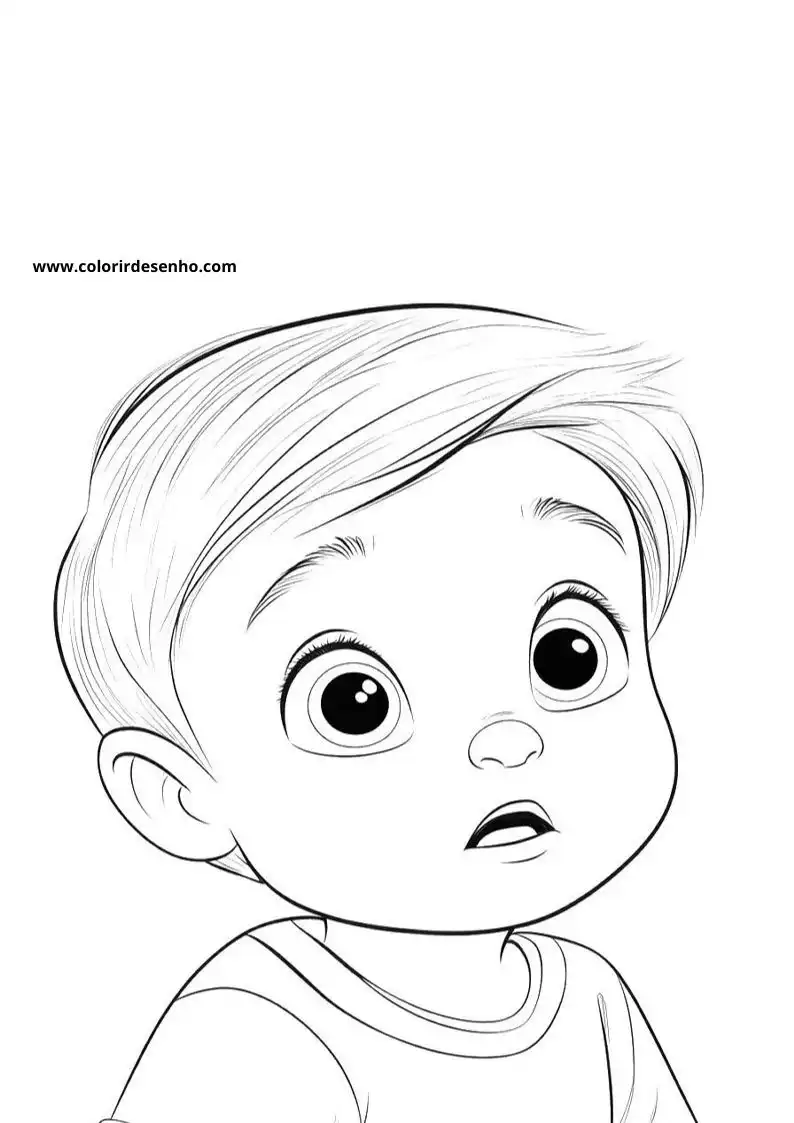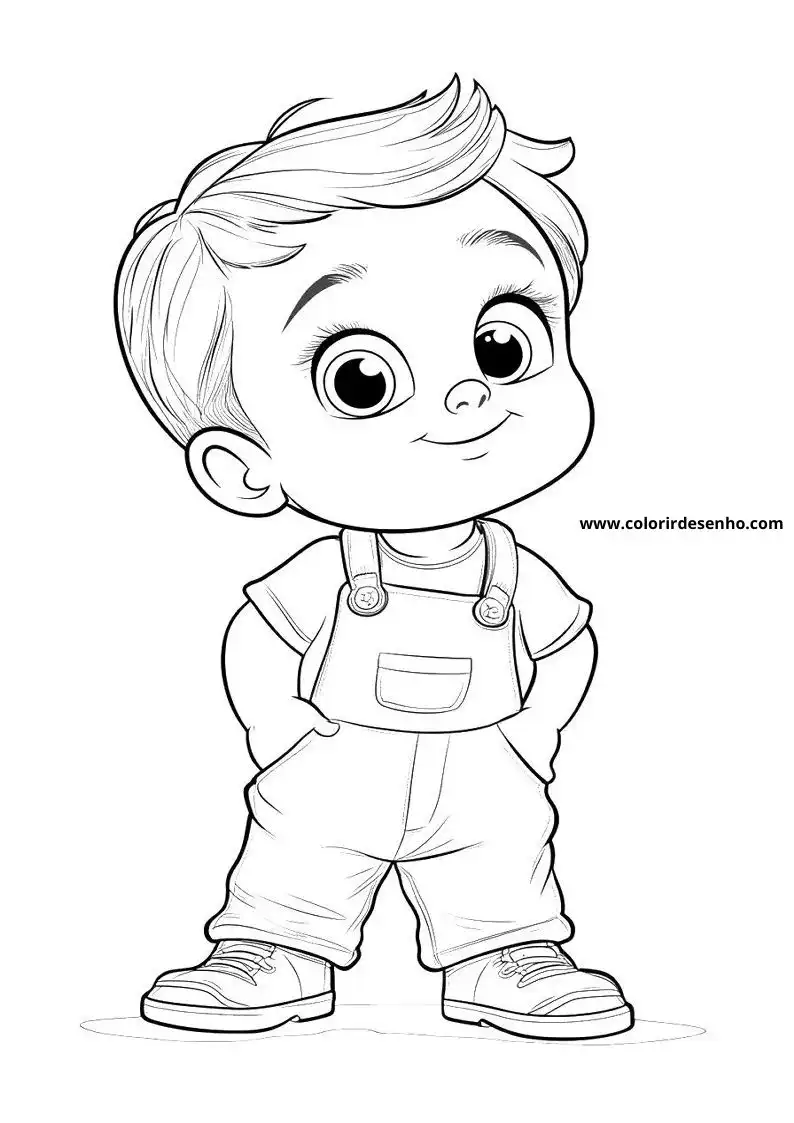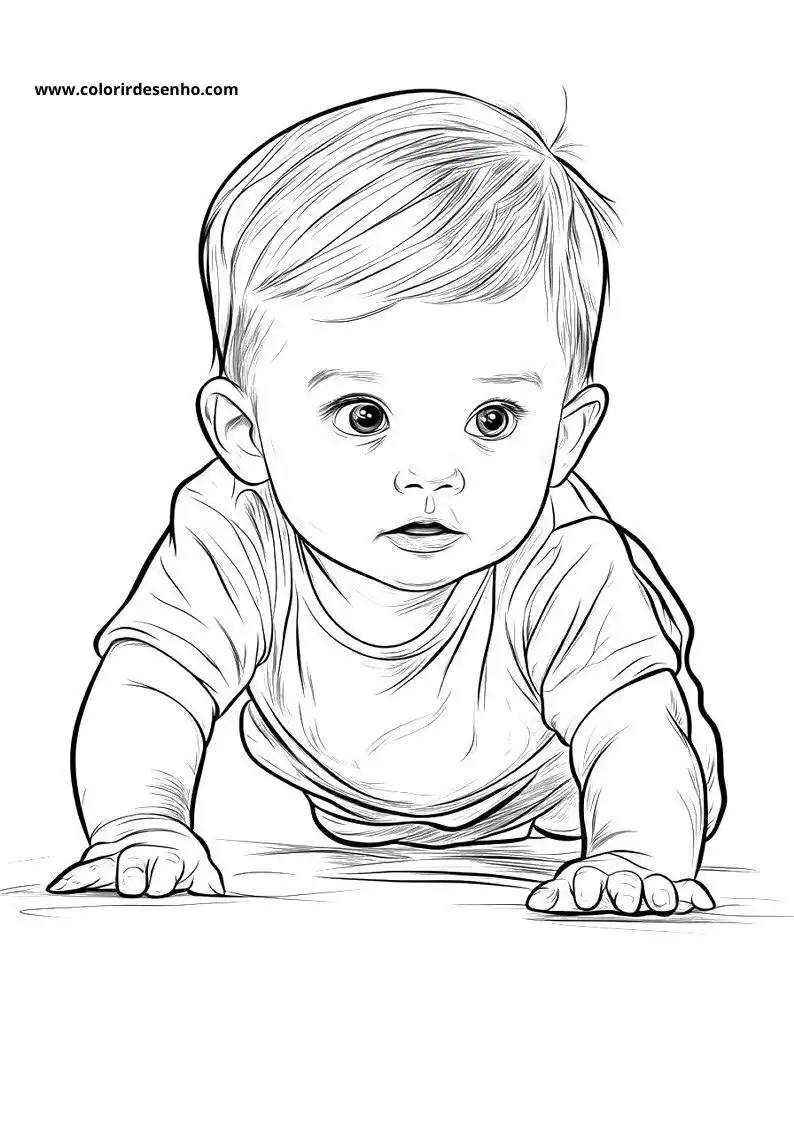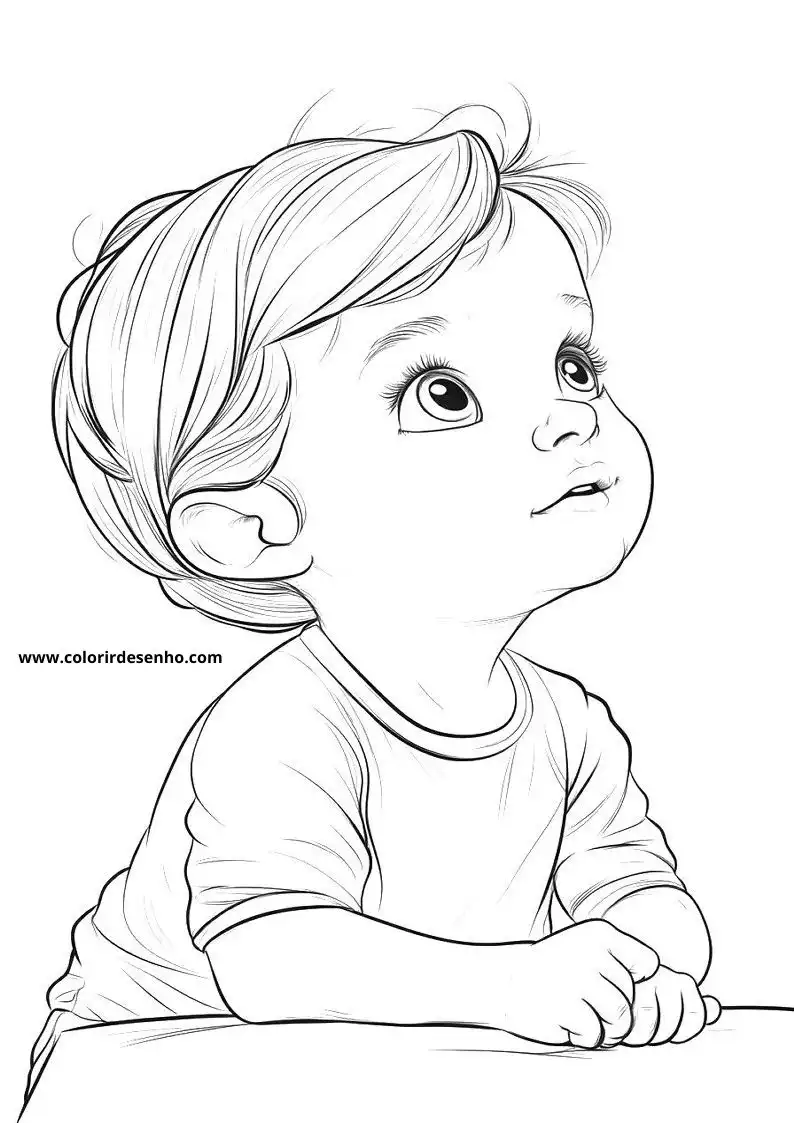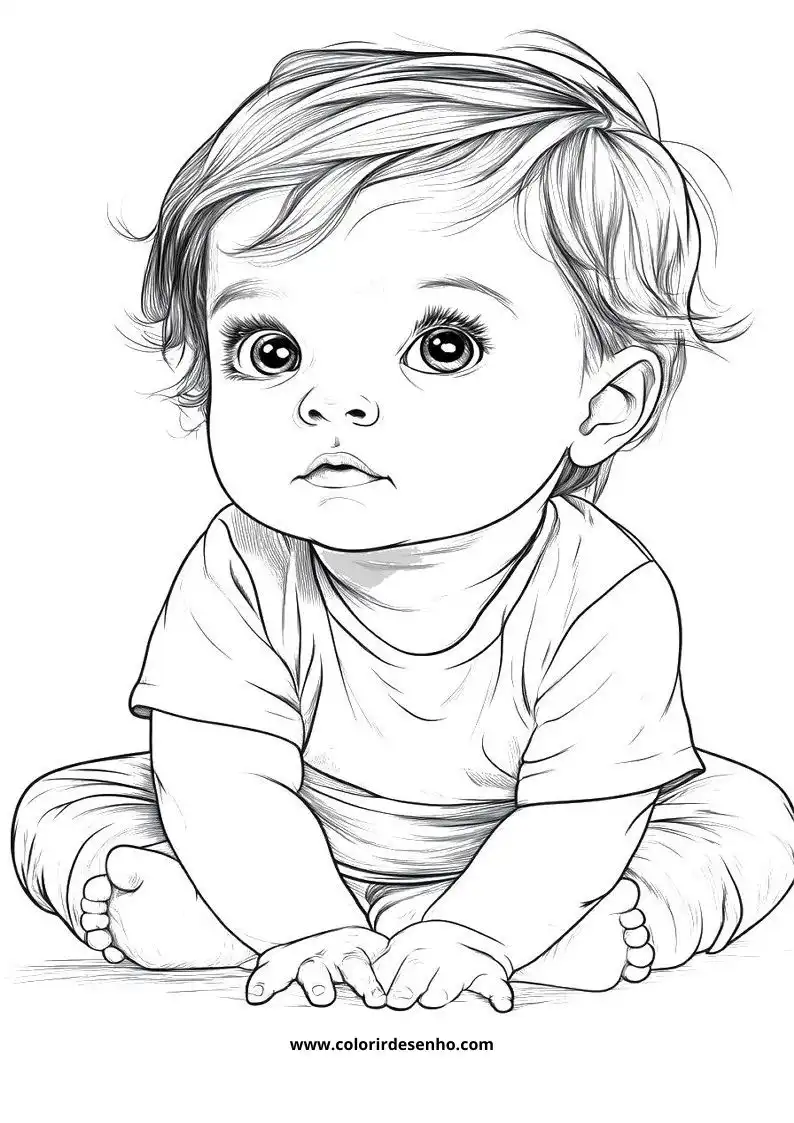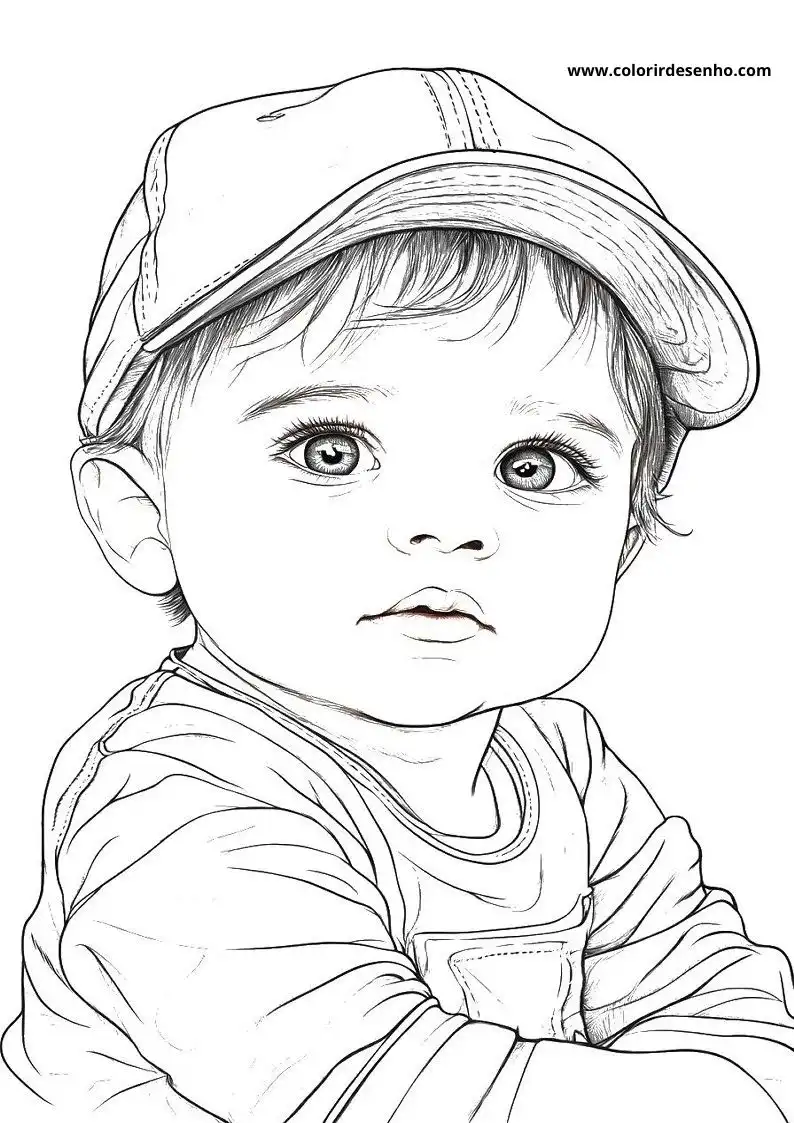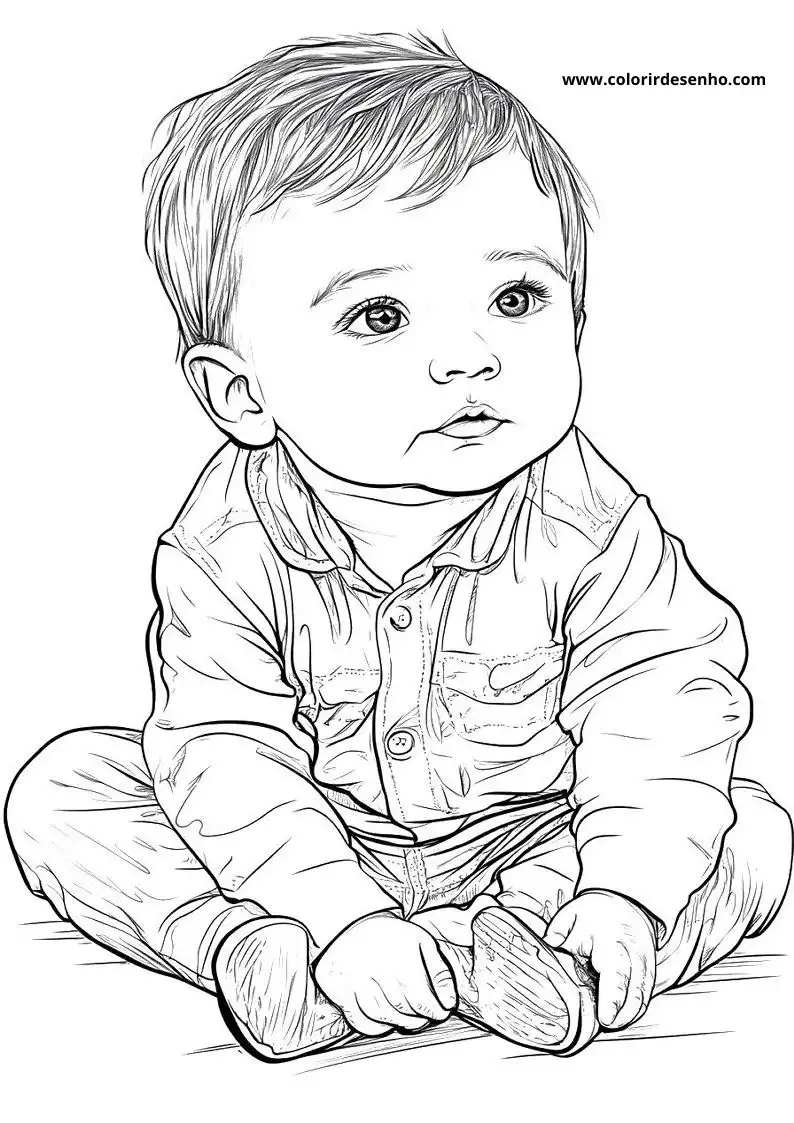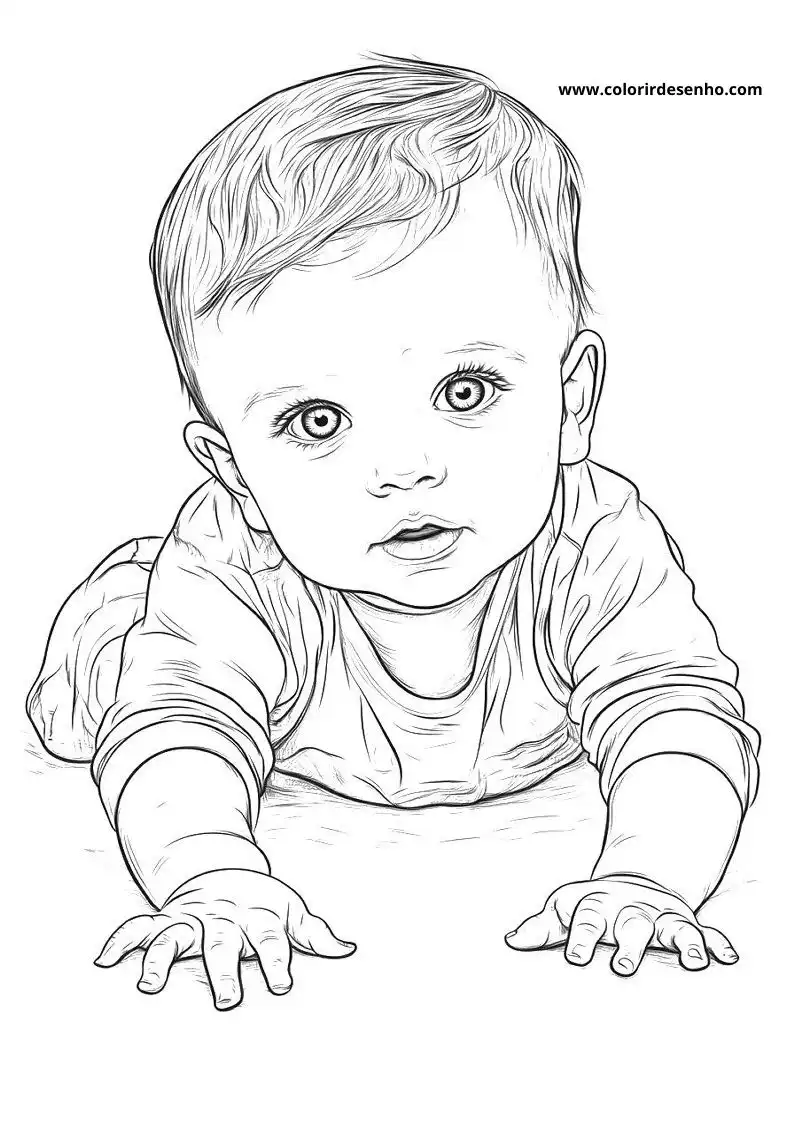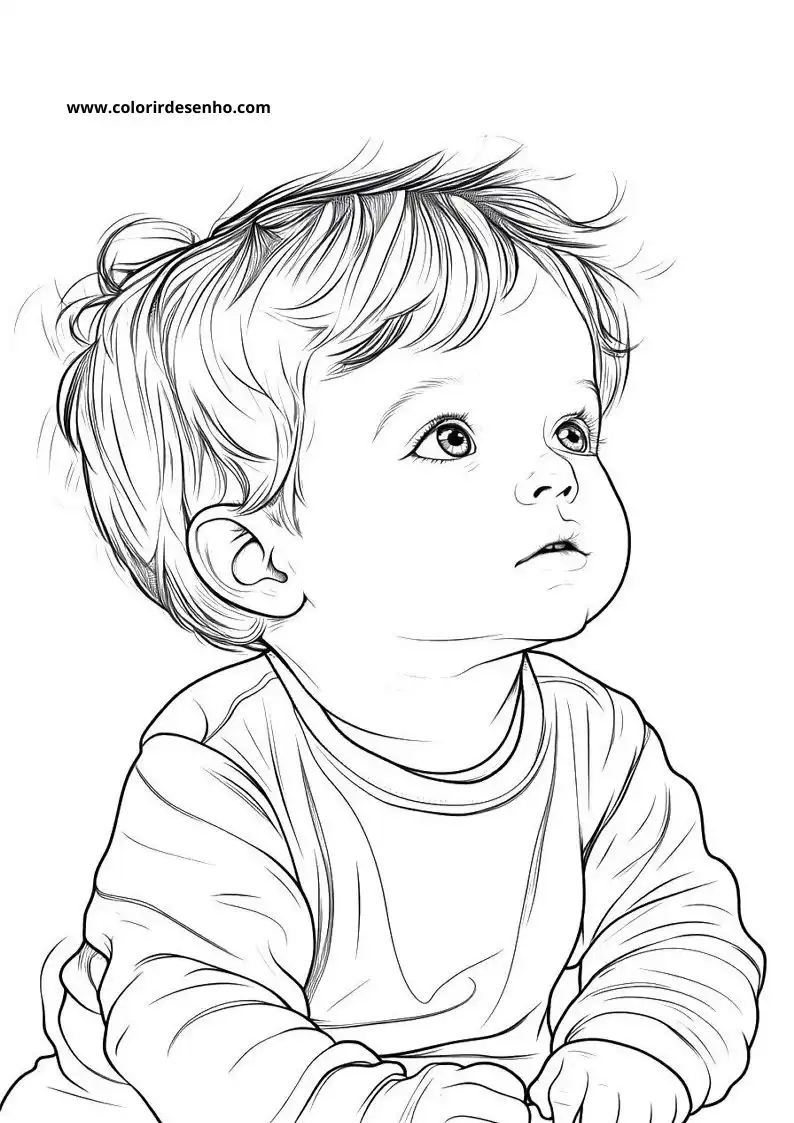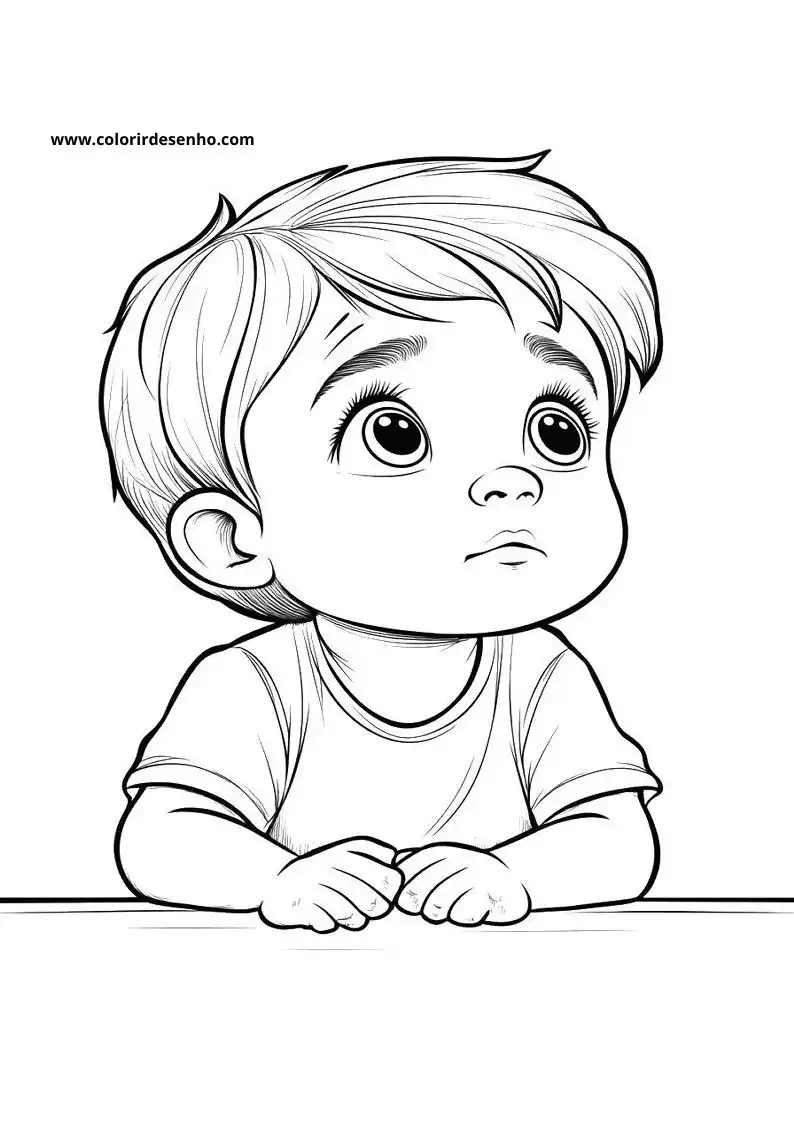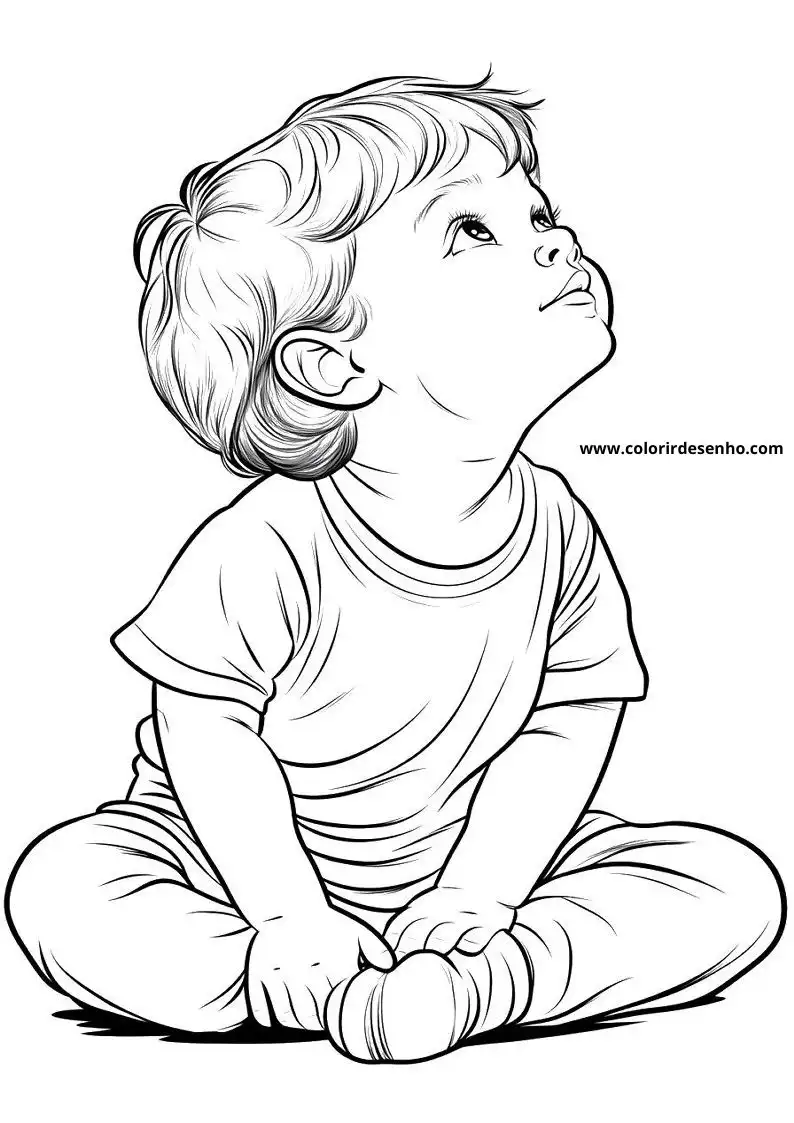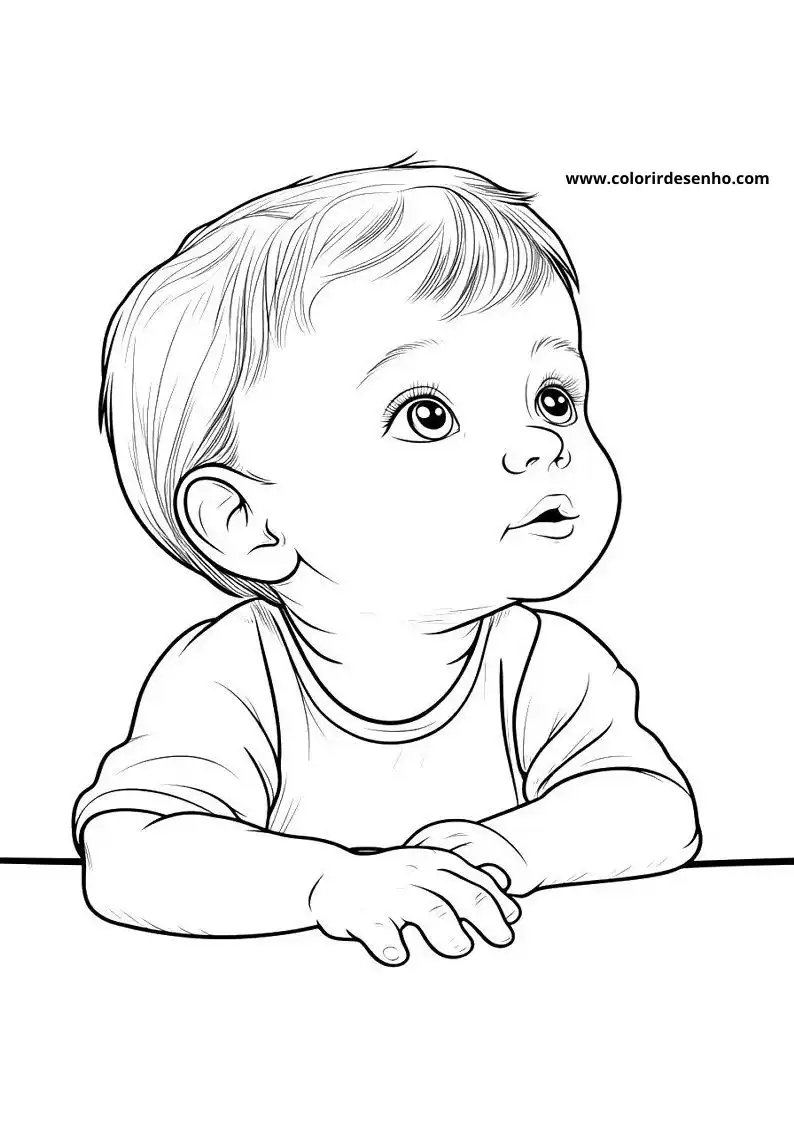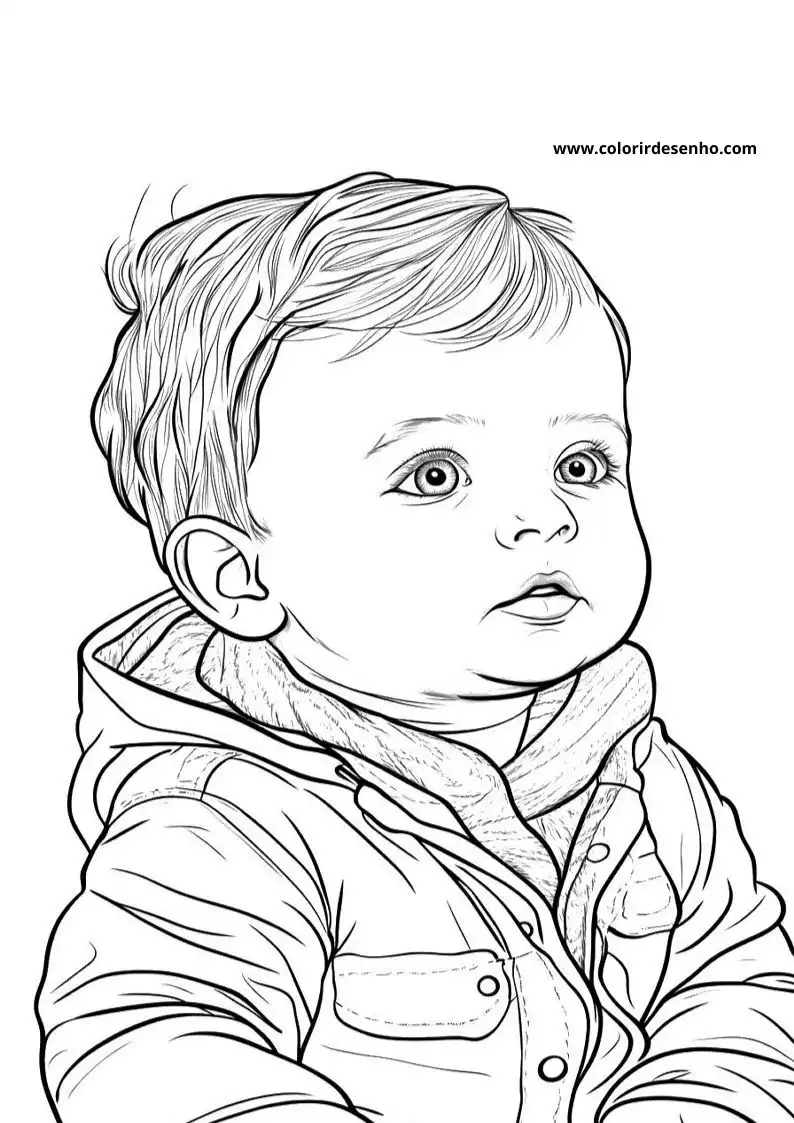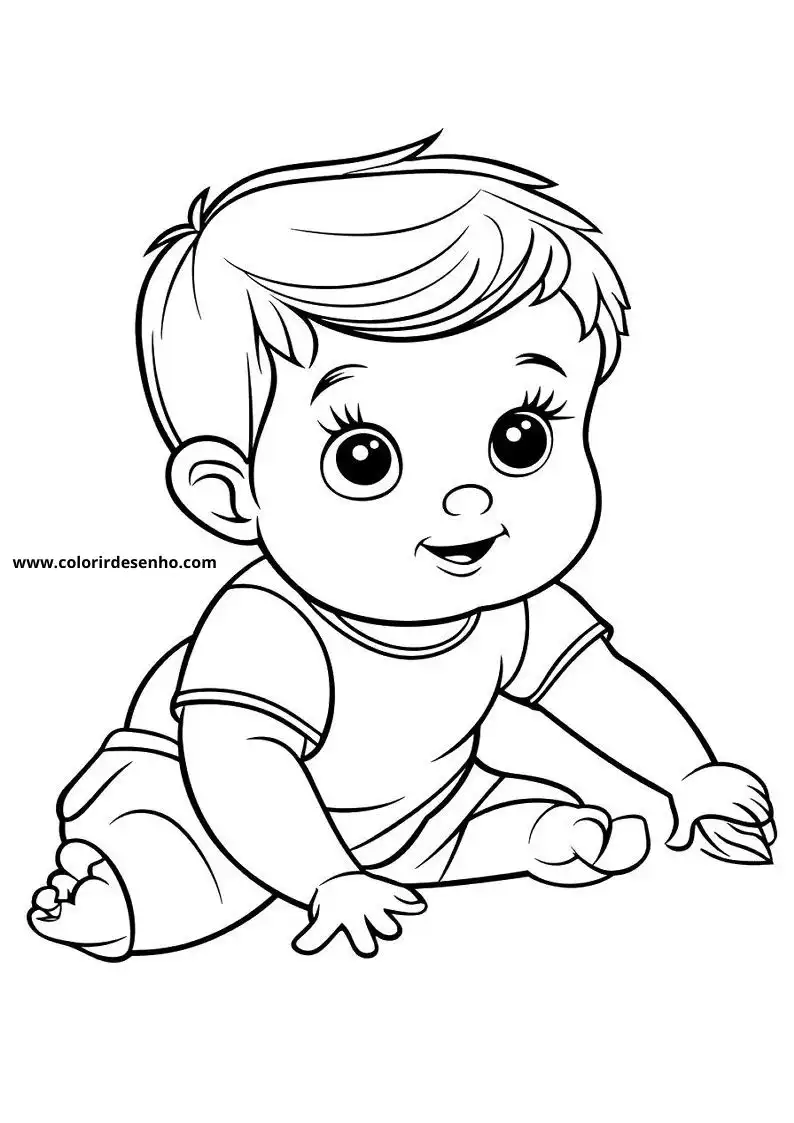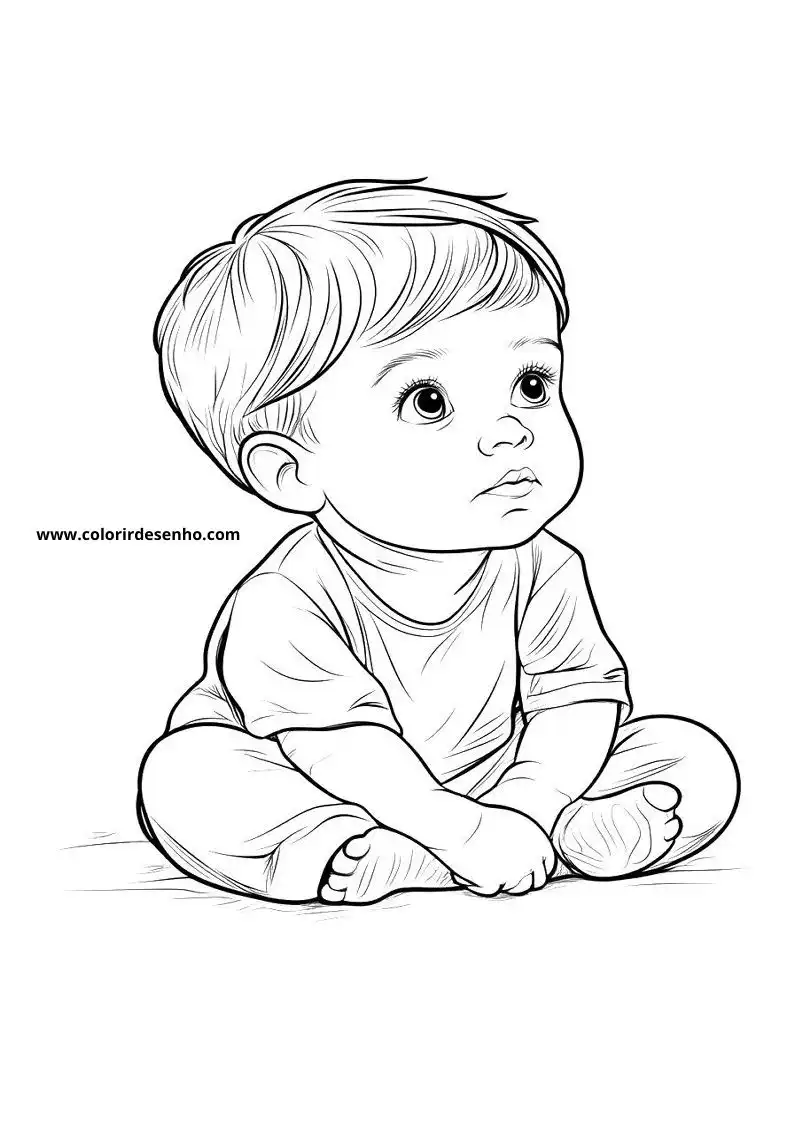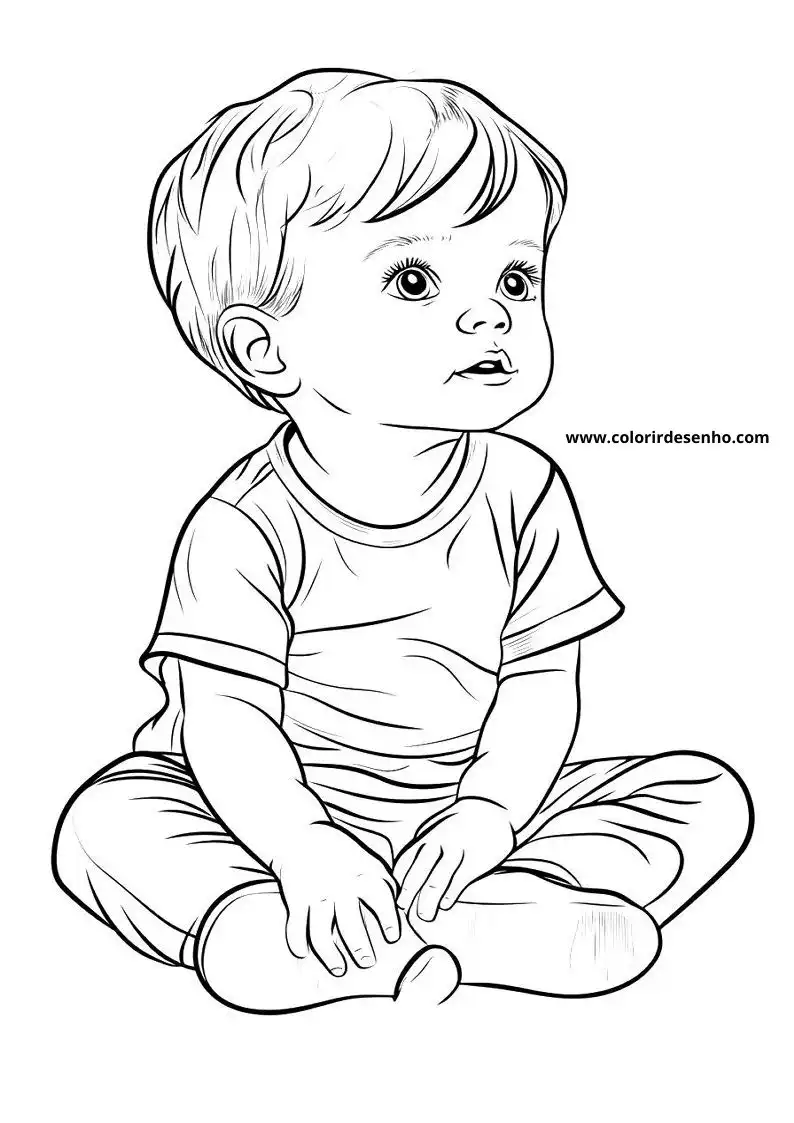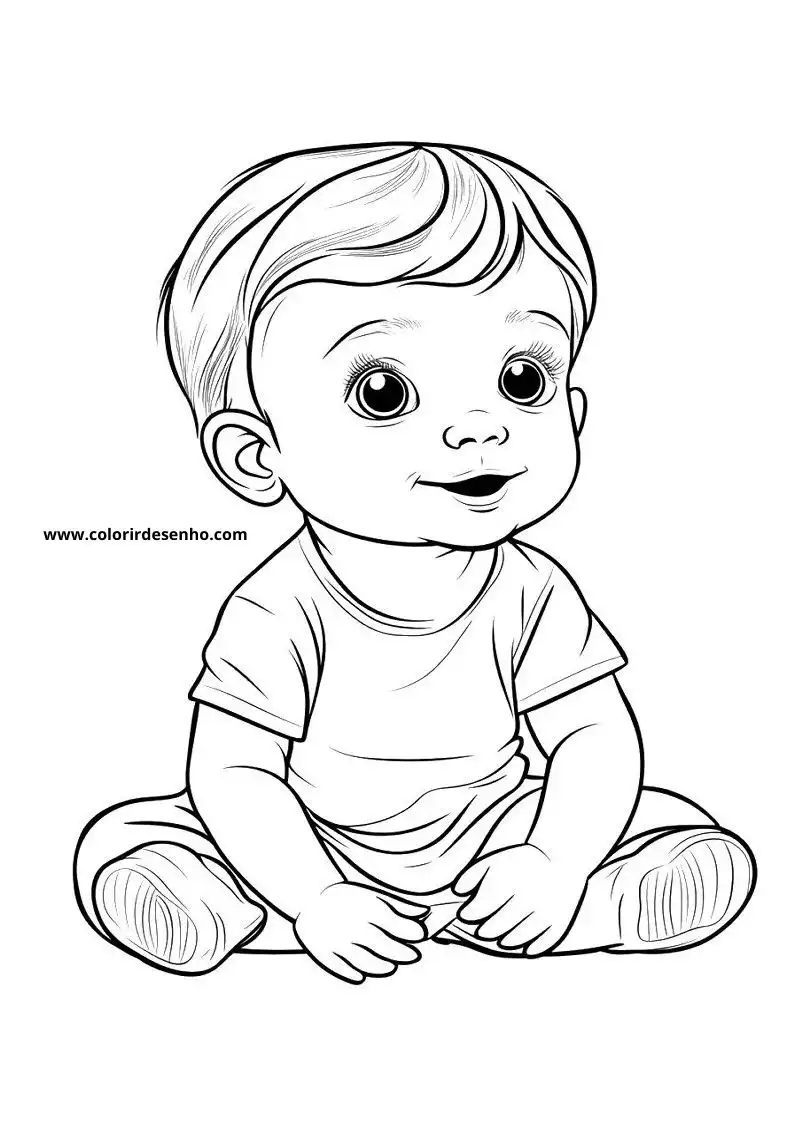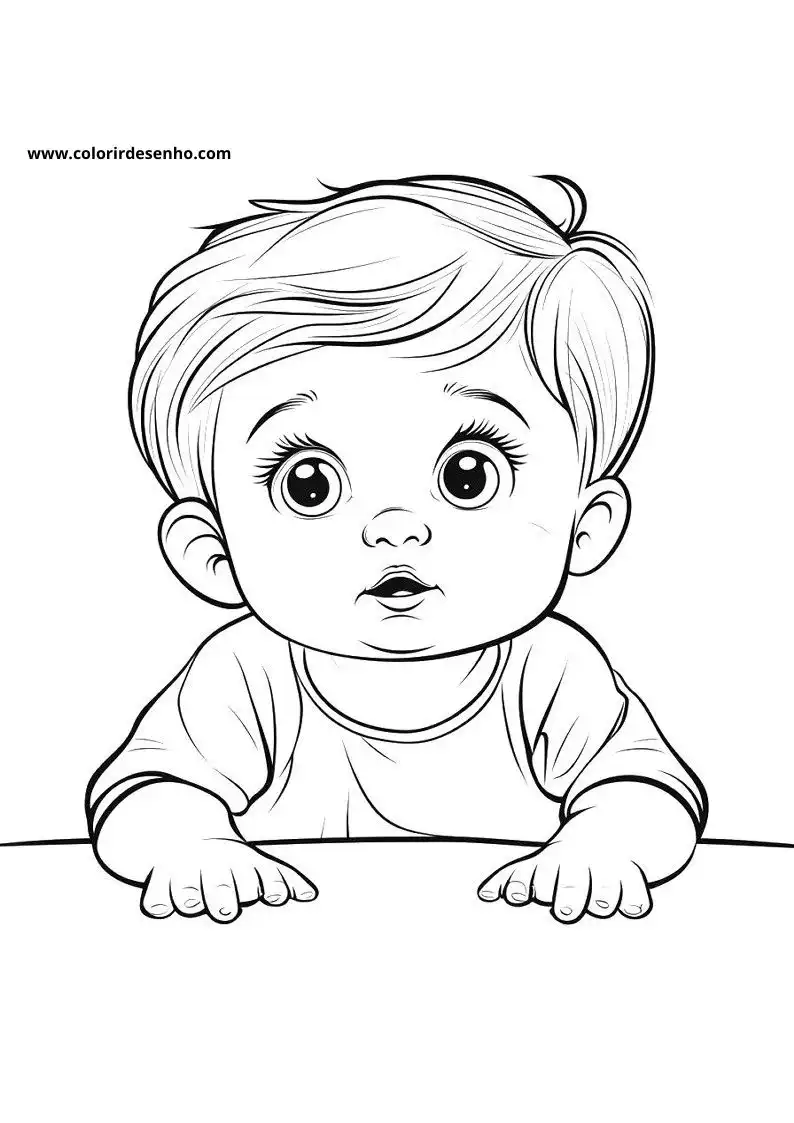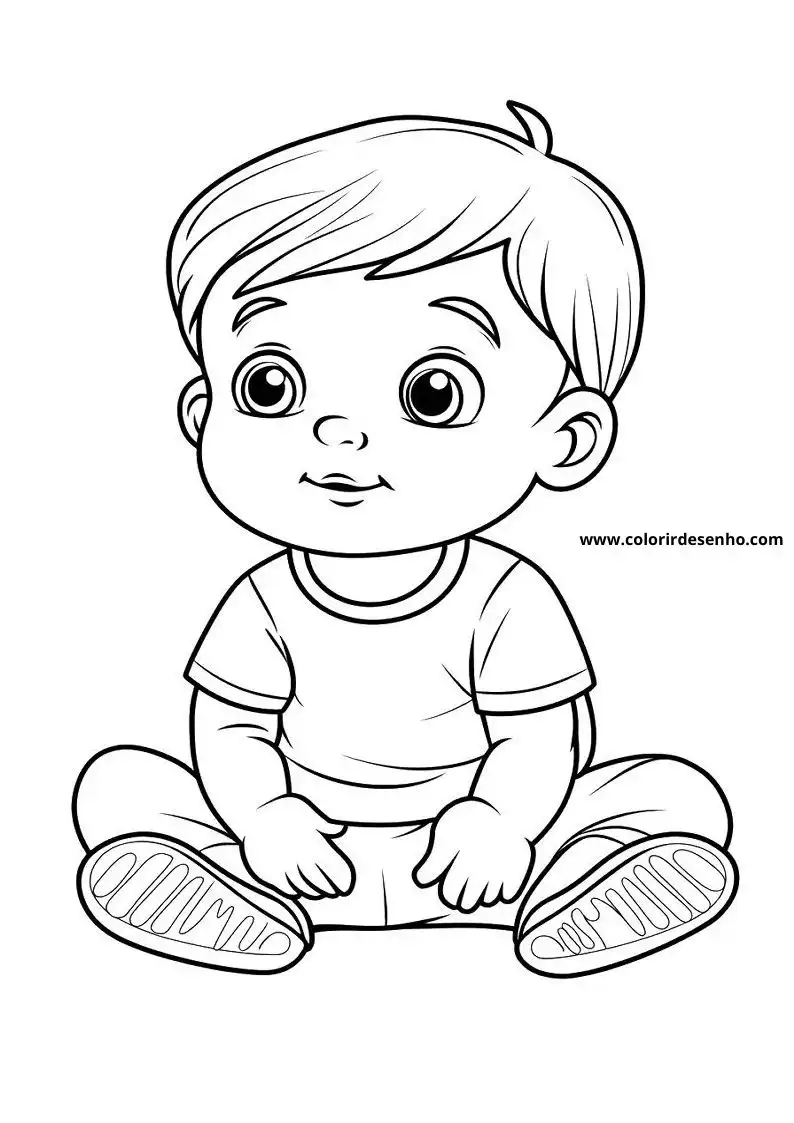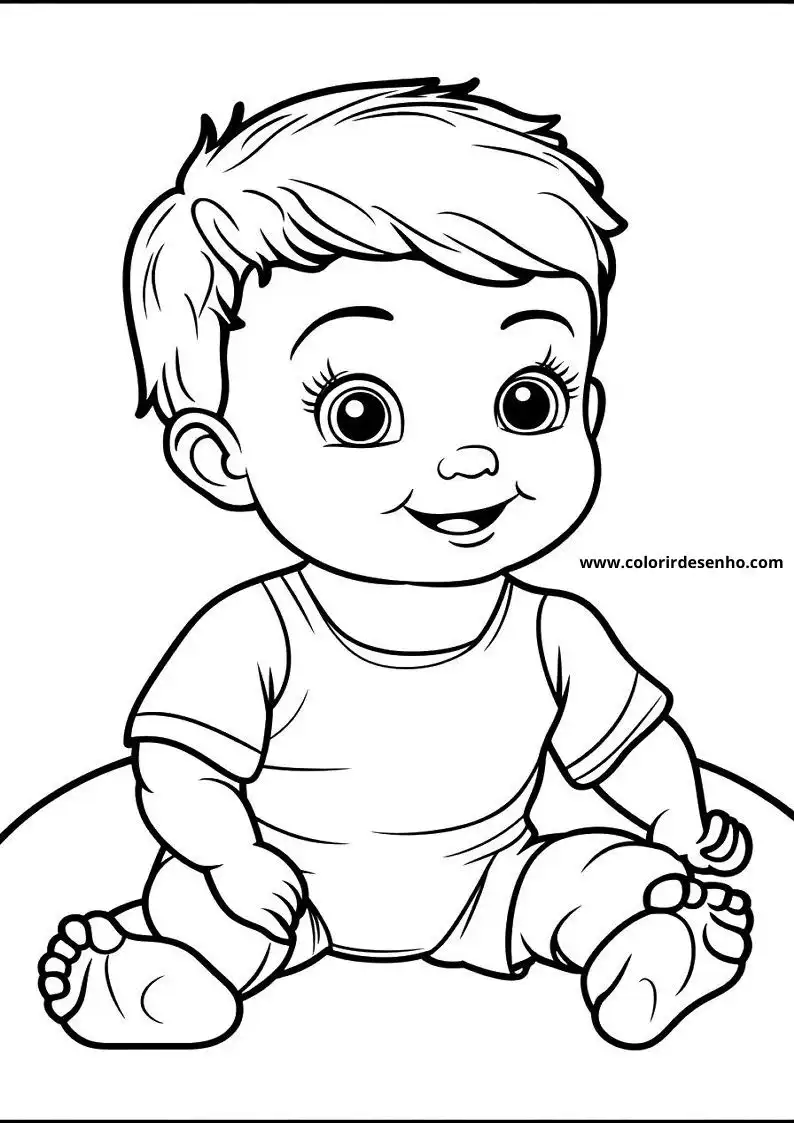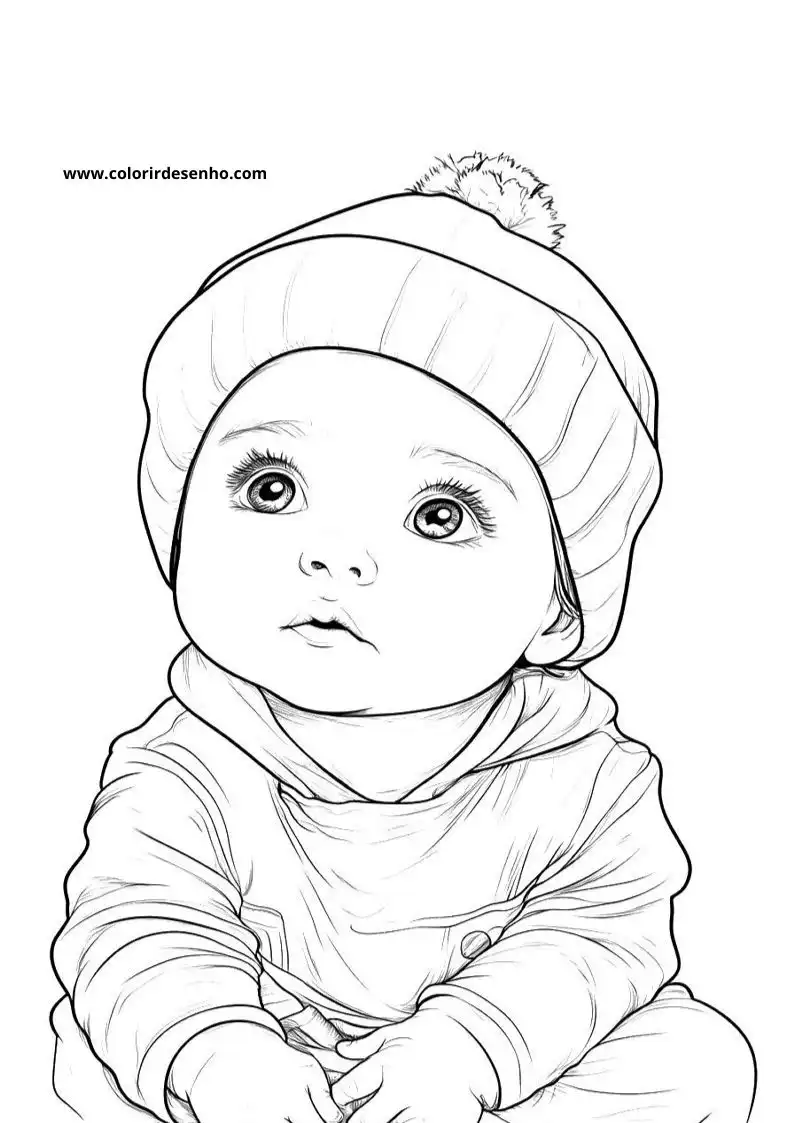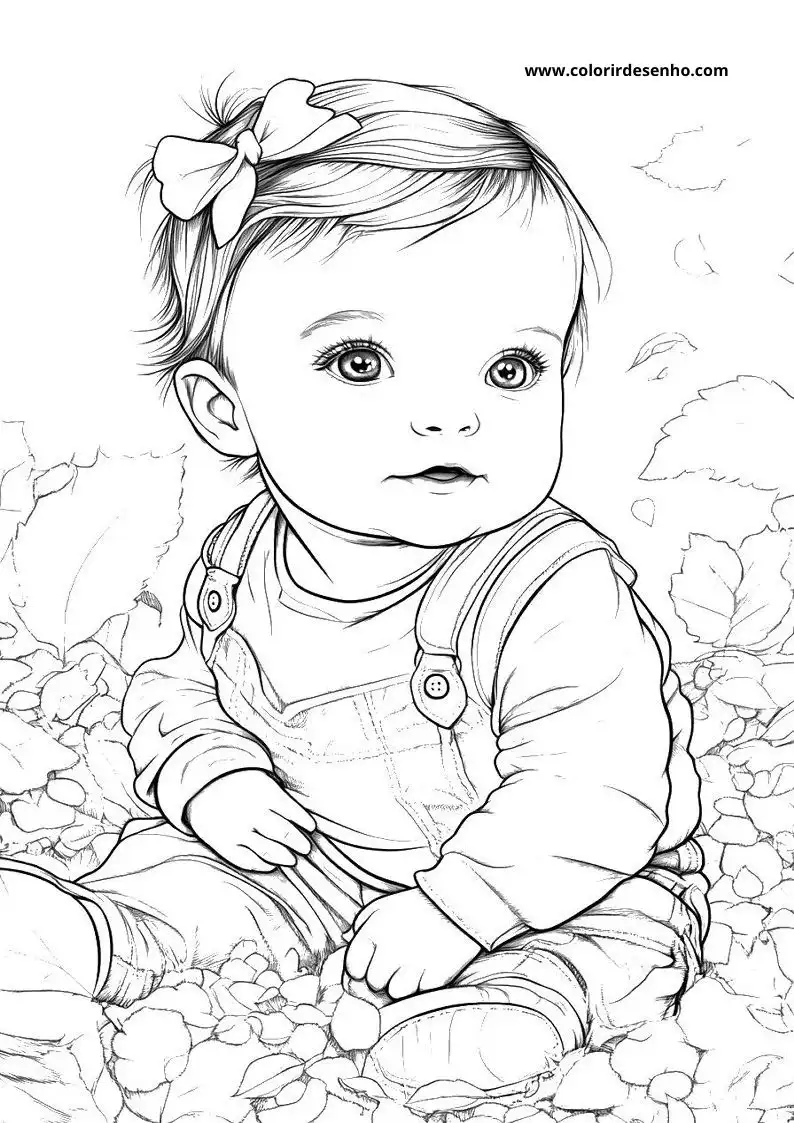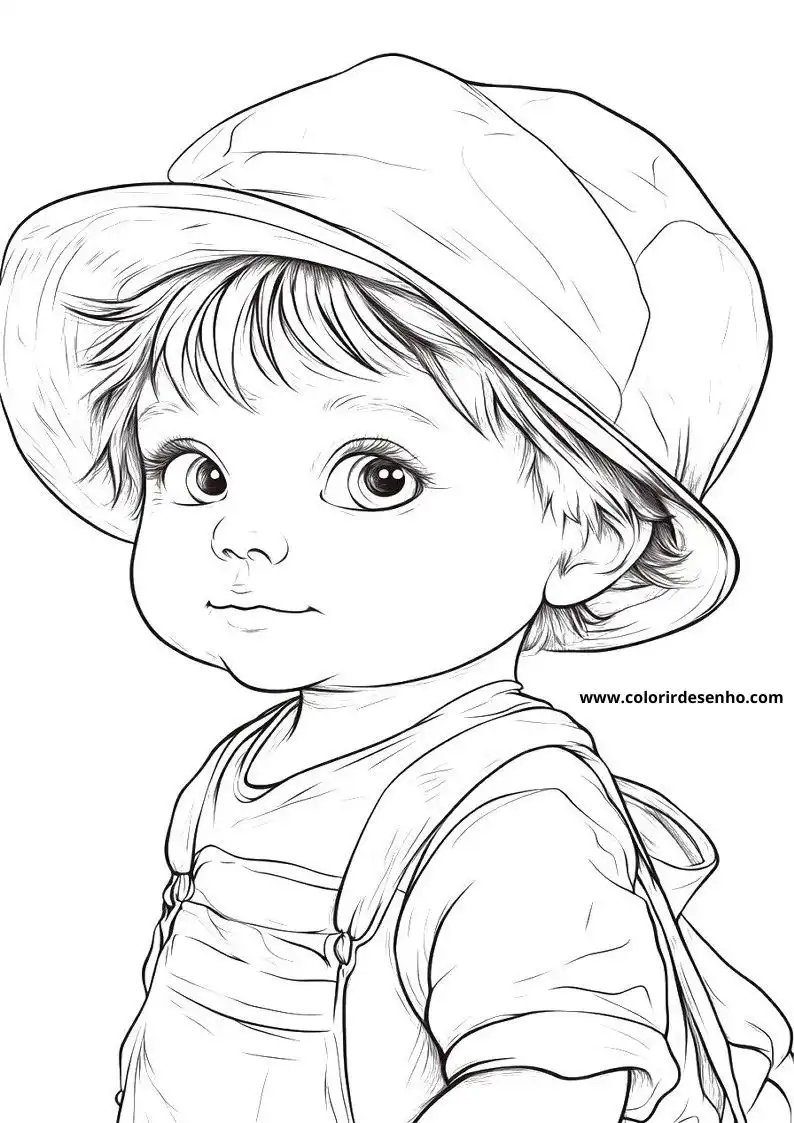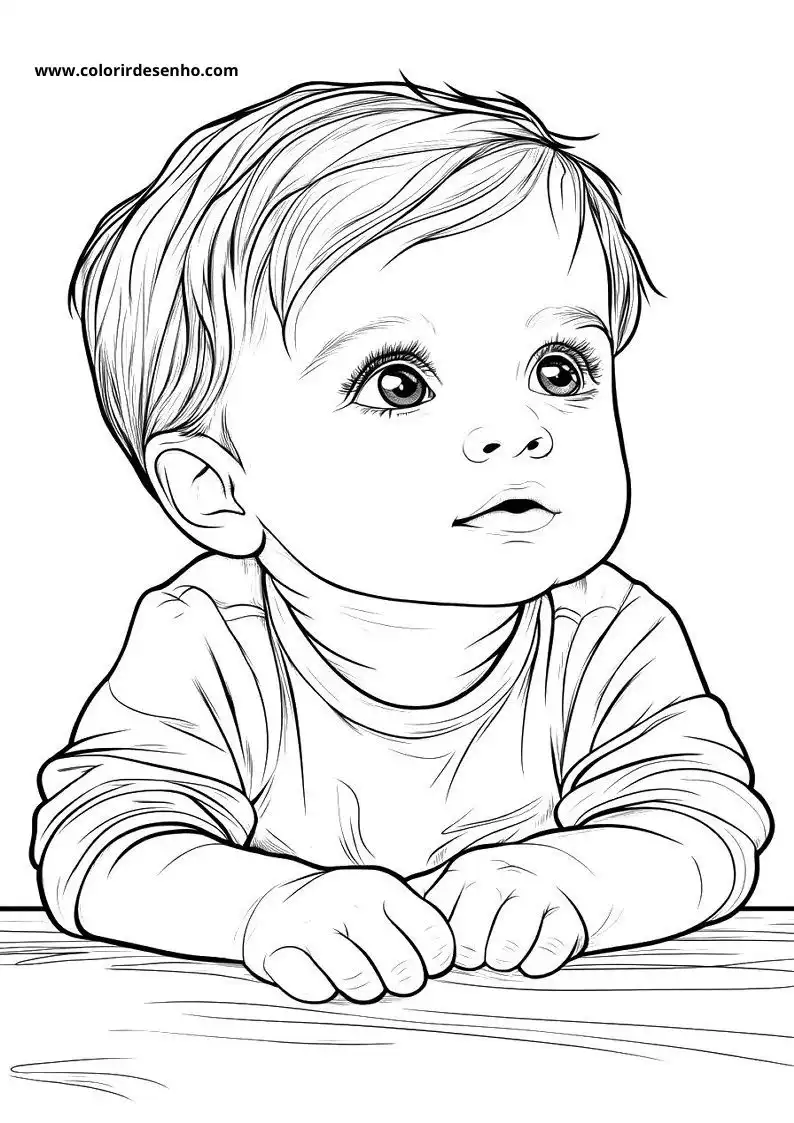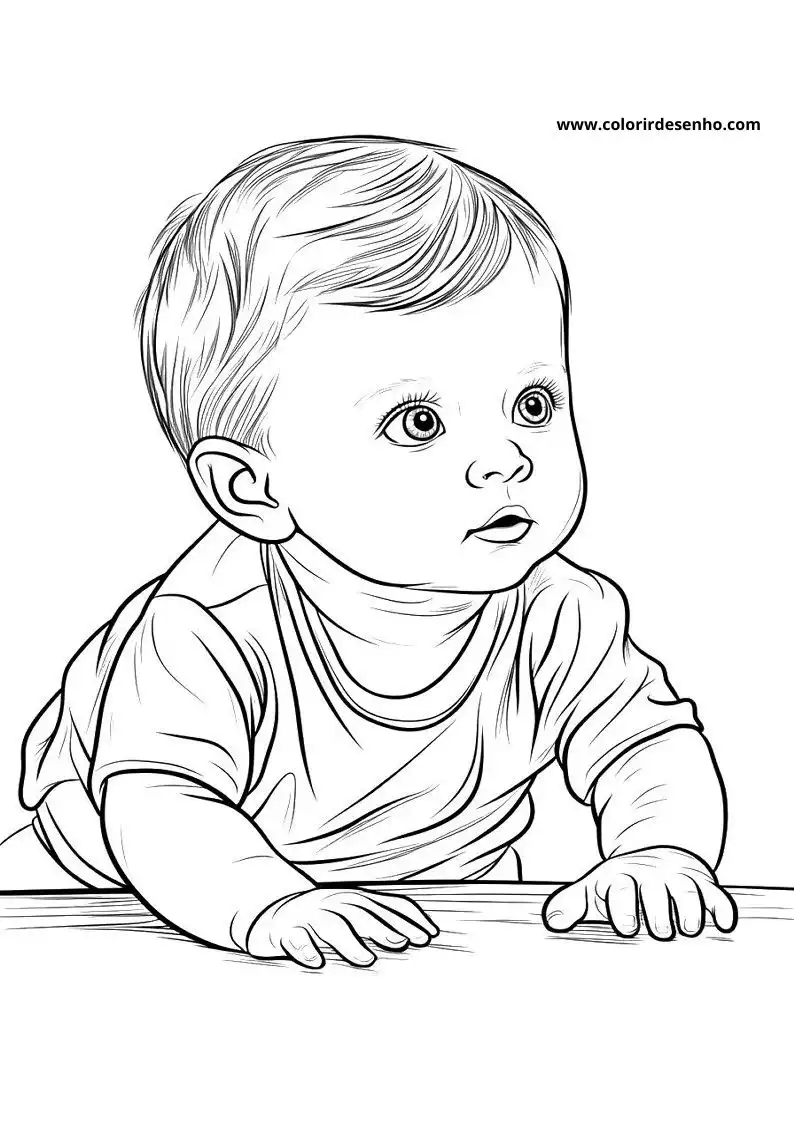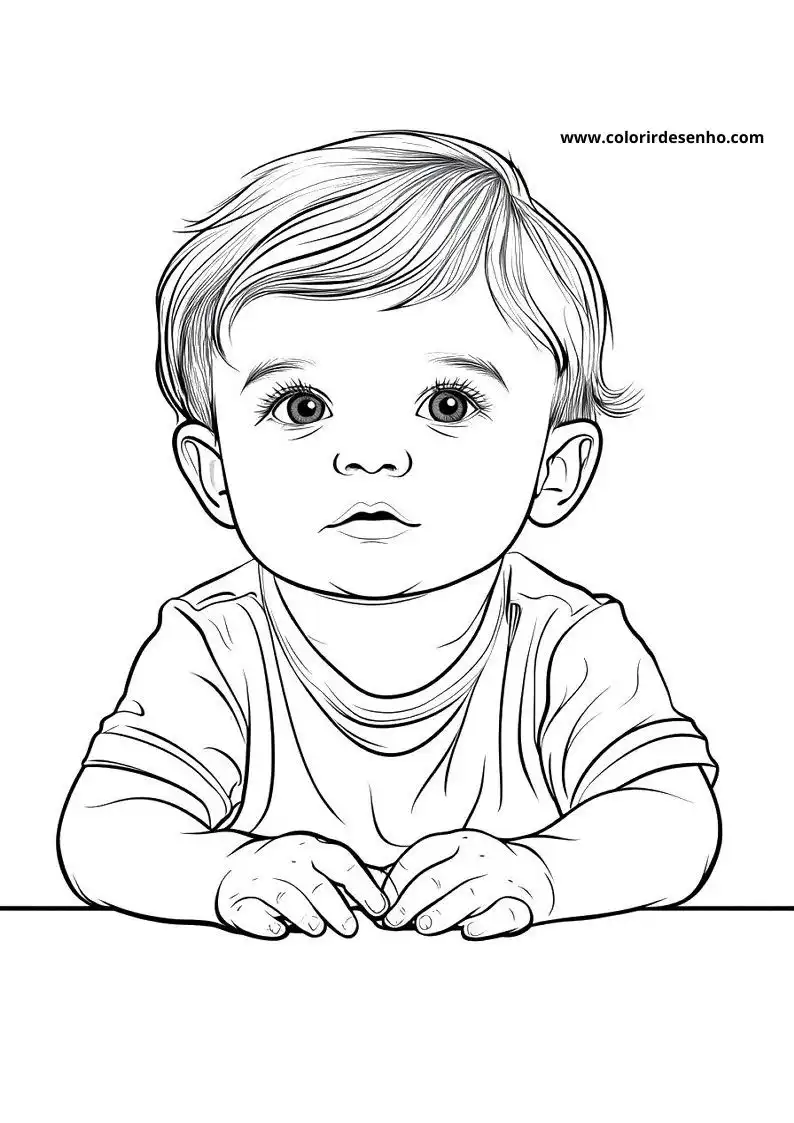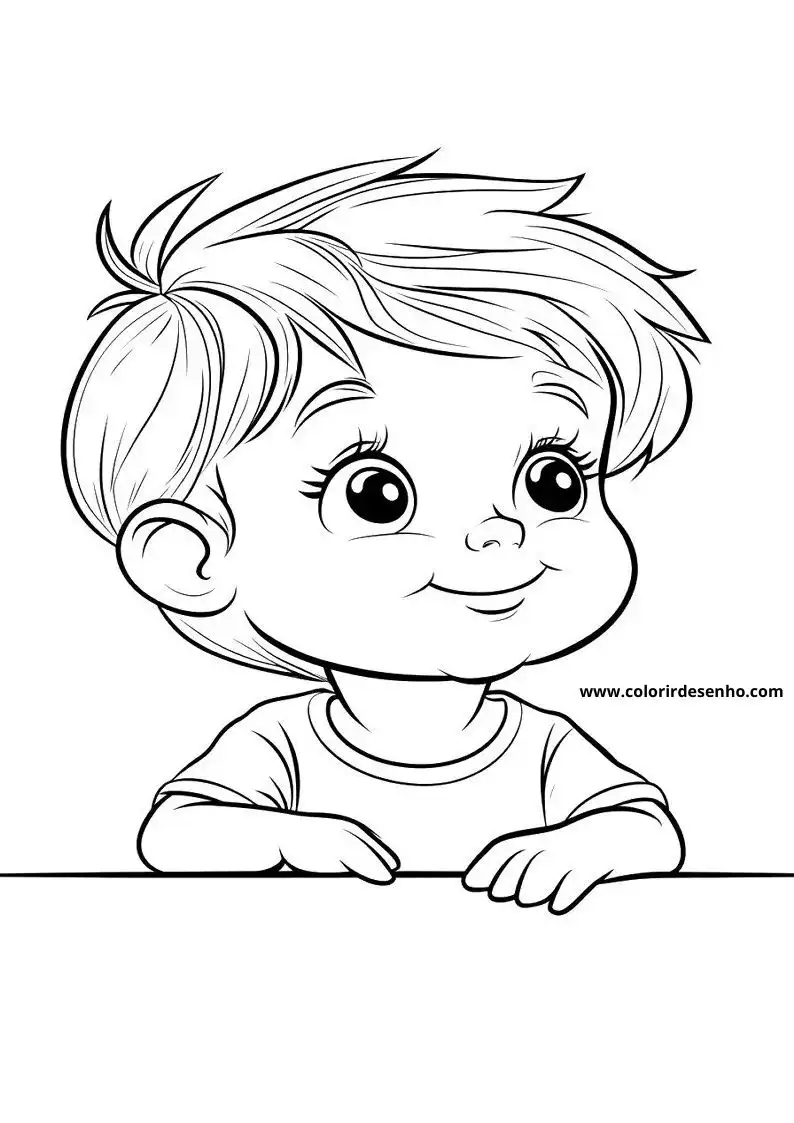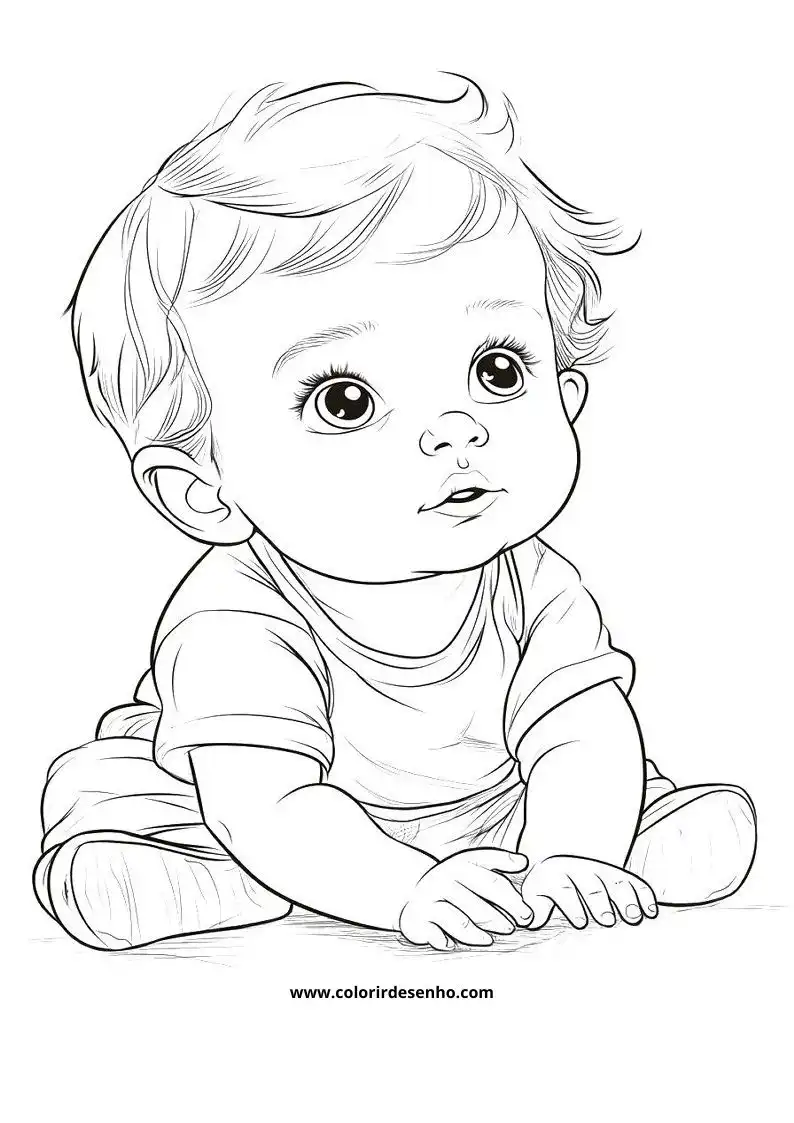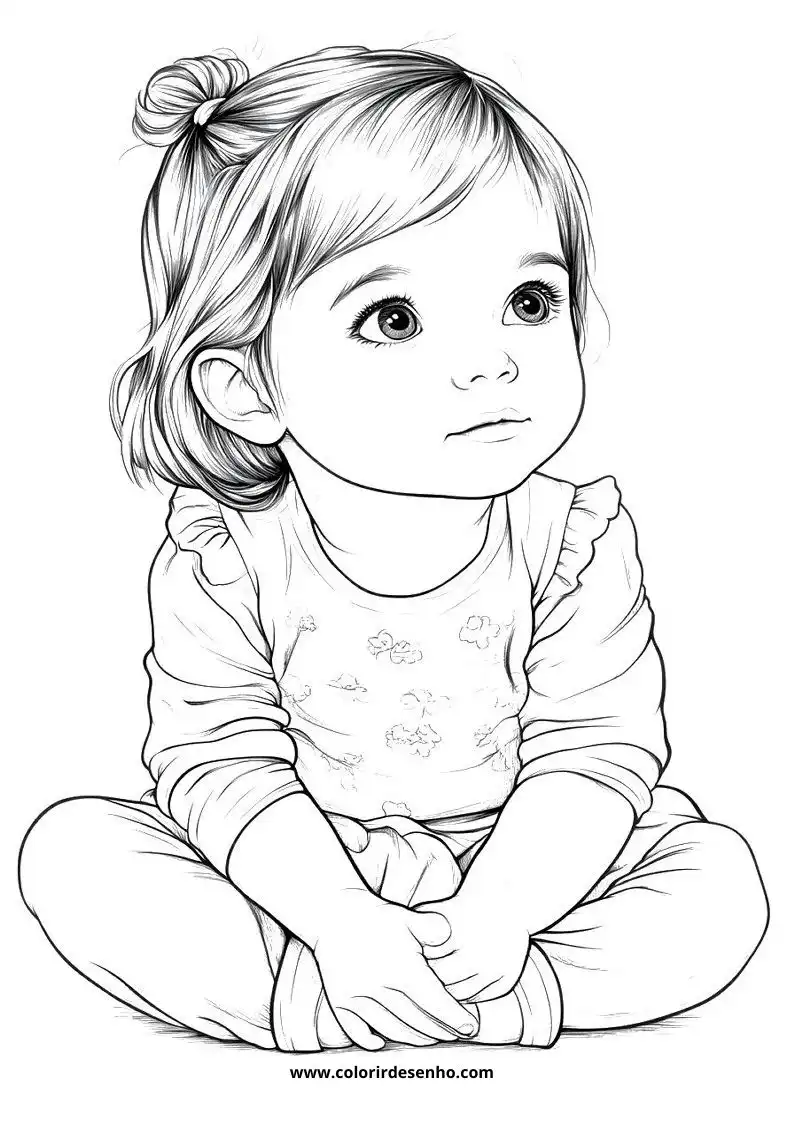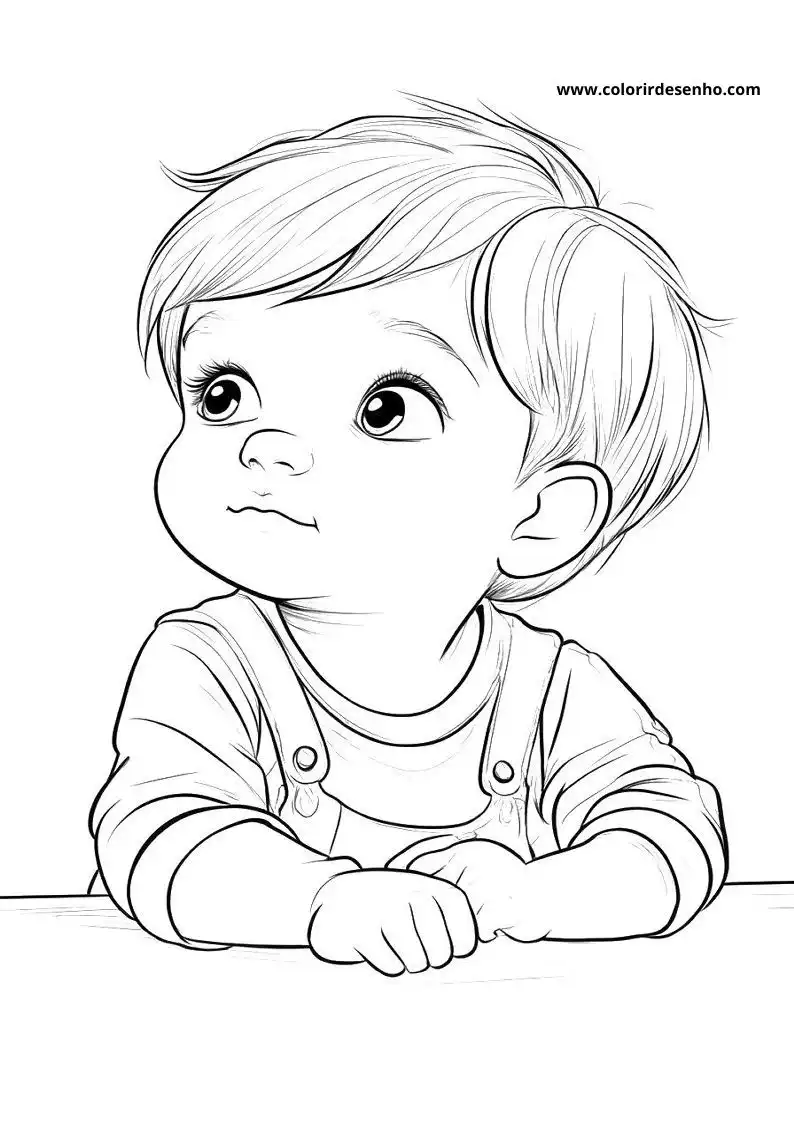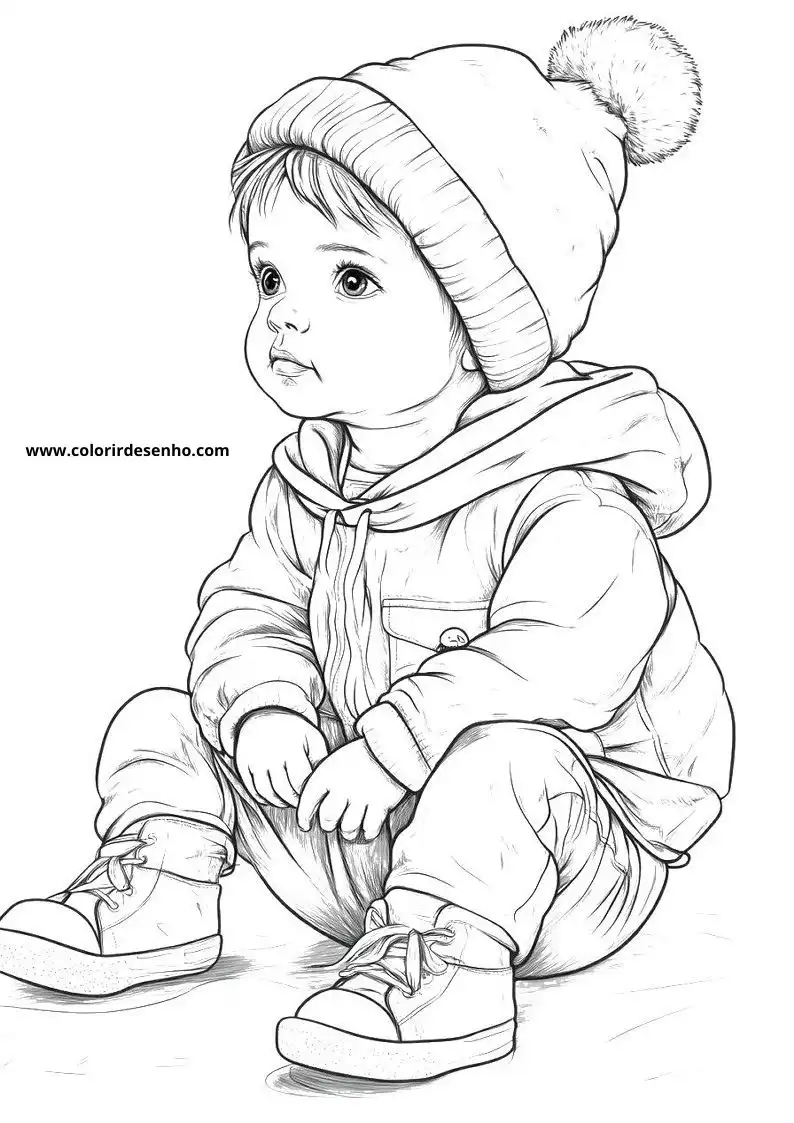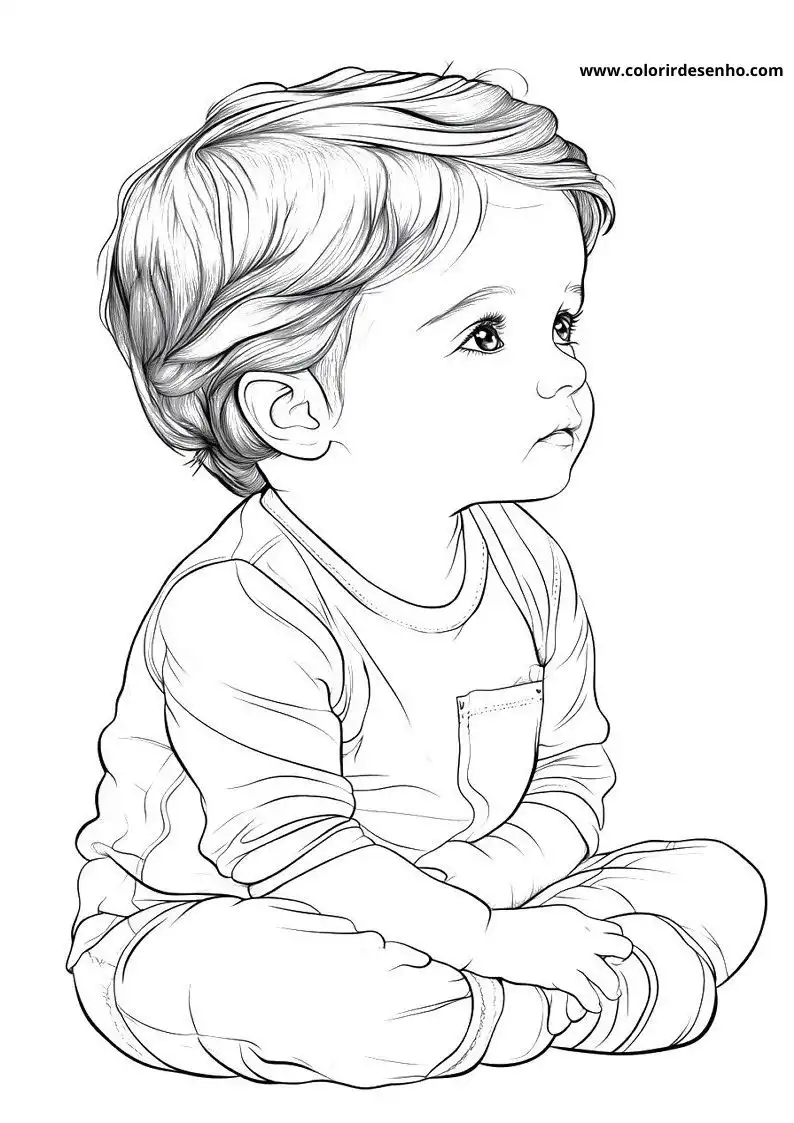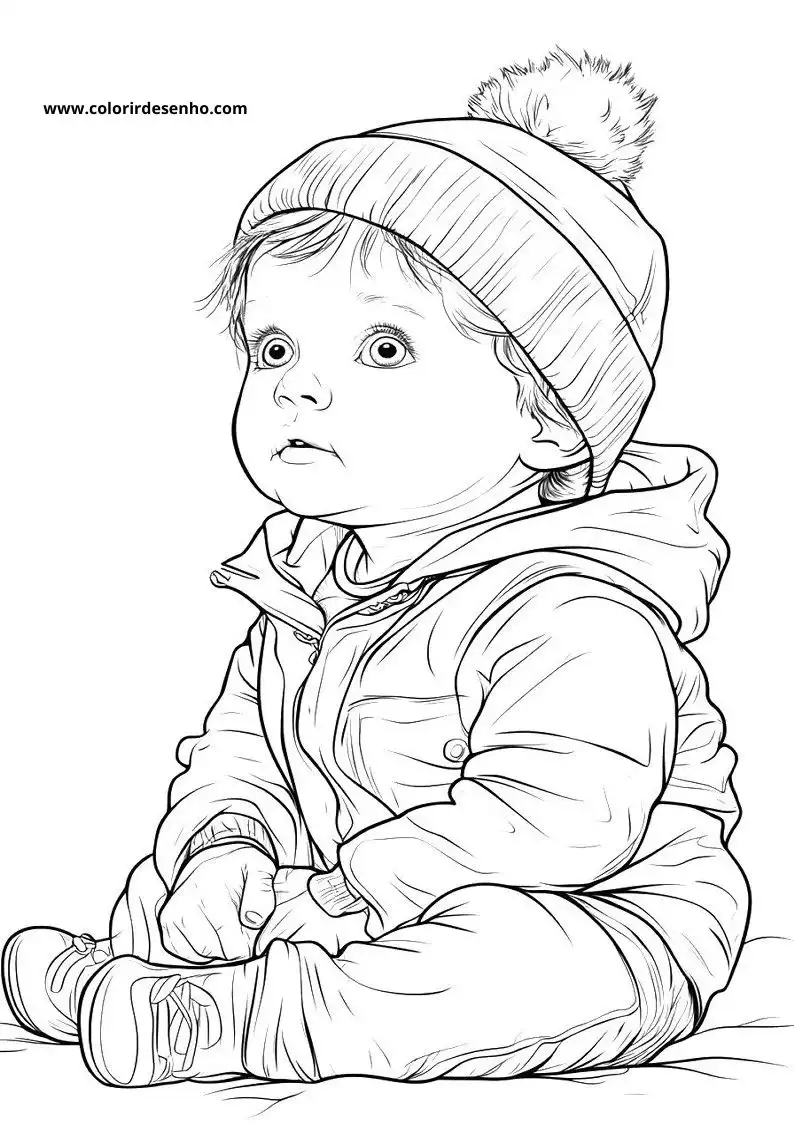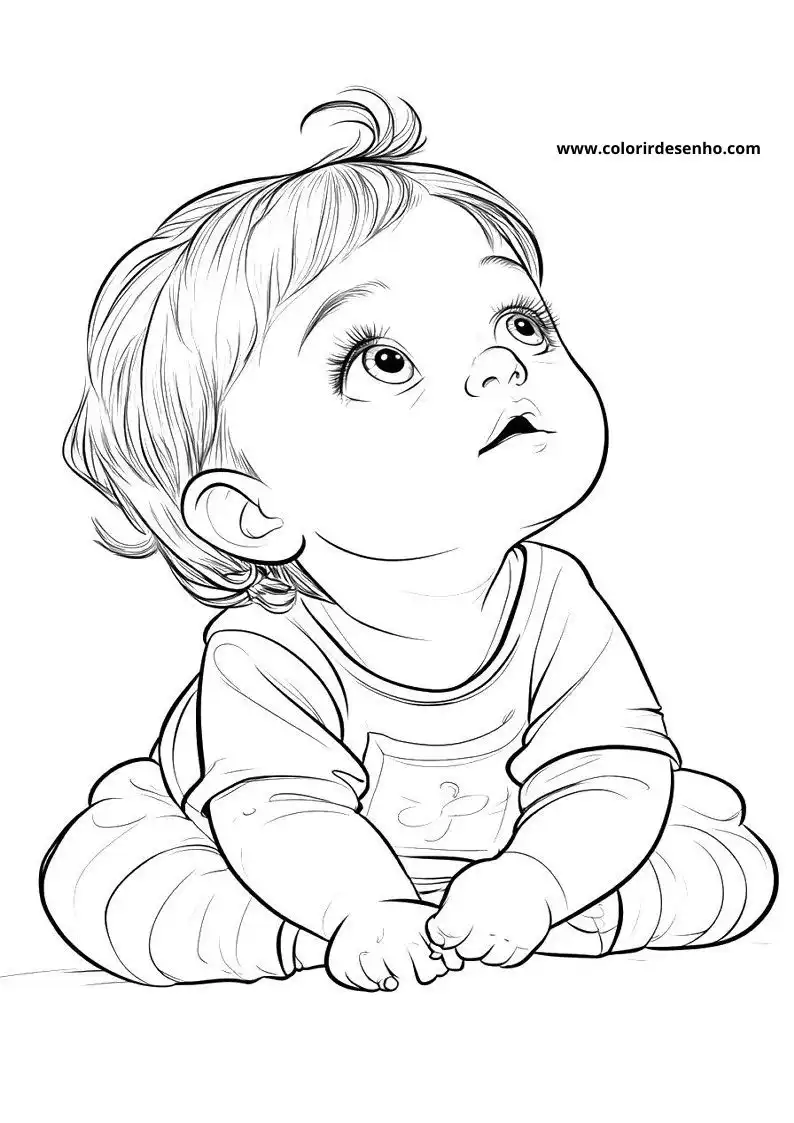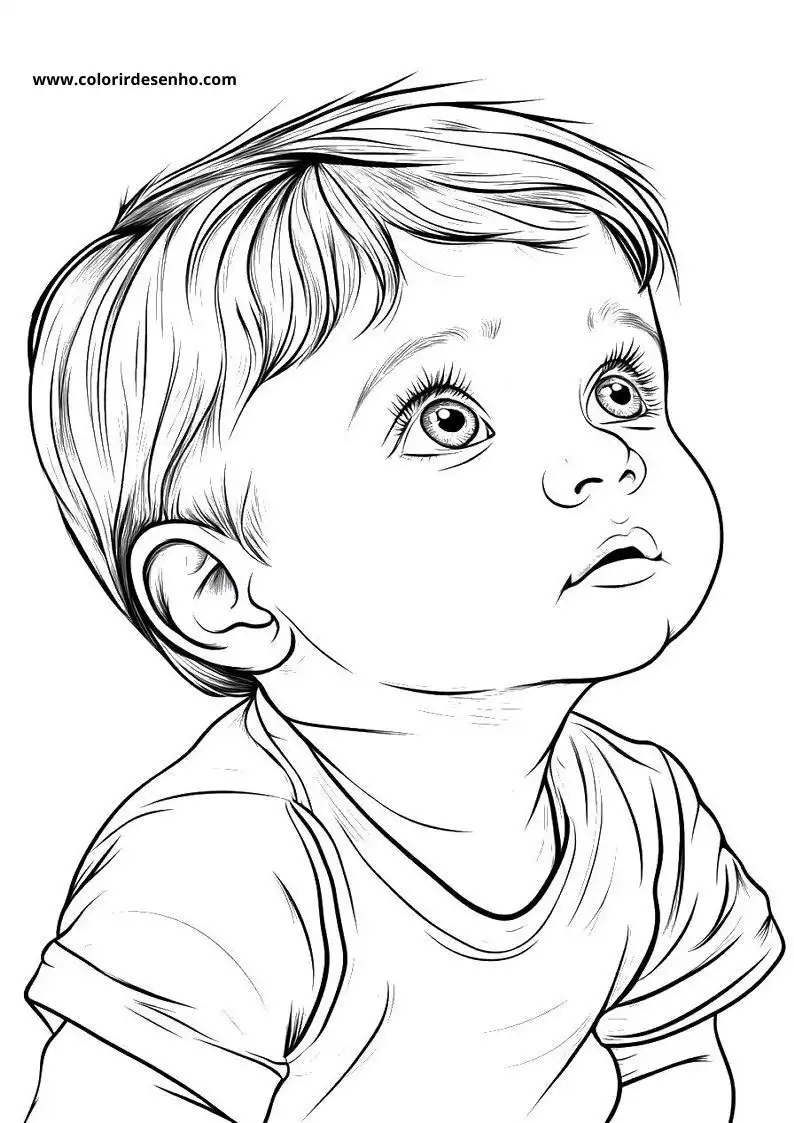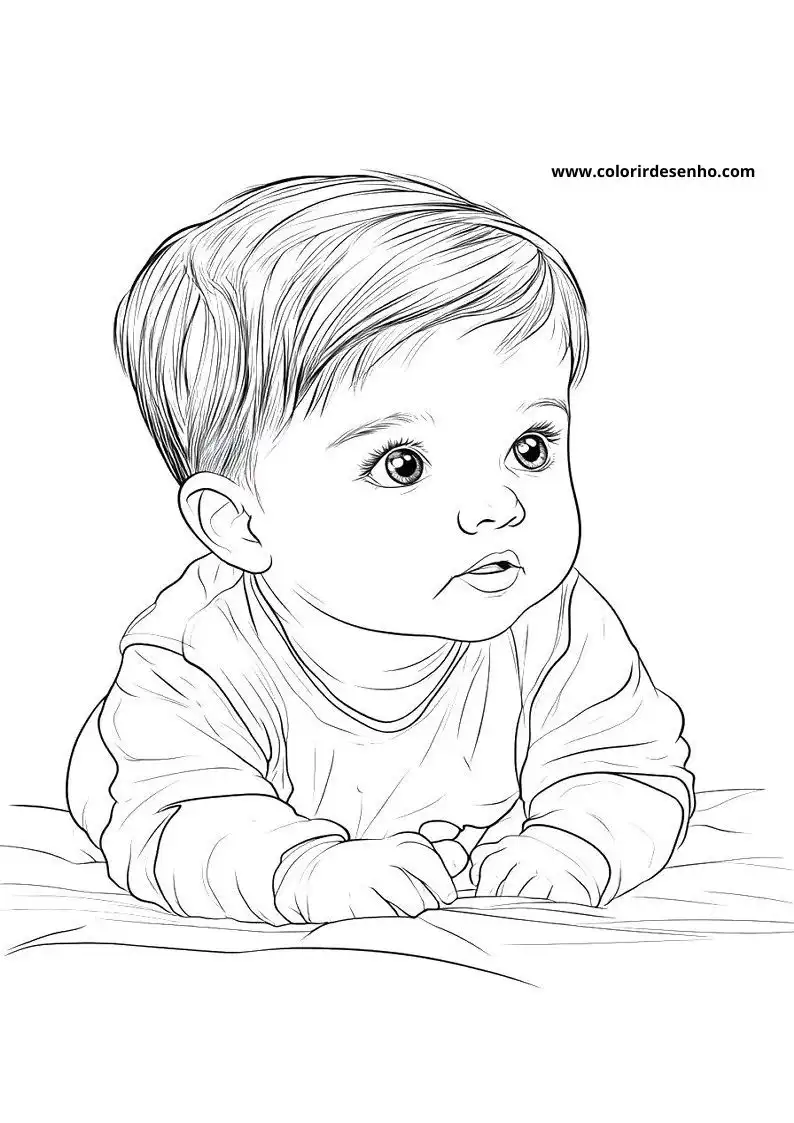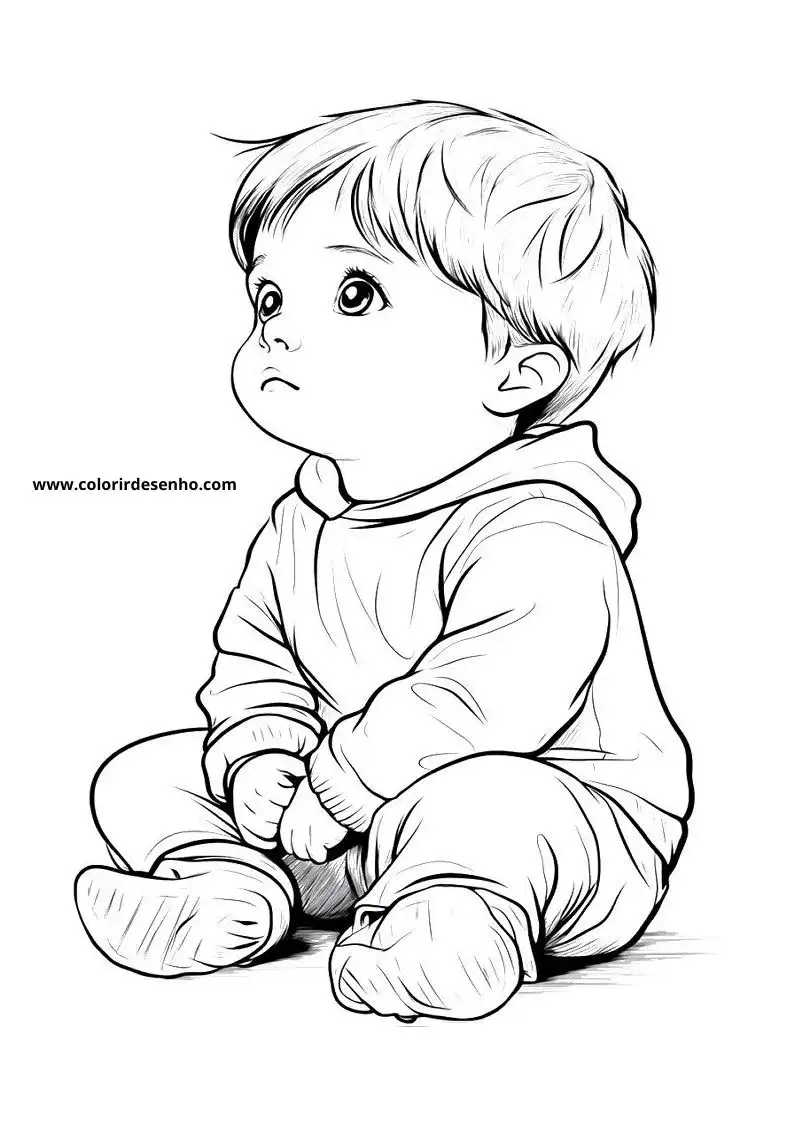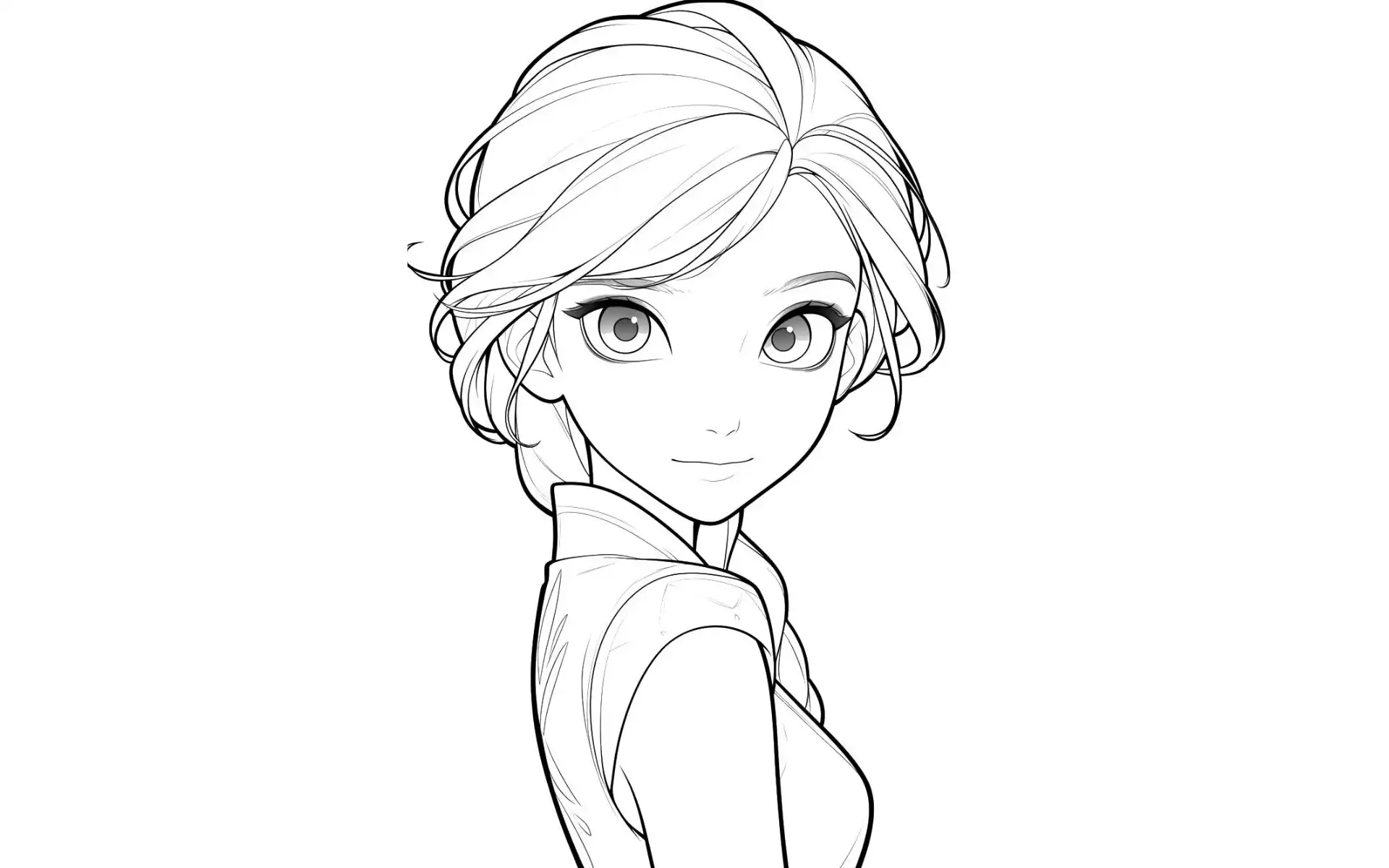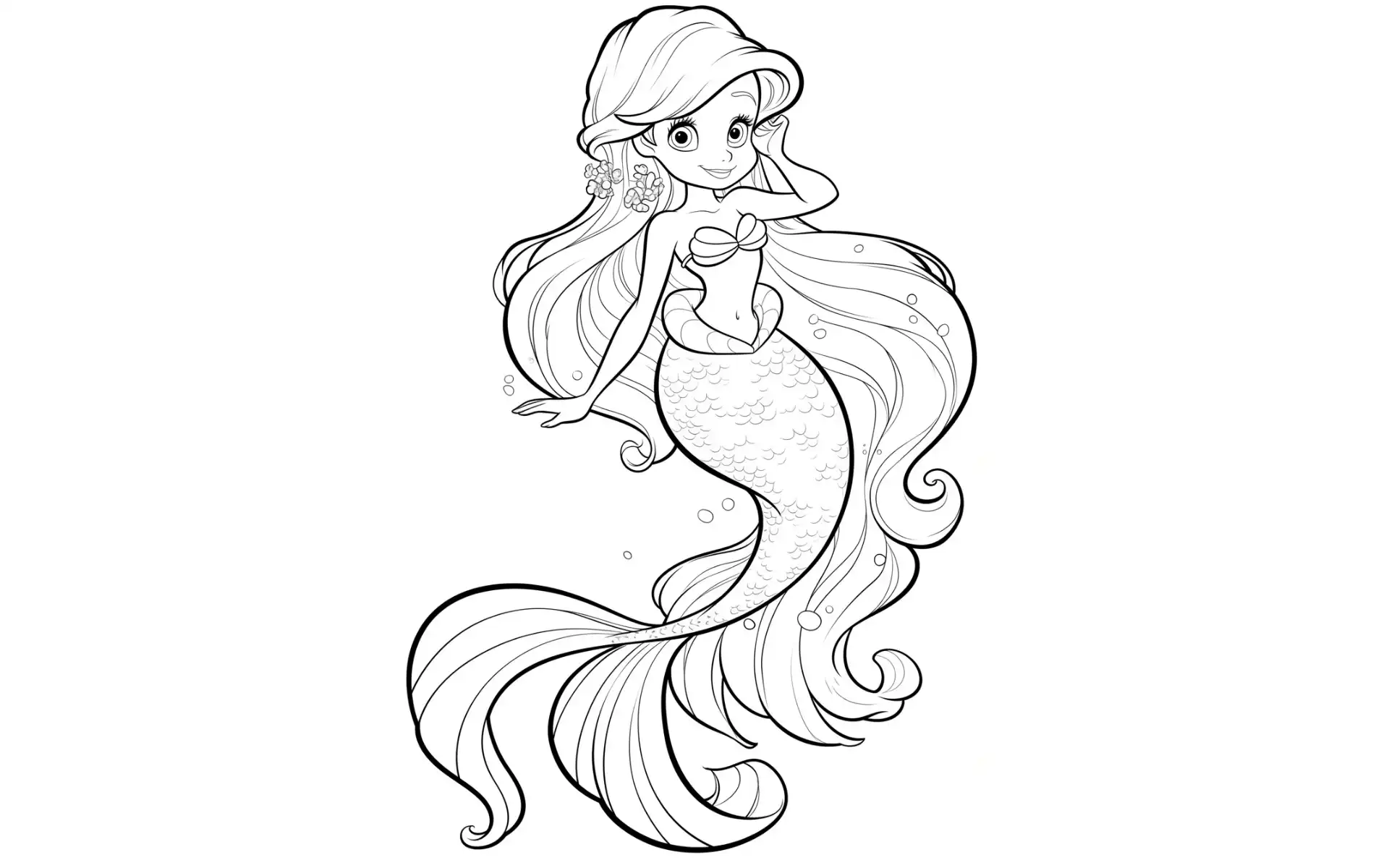Baby Coloring Pages - 245 Drawings and Educational
Baby Coloring Pages are a fantastic choice if you’re looking for something cute and fun to pass the time! Babies are a true source of tenderness and joy, and what better way to capture that than on a coloring sheet? Here, you’ll find 245 baby drawings in various situations and styles, ready to print and fill with color. Plus, if you love learning fun facts about the baby universe, get ready, because this article is packed with them!
Free Printable Baby to Color: Fun Learning Activities
Baby Coloring Pages are popular among children and adults alike, and it’s no wonder. They bring out the affection and cuteness we all feel when we see a baby. Besides, coloring is a relaxing activity that helps improve concentration and creativity. And did you know that babies have limited vision in the first months of life? They can only clearly see objects that are about 20 to 30 cm away! So, interaction time, especially when caring and feeding, is crucial for bonding.
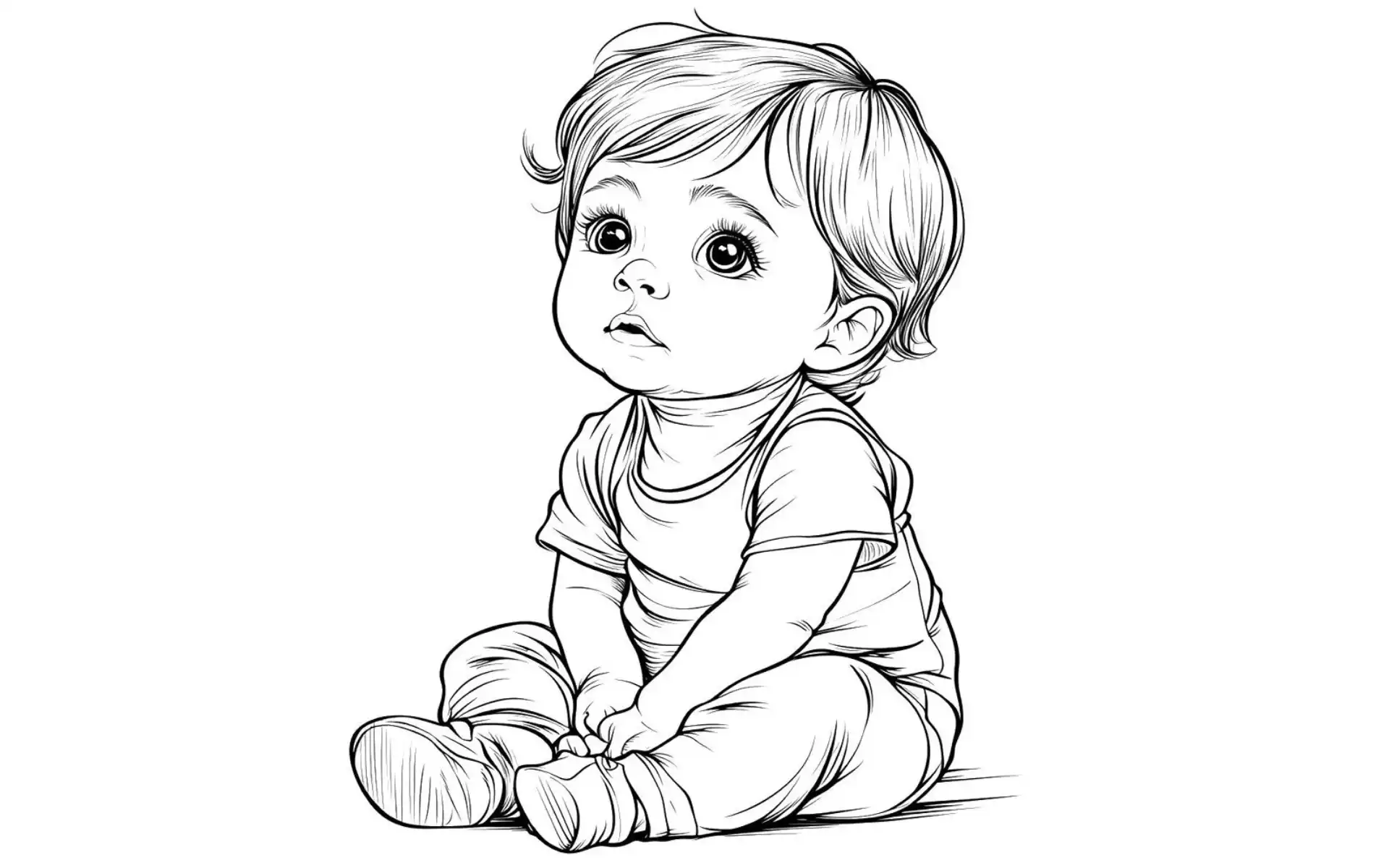
THE COLORING PICTURES ARE AT THE BOTTOM OF THE PAGE, WHEN YOU OPEN THE PICTURE, CLICK ON THE SAVE BUTTON ABOVE THE PICTURE.
The Evolution of a Baby's Smile
A baby’s smile is something magical, and that’s why so many baby coloring pages capture this special moment. But did you know that newborns don’t really smile until about six weeks old? What we see in the early days are natural reflexes, not social smiles. However, when that first genuine smile happens, it’s a sign that the baby is starting to connect with the people around them.
Babies’ smiles are a milestone in their social development. They begin to recognize faces and respond to familiar voices. So, when you’re coloring a baby coloring page, think about how that little grin represents a huge step in a baby’s emotional growth.
The World of Sounds and Babies
If you’ve ever seen a baby trying to babble, you know how adorable it is. Even before they start talking, babies are already preparing for communication. They begin to recognize their mother’s voice while still in the womb, around the 18th week of gestation! So when you’re printing a baby to color, remember that these little ones are attentive listeners even before they’re born.
Babies can recognize soft sounds, like music, and they prefer female voices and higher pitches. This early exposure to language and sounds is crucial for their linguistic development. So, playing some gentle tunes while you enjoy your baby coloring pages might be a great idea!
Curiosities About Baby Development
The development of a baby is a fascinating journey, and there are many fun facts you might not know. For example, did you know that a newborn’s brain doubles in size during the first year of life? This explains why babies are always curious, observing everything around them and absorbing information like little sponges.
Their rapid growth means they’re constantly learning and adapting. So when you’re coloring a baby to print, think about how that tiny figure represents an incredible amount of growth and learning happening every day.
Why Do Babies Love Being Swaddled?
If you’ve ever seen a baby relax when wrapped in a blanket, you might have wondered why that happens. The sensation of being swaddled simulates the tight and cozy environment of the womb. It helps soothe the baby and makes them feel secure.
When you’re coloring a baby to color, consider that in real life, this feeling of safety is essential for a baby’s emotional development. Swaddling can help them sleep better and reduce anxiety.
Babies and World Exploration
From early on, babies begin to explore the world around them. A baby’s curiosity is instinctive, and even before they start crawling, they’re already learning about objects they interact with. Did you know that babies are born with a preference for faces? They can recognize facial patterns from their first days of life, which explains why they love looking at their parents and caregivers.
As you fill in your baby coloring pages, remember that each baby is a little explorer, eager to learn and interact with their surroundings.
The Power of Smell in Babies
Among the senses, smell plays a fundamental role in a baby’s early life. In fact, right after birth, babies can identify their mother’s scent, which helps them create an even stronger bond.
This olfactory recognition is so powerful that babies can distinguish their mother’s breast milk scent from others just a few days after birth. So while you have fun with your baby to color, remember that for babies, the world is full of unique and familiar smells.
The First Experience with Tastes
Although babies feed exclusively on milk in the first months, they start developing taste preferences early on. Studies show that the flavors of foods consumed by the mother during pregnancy and breastfeeding can influence the baby’s later food preferences.
So if the mother eats lots of fruit, the baby might develop a liking for sweet flavors! How curious is that?
Babies and Body Language
Babies might not speak, but they definitely communicate. A baby’s body language is full of clues about their emotional state. Hand movements, facial expressions, and even the way they squirm can indicate whether they’re comfortable, curious, or tired.
By observing these little cues, parents can understand their baby’s needs long before they speak their first words.
Babies and the Impact of Colors
Now that we’re talking about coloring, let’s explore a bit more about how babies perceive colors. In the first months of life, babies have quite limited vision and initially only see shades of black, white, and gray. As their eyes develop, around three to four months old, they start to perceive more vibrant colors, like red and yellow.
So when you’re choosing colors to fill in a baby to print, remember that these hues might be the first ones babies see clearly.
The Importance of Red and Yellow
As mentioned earlier, red and yellow are the first colors babies can identify clearly. This happens because the color receptors in the eyes, known as cones, are still developing in the early months.
Therefore, objects and toys with these colors draw more attention from the little ones. Next time you find a baby coloring page, why not try these vibrant colors and see how they stand out on the paper?
How Babies React to New Colors
As babies grow and start to see the world in its full color palette, their reactions to different tones can be quite amusing. Some babies show preferences for certain colors, while others might even be startled by very strong or contrasting tones. It’s always interesting to observe how each baby uniquely reacts to the colorful world around them.
Babies and Touch: The Fundamental Sense
Among all the senses, touch is one of the most important for babies. From birth, skin-to-skin contact is essential for their emotional and physical development. The affectionate touch of parents helps regulate the baby’s body temperature, stabilize their heartbeat, and create a strong emotional bond.
The Magic of Skin-to-Skin Contact
Skin-to-skin contact, often called the “kangaroo method,” is widely recommended by health professionals. It has proven benefits for the baby’s health, such as increasing levels of oxytocin, also known as the “love hormone,” which promotes feelings of safety and comfort.
Moreover, this practice is especially useful for premature babies, helping them gain weight and develop more quickly.
How Babies Discover the World Through Touch
Babies use touch to explore and understand the world around them. From the earliest days, they start touching and grabbing objects, and this sensory exploration is crucial for cognitive development.
The simple act of holding a toy or touching their parents’ faces helps improve motor coordination and emotional connection.
Baby Sleep: Curiosities and Interesting Facts
A baby’s sleep is one of the most discussed topics among first-time parents. Everyone wonders: how much should a baby sleep? Why do they wake up so much during the night? And what does it mean when the baby moves while sleeping? Let’s explore some curiosities that might surprise you.
Babies Sleep More Than We Think
Newborns, for example, spend most of the day sleeping. They can sleep between 16 and 18 hours a day, but not continuously. This happens because a baby’s sleep cycle is different from adults.
While we have a sleep cycle that lasts about 90 minutes, babies have shorter cycles, of 50 to 60 minutes. That’s why they wake up frequently, which is completely normal!
Development Happens While They Sleep
Did you know that sleep is essential for a baby’s physical and mental development? During sleep, the baby’s body releases growth hormone, vital for healthy development.
Also, sleep helps in brain development, consolidating memories and skills that babies learn during the day. When you’re coloring a baby to print, think that this little character is also growing while resting.
The Fascination of Babies with Animals
Have you noticed how babies are fascinated when they see animals? This interest in little creatures often manifests very early. Let’s explore some curiosities about this special interaction between babies and animals.
The Relationship Between Babies and Dogs
Dogs and babies have a special bond. Many dogs adopt a protective stance towards the family’s babies. In fact, some studies suggest that growing up with a dog can even strengthen babies’ immune systems!
This is because exposure to certain microbes that dogs carry can help build natural defenses. So if you have a puppy and a baby at home, know that they can become best friends and contribute to each other’s well-being.
Babies Imitate Animals
Another interesting curiosity is that babies love to imitate animal sounds. This happens because sounds are one of the first forms of communication for little ones.
Even before saying words, babies try to reproduce simple sounds like a dog’s “woof-woof” or a cat’s “meow.” This phase is very amusing and, besides stimulating speech, helps babies develop their auditory and motor skills.
Babies and Music: How Music Influences the Little Ones
Music has a powerful effect on babies, and it’s no wonder that many parents use lullabies to soothe their children. Let’s dive into some curiosities about how music affects babies’ development and why it’s so important.
Babies Have Musical Preferences
Believe it or not, babies start developing musical preferences very early. Research shows that babies prefer soft music and simple melodies, like lullabies, but they can also get excited with faster rhythms.
Interestingly, babies also have the ability to recognize a melody they’ve heard repeatedly, even if they’re only a few months old.
Music Stimulates Brain Development
Listening to music can be extremely beneficial for babies, as it stimulates various areas of the brain simultaneously. Early exposure to music can help improve memory, focus, and even mathematical skills.
So, while you’re coloring a baby to color, why not play some soft tunes in the background? It can create an even more relaxing and creativity-inducing environment.
Babies and Nature: Discovering the Outside World
Babies are naturally curious about the world around them, and contact with nature is an enriching experience for them. Let’s explore some curiosities about how babies interact with the natural environment.
The First Contact with Grass
Often, a baby’s first contact with nature is touching grass. This moment can be a bit confusing for the little ones, as the texture is completely new. Some babies react with curiosity and want to feel more, while others might be surprised or even uncomfortable with the new sensation.
The Fascination with Trees
Another natural element that usually catches babies’ attention is trees. Babies love to watch the movement of leaves in the wind and are often mesmerized by the swaying branches. This sensory experience helps develop vision and depth perception, besides being a great stimulus for curiosity.
The Connection Between Babies and Water
Water has a fascinating effect on babies, and this connection begins long before birth. The aquatic environment of the womb is our first home, which might explain why many babies feel so comfortable in water.
Babies and the Diving Reflex
An interesting curiosity about babies is that they are born with the diving reflex. This means that until about six months old, they automatically hold their breath when submerged in water.
This reflex disappears as the baby grows but is an impressive ability that helps them adapt to the aquatic environment early in life.
Babies' Relationship with Bath Time
For many babies, bath time is one of the most relaxing moments of the day. The warm water helps soothe the little ones, reminding them of the feeling of safety they had in the womb.
Besides being a moment of relaxation, the bath also offers an opportunity for babies to explore textures and sensations through touch. Playing with water, for example, is a sensory form of learning.
Babies and Their Developing Senses
Babies’ senses are constantly evolving from the moment they are born. Each day is a new opportunity for discovery, and this includes all five senses: sight, hearing, smell, taste, and touch.
Babies' Vision: A New World
Babies aren’t born with fully developed vision. In the first days, they see the world blurred and can focus only on objects that are close, like their mother’s face. Between two and three months, babies start to recognize colors and more complex details.
And did you know that babies prefer to observe human faces? That’s because facial recognition is an essential skill for social and emotional bonding.
The Keen Hearing of Newborns
Hearing is one of the most developed senses at birth. From the womb, babies can already hear sounds, especially their mother’s voice. Right after birth, they show a clear preference for female voices and soft songs.
Moreover, newborns can recognize speech patterns and even differentiate their native language from others!
Babies' Sense of Smell: A Powerful Sense
Smell is undoubtedly one of babies’ most powerful senses. From birth, they can recognize their mother’s scent, which helps them find the breast for feeding. This incredible ability is one way babies connect emotionally with their parents and feel secure in their new environment.
Babies and the Importance of Play
Play is the main form of learning for babies. Every little game is an opportunity to develop motor, cognitive, and social skills. Additionally, playing contributes to emotional development, helping babies express their emotions and feelings.
Simple Games That Help Development
Games don’t need to be complicated to impact babies’ development. Simple things like hiding your face with your hands and then revealing it with a “peekaboo” can make babies laugh with joy.
This kind of game helps develop object permanence, that is, the understanding that something still exists even when it’s not visible. Additionally, touching objects with different textures and shapes is an effective way to stimulate the little ones’ sensory development.
Interaction with Other Babies
Social interaction also begins early. Although babies can’t play together like older children, putting them in contact with other babies can be an enriching experience. They learn by observing each other’s behavior and may start imitating gestures and sounds. This social exchange is essential for emotional and cognitive development.
Babies and Their First Steps
One of the most exciting moments for parents is seeing their baby take their first steps. This milestone symbolizes the growing desire for independence and is a sign that they are becoming more and more curious about the world around them.
The Process of Learning to Walk
Before taking their first steps, babies go through a series of stages. First, they start to roll over, then sit up, and eventually crawl. Each baby has their own pace, but generally, the first steps happen between 9 and 12 months.
Although it seems like a simple achievement, walking involves coordinating multiple muscles and developing balance.
The Joy of First Steps
A baby’s first steps are a moment of joy for both the little ones and their parents. Often, babies are surprised and excited to realize they can move on their own, and parents, of course, are thrilled with this new developmental phase.
Each step is a new adventure, and babies soon learn to explore the environment more autonomously.
Baby Coloring Pages offer a wonderful way to connect with the fascinating world of babies while enjoying a relaxing activity. With so many phases and fascinating curiosities, babies are truly little explorers of the world. From the moment they’re born, they are constantly learning and growing, discovering their surroundings through senses, social interaction, and daily experiences.
Now that you’ve dived into this world of cuteness and discoveries, how about choosing more baby coloring pages and continuing to have fun with this enjoyable pastime? After all, there’s nothing like combining learning and fun at the same time!
